

LFS is proud to be Certified™ by Great Place to Work®! This prestigious award is based entirely on what current employees say about their experience working at LFS. We consider employee experience a top priority every day and this year, 93% of LFS employees said LFS is a great place to work – 34% points higher than the average U.S. company. We celebrate and thank our employees for all they do to earn this incredible recognition.
Great Place to Work® Certification™ is the most definitive “employer-of-choice” recognition that companies aspire to achieve. It is the only recognition based entirely on what employees report about their workplace experience – specifically, how consistently they experience a high-trust workplace. Great Place to Work Certification is recognized worldwide by employees and employers alike and is the global benchmark for identifying and recognizing outstanding employee experience. Every year, more than 10,000 companies across 60 countries apply to get Great Place to Work-Certified.
By: LFS Marketing
August 30, 2021

Navigating the world of shipping can be hugely complex. From finding the right carriers to ensuring that packages are delivered promptly, there are plenty of moving parts that can go wrong. Understanding common shipping pitfalls can significantly aid your company’s shipping strategy and catapult you toward lasting success.
Here are some of this year’s top shipping mistakes to avoid.
A limited number of carriers. There’s no denying that large national carriers can help increase a retailer’s operational efficiency. But when was the last time you evaluated your carrier mix to see which options exist? You’re likely tapping into national carriers for around 80% of your freight volume, but you might have difficulty with the remaining 20%. With 97% of U.S. truckload carriers operating with 20 or fewer trucks, it can be difficult for large carriers to deliver to niche locations.
Companies should evaluate their parcel programs regularly to ensure they’re maximizing capacity, speed, and cost. Carrier diversification and the use of smaller, regional carriers can help you deliver efficiently to remote locations, in addition to ironing out issues surrounding inconsistent demand and short lead times.
Use of a third-party logistics (3PL) provider is an ideal way to begin incorporating multiple carriers into the mix, increasing shipping elasticity and transportation options. You’ll be able to maintain a single relationship with the 3PL while it works directly with national and regional carriers on your behalf.
On-premise or outdated technologies. Advanced technology has infiltrated every industry imaginable, and the shipping industry is no exception. Modern inventory management systems, application programming interfaces (APIs) and other cloud-based systems offer long-term benefits in the logistics and shipping space. Companies today have no choice but to keep up with the pace by leaning on this technology.
If you’re currently using outdated technology or technological systems that don’t communicate with one another, the result could be miscalculated shipping times, inconsistent consumer demand, and automation issues. Such problems ultimately taint consumers’ experience with your brand, potentially discouraging them from placing future orders.
Modern shipping technology can lay a strong foundation in harnessing data, leading to optimized routes, external systems integrations, faster fulfillment, more automated tasks and overall reduced inefficiencies.
Lack of shipping data. From finance to healthcare, big data is an ever-growing part of industry operations. As ships and trucks make deliveries, they provide data that’s aggregated into cloud technology and can be utilized to help shippers adapt quickly to new environments.
Big data in the shipping industry can:
Inaccurate weight or classification. If you classify a single package incorrectly, it isn’t a huge financial loss. But multiply inaccuracies across hundreds of thousands of packages and you’ll quickly realize how expensive this problem can be. Shippers want to send packages as cheaply as possible, but forcing packages into inappropriate weight ranges or classifications will only cost more in the long run.
The choice of the correct weight and speed can also impact the safety of each shipment, as it helps ensure that trucks are properly loaded, with weight evenly distributed throughout. Take the time to accurately weigh shipments and classify them properly for consistent and affordable deliveries.
Wrong shipping addresses. This also results in out-of-pocket costs to the shipper. Even the smallest change in the package’s zip code, state code and the like can have a huge impact on cost, especially if the package is being shipped internationally.
Triple-check that each package is properly addressed, to save money and uphold your brand’s hard-earned reputation.
Peak shipping season is right around the corner. By addressing current weak points in your shipping approach now, you can make for your most successful shipping season yet.
--
At LFS, we provide tailor-made logistics solutions to manufacturers, distributors, importers, and exporters across the United States, Canada, and Mexico. We are a 3PL company lead by a team of experts who will help you evolve your logistics through advanced technological platforms, providing you great efficiency, cost savings, and delivery speed in every shipment.
LFS keeps you updated with the latest news, if you need additional information about our freight shipping solutions, contact us or follow us on Linkedin, Facebook, and Twitter.
For cargo insurance experts, please contact Skholl, our partner to avoid any freight damage.
By: Supply Chain Brain
August 24, 2021

We are proud to announce that LFS has made the prestigious Inc 5000! After a challenging year with the Pandemic and lots of industry changes, we are part of the Inc 5000 list for 2021. The Inc. 5000 is a list of privately held American companies that have recorded immense growth over any given year. Our CEO, Andres Lopera, was interviewed about this achievement and we would like to share some of his thoughts:
How does it feel to be in the Inc. 5000, as one of the fastest-growing companies in the U.S.?
Andres Lopera, LFS´ CEO - “I am extremely grateful since this achievement took place thanks to the great talent we have in our company. I feel that our logistics experts have reached a maturity level, providing great customer service while being detail-oriented. This sets us apart and has allowed us to achieve significant growth”
How have you managed such quick growth in the last few years?
Andres Lopera, LFS´ CEO - “You always feel there is something else to be done, mainly with the multiple technological improvements that are feasible and necessary nowadays. So, I think that having clear blue ocean strategies that improve our process and lead our growth is the key. That along with our focus and persistence are what has helped us reach this great achievement. There is something we are 100% sure of and it is that we don’t want to follow, we want to lead, and each strategic step is to get us closer to this dream.”
What has been the most rewarding part of your journey as a business owner?
Andres Lopera, LFS´ CEO – “I have seen how everyone in the company has overcome and managed big challenges, providing positive results and smiling while sharing learnings with others. I think this is one of the most rewarding feelings a company and a company leader could have. It is not a secret that the logistics industry is very competitive and nowadays there are worldwide limitations, so having a team that looks for solutions with the best attitude is rewarding.”
Now that LFS is part of the Inc 5000 list, what’s next for the company?
Andres Lopera, LFS´ CEO - “The company is investing in digital improvements that will provide a big improvement for shippers and freight forwarders, evolving their logistics process with an easy and friendly platform. They will be able to make better decisions thanks to the insightful information they could get of their shipments and the industry.”
--
At LFS, we provide tailor-made logistics solutions to manufacturers, distributors, importers, and exporters across the United States, Canada, and Mexico. We are a 3PL company lead by a team of experts who will help you evolve your logistics through advanced technological platforms, providing you great efficiency, cost savings, and delivery speed in every shipment.
LFS keeps you updated with the latest news, if you need additional information about our freight shipping solutions, contact us or follow us on Linkedin, Facebook, and Twitter.
For cargo insurance experts, please contact Skholl, our partner to avoid any freight damage.
By: LFS Marketing
August 20, 2021
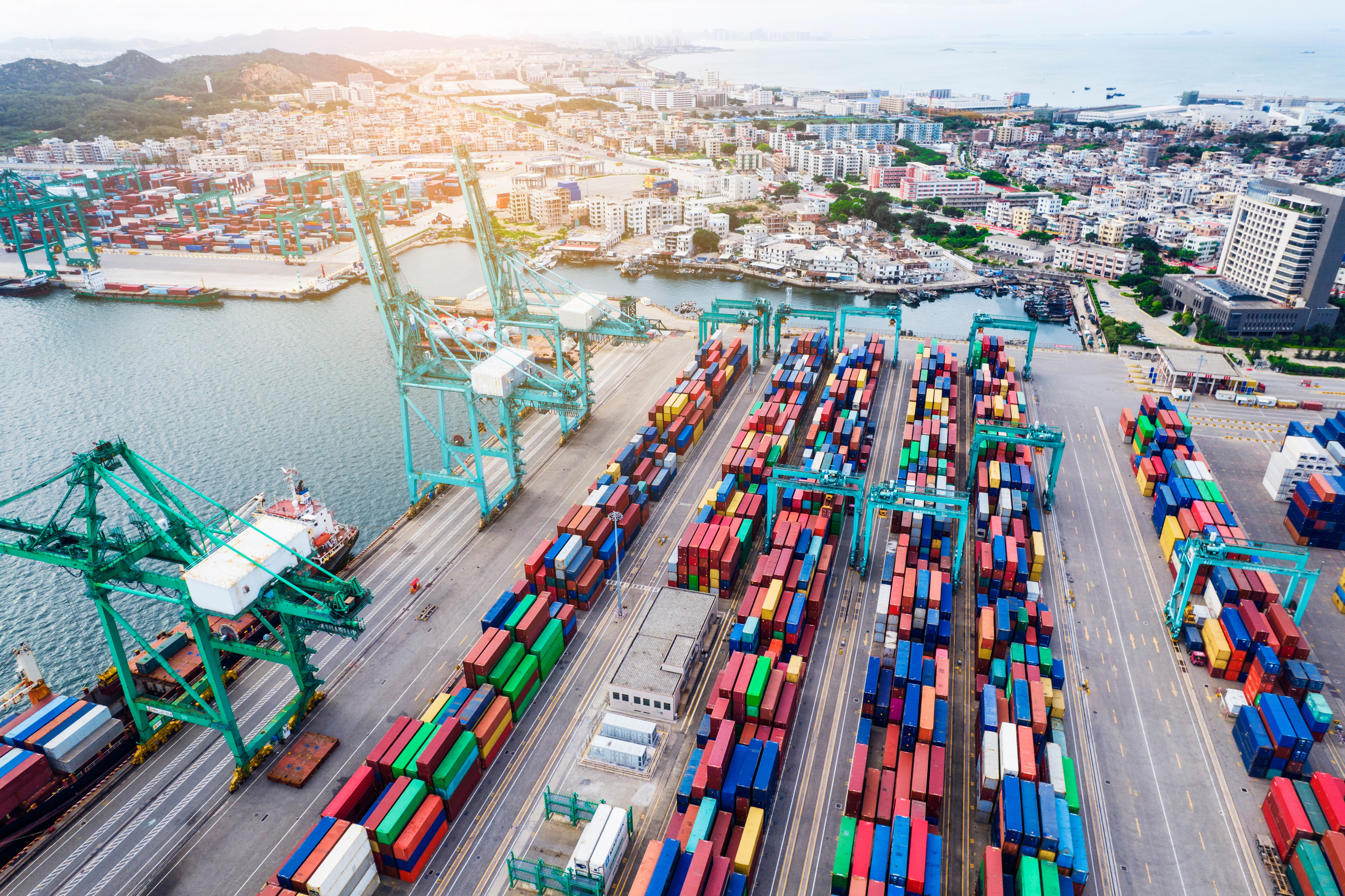
According to Freightwaves:
The National Retail Federation is calling for the start of peak season to kick off with a bang. The group sees imports to the nation’s largest retail container ports increasing 12.6% year-over-year in August to 2.37 million twenty-foot equivalent units, ahead of the recent monthly record established in May of 2.33 million.
“August is the beginning of the ‘peak season,’ when retailers stock up on holiday merchandise each year,” the report stated. “Many retailers are moving up their shipments this year as part of their risk-mitigation strategies to ensure that sufficient inventory will be available during the holidays.”
What happens when the boxes get here remains an issue.
The freight will land on U.S. shores as freight markets enter a second year of unprecedented disruption brought on by record consumer demand and a transportation network suffering from a lack of labor and equipment to fill the need.
“The strain of the continuing economic expansion is putting considerable pressure on the logistics supply chain,” said Ben Hackett, founder of Hackett Associates, which works with the NRF to produce the monthly container forecasts. “We’re seeing a lack of shipping capacity combined with port congestion as vessels line up to discharge goods from both Asia and Europe.”
Numbers from the NRF show first-half 2021 imports increased 35.6% year-over-year to 12.8 million TEUs. The first half of 2020 included the peak of demand destruction that was caused by the pandemic, which closed many sectors of the economy for months.
The NRF is calling for a new record in 2021 with full-year imports up 17.5% year-over-year to 25.9 million TEUs. Even with the COVID overhang last year, container imports came in at a record pace, 1.9% ahead of 2019 at 22 million TEUs.
July numbers haven’t been finalized but the expectation is imports increased 15.7% year-over-year to 2.22 million TEUs. September is expected to see a 4.9% year-over-year increase to 2.21 million TEUs. But the tough comps created by last year’s record container landings will be evident during the fourth quarter as imports are expected to decline 3% in October, 1.5% in November and 4.1% in December.
“Delays are stretching to landside as port terminals struggle with space shortages, and labor challenges are affecting ports, railroads and trucking companies alike. This part of the recovery is not a pretty sight,” Hackett added.
Ships waiting longer for berths at ports and delays unloading freight once it’s there are just part of the supply chain headwinds. Once routed inland, container shortages are being exacerbated by slow rail service and labor challenges at shipper facilities, which has resulted in delayed equipment turn times, further pressuring rail service.
“The continuing lack of labor, equipment and capacity has highlighted systemic issues and the need to create a truly 21st century supply chain to ensure resiliency against the next major disruption. Passage of infrastructure legislation currently pending in Congress is a key step in that direction. We need continued focus by the administration to help address these issues as well,” Gold stated.
The recent spate of records set for imported containers have been the highest recorded since the NRF started the dataset in 2002.
--
At LFS, we provide tailor-made logistics solutions to manufacturers, distributors, importers, and exporters across the United States, Canada, and Mexico. We are a 3PL company lead by a team of experts who will help you evolve your logistics through advanced technological platforms, providing you great efficiency, cost savings, and delivery speed in every shipment.
LFS keeps you updated with the latest news, if you need additional information about our freight shipping solutions, contact us or follow us on Linkedin, Facebook, and Twitter.
For cargo insurance experts, please contact Skholl, our partner to avoid any freight damage.
By: Freghtwaves
August 16, 2021

Southern California, presents a very tight availability of Hazmat and Tanker endorsement trucks in Q3 2021, according to DAT Freight analytics. Considering the total number of trucks available in Los Angeles, there are 9.6 loads requests per truck available. Thus, the availability is already limited to consider only the Hazmat and Tanker Endorsement Trucks which are close to 25% of the trucks available. This is the current situation and several reasons support this limited truck availably and price increase in the trucking industry.
1.California has become a key entry point for freight entering the U.S. in the post-COVID-19 market. There is a notable shift in shippers moving freight in through the eastern ports in late 2019, so, they have scrambled to recover lost time and manage inventories in what has become the new normal. According to the Freightos Baltic Index, Maritime spot rates have grown 84% from China to North America’s West Coast over the previous year as maritime carriers have cut capacity in anticipation of a decline in demand. Truckload volumes have grown 19% out of the Los Angeles market year-over-year (y/y), while domestic intermodal volumes have also increased 10% over the previous year.
2.The high increase in the Spot Market Loads and Van Rates (Spot) from Jun 2021 vs June 2020, when the rise of the Spot Market Loads was 101.5% and for Van Rate (Spot) was 47.1% showing a saturated market with new loads that were out of the radar and change the behavior of the market, impacting the pricing.
3.The rise of Fuel Prices in the US, especially in California. Comparing Aug 2021 vs Aug 2020, the fuel price has increased by $0.943 per gallon, reaching a price of $4.271 per gallon. This price is highly superior to the average fuel price in the U.S. which is $3.367 per gallon. This means that there was a general fuel price increase in The U.S. but specifically, California is one of the States with the highest fuel price increase, making more expensive the transportation services from this State
4.The truck availability is affected by the double brokering. Double brokering is the unauthorized re-brokering of a load to another trucking company and this situation has taken place in California reducing hundreds of possible carrier companies that can work for LFS. Here at LFS, we request specific information to verify the carrier company and provide qualified carriers for our customers. However, this impacts our truck availability and may affect the pricing as well.
More detailed information can be found in Freightwaves as a source of global freight news.
This California Freight Market Analysis: Q3, 2021 is built considering two sources: DAT Freight & Analytics and Freightwaves to keep you updated about the latest news and market trends. If you have any questions, please don’t hesitate to contact us.
--
At LFS, we provide tailor-made logistics solutions to manufacturers, distributors, importers, and exporters across the United States, Canada, and Mexico. We are a 3PL company lead by a team of experts who will help you evolve your logistics through advanced technological platforms, providing you great efficiency, cost savings, and delivery speed in every shipment.
LFS keeps you updated with the latest news, if you need additional information about our freight shipping solutions, contact us or follow us on Linkedin, Facebook, and Twitter.
For cargo insurance experts, please contact Skholl, our partner to avoid any freight damage.
By: LFS Marketing
August 16, 2021

According to Freightwaves:
A bipartisan group of senators negotiating with President Joe Biden boosted new funding for highway and port infrastructure each by $1 billion from an initial framework announced in June, according to a new fact sheet released by the White House.
The “Bipartisan Infrastructure Deal” announced on Wednesday increases new funds for roads, bridges and major projects from $109 to $110 billion, with port infrastructure investment increasing from $16 billion to $17 billion.
The $550 billion in total new funding in the package dropped by $29 billion from the $579 billion June framework, with $10 billion of the decrease shaved off public transit, which was cut from $49 billion to $39 billion.
The $110 billion in surface investments included in the package, which would reauthorize the surface transportation program for the next five years, includes $40 billion of new funding for bridge repair, replacement and rehabilitation — “the single largest dedicated bridge investment since the construction of the interstate highway system,” according to the fact sheet. It also includes $17.5 billion for major projects “too large or complex for traditional funding programs.”
The deal invests $66 billion in rail to eliminate the Amtrak maintenance backlog, modernize the Northeast Corridor, and bring world-class rail service to areas outside the Northeast and mid-Atlantic. Within these totals, $22 billion would be provided as grants to Amtrak, $24 billion as federal-state partnership grants for Northeast Corridor modernization, $12 billion for partnership grants for intercity rail service, including high-speed rail, $5 billion for rail improvement and safety grants, and $3 billion for grade crossing safety improvements.
The bipartisan bill also invests $7.5 billion to build out a national network of electric vehicle (EV) chargers to help accelerate the adoption of EVs.
“The bill will provide funding for deployment of EV chargers along highway corridors to facilitate long-distance travel and within communities to provide convenient charging where people live, work, and shop,” according to the plan. “Federal funding will have a particular focus on rural, disadvantaged, and hard-to-reach communities.”
Biden proposes to pay for the deal through a combination of corporate user fees, tax enforcement on crypto currencies and redirection of unspent emergency relief funds, but those funding measures have yet to be agreed on. Shortly after the deal was announced, Senate lawmakers voted to begin considering the bill.
A prominent safety group said the bipartisan package falls short of the Democrats’ INVEST in America Act, which passed the House earlier this month along party lines and included $343 billion for roads, bridges and highway safety programs.
“In its current form, the bill not only falls short, it also disrupts the historical precedent of substantial safety strides being incorporated in major infrastructure bills,” said Cathy Chase, president of Advocates for Highway and Auto Safety.
“Without a course correction, an estimated 183,000 people will be needlessly killed and 14 million more injured over the next five years. The comprehensive costs of motor vehicle crashes during the same period is expected to be more than $5 trillion.”
--
At LFS, we provide tailor-made logistics solutions to manufacturers, distributors, importers, and exporters across the United States, Canada, and Mexico. We are a 3PL company lead by a team of experts who will help you evolve your logistics through advanced technological platforms, providing you great efficiency, cost savings, and delivery speed in every shipment.
LFS keeps you updated with the latest news, if you need additional information about our freight shipping solutions, contact us or follow us on Linkedin, Facebook, and Twitter.
For cargo insurance experts, please contact Skholl, our partner to avoid any freight damage.
By: Freightwaves
August 4, 2021

According to Freightwaves:
Canada is beginning to reopen its borders for nonessential travel after a 16-month shutdown in response to COVID-19. Starting Aug. 9, fully vaccinated U.S. citizens and permanent residents can enter the country.
Even though trade has been exempt from the restrictions — allowing trucks to move freely between Canada and the U.S. — the reopening of the border still has significant implications for freight. And not just because more congestion and wait times will undoubtedly accompany the return of passenger traffic.
It stands to be a big driver for freight demand.
“The opening of the border will be a boon for the transportation and logistics industries as a whole,” said Peter Stefanovich, managing partner at Left Lane Associates, a Toronto transportation mergers and acquisitions advisory firm.
It will come from an expected influx of visitors from the U.S. Ahead of the pandemic, in 2019, 25 million U.S. residents visited Canada, including 15 million tourists, according to Statistics Canada.
Just how fast they’ll return remains to be seen. But they will be spending money at restaurants, hotels and events. And that spending will drive demand for freight, Stefanovich said.
Visitors from other countries will be allowed to come to Canada in September, adding to the momentum.
In short, it will drive demand in the hospitality sector, which has struggled from the absence of foreign visitors. The only challenge may be to secure capacity in big markets like Toronto, particularly for temperature-controlled freight.
For now, the United States is keeping its land border closed for nonessential travel. But when it does open, U.S. border communities will undoubtedly see the welcome return of Canadians and their penchant for cross-border shopping, in search of deals on everything from milk to shoes.
--
At LFS, we provide tailor-made logistics solutions to manufacturers, distributors, importers, and exporters across the United States, Canada, and Mexico. We are a 3PL company lead by a team of experts who will help you evolve your logistics through advanced technological platforms, providing you great efficiency, cost savings, and delivery speed in every shipment.
LFS keeps you updated with the latest news, if you need additional information about our freight shipping solutions, contact us or follow us on Linkedin, Facebook, and Twitter.
For cargo insurance experts, please contact Skholl, our partner to avoid any freight damage.
By: Freightwaves
February 8, 2021
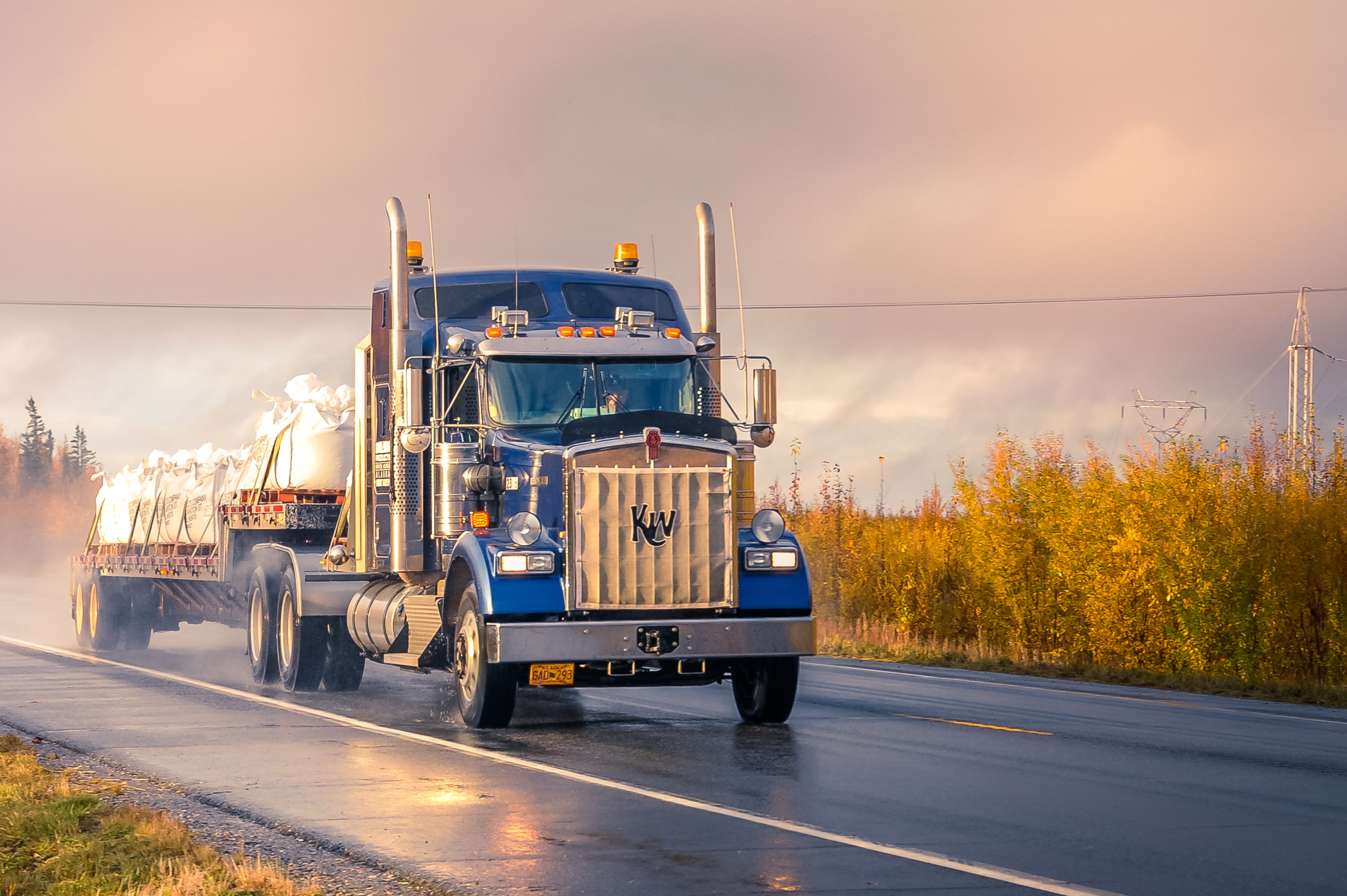
According to Safety+Health:
Law enforcement officers will target speeding and other unsafe driving behaviors during the Commercial Vehicle Safety Alliance’s Operation Safe Driver Week, slated for July 11-17.
They’ll be on the lookout for passenger and commercial motor vehicle drivers following too closely, driving distracted, making improper lane changes, failing to use a seat belt and driving while impaired.
Preliminary estimates from the National Safety Council show that, in 2020, the rate of motor vehicle deaths in the United States climbed 24% compared with the previous year, even as the estimated total number of miles driven fell 13%.
During last year’s Operation Safe Driver Week, citations and warnings related to speeding were most common among both groups of drivers: CMV drivers were given 2,339 citations and 3,423 warnings, while passenger vehicle drivers received 14,378 citations and 11,456 warnings.
“Data shows that traffic stops and interactions with law enforcement help reduce problematic driving behaviors,” CVSA President John Samis said in a press release. “By making contact with drivers during Operation Safe Driver Week, law enforcement personnel aim to make our roadways safer by targeting high-risk driving behaviors.”
--
At LFS, we provide tailor-made logistics solutions to manufacturers, distributors, importers, and exporters across the United States, Canada, and Mexico. We are a 3PL company lead by a team of experts who will help you evolve your logistics through advanced technological platforms, providing you great efficiency, cost savings, and delivery speed in every shipment.
LFS keeps you updated with the latest news, if you need additional information about our freight shipping solutions, contact us or follow us on Linkedin, Facebook, and Twitter.
For cargo insurance experts, please contact Skholl, our partner to avoid any freight damage.
By: Safety+Health
December 7, 2021

According to TTnews:
Trucking and oil industry experts are warning of possible delays in fuel deliveries during the peak of the summer driving season as the pinch from the driver shortage — particularly among tanker truck drivers — could slow down service to fueling stations.
“We’ve been worried since May that the one issue that will rear its head in July and August would be the difficulty of getting the fuel from the petroleum terminals the last miles — the last 60 miles to the stations,” Oil Price Information Service Founder and industry analyst Tom Kloza told Transport Topics. “We’ve only had cases — where there have been outages — where it’s been, maybe, someone is out of unleaded for six or 12 hours, but the driver shortage is real.”
Kloza said tank truck companies have enough equipment to move fuel to fueling stations, but industry officials tell him the sector is short about 16% of the drivers it needs on a day-to-day basis to keep stations supplied.
Kloza said he worries that if a station is without fuel for just a few hours, the news could spread through social media and lead to panic buying like that seen in the aftermath of the Colonial Pipeline shutdown. After suspected Russian hackers on May 7 took control of the computer network that ran that company’s pipeline — which supplies gasoline and diesel shipments along the East Coast — panic buying of fuel set in.
“I see a huge swath of the American public that’s prone to apoplexy this year,” Kloza said. “I’m not predicting widespread outages — it’s transitory — but what will the reaction be? Predicting human behavior is impossible.”
A report from the U.S. Energy Information Administration said gasoline demand is virtually identical to what it was during the same period of 2019, but is up 16% from the end of 2020 when many Americans were still staying home amid the pandemic.
The increased demand for fuel is coming at a time when the price of both gasoline and diesel continues going up. According to the EIA, gasoline averages $3.06 a gallon nationwide, up 93 cents from a year ago. Diesel averaged $3.29 per gallon on June 21, 86 cents higher than a year ago.
American Trucking Associations Chief Economist Bob Costello noted that many tanker companies laid off drivers last year as the economy plunged into recession and fuel demand plummeted. Now demand is picking up and those companies are hiring again.
“Gas stations weren’t taking nearly as much fuel, and tank truck companies laid off drivers a year ago. Now, you don’t just flip a switch and say, ‘Hey we’re back.’ They have to rehire and train these drivers,” Costello said. “It takes a lot of training. It’s one thing to drive a truck, but it’s another thing to put the fuel in the tank.”
Ryan Streblow, the new president and CEO of the National Tank Truck Carriers, said his group is facing several challenges with getting new drivers into the industry. He cites the COVID-19 pandemic and an associated rash of retirements, pandemic-related closures of state departments of motor vehicles that slowed the flow of new drivers, restrictions on driving schools and additional hazmat qualifications that tank truck drivers need before being allowed to deliver fuel or chemicals.
“Families going on vacation, volleyball tournaments, camping, baseball tournaments — the demand is there. We just don’t have the available resources to move that commodity from point A to point B,” Streblow said. “It extends well beyond fuel. Our chemical haulers, our food grade, our dry bulk aggregate — they’re all in the same boat, searching for qualified drivers. We do believe this is an issue we are going to be battling for some time.”
Streblow said between 10% and 25% of tanker trucks are idled because of the driver shortage.
Wharton, N.J.-based Carbon Express is a liquid bulk carrier that transports fuel and other commodities. CEO Steve Rush told TT the driver shortage in the tanker industry is a very difficult challenge, and noted his company has raised driver pay numerous times recently to keep and attract drivers. Rush said his company pays drivers by the hour plus bonuses — instead of by mileage — and this has boosted their overall pay and kept his driver turnover rate in single digits. He said many of his drivers are making more than $95,000 a year.
“Pay them by the hour. It’s not what you pay, it’s how you pay,” Rush said. “The driver shortage is awful. The competition for drivers is intense. We know what’s going on.”
--
At LFS, we provide tailor-made logistics solutions to manufacturers, distributors, importers, and exporters across the United States, Canada, and Mexico. We are a 3PL company lead by a team of experts who will help you evolve your logistics through advanced technological platforms, providing you great efficiency, cost savings, and delivery speed in every shipment.
LFS keeps you updated with the latest news, if you need additional information about our freight shipping solutions, contact us or follow us on Linkedin, Facebook, and Twitter.
For cargo insurance experts, please contact Skholl, our partner to avoid any freight damage.
By: TTnews
December 7, 2021

According to Frobes:
2020 exposed the cybersecurity industry’s fundamental data problem. For years, cybersecurity was thought of as a problem only for the technology sector. However, as industries spanning education to government accelerated digital transformation with a focus on remote workforces, the data these organizations generated increased — and thus, so did the opportunity for cyberattacks.
In the last few weeks, we saw hackers target everything from a computer system at a Tampa, Florida, water facility and an entire county’s public school system in Baltimore, Maryland, to a medical center in Burlington, Vermont.
While there are certainly many lessons we can learn from these recent examples, one thing is clear: the way we think about cybersecurity must change.
Prioritizing The Security Of Our Supply Chains
When adding a new piece of software to an organization's network, very often we overlook the risk and security maturity that software carries. This may not seem like a huge oversight, but keep in mind most software vendors still view security as a liability, and they will do the bare minimum to be secure. In today’s cybersecurity landscape, are you comfortable only having the bare minimum protection? We didn’t think so.
To keep your organization secure, it’s imperative to take the security of your supply chain into your own hands. Ask yourself the following: Do you know every Chrome extension your employees download on their laptops that could possibly be opening your network up to unwanted exposure? To keep your supply chains secure, it’s important to embrace a “zero trust” security philosophy in which device, cloud and identity layers are closely controlled. Ensuring devices are protected with predictive and AI-powered technologies, coupled with a powerful visibility layer, is the bedrock of securing an organization's data.
Shifting Our Perception Of Ransomware From “If” To “When”
In 2020, a company was hit with a ransomware attack every 11 seconds. And the costs from these attacks are expected to reach around $20 billion by 2021.
We need to shift our mentality from what we should do if ransomware infiltrates our networks to what we should do when ransomware infiltrates our networks. To catch ransomware early on, it’s imperative to understand everything that is on your network. While that might seem daunting, AI-powered technology can help organizations fingerprint and profile devices across the network to not only enable complete visibility, but they can also help identify weak links and minimize risk over time. By understanding what’s on your network, your security team will be better equipped to identify malware and ransomware binaries before they have the opportunity to wreak havoc and stop the attack before it ever occurs.
Going Beyond Legacy Technologies
Legacy antivirus solutions simply haven’t kept up with the rapidly changing cybersecurity landscape. Most legacy solutions only rely on scanning files to detect known attacks, which makes them extremely vulnerable to new attack techniques. While standard vendors only look for the known — a known hash, IP address, vulnerability or behavior — next-generation technologies go a step above, providing organizations complete visibility into all activity across the network.
Once upon a time, signature detections might have been “good enough,” but today, any solution that doesn’t encompass behavioral AI and machine learning will be easily outwitted by attackers in seconds. With ransomware, phishing and malware all on the rise, the modern enterprise needs a modern solution.
2020’s cyberattacks taught us that hackers' techniques are advancing at an alarming rate. Security can no longer be viewed as a liability, but instead must be viewed as essential infrastructure. We must embrace technology to bolster our security efforts, which isn't nearly as daunting as it sounds. To begin, it can be helpful to catalog the capabilities your organization needs new technology to address — those that were overlooked by the old. From there, it can be as simple as mapping those capabilities to current processes, procedures or workbooks that need to be updated and selecting the new technology that maps to the capabilities you’ve listed.
We must do better and prioritize security together. Adapting our views on enterprise security will enable us to take on cybercriminals head-on and, hopefully, be in the position to beat them at their own game — especially on the day your organization is under attack.
--
At LFS, we provide tailor-made logistics solutions to manufacturers, distributors, importers, and exporters across the United States, Canada, and Mexico. We are a 3PL company lead by a team of experts who will help you evolve your logistics through advanced technological platforms, providing you great efficiency, cost savings, and delivery speed in every shipment.
LFS keeps you updated with the latest news, if you need additional information about our freight shipping solutions, contact us or follow us on Linkedin, Facebook, and Twitter.
For cargo insurance experts, please contact Skholl, our partner to avoid any freight damage.
By: Forbes
June 25, 2021
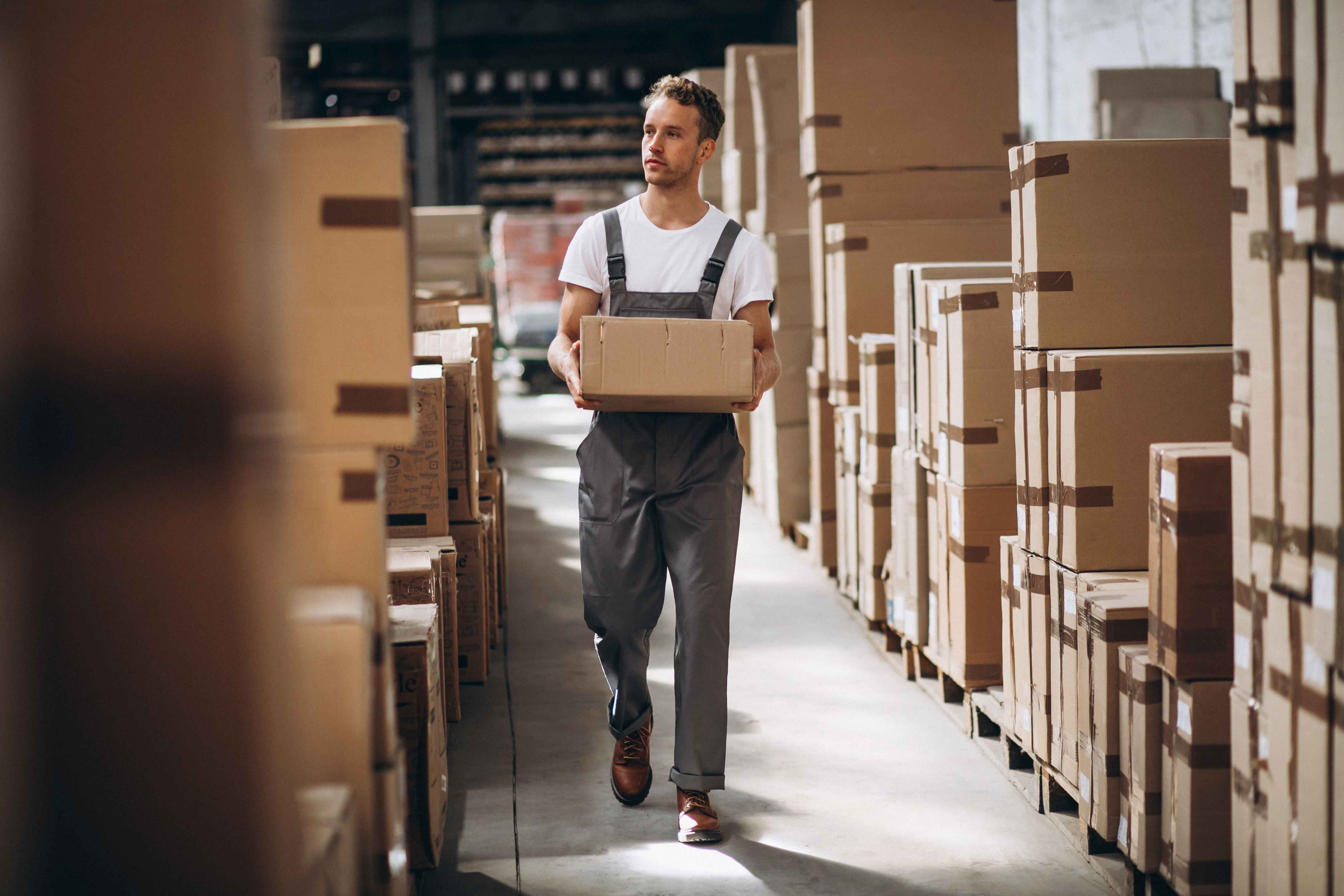
According to Supply Chain Dive:
Dive Brief:
- Recent data from the American Forest and Paper Association suggests the containerboard industry is producing close to full capacity, as the operating rate for containerboard companies was 98.4% in March (up 2.8% YoY), according to a statement from Terry Webber, the association's executive director of packaging.
- As production ramps up, corrugated packaging manufacturers, such as WestRock, are raising prices. During the company's Q2 earnings call, Ward Dickson, WestRock's executive vice president and CFO, said the "implementation of these price increases and improved business mix drove $88 million in year-over-year earnings improvement."
- The index measuring cardboard prices increased to 369.4 in May, compared to 342.1 for the same month in 2020, according to the Bureau of Labor Statistics' Producer Price Index for corrugated and solid fiber box manufacturing. Prices shot up during the first half of 2021, after remaining fairly flat in 2020 despite an uptick in demand.
The PPI for for corrugated and solid box manufacturing shot up
The Producer Price Index for primary products related to corrugated and solid fiber box manufacturing, since Jan. 2019.
Chart: Edwin Lopez / Supply Chain Dive Source: U.S. Bureau of Labor Statistics Get the data Created with Datawrapper
Dive Insight:
Although American Forest and Paper Association found that containerboard production increased 9% in March compared to March 2020, the boost in supply was not enough to keep prices from going up this month.
Rising containerboard prices could be a threat to companies that rely on packaging to deliver goods ordered online to their customers. If prices continue to shoot up, companies will have to pay even more for shipping boxes and figure a way to balance out the additional cost. That could mean setting higher prices to absorb the increase.
"Boxes are the most widely used packaging for e-commerce shipments," Webber said. And to meet the rising demand, manufacturers have "steadily increased over the last decade" by expanding capacity by 14% between 2010 and 2019, he added.
Manufacturers are now operating at almost full tilt. Many investments are geared toward recovering product fibers for reusable packaging to secure supply.
"Boxes are ... the most recycled packaging in the United States providing a versatile and sustainable packaging solution for retailers and consumers alike," Webber said.
American Forest and Paper Association expects the industry's capacity expansion to continue with billions in investments lined up through 2023.
This story was first published in our weekly newsletter, Supply Chain Dive: Procurement. Sign up here.
--
At LFS, we provide tailor-made logistics solutions to manufacturers, distributors, importers, and exporters across the United States, Canada, and Mexico. We are a 3PL company lead by a team of experts who will help you evolve your logistics through advanced technological platforms, providing you great efficiency, cost savings, and delivery speed in every shipment.
LFS keeps you updated with the latest news, if you need additional information about our freight shipping solutions, contact us or follow us on Linkedin, Facebook, and Twitter.
For cargo insurance experts, please contact Skholl, our partner to avoid any freight damage.
By: Supply Chain Dive
June 25, 2021

According to Supply Chain 247:
Time to Modernize Supply Chain Design
In light of the dramatic changes that supply chains have undergone over the last 20 years, companies need new, innovative approaches to supply chain design that shifts the focus from cost-minimization toward value creation.
And the design process must mature to capture the complexity, volatility, and uncertainty of the competitive environment in which modern supply chains operate.
These challenges can be met with the support of advanced methods that combine the power of analytical models with the implicit knowledge of expert human-decision makers.
The new approach improves decision-making transparency, enriches design solutions, and reflects the real-life challenges that companies now face.
A New Supply Chain Environment
The field of supply chain design is rooted in conventions developed through studies carried out in the 1990s. These studies primarily focused on the physical configuration of supply chains, such as facility location and customer allocation decisions. Supply chains were designed to minimize costs such as those associated with facilities, warehousing, and transportation.
Also, in the conventional approach, the design of a supply chain is typically reviewed once every few years; these exercises are rarely linked with tactical planning decisions.
Such conventions are no longer adequate. The competitive environment in which firms operate has changed over the last two decades. During this time, the acronym VUCA has been employed to describe the increasing volatility, uncertainty, complexity, and ambiguity of business conditions.
Today, operating in a VUCA environment is no longer the exception but the reality to which companies must adapt daily. Globalization, multi-outsourcing, and the proliferation of brands are driving the structural and organizational complexity of contemporary supply chains. Increasing economic and political volatility creates uncertainties on the demand and supply side of global operations.
Furthermore, new models such as omnichannel retailing and shifting customer expectations in terms of service responsiveness and flexibility are radically changing the way we think about supply chain design. As supply chains have become a major competitive differentiator, design has moved center stage in the development of corporate strategy.
Traditional supply chain design approaches fail to capture these realities in several ways.
First, conventional methods fail to capture the complexity of contemporary supply chains. The decisions that underpin these designs were historically constrained by limits on computational power and data availability. Also, traditional design processes rarely incorporate factors such as demand uncertainty, supply chain disruptions, and multi-channel distribution.
Second, the focus on cost minimization is outdated. Traditional approaches mainly focus on decreasing the logistics costs under a given demand, which often results in the use of centralized facilities in areas with low real estate costs. Today, proximity to the end customer and delivery speed are major drivers of competitive advantage.
Consequently, when deciding on the deployment of logistics assets, companies must consider aspects of revenue management. Design approaches need to implicitly consider trade-offs between the ability to capture additional revenue by meeting customers’ increasing delivery expectations and the need to keep fulfillment costs under control.
Third, given the highly volatile and uncertain conditions that now prevail, success in contemporary markets requires decision-making agility and speed. As a result, supply chain design must be evaluated much more frequently than before. Thus, supply chain design must become an ongoing process that involves continuous updates of the variables and methods used, rather than one-shot exercises carried out every few years.
And fourth, in addition to these changes, in recent years there have been significant advances in data science and a massive increase in the amount of data available to supply chain professionals. Data analytics and machine learning tools make the structure and performance of complex supply chains more visible
Furthermore, advanced network science methods enable companies to characterize the complexity of relationships between multiple suppliers, manufacturers, distributors, and retailers.
A Supply Chain Fresh Approach
With the benefit of these developments, traditional optimization and simulation models can be extended to include more information and complexity. Consider, for example, a network design study carried out recently by the MIT Center for Transportation & Logistics (MIT CTL) for a major e-tailer that looked at multiple sales channels. The study explored the integration of direct sales and third-party flows as well as multiple distribution channels with deliveries to customers or traditional stores. Additionally, multiple delivery services, including same-day and instant delivery and customer and transport infrastructure information at the level of each neighborhood, were part of the study.
The shift toward value creation also extends supply chain, design models. In addition to traditional decisions such as the number, location, and size of facilities, models can now incorporate go-to-market decisions including distribution channels, tactical asset deployment, and operation governance rules.
Importantly, studies no longer need to be confined to decision-makers within logistics and the supply chain function; executives from strategy, finance, sales, and marketing can now participate in design projects, bringing a level of cross-functional collaboration that is rare in traditional modeling exercises.
The ability to include other disciplines in the design process is a hugely significant development that will enrich supply chain designs and make companies more responsive to an ever-changing competitive environment.
For example, in a project carried out recently in MIT CTL’s CAVE Lab, a team of executives from a leading manufacturer modeled iterations of a supply chain design. Participants from various disciplines, including logistics, finance, sales, and marketing, worked jointly on defining key features of the design.
See the video here --> https://youtu.be/9_YyVFG88AM
The exercise revealed that increasing the density of warehouse and asset deployment throughout the United States enabled the company to increase its market share significantly. This increased revenue more than compensated for the additional logistics costs incurred. Direct engagement of sales and marketing executives in the design process injected critical knowledge of market conditions. The co-design event was essentially a sales and operations planning exercise at a strategic level, quickly aligning intuition and accelerating the market response.
Given the central role that supply chain design now plays in corporate strategy, the modeling process must reflect the corporate goals of each company and the decisions needed to implement design changes. This level of specificity requires a shift from generic supply chain design solutions to a highly customized approach. Rapid prototyping and software development enables companies to implement tailor-made design solutions at a lower cost and update them more frequently.
Supply Chain Visualization Adds Value
These analytical advances are a promising avenue for capturing the structural and organizational complexity of contemporary supply chains - but are not sufficient. The sheer amount of data now available can lead to information overload and decision-making paralysis. Furthermore, “black box” model solutions can cause a lack of engagement, especially in the context of decision-making in cross-functional teams.
To address these challenges, it is necessary to provide intuitive interfaces with analytical models as well as the underlying data. Here, interactive visualization enables human decision-makers to grasp all of the information contained in large datasets, identify trends and patterns and build data narratives to support decision-making and engagement.
Also, decision-makers often have knowledge about implicit constraints or objectives that are not comprehensively captured by the analytical tools. Interactive visualization was essential in capturing local salesforce expertise in the previously mentioned case. Decision support systems utilizing mixed-initiative approaches - which combine the inputs of expert users and the analytical power of the machines - allow design teams to arrive more quickly at solutions that address more realistic challenges.
For example, a company was investigating better network configurations for its global distribution network that comprised hundreds of facilities and tens of thousands of customers. For each of the thousands of products manufactured by the company, researchers used network science methods to identify the best warehouse locations. Using a visual analytics tool, users selected the most promising locations based on their knowledge of the specificities of each product. Finally, a machine learning algorithm recomputed the performance metrics for the newly constructed network, and a visual interface enabled the participants to fine-tune the analysis and arrive at appropriate designs quickly.
Accepting Supply Chain Change
Today’s supply chain design processes must capture both structural and organizational complexities that have emerged over the past two decades. The focus needs to be broader, to emphasize value creation based on the ability to serve customers speedily and flexibly. Moreover, the design process must be more inclusive, tailored, and carried out regularly.
We have the technology and the data to redefine supply chain design - but we also need companies to acknowledge that conventional methods are outmoded, and to seek the development of new design paradigms.
About the Authors
Milena Janjevic is a research scientist at the Megacity Logistics Lab in the MIT Center for Transportation & Logistics (MIT CTL) and can be reached at mjanjevi@mit.edu.
*Jarrod Goentzel is director of the MIT Humanitarian Supply Chain Lab at MIT CTL, and is an early developer of supply chain design technology. He can be reached at goentzel@mit.edu.
Matthias Winkenbach is director of the MIT Megacity Logistics Lab at MIT CTL and can be reached at mwinkenb@mit.edu.
Collectively together, they are spearheading the launch of the Supply Chain Design ab at MIT CTL.
--
At LFS, we provide tailor-made logistics solutions to manufacturers, distributors, importers, and exporters across the United States, Canada, and Mexico. We are a 3PL company lead by a team of experts who will help you evolve your logistics through advanced technological platforms, providing you great efficiency, cost savings, and delivery speed in every shipment.
LFS keeps you updated with the latest news, if you need additional information about our freight shipping solutions, contact us or follow us on Linkedin, Facebook, and Twitter.
For cargo insurance experts, please contact Skholl, our partner to avoid any freight damage.
By: Supply Chain 247
June 25, 2021

According to DAT Freight & Analytics:
Due to record-high lumber prices, there’s a disposable pallet shortage, which further stresses already strained supply chains.
The cause for the high lumber prices?
Low interest rates and urban flight are fueling the housing boom. According to the National Association of Homebuilders, the unprecedented spikes in lumber prices have added nearly $36,000 to the average price of a new single-family home, and nearly $13,000 to the price of a multifamily home since April 2020.”
DIY backyard projects also soared during the pandemic. The frenzy bit deep into the 2020 summer lumber inventory, resulting in a historic lumber shortage.
While pallets are used in many sectors, the produce industry is especially impacted now that its peak harvest season.
In a recent letter to members, the United Fresh Produce Association who represent the full breadth of the produce supply chain, highlighted a multitude of issues impacting pallet availability including:
- A lack of pallet availability and rising pallet prices add to the stress of already squeezed supply chains
- Pallet costs are up 400% due to several factors, including high demand and rising lumber costs
- Wood pallets increased 8% in April (up 14% this year) in the latest Producer Price Index — the largest increases recorded in the last decade.
- Pallet manufacturers are competing for raw materials with the home construction industry, which has boomed in recent months
The shortage of lumber and wood products has increased the cost of raw lumber 200% to 350% and is making the cost of wood pallets increase incrementally
- Repositioning pallets is a challenge with a strained trucking capacity — not enough trucks and drivers are available to move the pallets from one location to another
- Pallets may be circulating in the supply chain, but not necessarily in the right place at the right time
- Dwell time is up for non-perishable inventory, which indicates pallets may be sitting longer at warehouses or loading docks.
Growers need to keep the pallet shortage in mind as they meet the escalating demand for produce. For carriers and brokers, the pallet shortage will also increase loading delays. We may even see hand-stacking cartons and bags of produce like we did in the days before pallets.
--
At LFS, we provide tailor-made logistics solutions to manufacturers, distributors, importers, and exporters across the United States, Canada, and Mexico. We are a 3PL company lead by a team of experts who will help you evolve your logistics through advanced technological platforms, providing you great efficiency, cost savings, and delivery speed in every shipment.
LFS keeps you updated with the latest news, if you need additional information about our freight shipping solutions, contact us or follow us on Linkedin, Facebook, and Twitter.
For cargo insurance experts, please contact Skholl, our partner to avoid any freight damage.
By: DAT Freight & Analytics
June 17, 2021

According to Supply Chain 247:
If your factory is the heart of your organization, then your supply chain is the veins and arteries and your operational efficiency depends on everything being connected to deliver a reliable service.
Supply Chain Automation
Today, many organizations have built operational efficiencies based on a patchwork of legacy systems, with gaps between applications leaving a disconnect in the supply chain, which can lead to inefficiencies, lack of visibility, and general uncertainty.
Supply chain automation provided by a low-code automation platform can automate tasks within the end-to-end supply chain and connect systems for a 360-degree view of operations.
What is Supply Chain Automation?
Supply chain automation is the use of digital technologies to improve efficiencies, connect applications and streamline processes within supply chain operations.
It usually incorporates intelligent technologies such as Digital Process Automation, Robotic Process Automation, Artificial Intelligence, and Machine Learning.
What Are the Benefits of Supply Chain Automation?
There are multiple benefits that can be seen when supply chain automation software is introduced to operations. Here are the four primary benefits:
1. Automate menial, manual tasks
A connected supply chain supported by automation technologies provides the opportunity to free employees from these menial, manual tasks.
“Supply chain management processes contain various documents such as delivery order, dock receipt, bill of lading (B/L), sea waybill, etc,” states AIMultiple.
“Employees in the supply chain department continuously store and process these documents for various reasons, yet, this is a time-consuming, manual task that inhibits businesses to reach operational excellence.”
These tasks are often carried out on pen and paper by employees in the warehouse, taking up valuable time and often leading to human error when recording and submitting information. The benefits of automation, both in and out of the warehouse include increased efficiency - manifested by increased fill rates and decreased cycle times, as well as increased warehouse throughput time, reduced labor and operational costs, elimination of human error, and improved inventory management.
The benefits of automation were realized by Bizagi customer, adidas. The largest sportswear manufacturer in Europe needed to transform its supply chain across 400 factories. Using Bizagi and an agile methodology allowed for less development, more efficiency, and cost reduction. They created standardized, reusable processes to deliver automation across departments.
These automated processes eliminated manual tasks and reduced operational costs, such as eliminating a million emails per year through system integration. They also halved factory onboarding time and sped up the two-month sports asset contract approval cycle to just one week.
2. Transparency and visibility of operations
Traditional supply chains often face unpredictable lead times and lack the transparency to know how inventory is progressing. Digital technology means that now even the everyday consumer is used to being able to see where their online delivery is in its journey from the warehouse to their front door. So why shouldn’t businesses expect the same visibility earlier on in the supply chain?
The reason for the lack of transparency in the past couple of decades has been due to poor connectivity. As more systems and applications were introduced to increase efficiency, they created silos and left gaps between systems, which meant that information could not be passed between them and it was hard to follow the status of a process end-to-end.
A low-code automation platform can connect all systems and create a centralized location for your employees to access information, providing complete process visibility and orchestration. This provides real-time data to employees, not only giving them up-to-date status updates but also allows them to act with certainty when executing tasks that rely on important information.
Transparency not only benefits employees but also customers as they can easily get an overview of how their order is progressing through the supply chain. Traceability is now essential for customer satisfaction and a low-code automation platform can provide appropriate visibility.
3. Agility to respond to the unexpected
If 2020 taught us anything, it’s to expect the unexpected. For some organizations, the COVID pandemic meant scaling operations back and operating on a bare-bones basis. For others, it meant ramping up production and shipping capabilities to meet increased demand.
Using a low-code automation platform provided the benefit of adaptability to respond to unforeseen circumstances, which is built-in when you connect information and data across your organization.
“Low-code platforms let technology teams build enterprise applications substantially faster to meet rapidly changing business objectives,” reports BM Magazine.
“To respond quickly to business needs, using low-code platforms with an API-driven approach can help you to create auto-responsive apps for websites, tablets, and smartphones at the desired speed.”
4. Ensure regulations are always met
Diminishing risk and meeting compliance standards are particularly hard in a post-COVID world. Even more so for manufacturers and suppliers with global sites observing different regulations, ranging from health and safety to best business practices. Auditing is then required to prove these standards have been met.
Establishing business processes that are then executed, either in part or fully, by automation technology can help improve both risk management and the overall supply chain management. All stakeholders can ensure best practices are followed while integrating compliance for effective and risk-averse operations.
Documenting and automating workflows is the ideal way to ensure specific requirements are met, and that operations can be agile enough to evolve. Additionally, the real-time visibility brought to the supply chain by a low-code automation platform can help organizations to mitigate risk and ensure compliance by identifying issues as they arise and preventing them from escalating further.
Connectivity and Automation
Connectivity and automation bring the efficiency and agility that so many supply chain operators crave. If you would like to find out more about how a low-code platform can help transform your supply chain, download the ebook, The Essential Guide to Automation in Manufacturing.
--
At LFS, we provide tailor-made logistics solutions to manufacturers, distributors, importers, and exporters across the United States, Canada, and Mexico. We are a 3PL company lead by a team of experts who will help you evolve your logistics through advanced technological platforms, providing you great efficiency, cost savings, and delivery speed in every shipment.
LFS keeps you updated with the latest news, if you need additional information about our freight shipping solutions, contact us or follow us on Linkedin, Facebook, and Twitter.
For cargo insurance experts, please contact Skholl, our partner to avoid any freight damage.
By: Supply Chain 247
June 17, 2021
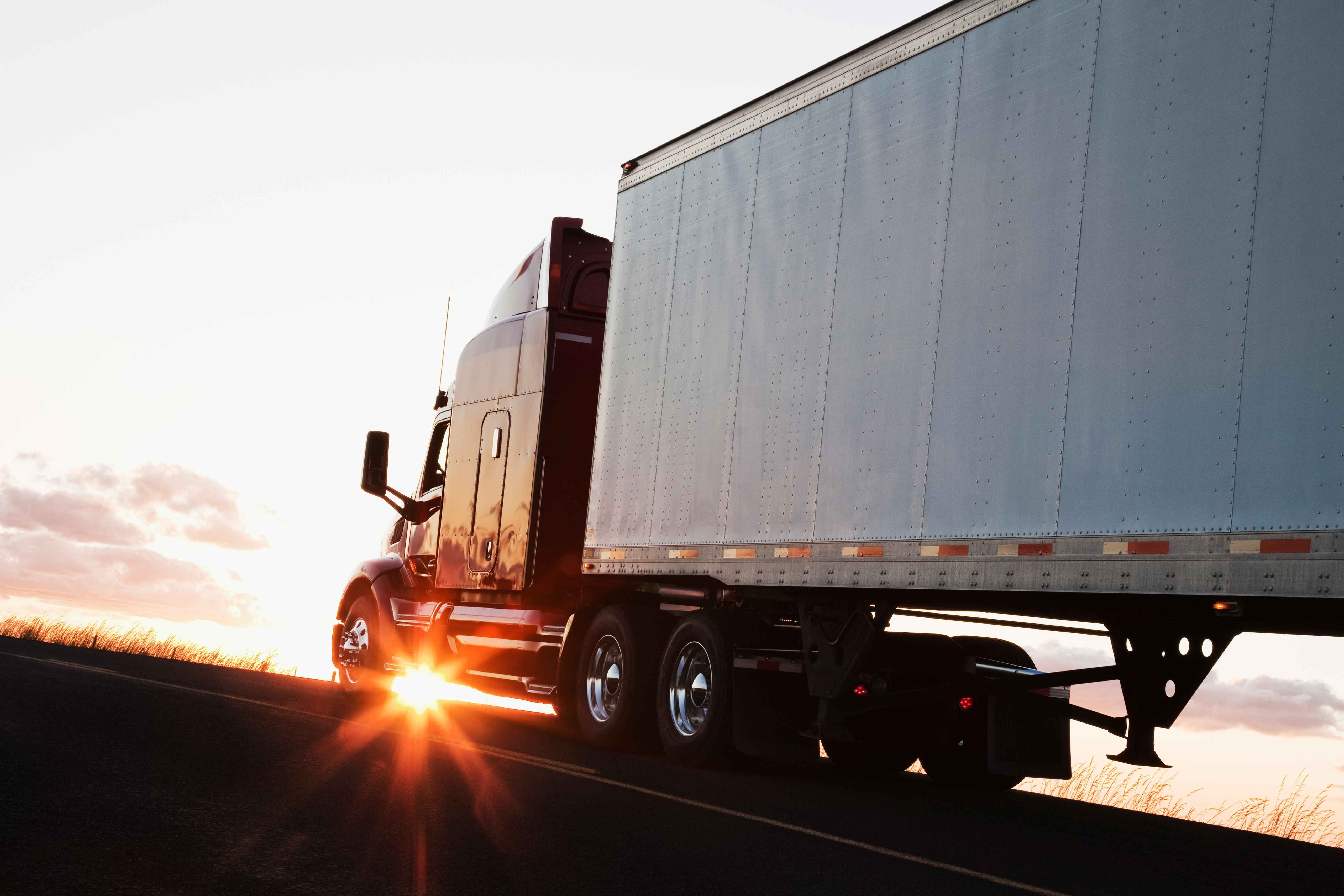
According to American Shipper:
Companies are unlikely to reshore their supply chains from Asia to North America between now and 2025 due to high production costs, concerns about the business climate in Mexico, and fears of the loss of access to close-by markets of billions of consumers, according to a report released Wednesday by the Economist Intelligence Unit (EIU), the business intelligence operation of London-Based The Economist Group.
The conclusion goes against the widely held belief that businesses selling into North American markets would shift their supply chains from Asia in an effort to counter the massive and continuing supply chain disruptions caused by the COVID-19 pandemic. However, the EIU report said that as pandemic-related concerns fade with more people getting vaccinated and countries reopening, the emphasis on business resiliency that was a key discussion point during 2020 and in the early part of 2021 will fade with it.
Andrew Viteritti, the EIU’s commerce and regulations lead, said in a Wednesday interview that most multinational firms with long-standing Asian operations will return to their pre-COVID-19 behavior of basing supply chain decisions on operational cost-effectiveness and maximum revenue opportunities rather than on the need to establish supply chain redundancies. This means, for the most part, a continued reliance on low-cost Asian production, Viteritti said.
Shifting production and distribution operations thousands of miles is a costly and complex investment, and relocating supply chains to North America would deprive businesses of cost-effective means of penetrating Asian markets with consumers possessing more disposable income than ever before, Viteritti said.
Production of critical supplies like personal protective equipment and medical supplies may be reshored for national security and public health reasons, Viteritti said. However, the notion that businesses will leave Asia in droves is far-fetched, he said. The return to the status quo is likely to become clear once the current supply chain disruptions, largely a byproduct of the pandemic, begin to dissipate and supply-demand scales return to balance, he said.
Ironically, the report was accompanied by a chart that projected Canada and the United States as the highest-performing countries through 2025 across seven metrics of international business. Canada and the U.S. had the highest and second-highest overall scores, respectively, among 11 countries analyzed by the EIU. China ranked eighth overall.
North America boasts a deeply integrated marketplace, a large free trade area, short-distance travel times and new opportunities for policy integration under the United States-Mexico-Canada Agreement (USMCA) on trade, Viteritti said. Still, those qualities won’t be enough to move the reshoring needle in a substantial way through mid-decade, he said.
In particular, worries about Mexico will prevent North America from becoming a realistic substitute for reliable and established Asian production, according to the report. With the exception of the category of “foreign trade and exchange controls” where it scored very high, Mexico scored poor to slightly above average across the other six EIU metrics. It ranked ninth overall among the 11 nations surveyed.
Mexico’s lowest reading came in the category of “political effectiveness,” a reflection of market concerns that Mexico is adopting a more protectionist stance toward international trade. The country also scored low in the category of “private enterprise policy,” which may reflect an adversarial approach to business in general. Mexico’s labor costs are lower than in the U.S. and Canada, though it is an open question as to whether that will be enough to encourage foreign investment in the continent.
Other concerns are the ongoing bilateral squabbles between the U.S. and Canada, and whether President Joe Biden’s push to encourage purchases of U.S.-made goods squares with foreign firms’ desire for truly free and open markets, the report said.
The EIU builds its intelligence model from a broad array of data sources. Created in 1946, it is one of the world’s most respected business intelligence operations.
--
At LFS, we provide tailor-made logistics solutions to manufacturers, distributors, importers, and exporters across the United States, Canada, and Mexico. We are a 3PL company lead by a team of experts who will help you evolve your logistics through advanced technological platforms, providing you great efficiency, cost savings, and delivery speed in every shipment.
LFS keeps you updated with the latest news, if you need additional information about our freight shipping solutions, contact us or follow us on Linkedin, Facebook, and Twitter.
For cargo insurance experts, please contact Skholl, our partner to avoid any freight damage.
By: American Shipper
June 17, 2021
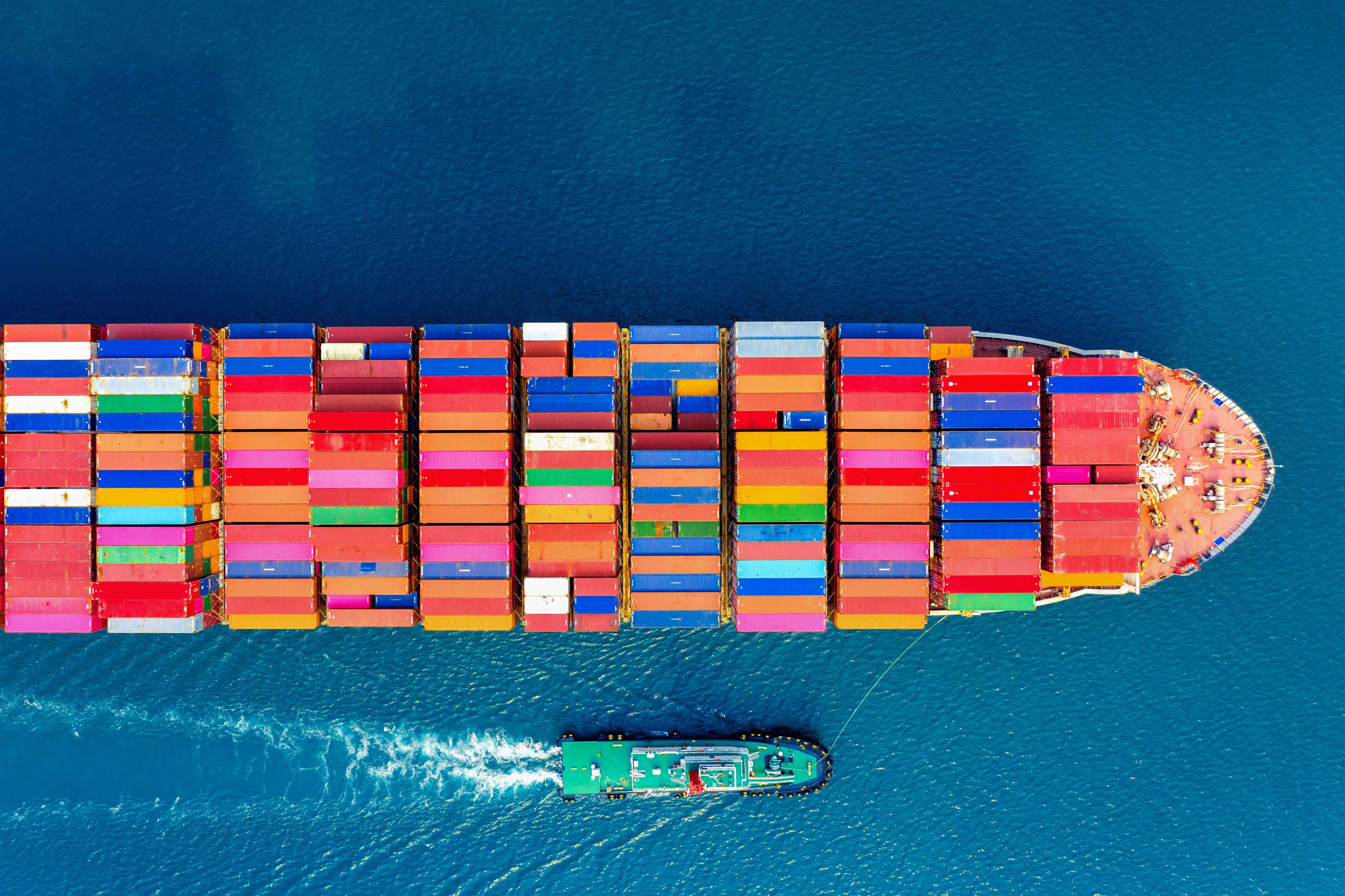
According to The Wall Street Journal:
Global shipyards that were retrenching and consolidating in a faltering maritime market barely more than a year ago are now flush with new orders, boosted by efforts by shipping lines to add capacity to meet resurgent consumer demand in Western economies.
Orders for new container ships in the first five months of this year were nearly double the orders for all of both 2019 and 2020, according to London-based maritime data provider VesselsValue Ltd., with the biggest gains going to shipyards in South Korea and China.
The order tally has been so strong that some yards have stopped giving quotes for new vessels and are trying to renegotiate existing orders for more than 20 ships as the price of steel plates used to build vessels has doubled since the end of 2020, according to people involved in those deals.
The resurgence in ordering is being driven mainly by container ships as Western retailers such as Walmart Inc. and Amazon.com Inc. scramble to restock after a year of supply-chain disruptions from the coronavirus pandemic.
The rush to replenish depleted inventories, along with congestion at major ports in North America, Europe and Asia, has left cargo space hard to find and sent freight rates soaring. That has spurred big profit gains at operators like A.P. Moller-Maersk A/S, CMA CGM SA and Hapag-Lloyd AG , as well as triggered moves to renew and expand their fleets.
“They are making bucketloads of money and when that happens, owners invest in new ships,” said Peter Sand, chief shipping analyst at Denmark-based shipping trade body Bimco.
“Orders have doubled so far in 2021, nearly reaching the total tonnage ordered for all of last year. I won’t be surprised if there is another wave of ordering.”
The strong orders are in contrast with the past couple of years, when a long downturn in maritime trade left a dwindling backlog of orders at shipyards and forced some to consolidate.
Data from London-based shipping broker Braemar ACM Shipbroking show that in the first five months of this year, ships totaling capacity for about 2.6 million containers—measured in 20-foot equivalent units, a standard maritime measure—are on order, putting the business on track to surpass an annual record of 2.8 million containers’ worth of capacity ordered in all of 2007.
“It’s been our busiest period in years and it’s very much about container ships,” said a senior executive of South Korea’s Hyundai Heavy Industries Co. , the world’s biggest shipbuilding facility in terms of capacity. “The orders are mostly for bigger ships with all the extras to emit less, which is good for margins. We are almost out of slots to build new ships until late 2023.”
“I’ve never seen such demand in 20 years,” this executive said.
South Korea’s three big yards—Hyundai Heavy, Daewoo Shipbuilding & Marine Engineering Co. and Samsung Heavy Industries Co. —account for more than a third of all shipbuilding orders for all types of vessels.
The other shipyards with big shares of global orders are China State Shipbuilding Corp., China Shipbuilding Industry Corp. and Japan’s Imabari Shipbuilding Co.
In the first five months of this year, 208 container ships worth $16.3 billion were added to the global order book, compared with 120 ships valued at $8.8 billion for all of last year and 114 vessels worth $6.9 billion in 2019, according to VesselsValue.
The South Korean shipyard executive said the boxship orders are mainly for vessels that can move around 14,500 containers and behemoths with a capacity of more than 20,000 boxes that are mainly deployed on Asia-Europe trade lanes.
An executive at one of China’s big state shipbuilders said owners of roughly two dozen ships are being asked to pay more if they want their vessels delivered because of rising steel prices.
“If the yards adhere to the original contract, they will be delivering the ships at a loss,” said this executive. “A big cargo ship needs around 25,000 to 30,000 tons of steel and that’s an additional $15 million on average from last year in terms of cost. There are at least 22 ships on order that are being renegotiated at big Asian yards.”
Steel can account for up to 30% of a vessel’s cost, depending on the type of ship. Tankers and dry-bulk movers need more steel than container ships. A very large crude carrier now costs around $100 million, up from $85 million last October.
--
At LFS, we provide tailor-made logistics solutions to manufacturers, distributors, importers, and exporters across the United States, Canada, and Mexico. We are a 3PL company lead by a team of experts who will help you evolve your logistics through advanced technological platforms, providing you great efficiency, cost savings, and delivery speed in every shipment.
LFS keeps you updated with the latest news, if you need additional information about our freight shipping solutions, contact us or follow us on Linkedin, Facebook, and Twitter.
For cargo insurance experts, please contact Skholl, our partner to avoid any freight damage.
By: The Wall Street Journal
June 9, 2021

According to SupplyChain:
1. IDENTIFY RISK
It is very beneficial for project managers or risk managers to carry out assessments of risk regularly. The events of Covid-19 have highlighted some key issues that supply chain leaders should become aware of as they plan for the future. There are various risks along the supply chain, especially for large logistics companies. Some of these include:
- Health and safety risks.
- Crime incidents involving transport vehicles.
- Regulation changes.
- Cybersecurity threats.
2. ACQUIRING SKILLS
As digital transformation becomes a critical focus for supply chains, companies aim to acquire more skills to manage sophisticated supply chain systems. Predictive operations systems are becoming more popular as the development of AI and machine learning manages menial tasks, which allows personnel to focus on the wider operations and procurement tasks. However, managing these systems requires new skills like any new system.
3. USING BIG DATA
Data analytics and business intelligence is a big trend in 2021. Many supply chains are moving towards big data usage, which is definitely important for keeping up with the industry. But only around half of supply chains are using technology to their advantage, despite them understanding its long-term benefits.
4. COMPETITION AND FINANCIAL MANAGEMENT
Competition in the supply chain involves maintaining supplier relationships, understanding the need for fast operations and providing personnel with the equipment and skills to carry out their jobs.
A particularly attractive financial strategy for supply chain companies in 2021 is cost reduction. As the use of big data widens, businesses can focus their attention on reducing production costs and tackling much-needed price negotiations.
5. COLLABORATION
Collaboration happens throughout every stage of the supply chain process, from sourcing and negotiations to product or service delivery. Providing the tools for personnel to collaborate will streamline each process. The Industrial Internet of Things (IIoT) is an excellent example of how a digital ecosystem can be used to monitor and collaborate in manufacturing and can even be used to manage robotics
--
At LFS, we provide tailor-made logistics solutions to manufacturers, distributors, importers, and exporters across the United States, Canada, and Mexico. We are a 3PL company lead by a team of experts who will help you evolve your logistics through advanced technological platforms, providing you great efficiency, cost savings, and delivery speed in every shipment.
LFS keeps you updated with the latest news, if you need additional information about our freight shipping solutions, contact us or follow us on Linkedin, Facebook, and Twitter.
For cargo insurance experts, please contact Skholl, our partner to avoid any freight damage.
By: SupplyChain
June 9, 2021
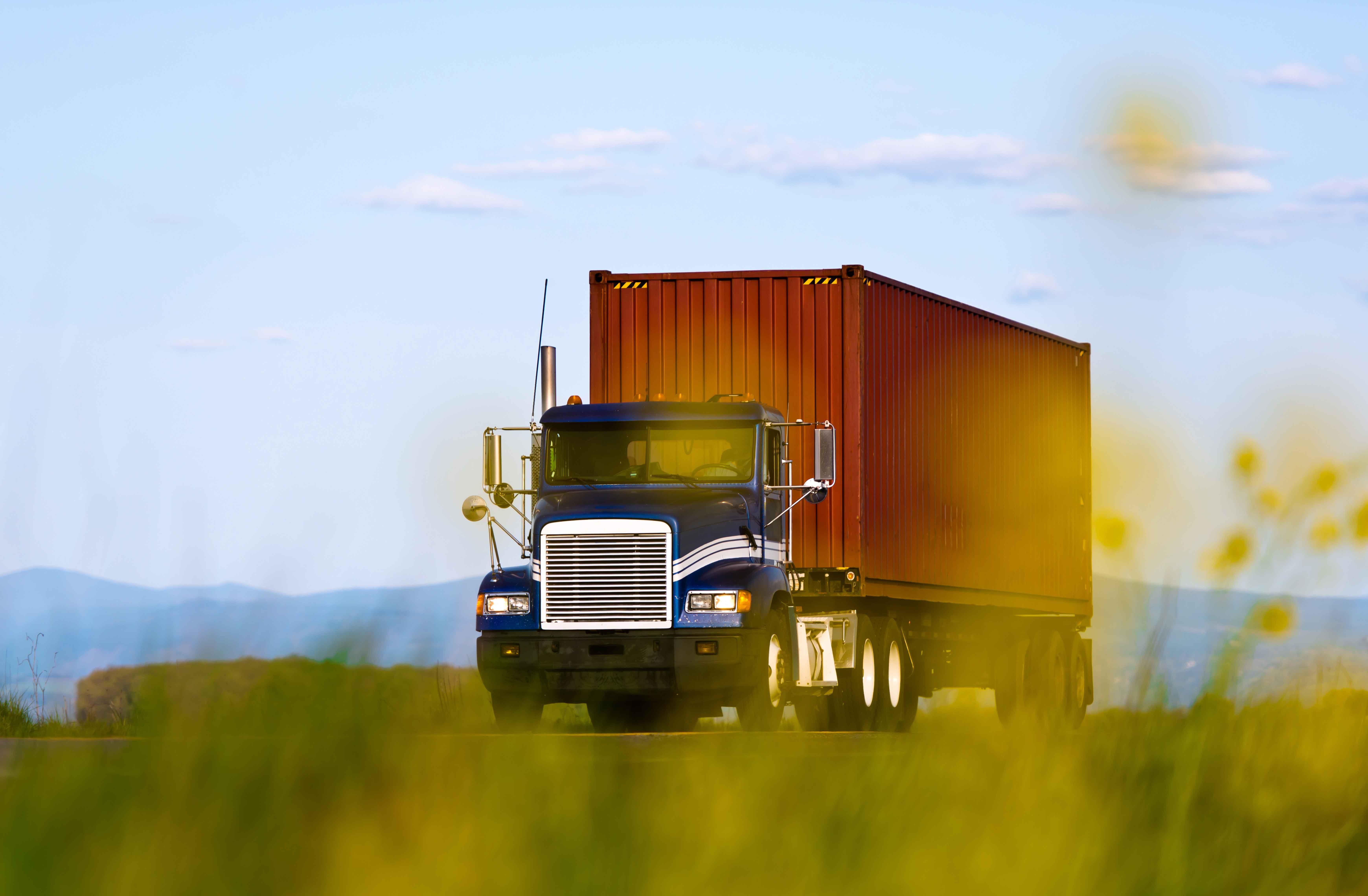
According to Forbes:
Last week I bought t-shirts and shoes from a well-known online fashion store in Europe. The very next day, I had three different tracking codes for my parcels which would be delivered on the same day, at different times. From a consumer perspective, it is impressive to see how fast big supply chains work. But from a sustainable logistics perspective, it seems more like our world is drowning in a sea of packaging waste and smothering the carbon emissions for the cost of rapid delivery.
Does it really have to be like this?
The answer is definitely not. Finding cost-effective sustainable solutions today is much easier for businesses compared to the past. Especially in the post-COVID-19 world where society became more conscious about the responsibility to the environment, we hear everyday news about corporations stepping in the game of being carbon neutral from design to operate. In this alignment, achieving sustainable logistics operations should and must not be an exception.
What practices can businesses apply to increase sustainability within logistics operations? Here are five tips to consider.
1. Harness data for end-to-end visibility
I don’t know if it is just me but whenever leave home for 5 minutes, the delivery guy will turn up in the same time slot! Are they hiding around the corner waiting for me to leave? Recently, I discovered one logistic provider that enables me to live-track the truck which carries my parcel and gives me the chance to change the delivery time up until the last hour. This helps the driver to plan the route to simultaneously lower last-mile carbon footprint, and eliminate a wasted trip, not to mention putting less stress on the customer.
Placing the data at the heart of supply chain operations enables businesses to work more efficiently and effectively. Improving freight collaboration, material, and goods tracking with an open logistics ecosystem connects business partners to manage logistics operations better by monitoring the transport methods in real-time and identifying the best alternatives. Also, businesses can eliminate the risk of empty milages by loading vehicles to optimum capacity, which is both environmental and profit-friendly.
2. Get closer to the customer with pop-up warehouses
Think about a quick win-win-win solution for businesses, consumers, and the environment at the same time. The answer is pop-up warehouses.
Last-mile delivery emissions associated with e-commerce are increasing, and logistics providers are under pressure to find ways to reduce the carbon footprint, which is one of the key measurements of truly sustainable supply chain logistics.
Setting up a pop-up warehouse brings the businesses closer to customers; which means it is an excellent way to reduce last-mile emissions. It helps businesses reduce delivery time and cost; as well as gives more flexibility to mitigate supply chain disruptions.
You can not only using the warehouses for storing inventory close to the demand but also combine on-site retail and pick-up point to cut down the shipping cost completely. Plus, considering the fact that the cost of renting a small warehouse is less than the shipping cost from centrally located facilities, it is a great way for businesses to optimize the supply chain operations while helping the environment.
3. Use alternative vehicle or fuel technologies
Looking out of my window, every day I see delivery vans driving to my neighborhood. Most of those delivery trucks use diesel as a fuel source since it is an affordable option. Not that gas engines are good for the environment, but compared to gas engines, diesel trucks increase the carbon footprint by exhausting %13 more CO2.
Using lower carbon fuels such as biofuel instead of fossil fuels, replacing the old trucks with eco-friendly vehicles would be the measures taken toward ecological and social sustainability goals. There is a wide range of eco-friendly solutions in the market which challenges traditional ways. Sea shipping, eco-friendly train solutions, hybrid or electric vehicles are available green alternatives.
Also, the emissions associated with the distribution facilities can be eliminated via clean energy-powered electricity, solar systems, and water recycling systems. One of the vertical farming companies, &ever, is helping the world minimizing the carbon footprint while producing sustainable and soil-free food. By changing the traditional way of farming, they use 85% less water and can grow 18 cycles a year instead of having 7 cycles a year. Protecting the planet and feeding the world in the most sustainable way possible can be the most profitable path if you take smart steps.
4. Optimize on-site resources, planning, and execution
Have you ever wondered how those huge containers are being carried and transported in between rail, ship, and trucks? What kind of truck is going to carry those pallets or boxes? How those containers will be moving to the next step and transported to the yard?
This is the point businesses use yard logistics to run smooth logistics operations with higher throughput and minimal environmental impact.
Yard logistics is part of the supply chain execution platform which businesses can use to strengthen the bridge between warehouse and transportation management. Efficiently planning the steps and activities in the yard helps to avoid long breaks or processing gaps in between the logistics operations; results in eliminating the waste, transport, and labor cost, and of course carbon emissions.
5. Utilize IoT for simple improvements
Did you know that driving on the highway at 80 kilometers per hour can save about 10 % of fuel? Eco-driving education is another significant way to reduce fuel consumption. It also minimizes the risk of possible damages to the driver, overall vessel, and products in it. As a part of the education, IoT and sensors can be used to monitor and collect the data on speed, fuel consumption, and breaking behavior of drivers.
Also, keeping tires at optimal pressure is an effective tool for keeping fuel consumption under control. With sensors mounted to the rim of the wheel, drivers can monitor the current tire pressure on the display. Using tire pressure sensors helps fuel consumption by up to 12 % at lower speeds, as well as extending the tire lifetime.
There are many ways to make businesses sustainable from design to operate: using sustainable materials, reducing waste, adopting clean energy resources, investing in eco-friendly technologies, and more. Implementing environmental friendly logistic solutions is one of the important building blocks of creating a sustainable supply chain in a journey to become carbon neutral.
--
At LFS, we provide tailor-made logistics solutions to manufacturers, distributors, importers, and exporters across the United States, Canada, and Mexico. We are a 3PL company lead by a team of experts who will help you evolve your logistics through advanced technological platforms, providing you great efficiency, cost savings, and delivery speed in every shipment.
LFS keeps you updated with the latest news, if you need additional information about our freight shipping solutions, contact us or follow us on Linkedin, Facebook, and Twitter.
For cargo insurance experts, please contact Skholl, our partner to avoid any freight damage.
By: Forbes
June 9, 2021
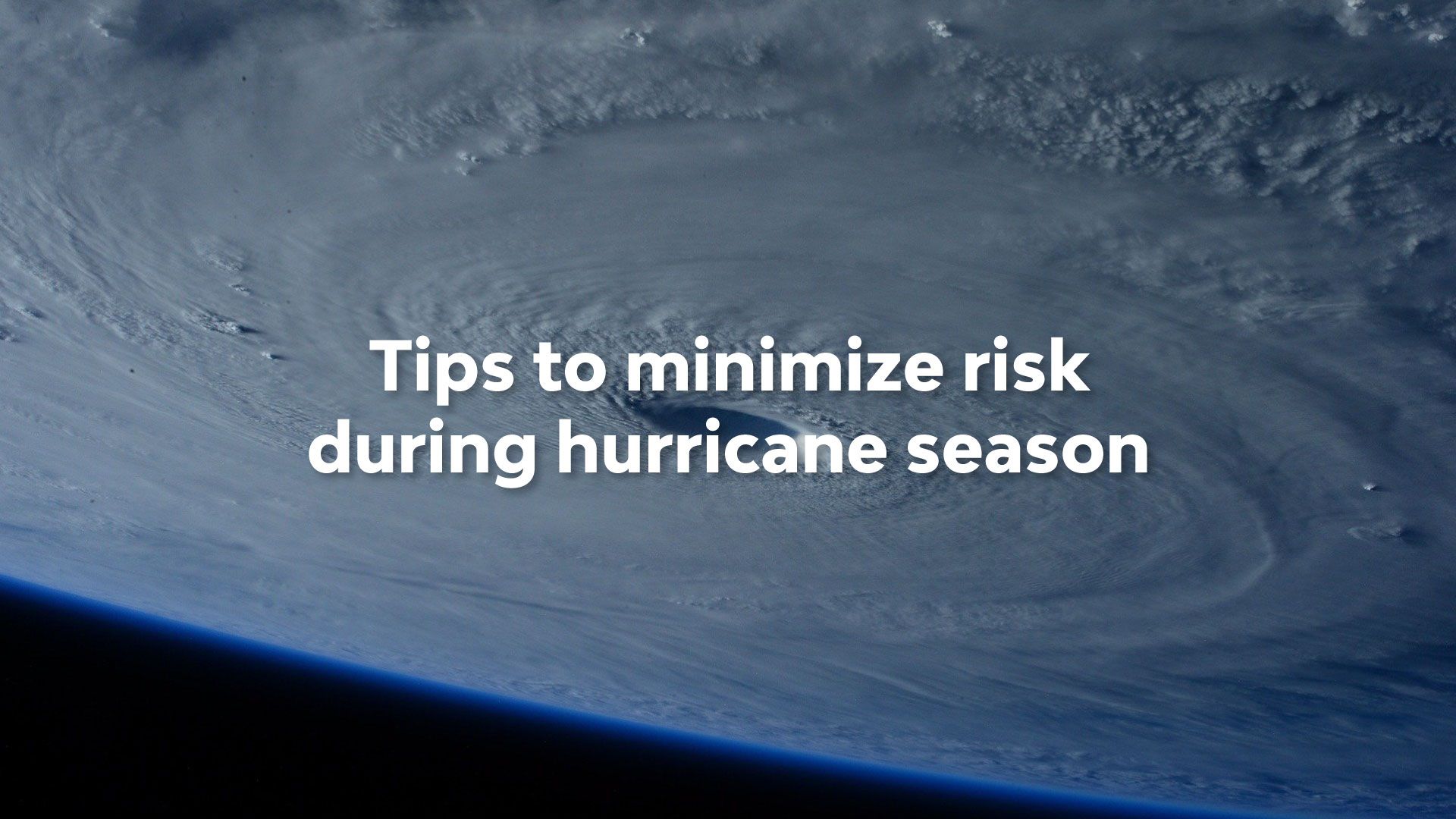
--
LFS keeps you updated with the latest news, if you need additional information about our freight shipping solutions, contact us or follow us on Linkedin, Facebook, and Twitter.
For cargo insurance experts, please contact Skholl, our partner to avoid any freight damage.
--
By: LFS Marketing
June 3, 2021
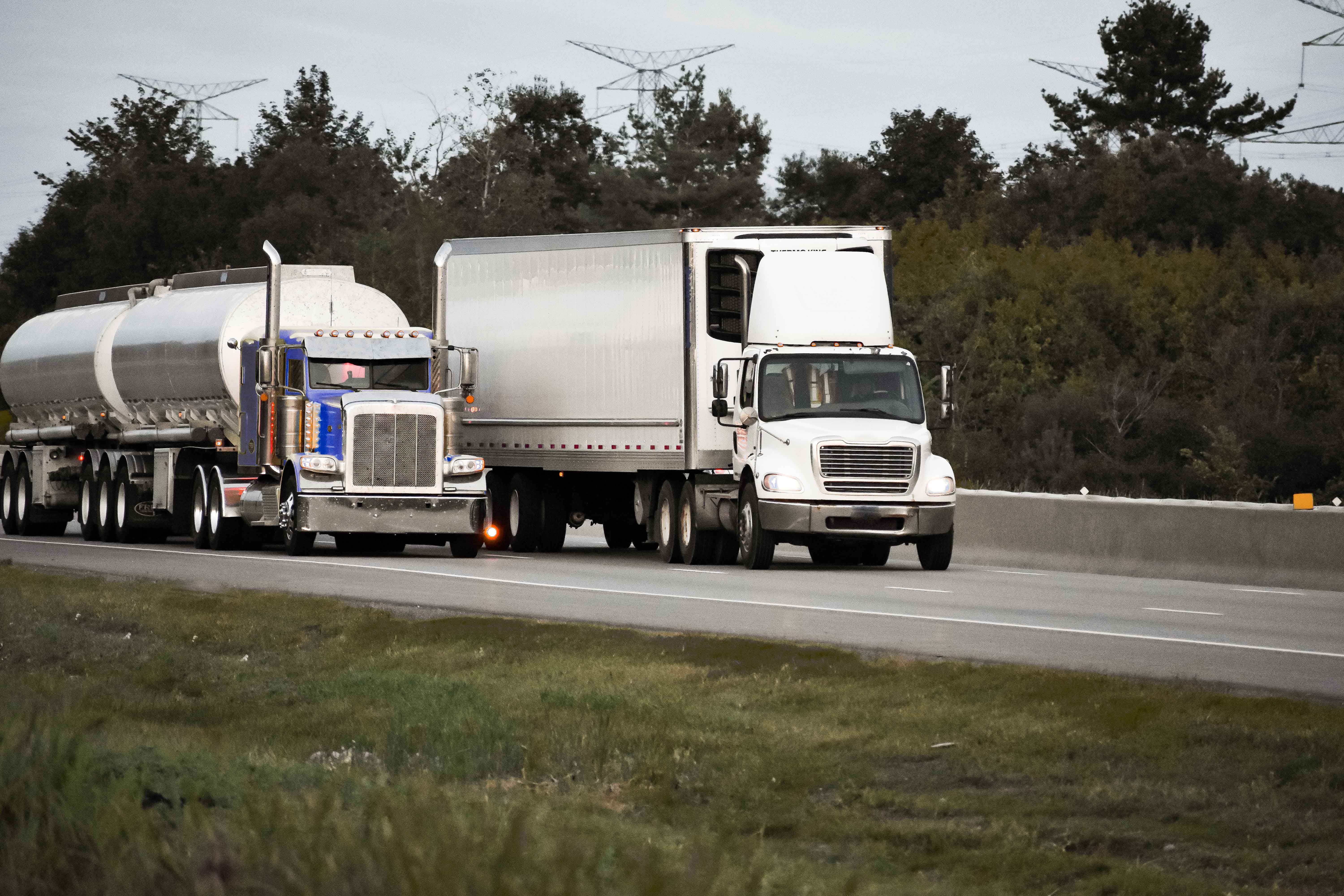
According to Freightwaves:
Staying on the leading edge of technology requires time and capital investments, along with innovation and a corporate culture that values iteration.
We recently caught up with Jim French, chief technology officer at Transplace, to get an inside view on high-impact trends in logistics tech. He says Transplace has been increasing its technology investments 25% each year for the past four years.
“We take innovation and invention seriously and encourage our employees to push the envelope on what’s possible with our advanced technologies,” French said.
With all of the logistics and supply chain advancements now available, it can be confusing for shippers to identify high-impact technology investments that will help them stay competitive in 2021 and beyond. French offers three areas of logistics tech to consider.
Data-driven decision-making
Investing in a robust transportation management system (TMS) is one of the most important decisions for a shipper. A cloud-based TMS provides real-time clarity of transportation networks, data insights, dashboards, reporting and analytics. Having the right TMS results in 6-10% transportation cost savings within six to 12 months.1
“I realize that a TMS is not new tech,” said French. “In fact, the hottest innovations in logistics and supply chain technologies right now may not be the newest, but it’s tech that continues to get sharpened and more sophisticated. Through iteration and continuous improvements, we are refining our technology platforms and processes to provide a competitive advantage for our clients.”
For shippers with a legacy TMS, a new logistics solutions platform provides shippers access to emerging technology like real-time visibility, service prediction, service performance benchmarking, network collaboration and optimization and more. These stand-alone offerings are a quick, cost-effective way for shippers to take advantage of Transplace’s leading-edge logistics technology, intelligence and visibility to optimize supply chain operations in concert with their current TMS infrastructure.
With the democratization of data, logistics technology specialists are able to minimize risks and spot opportunities to save costs to help shippers make smarter decisions for better business outcomes. TMS apps are making the dashboards and analytics accessible from any device anywhere in the world.
French advises shippers, “If you haven’t explored the latest upgrades to TMS platforms, make a point of finding out what’s new. For example, Transplace is leading the TMS industry by enabling ‘instant price’ quotes from multiple providers, while still allowing carriers without this capability to directly interact through the more traditional carrier portal for spot shipments.”
Contingency planning and business continuity
Expect logistics and transportation to continue experiencing volatility in 2021. In addition, retailers are demanding more visibility into the entire supply chain to avoid empty shelves. Invest in technology that boosts contingency planning and business continuity.
Artificial Intelligence (AI) and machine learning (ML) are supporting intelligent inventory demand forecasting, production scheduling and predictive analytics. Through AI and ML, a task that could take humans days or weeks to unravel can be completed in mere minutes. More and more logistics execution will be automated, saving time and increasing efficiencies within the supply chain.
For example, Transplace upgraded its tracking portal and control tower as a central source for managing dynamic and complex planning. The display shows hot spots in addition to weather and traffic incidents to help shippers avoid disruptions in their transportation network. Combined with powerful integrations for real-time location and status updates, AI can accurately predict problems before they occur, allowing for mitigation to minimize impact.
Near real-time data processing continues to advance through IoT devices, APIs and potentially blockchain shared ledgers. The newest tech surpasses geo-location visibility, allowing logistics plans to be adjusted to avoid delays and disruptions by the superior accuracy and timeliness of the data. The smarter, automated supply chain analytics will minimize risks, identify root causes, improve procurement performance and accelerate forecasting. With automated data processing and predictive analytics, workstreams will be more aligned across supply chain and transportation departments, as well as logistics partners.
Multi-shipper collaborations
Increased collaboration among shippers, carriers and the logistics and transportation communities will enhance agility. The newest technologies upgrade the usual digital brokerage relationships. Now supply chain professionals can improve capacity and cost management by taking advantage of multi-shipper collaborations, planned and dynamic continuous moves, LTL pools and other strategic carrier partnerships.
To be responsive to rapidly changing circumstances, Transplace developed its Network Services to support shippers with capacity challenges and demands. Network Services delivers significant advancements in multi-shipper collaborations leveraging Transplace’s $11 billion in freight under management. Through AI, ML and industry-leading technology, Network Services identifies optimization opportunities that generate significant transportation cost savings for both the shipper and carrier communities.
Transplace is also launching a set of APIs to connect carriers with its Freight Allocation Module (FAM). This is an auction and bid technology within Transplace’s logistics platform, allowing carriers to bid on lanes. These APIs will significantly shorten auction timing without compromising the ability to find a true market price in near real time. Accessible through Transplace’s API Portal, the solution is an easy, low-cost way for shippers and carriers to integrate with Transplace.
French concludes, “Shippers should partner with supply chain experts who will tailor their solutions to meet their specific needs. The technology must be customizable and flexible to changing circumstances and business evolution.”
--
LFS keeps you updated with the latest news, if you need additional information about our freight shipping solutions, contact us or follow us on Linkedin, Facebook, and Twitter.
For cargo insurance experts, please contact Skholl, our partner to avoid any freight damage.
--
By: Freightwaves
June 1, 2021

According to Supply Chain Dive:
The energy inside of stores in March 2020 was rushed, strained and infused with the weighty gaze of shoppers and workers that asked, "Should we even be here? Are we going to be OK?" At that point, a lot was up in the air. Sports, shopping, supply chains and society at large were changing — adapting — to the coronavirus pandemic.
Soon, stores temporarily shuttered as the result of lockdowns. And consumers flocked to digital buying channels.
E-commerce sales boom in pandemic
E-commerce retail sales, % of total sales
Chart: Matt Leonard / Supply Chain Dive Source: U.S. Census Bureau Created with Datawrapper
When stores closed and customers moved online, retailers looked for a way to get in-store inventory moving. Fulfilling online sales from retail locations was an obvious solution. And it was one that some companies were better positioned to tackle. Target, for example, has been perfecting its ship-from-store model for years.
"Ship from store, depending on the retailer, can be incredibly efficient," said Moody's Retail Analyst Charlie O'Shea. "And in Target's case, it is because they so locally curate their stores."
Retailers ship from store to move inventory
Count of annual or quarterly reports mentioning "ship from store"
Includes filings up until March 19, 2021
Chart: Matt Leonard / Supply Chain Dive Source: Securities and Exchange Commission Created with Datawrapper
Other retailers that largely rely on brick-and-mortar sales had to stand up infrastructure quickly to be able to handle e-commerce and ship from store.
"We expedited the infrastructure to be able to buy online and ship from store in order to supplement e-commerce fulfillment while leveraging labor that we would already have available in retail stores after they have reopened," Build-A-Bear CEO Sharon Price John said on the company's earnings call in June.
The effort might not have been enough to make up for Build-A-Bear's store network: its sales fell 23% YoY to $249.2 million for the full year 2020. But e-commerce demand was up 133% YoY.
"We were able to support this growth through our efforts of improving throughput in our warehouse, accelerating omnichannel initiatives in ... our last-mile delivery, including buy online pick up in store or ship from store programs," CFO Voin Todorovic said this month.
Whether this strategy will stick around after the pandemic is up for debate.
"I think every retail analyst right now is kind of scratching our head trying to figure out what's next," O'Shea said, adding that no one knows what normal will look like going forward.
Retailers move to the curb
Count of annual or quarterly reports mentioning "curbside pickup"
Includes filings up until March 19, 2021
Chart: Matt Leonard / Supply Chain Dive Source: Securities and Exchange Commission Created with Datawrapper
The other option for shuttered retailers was to get customers to pick up at the curb. This simplifies the supply chain for the retailer compared to ship from store — and is cheaper for the retailer.
Bed Bath & Beyond, Dick's Sporting Goods and Hudson's Bay were among the retailers utilizing the curb as a result of the pandemic. But there are questions about how companies will shift and improve these offerings going forward.
"I think ... retailers are going to focus on this sort of whole curbside thing, trying to make that experience not just painless, but actually enjoyable," said Dave Gill, vice president of insights and analytics at Rakuten Intelligence.
More shoppers choose to pick up orders
Order for pickup as % of all buyers
Chart: Matt Leonard / Supply Chain Dive Source: Rakuten Intelligence Created with Datawrapper
Retails experienced demand for these omnichannel offerings. Grocers have highlighted the success of their curbside programs months into the pandemic.
"More than 50% of our BOPIC orders for the fourth quarter were delivered curbside," BJ's Wholesale Club CEO Lee Delaney said on the company's earnings call this month, referring to the retailer's buy-online-pickup-in-club option.
While retailers have seen benefits from the e-commerce pivot, it wasn't easy. Amazon, which had, arguably, the most mature e-commerce supply chain, struggled to keep up with demand in the early days of the pandemic, according to figures from Rakuten. (It is worth noting that these figures are an average that includes marketplace sellers for which Amazon doesn't control the supply chain.)
Amazon's network struggles to keep up
Click to ship and click to door, measured in days
The increased ship and delivery times highlight some of the labor challenges Amazon had in the early days, Gill said. The company did eventually bring on hundreds of thousands of workers to bolster its ranks.
"People that work in Amazon warehouses got sick, and went home and called in sick," Gill said. "So they actually had sort of a compounded problem in that they're trying to fulfill all this demand and their workforce, which is gigantic, was pretty hard hit by all that stuff."
Amazon's orders start showing up late
Percentage of Amazon orders arriving late
Chart: Matt Leonard /Supply Chain Dive Source: Rakuten Intelligence Created with Datawrapper
The slowdown in Amazon's network resulted in an uptick in late shipments, but the retailer has seen these figures largely recover. Some areas have already seen a return of one-day shipping.
--
LFS keeps you updated with the latest news, if you need additional information about our freight shipping solutions, contact us or follow us on Linkedin, Facebook, and Twitter.
For cargo insurance experts, please contact Skholl, our partner to avoid any freight damage.
--
By: Supply Chain Dive
June 1, 2021

According to Freightwaves:
The multibillion-dollar North American automotive sector, which includes one of the largest components of U.S.-Mexico trade, could dramatically change as many automakers make a substantial shift to manufacturing electric vehicles.
On April 30, General Motors (NYSE: GM) became the first U.S. automaker to announce it would build electric vehicles in Mexico. GM said it would invest $1 billion in its factory in Ramos Arizpe to produce electric cars.
As U.S. automakers pivot into the electric, autonomous vehicle era, cross-border operators say Mexico is more than ready to seize the moment.
“GM’s announcement is really exciting news for Mexico because it’s one of the very first electrical vehicles that’s going to be made in Mexico,” said Jordan DeWart, managing director at Redwood Mexico based in Laredo, Texas. Redwood Mexico is part of Redwood Logistics, headquartered in Chicago.
GM’s facility in Ramos Arizpe currently makes the Chevrolet Blazer and Equinox SUVs, along with engines and transmissions. GM aims to manufacture two electric Chevrolet SUVs in Ramos Arizpe starting in 2023, according to Reuters.
GM said it will have 30 all-electric vehicles by 2025, including the Chevrolet Bolt and Silverado electric pickup truck, Cadillac Lyriq EV SUV, GMC Hummer EV SUV and Hummer EV pickup, and the Cruise Origin.
The Ramos Arizpe plant will be GM’s fifth electric vehicle factory, joining plants in Spring Hill, Tennessee; Factory ZERO in Detroit and Hamtramck, Michigan; Orion Assembly in Orion Township, Michigan; and CAMI in Ingersoll, Ontario.
The Ramos Arizpe factory employs 5,600 workers and could expand its workforce, according to Francisco Garza, CEO of GM Mexico.
“We trust that the necessary economic conditions will be met so that eventually the complex can grow the workforce one more shift in some operations,” Garza said in a statement.
In addition to building electric vehicles in Mexico, GM plans to convert its entire portfolio of vehicles to an all-electric platform by 2035.
“GM’s announcement will bring a lot of new suppliers to that marketplace that haven’t been there before,” DeWart said. “Suppliers typically set up in Asia, in China, obviously, and even some in the U.S., but they will definitely come to Mexico to set up plants.”
Deepak Chhugani, founder and CEO of Nuvocargo, said GM’s announcement that it will build electric cars in Mexico shows that the cross-border market is only going to grow. Nuvocargo is a digital logistics platform for cross-border trade between the U.S. and Mexico.
“We think it’s proof of the thesis behind Nuvocargo, which is that bigger and bigger firms in the U.S. are finding that Mexico is a very attractive place to manufacture,” Chhugani said. “Anywhere in Mexico, whenever there are tier one companies from the U.S. setting up manufacturing, that’s attractive for carriers, because that means that they’re typically going to have larger and more predictable volumes.”
In Mexico, Ford Motor Co. (NYSE: F) recently began producing the Mustang Mach-E at the company’s assembly plant in Cuautitlan, just north of Mexico City. The Mach-E is Ford’s first all-electric crossover vehicle.
Ford also announced in March two additional midsize electric crossovers — one Ford and one Lincoln (Ford’s luxury vehicle line) — will be built in the Cuautitlan plant.
Joshua Rubin, vice president of business development at Javid LLC, said more electric vehicle production in Mexico could lead to increased cross-border freight. Javid is a Nogales, Mexico-based firm that helps facilitate foreign manufacturers that want to move operations to Mexico.
“As GM grows and needs additional suppliers, there is a good chance that we are going to see more companies looking to move into Mexico to nearshore their operation closer to GM’s,” Rubin said.
US-Mexico auto industry is big business
In 2020, the U.S. automotive industry accounted for about $630 billion, 3% of gross domestic product (GDP), according to a report, “State of the U.S. Automotive Industry,” by the American Automotive Policy Council (AAPC).
“Automakers and their suppliers are America’s largest manufacturing sector,” according to AAPC’s report. “They are also America’s largest exporters. Over the past 10 years, automakers have exported more than $1.1 trillion in vehicles and parts — nearly $36 billion more than the next largest exporter (aerospace).”
The U.S. automotive industry — which includes automakers and their suppliers, as well as vehicle dealerships and auto parts retailers — employs more than 4.1 million people, according to AAPC.
Mexico’s automotive industry accounted for about $32 billion (3%) of the country’s GDP in 2020, according to the Mexican Automotive Industry Association (AMIA). Mexico is also the world’s sixth-largest producer of cars and light trucks and fourth-largest exporter of vehicles.
The Mexican automotive industry employs around 900,000 people, according to Mexico’s National Institute of Statistics and Geography.
Roy Austin, business development manager for The ILS Co., said the U.S. and Mexican automotive industries have been linked for decades. The ILS Co., based in Tucson, Arizona, is a third-party logistics provider serving the U.S. and Mexico.
“GM, Ford and other automakers have already been in Mexico for over 50 to 60 years or more,” Austin said. “They have enjoyed a relationship with Mexico to great success.”
Ford has been building cars in Mexico since 1925, when it opened a plant in Mexico City to manufacture Model A cars, which replaced the Model T in 1928. GM opened its first plant in Mexico in 1938.
Other carmakers, like Toyota, Nissan and Volkswagen, began opening factories in Mexico during the 1950s and 1960s.
Mexico currently has 26 automotive plants across the country, including plants belonging to GM, Ford, FCA U.S., Toyota, Volkswagen, Honda, Nissan, Mazda, BMW and BAIC Group, according to AMIA. There are also more than 600 tier 1, 2 and 3 auto suppliers/manufacturers in Mexico.
Austin said since U.S. automakers already have long ties with Mexico, more suppliers and supply chains should be moving south of the border.
“I think the trend is only going to continue to grow,” Austin said. “The traffic and the complications with having shipments, vessels on the sea, this is a world that demands things yesterday. The only way to shorten the times is to have cars built and assembled closer to the U.S.”
Jorge Canavati, principal at J. Canavati & Co., said Mexico also has the engineers and qualified workforce to compete with anyone. J. Canavati & Co. is a San Antonio-based company that provides international logistics and trade consulting.
“This is a good move for GM and speaks volumes of the high caliber of the workforce and logistics in Mexico,” said Canavati, who is also chairman of the Global Chamber of Commerce, San Antonio Chapter.
“Mexico has vast experience in advanced manufacturing, which includes aerospace and of course automotive. There are very developed automotive and aerospace clusters throughout the country. The supply chain and logistics platforms, which already exist, play a key role in the manufacture and sourcing in/from Mexico,” Canavati said.
Boost in cross-border trucking and freight
While DeWart is located in Laredo now, he also worked for over 20 years in automotive logistics in the Bajío region of central Mexico in the Mexican state of Guanajuato.
Guanajuato is home to one of Mexico’s largest automotive manufacturer clusters, representing 11% of the national production of auto parts, behind only the states of Coahuila (16.7%) and Chihuahua (12.4%), according to Mexico’s National Autoparts Industry Association.
“When the big three Japanese automakers came in there — Honda, Mazda, Toyota — we saw just a slew of new suppliers pour into Mexico from all over Asia that had not traditionally been in that marketplace,” DeWart said.
GM’s Ramos Arizpe plant is located in the state of Coahuila, about 180 miles south of the U.S.-Mexico border crossing in Laredo.
“I think off the start, you’ll see GM get its supplies from factories around the world. But Mexico is so competitive to set up, that’s something that can be done so quickly now that they’ll definitely be setting up their own plants to supply the GM plant,” DeWart said.
Laredo and Otay Mesa, California, just south of San Diego, are the two busiest U.S.-Mexico border crossings for imports of assembled vehicles and auto parts. According to FreightWaves SONAR platform, freight volumes in Laredo (OTVI.LRD) and San Diego (OTVI.SAN) are up significantly compared to last year.
(Chart: FreightWaves SONAR. To learn more about FreightWaves SONAR, click here.)
(Chart: FreightWaves SONAR. To learn more about FreightWaves SONAR, click here.)
Rahul Oltikar, chief operating officer of Laredo-based Jamco Group, said GM wouldn’t be investing $1 billion in Mexico without already talking to automotive suppliers that will follow GM.
“I think when you have people like GM investing a billion dollars, they’re doing that because they already know that the infrastructure is going to follow. Just as tier 1, 2, 3, 4 manufacturing followed suit after your larger OEMs moved down there 25 years to 30 years ago, the same thing is going to happen,” Oltikar said.
Oltikar said Mexico has the infrastructure for more electric car factories. He pointed out that China-based Ganfeng Lithium, one of the world’s top producers of the lithium used in electric vehicle batteries, owns and operates lithium mines in Sonora, Mexico. Ganfeng’s customers include Tesla,Volkswagen and BMW.
“You have Chinese manufacturers already making investments on battery recycling and battery manufacturing in Sonora, Mexico,” Oltikar said.
Oltikar also said that Tesla CEO Elon Musk chose Austin, Texas, as the site for the company’s newest electric vehicle factory for several reasons, one of the main ones being its proximity to Mexico.
“You know, Elon Musk isn’t just moving down here [to Texas] just to take advantage of the tax situation in Texas versus California, he’s moving down here to be closer to Mexico,” Oltikar said.
In July, Musk announced that Tesla (NASDAQ: TSLA) will build its newest gigafactory in Austin. The factory, which is estimated to cost more than $1 billion, will build Tesla’s new electric Cybertruck pickup, as well as semi-trucks.
“Once you see Tesla, GM and Ford and everybody kind of moving in this direction, momentum will shift and there’ll be more and more infrastructure in Mexico, which has done a really good job of being able to adapt,” Oltikar said. “I think in the next 24 to 36 months, we’ll be talking about a very different game, especially as suddenly some of these dollars start flowing into Mexico.”
--
LFS keeps you updated with the latest news, if you need additional information about our freight shipping solutions, contact us or follow us on Linkedin.
For cargo insurance experts, please contact Skholl, our partner to avoid any freight damage.
--
By: Freightwaves
May 26, 2021
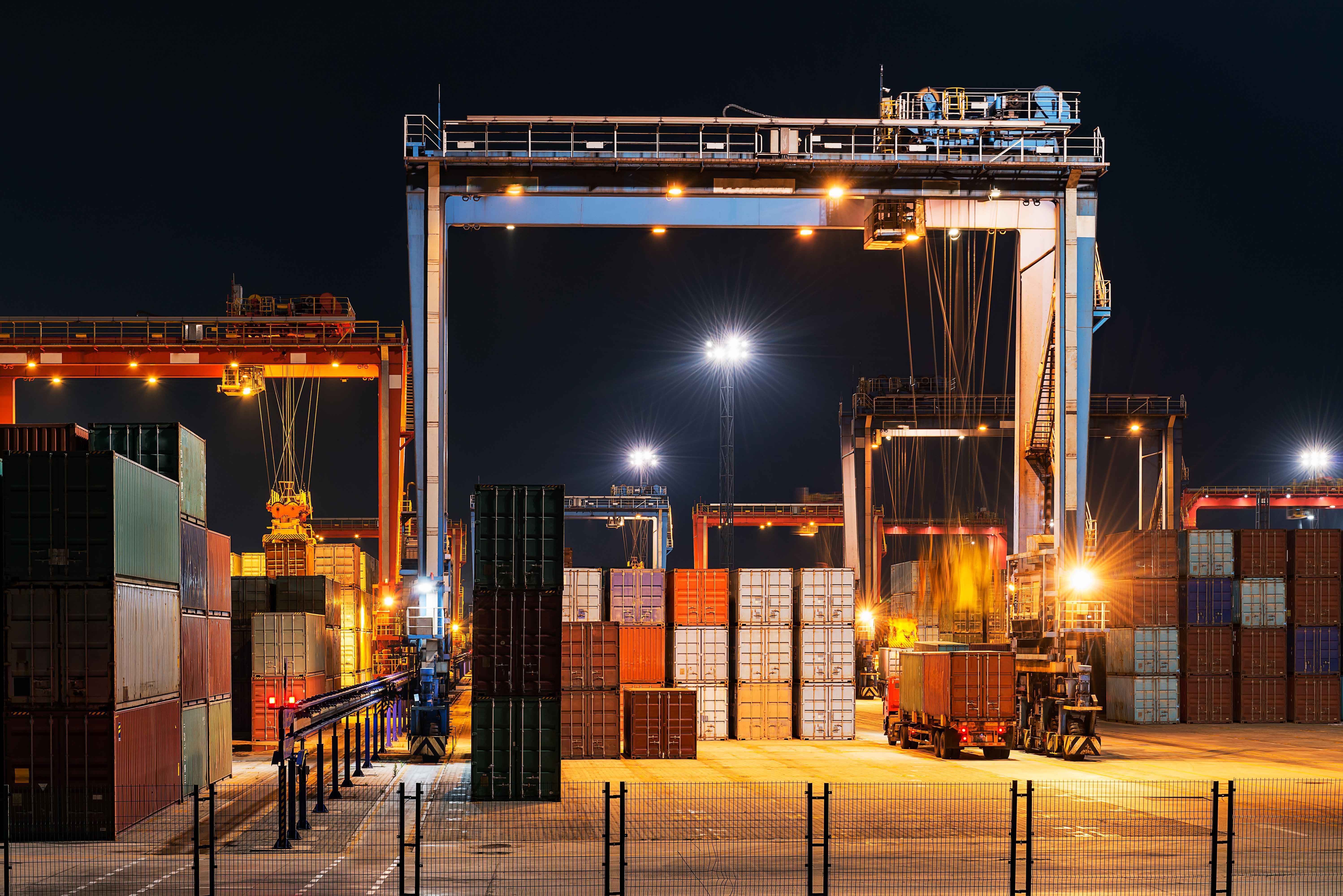
According to Supply Chain Dive:
Material shortages are curtailing construction's recovery before it's even gotten started.
While contractors are still optimistic about projects coming back online in the second half of 2021, and the Architectural Billings Index, a key leading indicator of demand, notched up its first two-month win streak since the beginning of the pandemic, one leading construction economist has now pushed out recovery until at least next year.
"I think the nonresidential construction market, as measured by spending and probably headcount, will stay flat," said Ken Simonson, chief economist for the Associated General Contractors of America, during a webinar this month. "It will be 2022 before I expect a significant increase."
He cited spiking material prices and shortages, continued supply chain bottlenecks and hesitancy among owners to build in the current environment as reasons why.
First-quarter quagmire
Material costs and supply chain issues are taking the wheels off the recovery, even before they get rolling. Q1 2021 results have already started to paint a bleak picture.
According to Dodge Data & Analytics, supply chain delays took a heavy toll on civil contractors in the first quarter, with nearly three quarters experiencing serious issues getting materials to projects. Moreover, more than three quarters of civil contractors are now concerned with cost increases for construction materials over the next six months, whereas about half had similar concerns in late 2020.
US contractors' concern over the cost of construction materials has grown
Respondents to recent Dodge Data & Analytics surveys have expressed growing worries about the cost of construction materials.
Those results caused Dodge, which has been tracking construction data for more than 100 years, to question how quickly recovery will come.
"While it is unclear whether this would impact the large infrastructure investments currently recommended by the Biden administration, they may impact the degree to which the civil construction sector can successfully bounce back in the first half of 2021," the Dodge report read.
Leveraging technology
Contractors are taking various approaches to keep projects moving forward in the face of these challenges.
Some are scaling back the initial phases, to make use of the equipment and materials they can get. Others are changing the sequencing of their builds to put the materials they already have in place first. Still, some are using technology to track what supplies they have where to plan accordingly.
Take Matt Gramblicka at Graham Construction & Engineering, based in Calgary, Ontario in Canada, which focuses on commercial construction throughout the U.S. and Canada. As vice president of information technology and enterprise applications, Gramblicka has been trying to leverage technology to stay one step ahead of supply chain and material challenges.
Where projects had been booming in Alberta in Canada pre-pandemic, he's seen a shift to Seattle and Ontario, simultaneously, since then. That has caused him to have to pivot to get more equipment and materials in those markets from the suppliers who have them.
"It's really about having visibility into where that market shift is, and making sure that we have the right connections with people to actually get the supply in the first place," Gramblicka said.
--
LFS keeps you updated with the latest news, if you need additional information about our freight shipping solutions, contact us or follow us on Linkedin.
For cargo insurance experts, please contact Skholl, our partner to avoid any freight damage.
--
By: Supply Chain Dive
May 17, 2021

According to SupplychainDive:
During the pandemic, when many consumers opted to stay clear of physical stores, the importance of having a loyal customer base grew. And so, keeping customers engaged through rewards and highly personalized experiences was top of mind for many retailers.
Keeping loyal customers meant retailers also had to invest in tools that made their supply chain more efficient and their delivery faster while also grappling with sustainability. Retailers looked to fund micro-fulfillment centers and on-demand delivery methods in recent months.
Target has been running trials on a faster delivery method using its sortation center in Minneapolis. Walmart recently invested in Cruise — an autonomous vehicle startup — to help the retailer develop a low-cost last-mile delivery ecosystem. Meanwhile, grocery store Albertsons was testing an automated micro-fulfillment technology in late March.
"With more e-commerce fundamentals in place, retailers and brands are turning their attention to tools to manage online content and reach consumers more efficiently across digital platforms," the report said.
Tech investments in retail accelerated in mid-2020 during the pandemic, and the report shows that it doesn't appear to be slowing down this year as in-store traffic returns.
In fact, the report predicts executives will integrate more technology to improve the shopping experience throughout the consumer journey on both online and in-store channels.
The number of times retailers mentioned the word "omnichannel" during earnings calls increased from less than 100 in the first quarter of 2016 to over 400 for the same period in 2021.
--
LFS keeps you updated with the latest news, if you need additional information about our freight shipping solutions, contact us or follow us on Linkedin.
For cargo insurance experts, please contact Skholl, our partner to avoid any freight damage.
--
By: SupplyChainDive
May 17, 2021
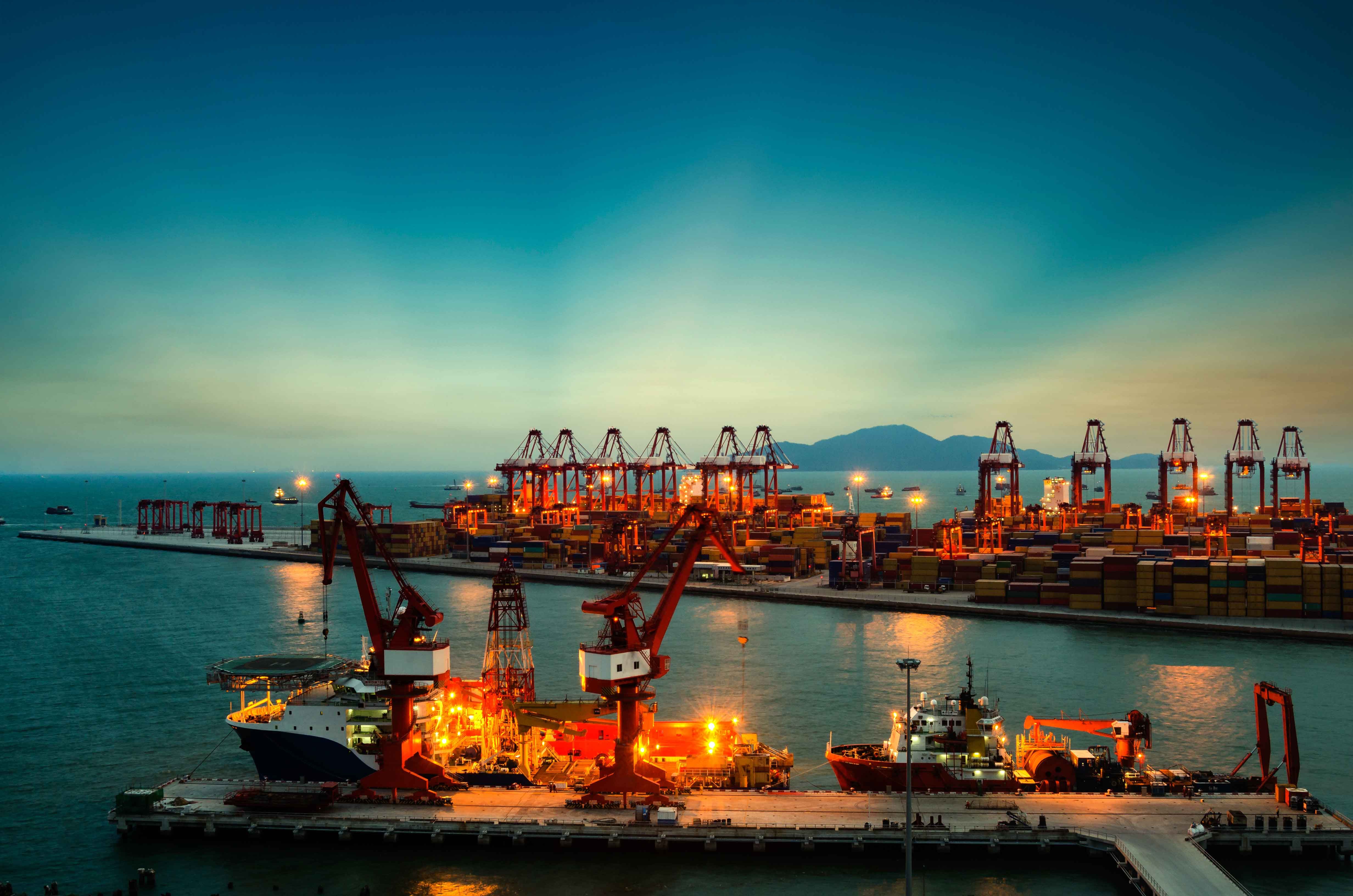
According to Container News:
There are signs of a reduction in the backlog of ships waiting to get into major US ports, but chronic congestion is moving inland, threatening further headaches for carriers seeking to redress the global equipment imbalance, said online freight forwarder Flexport.
While the number of vessels waiting to dock in Los Angeles/Long Beach has dropped below 20 for five consecutive days, getting boxes in and out of the terminals is becoming one of the key bottlenecks according to Flexport’s trucking procurement manager, Adam Parish.
“Terminals have longer waiting times and this translates into fewer boxes being moved a day. Drivers used to be able to move seven-eight boxes a day. This is now maybe two-three and in some ports like Los Angeles drivers might move one or two in a typical day,” he said.
Parish said drayage carriers were reporting a 40% decrease in productivity on the US east coast ports. Drayage rates have spiked as it becomes more difficult to get boxes in and out of the country’s leading terminals.
“Ocean imports are up 15-20% and the US just doesn’t have the infrastructure to operate with that sort of growth,” said Parish.
As well as delays getting boxes into and out of the terminals, there is a widespread shortage of chassis with an average street dwell time of 17 days inland causing “chronic issues” at the ports and contributing to the ongoing issue of mounting demurrage fees being billed to shippers.
"Issues around unreasonable detention and demurrage continue to plague the trucking and shipping community,” said Weston LaBar, CEO of the Harbor Truckers Association. “Many of the challenges we have experienced for the last year continue to be an issue today and the bills keep piling up," he said. Last year delays in the ports of Los Angeles/Long Beach and New York/New Jersey cost shippers and freight forwarders US$150 million in demurrage fees.
Delays are expected to persist throughout May as the consequences of the Suez shutdown continue to be felt throughout the supply chain. “This level of delay means trucking equipment is as tight as ocean equipment. It’s getting close to gridlock,” said Parish.
Flexport’s senior associate for trade lane management, Rohit Kundurthi, said even the most optimistic scenario would see the tight supply being felt until Golden Week in October. Flexport is preparing for a “Tsunami” of cargo due to hit US ports in the next month.
The blockage of the Suez Canal resulted in liner capacity to US east coast and west coast ports being reduced by 16% to Los Angeles/Long Beach, 23% to Seattle and Vancouver, and 20% on the US east coast ports, but there has been no slowdown in demand from US consumers leading to a backlog of cargoes that needs to be delivered next month, said Kundurthi.
He added there were 3 million TEU of import cargoes moving to the US on all the main trade lanes in March, up 80% year-on-year. Imports from Asia to the US hit 1.7m TEU in the same month, compared to 1m TEU in March 2020.
The surge in volumes was placing strain on all inland transport modes as desperate shippers explored all options to get cargoes to their final destinations. Severe congestion and bottlenecks were being felt in supply chains to all the major cities, said Parish. “Rail transit times had increased 300%-400% in the last three-four weeks.”
Joanna Zhang, Flexport’s manager for Ocean Trade Lane Management transpacific eastbound said that there was little that can be done to alleviate the problems being felt for shippers other than tightening up on forecasting of volumes - to become a more reliable client for shipping lines - exploring the option of transloading containers between the different intermodal options and being open to using less than container loads as a way to ship urgent cargoes to destination.
--
LFS keeps you updated with the latest news, if you need additional information about our freight shipping solutions, contact us or follow us on Linkedin.
For cargo insurance experts, please contact Skholl, our partner to avoid any freight damage.
--
By: Container News
May 3, 2021

Today, we have been recognized as part of The Financial Times list of The Americas’ Fastest Growing Companies 2021. This prestigious award is presented by The Financial Times and Statista Inc., the world-leading statistics portal and industry ranking provider.
The Americas’ Fastest Growing Companies is comprised of the enterprises that contribute most heavily to economic growth, which was announced today and can currently be viewed on the FT website.
Out of the millions of active companies in North and South America, only 500 firms were awarded in the list, and we are ecstatic to be recognized as one of FT’s inaugural list of The Americas’ Fastest Growing Companies 2021.
We want to congratulate our team and thank the growing number of customer who trust us with their logistics.
THANK YOU!.
LFS.
By: LFS Marketing
April 13, 2021
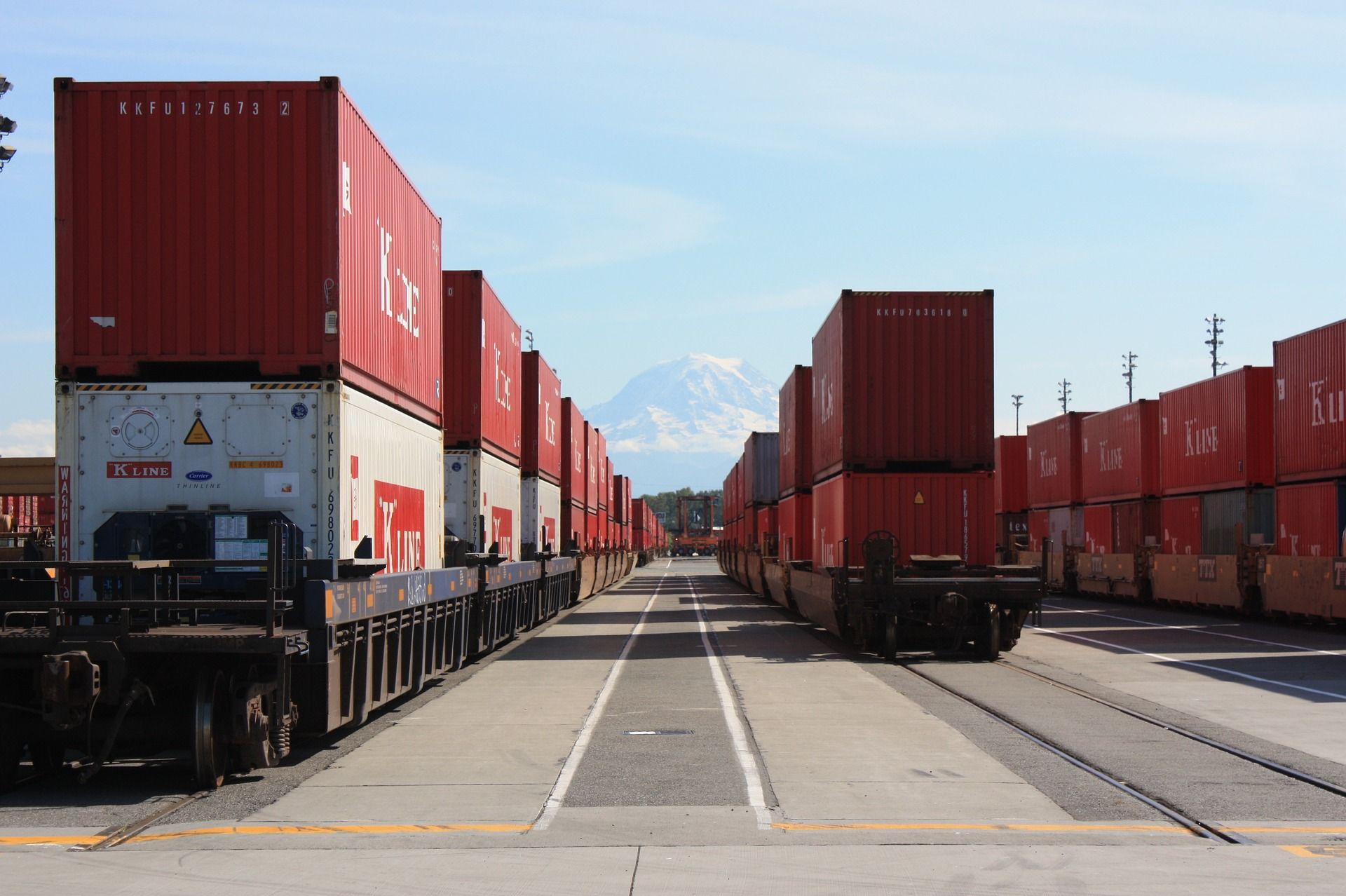
According to JOC.com:
The cost differential between intermodal rail and truckload shipping is greater than at any point since 2014, but shippers have largely been unable to capitalize on any potential savings because of inconsistent rail capacity in the first quarter, according to intermodal marketing company (IMC) executives who spoke to JOC.com.
Shortages of containers, chassis, terminal appointments, and draymen limited freight rail capacity in major intermodal markets such as Chicago, Dallas, Memphis, Jacksonville, and Kansas City at various points throughout the first three months of 2021. If it weren’t for those labor and equipment issues, an average shipper could have saved 33 percent on contract intermodal business and 28 percent on the spot market last month compared with trucking, according to the latest reading of the JOC Intermodal Savings Index.
Realizing those savings, however, requires patience. Rail dwell times on Norfolk Southern Railway have risen to between 12 and 24 days at the Port of New York and New Jersey, according to a chemical shipper. Railroads have reported a 32 percent increase year over year in the number of intermodal cars idling for more than 48 hours in the last six weeks compared with the same period in 2020, according to weekly filings with the US Surface Transportation Board.
NS, for example, reported 113 intermodal cars did not move for more than 48 hours between March and the second week of April 2020. This year, NS said 1,296 cars were idle during the same six-week period. Union Pacific Railroad reported an increase from 284 cars last year to 860 this year. BNSF Railway, meanwhile, had 5,293 cars idle during the period, 66 fewer cars than in the previous year.
At the same time, domestic intermodal volume is up 7.7 percent between June 2020 and February 2021 compared with the same nine months a year prior, according to the Intermodal Association of North America. Until February, domestic intermodal volume had risen on a year-over-year basis for eight consecutive months, and demand is likely to return to positive growth again in March thanks to more favorable comparisons during COVID-19 lockdowns that began in March 2020.
The railroads are in a difficult position; metering how many containers move per day causes boxes to idle longer in busier times, but running more trains could exacerbate the already overtaxed chassis and drayage network, the IMCs acknowledged.
Shippers that don’t want to wait have turned to longhaul drayage or one-way truckload, paying record-high spot market rates that are above $10,000 in some cases.
“We have so many potential opportunities based on low prices today, but it’s a struggle to find the capacity. We are consistently inconsistent on service,” said Rick LaGore, CEO of InTek Freight and Logistics.
Containers, appointments, and drivers are hard to get
Chad Schilleman, intermodal specialist with Watco Companies, an IMC, said draymen, chassis providers, IMCs, and railroads are doing the best they can in a tough situation.
“We're seeing waves of available appointments, container availability, and dray power. It's just going in waves across the US, so some weeks you can find capacity, and the next week, nothing,” he said.
UP and CSX Transportation require appointments to bring in containers, but two IMC executives based on the West Coast who did not want to be identified said they were having difficulty securing appointments in Portland, Oregon; Lathrop, California; Chicago, and Seattle.
CSX told JOC.com in January its reservation system is designed to “align terminal capacity with train capacity” and “to maintain a fluid network,” which is why appointments may be unavaiiable for a few days on high-volume lanes.
Finding railroad-owned 53-foot containers — known as UMAX and EMP boxes — has also been challenging, according to the two West Coast IMCs. Because it’s difficult to get an empty UMAX or EMP container directly from the railroad in Chicago, Los Angeles, Lathrop, Portland, and Seattle, both said they are street turning containers, a cumbersome and inefficient process. Street turning refers to reusing an empty container of one shipper for another shipper, rather than returning the box to the railroad, which often requires the IMC to arrange for a second truck to move the container from the first shipper to the second.
Even for shippers able to secure a container and an appointment, their cargo can’t get to the railyard without a drayage driver. Finding those drivers has become far more difficult of late, as a rise in truckload spot rates and a growing number of load posts for expensive longhaul drayage have trimmed the local driver pool, Schilleman said.
With turn times up in 16 out of 18 terminals in Chicago, according to the Illinois Trucking Association, drivers are getting fewer jobs done per day and placing a premium on price, according to draymen. They also have their choice of what jobs to accept because there is so much freight to deliver.
Equipment problems on key ramps
Draymen have reported equipment issues in Atlanta, Charlotte, Chicago, Jacksonville, Memphis, and Kansas City since late December, several of which were on the NS network. Some have been related to chassis shortages, while others have been related to malfunctioning cranes, which tend to happen during a polar vortex, snowstorm, or widespread power outage, all of which took place across the US during the first quarter.
In February, UP and BNSF had to ground containers in a number of cities because of a chassis shortage affecting both international and domestic loads. Chassis shortages frustrate drivers, who are paid per completed job rather than on a per-mile or hourly basis, and shippers, who are ultimately responsible for paying any rail demurrage (storage) penalties.
Chassis providers have said a combination of record volume and rail networks being hampered by severe winter storms in February have caused the equipment shortages in those cities.
--
LFS keeps you updated with the latest news, if you need additional information about our freight shipping solutions, contact us or follow us on Linkedin.
For cargo insurance experts, please contact Skholl, our partner to avoid any freight damage.
--
By: LFS Marketing
April 13, 2021

According to Transport topics:
The Biden administration is prioritizing the Gateway rail tunnel project between New York City and New Jersey with urgency because of its “national significance” to the economy, Transportation Secretary Pete Buttigieg told lawmakers.
“This is a regional issue, but one of national significance because if there were a failure in one of those tunnels, the entire U.S. economy would feel it,” Buttigieg told members of the House Transportation and Infrastructure Committee on March 25.
Buttigieg provided lawmakers with his first update of the project, stalled by former President Donald Trump who in 2018 threatened to shut down the government if a spending bill directed federal funding for the tunnel. Gateway was ineligible for federal taxpayer money, the Trump administration said, because New York and New Jersey hadn’t pledged enough cash.
Buttigieg said the Federal Rail Administration and Federal Transit Administration are working with New Jersey Transit and the Port Authority of New York and New Jersey, as well as with Amtrak and the Gateway Development Commission, on updates to a draft environmental impact statement issued in 2017.
The impact statement is “a big part of what needs to be completed in order to get there,” Buttigieg said. The process involves reviewing anything that might have changed since the draft was issued, and coordinating with other federal agencies such as the U.S. Army Corps of Engineers, as well as state agencies that might have jurisdiction, he said.
Angelo Roefaro, a spokesman for Senate Majority Leader Chuck Schumer, said Buttigieg has indicated to the New York Democrat that the environmental review will be approved in May.
The Transportation Department did not immediately respond to a request for comment on the timeline for approval of the Gateway environmental review.
The tunnel would carry Amtrak and New Jersey Transit commuter trains under the Hudson River. Amtrak said it will allow for twice as many trains to run under the Hudson River, including those that are part of its Northeast Corridor service that connects Boston, New York and Washington.
Buttigieg’s comments came in response to a question from Representative Albio Sires, a New Jersey Democrat. “I represent a district in New Jersey with a lot of old infrastructure,” he said. “We have two tunnels — two commuter tunnels that are over 100 years old.”
“During Superstorm Sandy, a lot of salt water got into these tunnels and now the salt water is eating the cement,” Sires said. “I’m concerned that if we don’t address this issue, it’s going to be catastrophic.”
The corridor serves a region that’s home to 17% of the U.S. population, is home to some 97 Fortune 500 company headquarters, and contributes 20% of the national gross domestic product, Sires said.
Buttigieg said the Biden administration is fully engaged on expediting the Gateway Project, but there’s much that needs to be done before any ground is broken.
“The FTA is working closely with project sponsors as it advances through the capital investment grant process prescribed in law, which is obviously an important part of the picture when it comes to funding,” Buttigieg said.
The Gateway Development Commission said in a statement after the hearing, “We applaud Secretary Buttigieg’s public commitment to the Gateway Program, particularly confirming that the Hudson Tunnel Project is a project ‘of national significance’ and setting a rapid timeline for completing the project’s environmental review.”
The commission said it is working with local and federal partners to complete the environmental review and improve the project’s grant rating “so we can start full construction and finally replace a 110-year-old one-track-in one-track-out, delay-prone tunnel with a 21st-century rail link between New York, New Jersey and the rest of the Northeast Corridor.”
--
LFS keeps you updated with the latest news, if you need additional information about our freight shipping solutions, contact us or follow us on Linkedin.
For cargo insurance experts, please contact Skholl, our partner to avoid any freight damage.
--
By: LFS Marketing
March 29, 2021
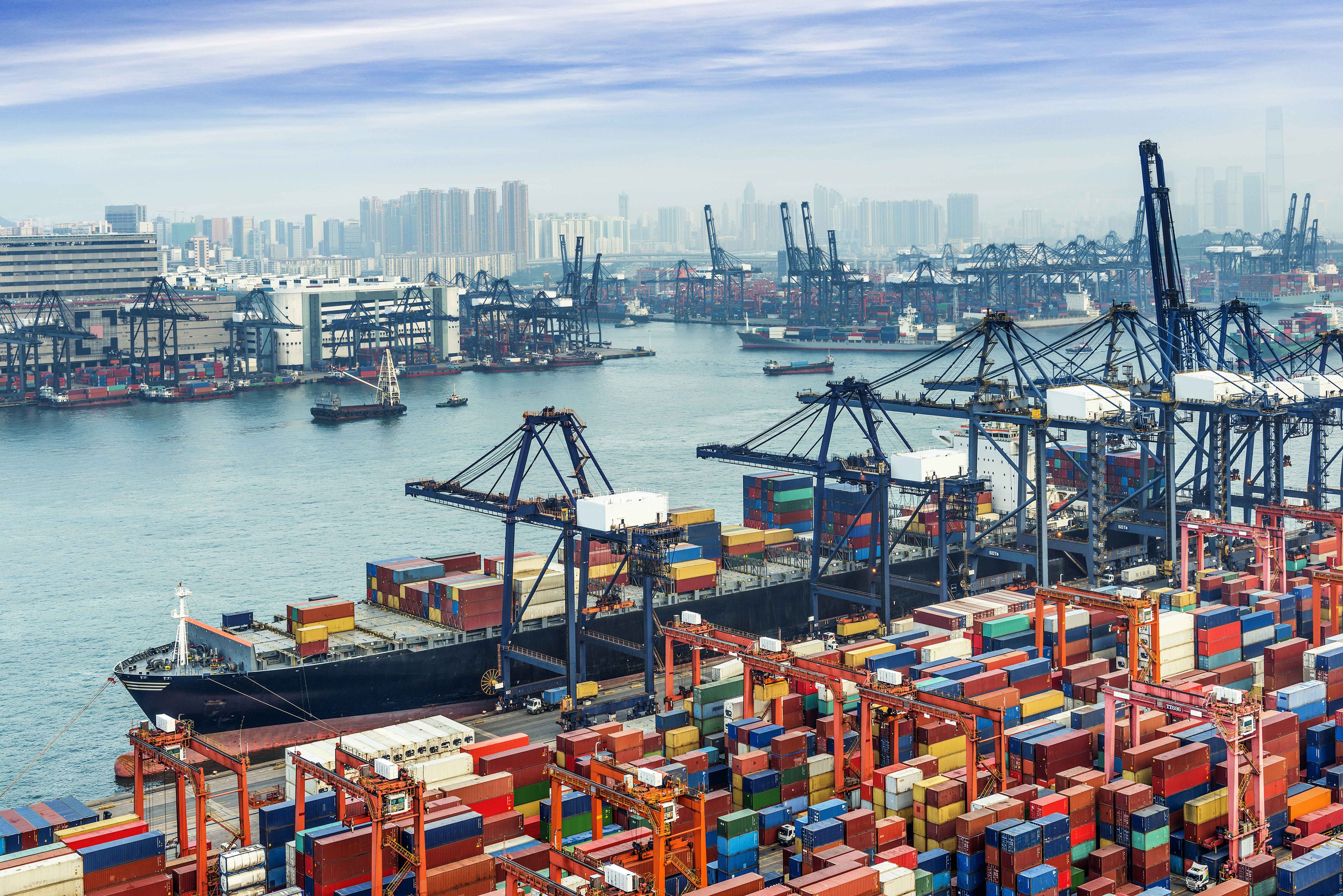
According to Transport topics:
Ship congestion outside the biggest U.S. gateway for Asian imports worsened from a week ago, highlighting a headwind facing American companies just as a pileup around the Suez Canal had threatened to tangle Europe’s supply chains.
A total of 26 containerships were anchored waiting to offload at the twin ports of Los Angeles and Long Beach, Calif., as of March 28, compared with 20 a week earlier though still below a peak of 40 in early February, according to officials who monitor marine traffic in San Pedro Bay. Another 20 are scheduled to arrive over the next three days, with 14 of those expected to drop anchor and join the queue.
The average wait for berth space was 7.9 days, compared with 7.7 days a week ago, according to the L.A. port. That figure had reached 8 days in February, which was about triple the average delay in November.
The bottleneck, which started to form in late October, has been tough to clear because of shortages of both equipment and labor needed to handle an unprecedented wave of imports. American companies are trying to pad inventories as consumers buy more goods online.
Combined, the L.A. and Long Beach ports handled 1.59 million inbound 20-foot containers in the first two months of 2021, up about 29% from the same span a year earlier. March is typically one of the slowest months for imports, but the steel boxes this year keep coming.
RELATED: February Container Volume High at Most Ports
Meanwhile, disruptions may only worsen and container rates globally may stay elevated in coming weeks as the ocean freight market tries to smooth out a logjam involving about 450 ships around the Suez Canal, where a vessel had been blocking transit in both directions since March 23.
The ship, the Ever Given, was re-floated early March 29, though it wasn’t immediately clear how soon the waterway would reopen.
--
LFS keeps you updated with the latest news, if you need additional information about our freight shipping solutions, contact us or follow us on Linkedin.
For cargo insurance experts, please contact Skholl, our partner to avoid any freight damage.
--
By: LFS Marketing
March 29, 2021
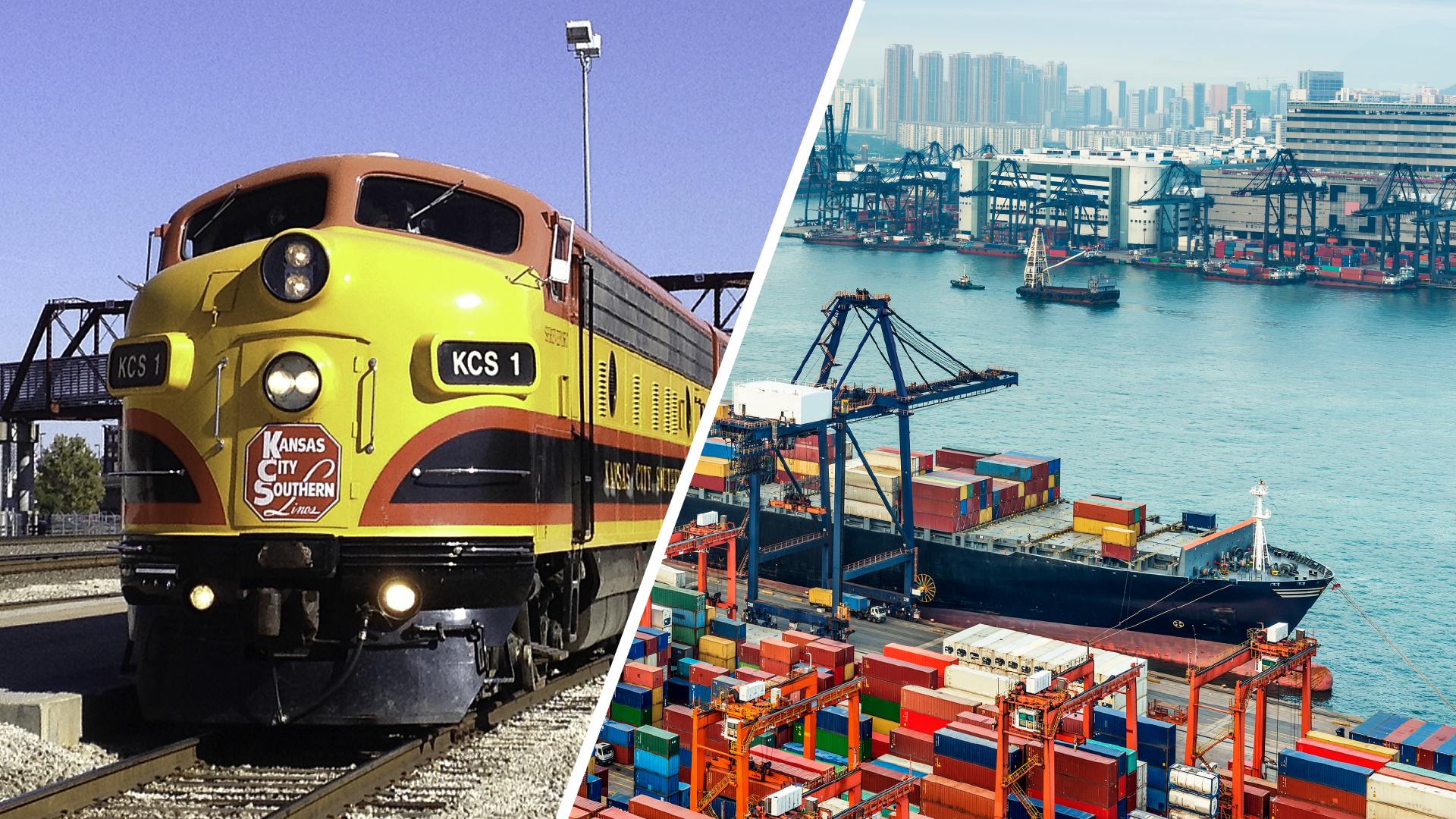
According to Freightwaves:
Kansas City Southern expands Mexico rail service
The proposed $29 billion merger between Canadian Pacific (NYSE: CP) and Kansas City Southern (NYSE: KSU) aims to capitalize on an expected increase in the flow of trade among the U.S., Canada and Mexico.
The merger would create the first company with a rail network spanning all three countries and enhance the facilitation of the movement of goods across the three nations.
“The new competition we will inject into the North American transportation market cannot happen soon enough, as the new United States-Mexico-Canada Agreement (USMCA) trade agreement among these three countries makes the efficient integration of the continent’s supply chains more important than ever before,” Keith Creel, CP president and CEO, said in a statement announcing the proposed merger.
The proposed CP-KCS merger comes against the backdrop of Kansas City Southern’s $167 million investment in Mexico last year.
Kansas City Southern de México (KCSM), KCS’ Mexican operations, include railways serving northeastern and central Mexico as well as key port cities including Veracruz, Tampico and Lazaro Cardenas.
One of KCS’ major projects was the completion of part of a 12.11-mile double-track line that connects Mexico’s port of Veracruz on the Gulf of Mexico.
KCSM ran the first revenue train over the new double-track access into the expanded Port of Veracruz in February, company spokeswoman Doniele Carlson told FreightWaves.
“This new rail infrastructure is anticipated to make the port more competitive and productive for imports from the U.S., South America and Europe,” Carlson said. “The project was completed in coordination with the Integral Port Administration of Veracruz (APIVER) to improve rail and ship asset utilization, efficiency and connectivity. Before the bypass, KCSM did not have direct access into the Port of Veracruz.”
The 12.11-mile rail connection starts at KCSM’s Santa Fe connection point in the state of Veracruz, which is already covered by the company’s rail network, and extends to the expanded Port of Veracruz.
The Mexican government invested over $19 million to build two new terminals at the Port of Veracruz last year. Veracruz is a key strategic point for trade on Mexico’s east coast as well as the largest seaport located near Mexico City.
“KCSM’s new rail connection is part of a large expansion carried out by the [Veracruz] port authority, including the construction of new intermodal, refined products, grain, automotive and general merchandise terminals,” Carlson said. “Direct access into the new terminal complex will allow KCSM to grow its business between central Mexico and the historically important port of Veracruz.”
Carlson said KCS will continue to focus on more capacity projects during 2021, including beginning construction on a second international rail bridge at the Laredo, Texas-Nuevo Laredo, Mexico, border crossing.
After dipping in late February from the winter storm, Laredo outbound domestic intermodal volume (ORAILDOM.LRD) have risen above year-ago levels.
(Chart: FreightWaves SONAR. Using a seven-day moving average, domestic loaded intermodal container volume outbound from Laredo is shown for 2021, 2020 and 2019 in blue, green and orange, respectively.)
KCS’ route through Laredo connects to Mexico City as well as the ports Veracruz, Tampico and Lazaro Cardenas.
“Today, KCS processes an average of 26 trains in a 24-hour period. Adding the second bridge will enable the Laredo gateway to accommodate 65 to 80 trains per day,” Carlson said. “KCS continues working with relevant government entities on permitting while doing preliminary design work toward a second cross-border bridge at Laredo.”
Furniture maker expands in Laredo
Palliser Furniture Upholstery Ltd. recently leased 117,191 square feet of manufacturing and logistics space at the Sophia Industrial Park in Laredo, Texas.
“We simply outgrew our old location. We were spread out amongst multiple buildings and this move allows us to merge our facilities into a single location in Laredo,” Mike Hofmann, COO of Palliser, said in a release.
Palliser Furniture recently moved into a 117,191-square-foot manufacturing and distribution facility in Laredo, Texas. (Photo: Forum Commercial Real Estate)
Palliser Furniture is based in Winnipeg, Canada. The company has operations in Canada, the U.S. and Mexico and employs more than 2,000 people.
Palliser’s new building is located on 20 acres just off Interstate 35 and about 10 miles from the World Trade Bridge. It was developed by Humphrey Development, a new branch of Gontor Group, an international trade company primarily providing customs and logistics services in North America.
“Our vision was to be ready for a tsunami of logistics operations that the Laredo corridor will experience in the next couple years because of the updated United States-Mexico-Canada Agreement,” Alejandro Gonzalez, COO of Humphrey Development, said. “We envisioned a need for a new real estate development in the area that could service multinational companies.”
Vitromex USA, a tile manufacturer headquartered in Saltillo, Mexico, also recently moved into a 230,900-square-foot building at the Sophia Industrial Park.
“This new location is exceptionally larger, allowing us for increased inventory capacity,” Virgilio Ayala, Vitromex USA’s operations manager, said.
PGT Trucking opens new terminals in Arizona and Arkansas
PGT Trucking Inc. recently announced the opening of facilities in Phoenix and Fort Smith, Arkansas.
The addition of the Phoenix terminal and the relocation of the Poteau, Oklahoma, staff to Fort Smith will allow the company to expand its transportation services, according to company officials.
“We are excited to offer additional shipping solutions into the Southwest by way of our new Phoenix location,” Chad Marsilio, COO of PGT, said in a release.
The Phoenix terminal is located near the Phoenix Sky Harbor International Airport at 2625 E. Air Lane.
PGT Trucking, founded in 1981, is based in Aliquippa, Pennsylvania. The multiservice transportation firm offers flatbed, dedicated, international and specialized services.
PGT operates about 1,000 power units and over 1,500 trailers serving the steel, machinery, oil and gas, raw materials, aluminum and automotive industries.
CBP seizes $1.4M in drugs in Laredo
U.S. Customs and Border Protection (CBP) in Laredo, Texas, seized over 70 pounds of methamphetamine in two separate, unrelated incidents.
The first case occurred March 18 at Laredo’s World Trade Bridge cargo facility. CBP officers were checking a tractor hauling a shipment of multipurpose rock panel paste from Mexico. The officers discovered four containers with 48.58 pounds of alleged methamphetamine inside. The narcotics have an estimated street value of $971,787.
The second seizure occurred March 19 also at the World Trade Bridge. Officers checking a tractor-trailer manifesting a fiberglass decorative figure from Mexico discovered 23 pounds of alleged methamphetamine. The narcotics had an estimated street value of $451,502.
The narcotics have a combined street value of $1.4 million.
CBP seized the narcotics and the cases were turned over to Homeland Security Investigations.
--
LFS keeps you updated with the latest news, if you need additional information about our freight shipping solutions, contact us or follow us on Linkedin.
For cargo insurance experts, please contact Skholl, our partner to avoid any freight damage.
--
By: LFS Marketing
March 29, 2021
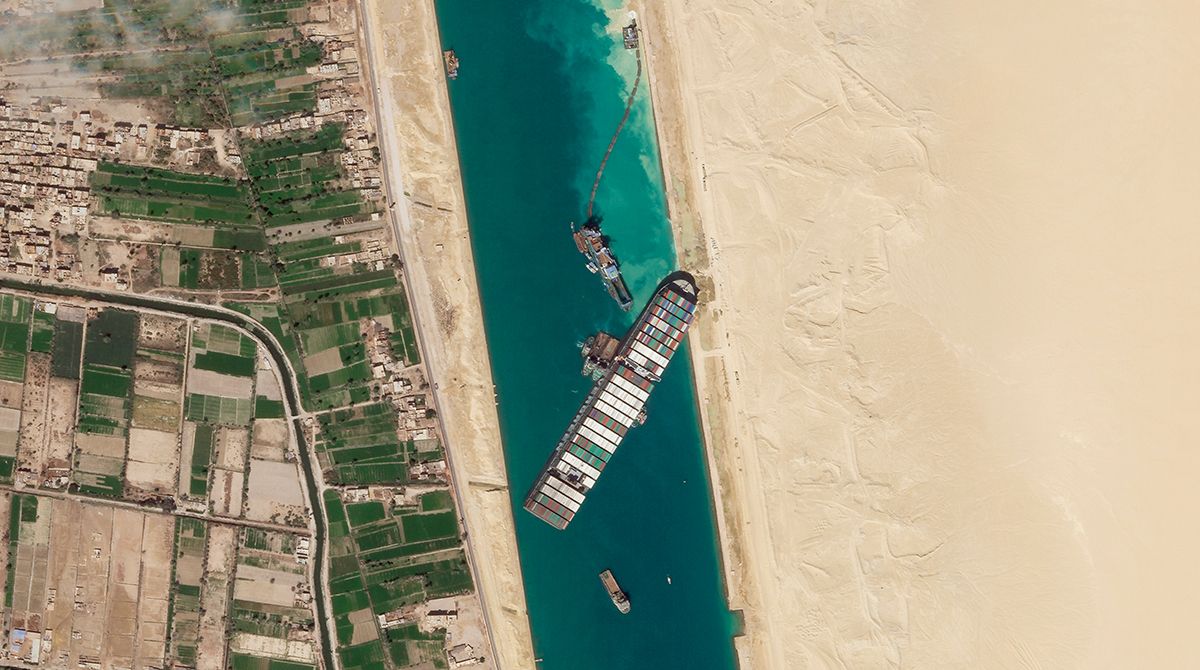
According to Transport topics:
SUEZ, Egypt — Workers have successfully set free a colossal containership that for nearly a week has been stuck sideways across the Suez Canal, one of the world’s most crucial arteries for trade, a canal service provider said.
Leth Agencies said that the vessel had been refloated on March 29. Helped by the peak of high tide, a flotilla of tugboats managed to wrench the bow of the skyscraper-size Ever Given from the sandy back of the crucial waterway, where it had been lodged since March 23.
Tugboats were pulling the vessel toward the Great Bitter Lake, in the middle of the waterway, where it will undergo inspections.
On March 23, the 220,000-ton Ever Given got stuck sideways in the crucial waterway, creating a massive traffic jam. The obstruction has held up $9 billion each day in global trade and strained supply chains already burdened by the coronavirus pandemic. At least 367 vessels, carrying everything from crude oil to cattle, still were waiting to pass through the canal, while dozens were taking the lengthy alternate route around the Cape of Good Hope at Africa’s southern tip — a detour that costs ships hundreds of thousands of dollars in fuel and other costs.
With canal transits stopped, Egypt already has lost more than $95 million in revenue, according to data firm Refinitiv. Still, clearing the backlog of ships waiting to pass through the canal could take more than 10 days, Refinitiv added.
The freeing of the vessel came after intensive efforts to push and pull the vessel with 10 tugboats when the full moon brought spring tide, Leth Agencies said, raising the canal’s water level. Videos shared widely on social media showed tugboats in the canal sounding their horns in celebration.
Even as salvage work was ongoing, Egyptian President Abdel Fattah el-Sissi portrayed the development as a victory in his first comments on the stranded vessel.
“Egyptians have succeeded in ending the crisis,” he wrote on Facebook.
The price of international benchmark Brent crude dropped some 2% to just over $63 on the news.
An Egyptian TV channel aired live footage of five tugboats with ropes around the ship’s bow, their engines churning, struggling to nudge it away from the shore. Weather forecasts showed strong winds, gusting up to 20 mph.
Shoei Kisen Kaisha Ltd., the vessel’s owner, said that the ship’s engine was functional and would head north. It wasn’t decided whether the Panama-flagged, Japanese-owned ship, would continue to its original destination of Rotterdam, Netherlands. or if it will need to enter another port for repairs, the Shoei official said. The vessel will undergo technical examination at Great Bitter Lake, a wide stretch of water halfway between the north and south end of the canal, according to canal authorities.
Ship operators did not offer a timeline for the reopening of the canal, which carries more than 10% of global trade, including 7% of the world’s oil. Millions of barrels of oil and liquefied natural gas flow through the artery from the Persian Gulf to Europe and North America.
The unprecedented shutdown had threatened to disrupt oil and gas shipments to Europe from the Middle East and raised fears of extended delays, good shortages and rising costs for consumers.
Canal authorities had desperately tried to free the vessel by relying on tugs and dredgers alone, even as analysts warned that 400-meter-long ship may be too heavy for such an operation. Fears had grown that authorities would be forced to lighten the vessel by removing the ship’s 20,000 containers — a complex operation, requiring specialized equipment not found in Egypt.
DeBre reported from Dubai, United Arab Emirates. Associated Press writers Mike Corder at The Hague, Netherlands; Mari Yamaguchi in Tokyo and Jon Gambrell in Dubai, United Arab Emirates, contributed to this report.
--
LFS keeps you updated with the latest news, if you need additional information about our freight shipping solutions, contact us or follow us on Linkedin.
For cargo insurance experts, please contact Skholl, our partner to avoid any freight damage.
--
By: LFS Marketing
March 29, 2021
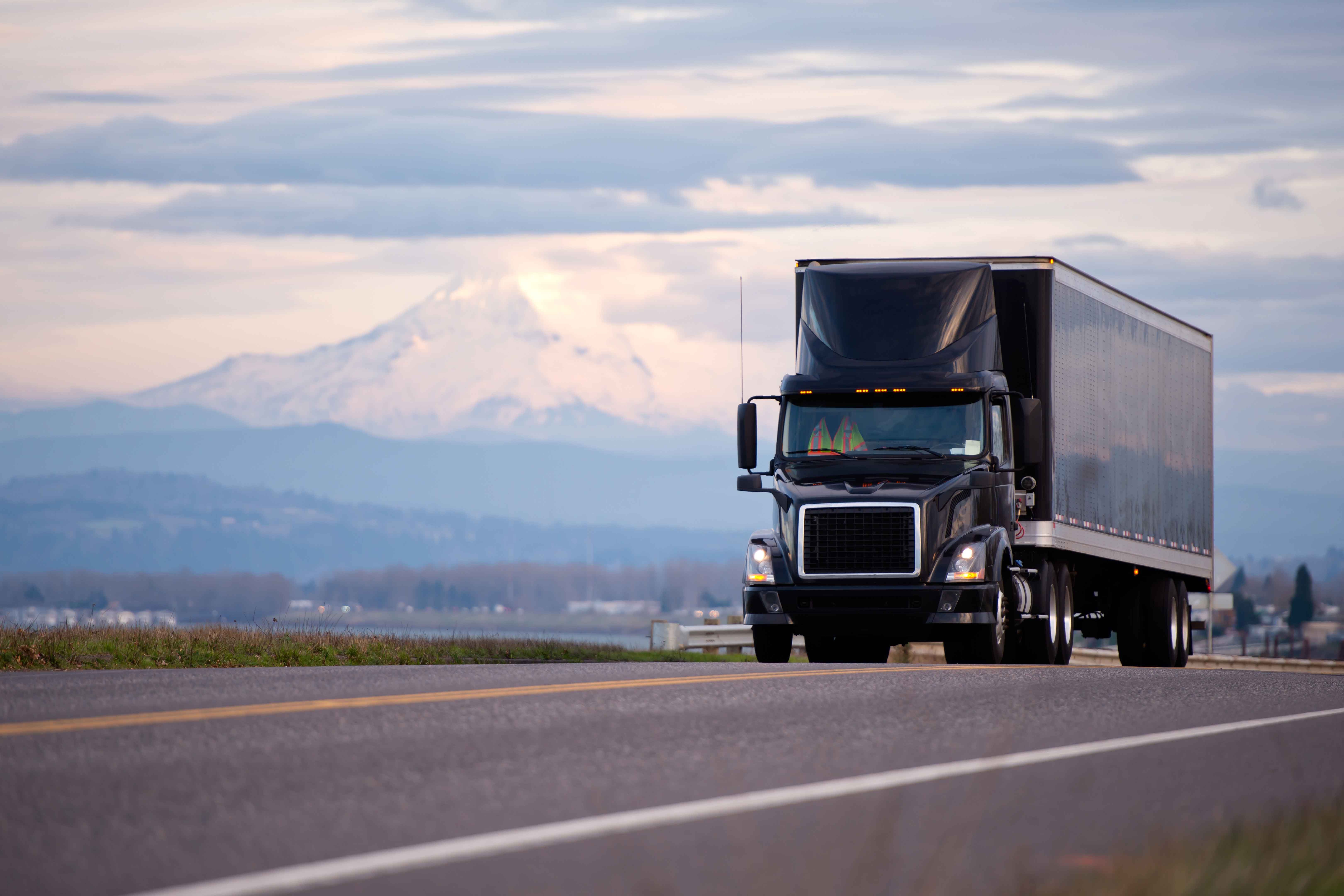
According to Transport topics:
Severe winter weather took a toll on truck tonnage in February, according to American Trucking Associations.
The ATA For-Hire Truck Tonnage Index for the month declined a seasonally adjusted 5.9% to 110 compared with 119.1 a year ago, and fell 4.5% compared with January. That month, the index measured 115.2.
For purposes of the index, the year 2015 = 100.
ATA Chief Economist Bob Costello said the February declines are more an indication of the troubles trucking companies faced during winter storms that hit the country last month than they are a sign of weak economic conditions. “February’s drop was exacerbated — perhaps completely caused — by the severe winter weather that impacted much of the country during the month,” Costello said. “Many other economic indicators were also soft in February due to the bad storms, but I continue to expect a nice climb up for the economy and truck freight as economic stimulus checks are spent, and more people are vaccinated.”
For almost a week in February, large parts of Texas and other southern states battled freezing temperatures, snow and ice that caused severe damage to the Texas power grid and left millions of people without electricity. While the power has been restored, State College, Pa.-based media company AccuWeather Inc. estimates the storm’s total economic damage at $130 billion in Texas alone. That figure is up from its earlier estimate of between $50 billion to $60 billion. For the entire nation, it estimates $155 billion in losses.
“In February, we saw one of the most intensely cold and stormy patterns of winter weather not seen in decades, with extreme record low temperatures and ice spread out across a very large area in multiple states,” AccuWeather CEO Joel Myers said in a statement.
He noted that Texas “bore the brunt of the impact,” with lives lost, power outages, water disruptions, burst pipes and, from a business perspective, destroyed citrus crops.
While FedEx Corp. announced record fiscal third-quarter earnings on March 19, the Memphis, Tenn.-based company noted the February weather took a $350 million bite out of its operating income as storms impacted operations at its Memphis headquarters and FedEx Express hubs in North Texas and Indianapolis.
Costello told Transport Topics on March 18 that he is especially optimistic about the prospects for the U.S. economy in the second half of 2021. He is forecasting the nation’s gross domestic product will increase by 7%, up from his 5% forecast just a few weeks ago.
“We are going to have some insane growth rates for GDP,” he said. ATA’s For-Hire Truck Tonnage Index is dominated by contract freight, as opposed to spot market freight. Trucking represents 72.5% of tonnage carried by all domestic freight transportation modes, including manufactured and retail goods, ATA said. Trucks hauled 11.84 billion tons of freight in 2019.
--
LFS keeps you updated with the latest news, if you need additional information about our freight shipping solutions, contact us or follow us on Linkedin.
For cargo insurance experts, please contact Skholl, our partner to avoid any freight damage.
--
By: LFS Marketing
March 23, 2021

According to American Shipper:
China was the United States’ top trading partner for the 10th consecutive month in January, and was No. 1 overall in 2020, according to U.S. Census Bureau data released Friday.
Mexico was No. 2, as its total trade with the U.S. fell 1.3% to $48.5 billion in January, compared to the same period in 2019. Canada was third with $45.8 billion.
China’s total trade with the U.S. rose 28% to $52 billion in January, with imports to the U.S. increasing 18% to $39 billion. Cell phones, related equipment, computers and plastic articles were the top three imports, according to Census Bureau data analyzed by World City.
U.S. exports to China increased 79% to $13 billion in January compared to the same period in 2020. The top three U.S. exports to China in January were soybeans, computer chips and oil.
China was the top U.S. trading partner with the U.S. in 2020, recording two-way trade amounting to $560 billion. Mexico was No. 2 at $538 billion, followed by Canada at $525 billion.
Mexico was briefly the No. 1 trading partner with the U.S. during the end of 2019, but the COVID-19 pandemic has disrupted the commercial supply chains between the two countries.
U.S. exports to Mexico decreased 6.5% to $19.4 billion in January compared to the same period in 2020.
The top three U.S. exports to Mexico in January were gasoline and other fuels ($1.6 billion), motor vehicle parts ($1.1 billion), and computer chips ($935 million), according to World City.
U.S. imports from Mexico rose 2.5% to $29 billion in January, led by passenger vehicles ($2.7 billion), commercial vehicles ($2.1 billion) and motor vehicle parts ($2.1 billion).
With Mexico’s automotive industry regaining momentum, cross-border trade in Laredo, Texas, rose 4.9% to $18.9 billion in January compared to the same period last year.
Port Laredo remained No. 3 among the nation’s 450 airports, seaports and border crossings in January. Port of Los Angeles ranked No. 1 among U.S. gateways, followed by Chicago O’Hare International Airport.
Laredo’s top trading partner country in January was Mexico, which accounted for 98% of total trade, or $18.5 billion, followed by China at $103 million and France at $45 million.
Exports passing through Port Laredo fell almost 2% to $7.5 billion in January. Those included motor vehicle parts ($805 million), gasoline and other fuels ($363 million), and internal combustion engines ($333 million).
Imports passing from Mexico through Port Laredo rose 10% to $29 billion in January and included motor vehicle parts ($1.5 billion), passenger vehicles ($1.1 billion) and commercial vehicles ($511 million).
--
LFS keeps you updated with the latest news, if you need additional information about our freight shipping solutions, contact us or follow us on Linkedin.
For cargo insurance experts, please contact Skholl, our partner to avoid any freight damage.
--
By: LFS Marketing
March 23, 2021
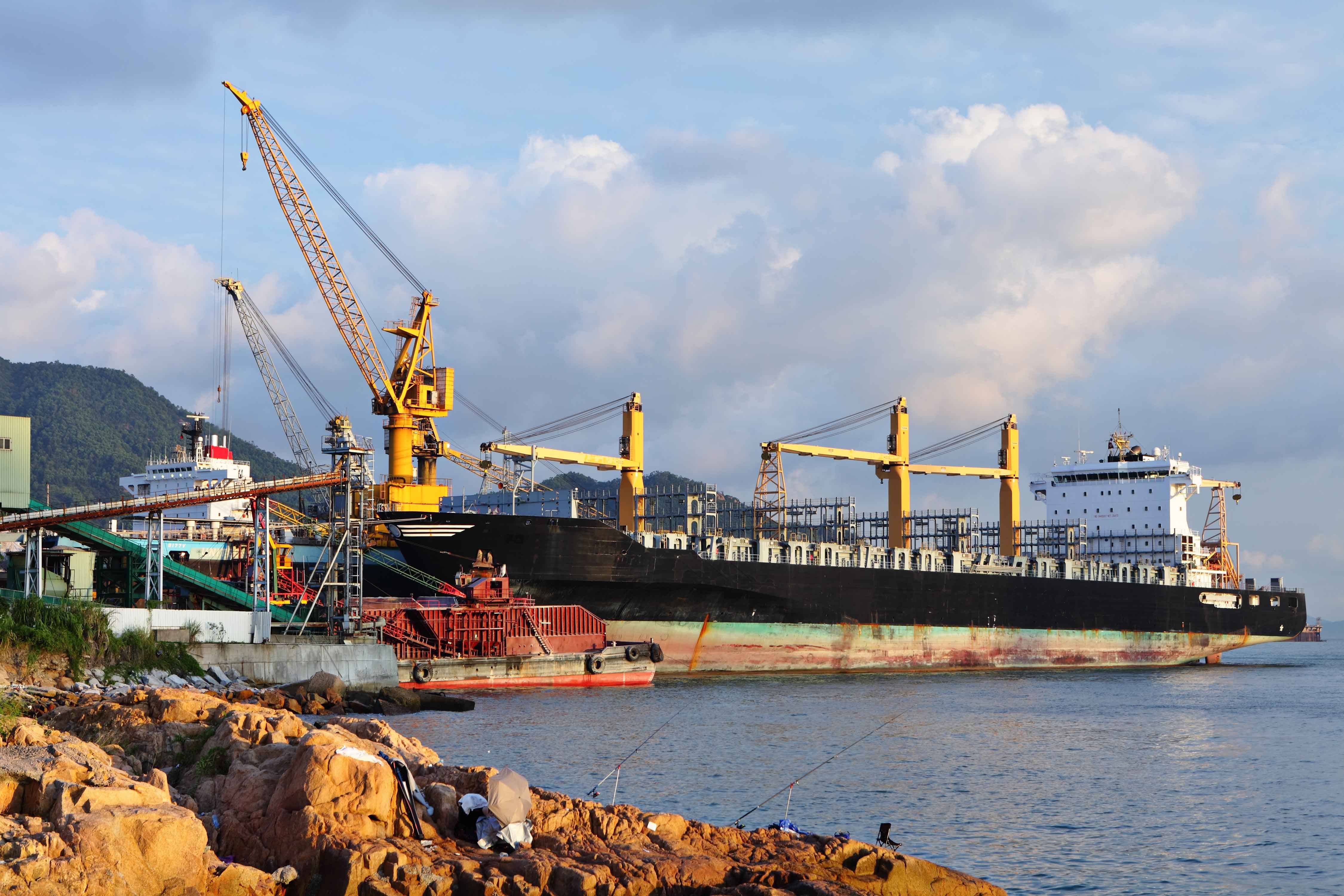
According to American Shipper:
In ocean shipping, present success often breeds future failure. Across the decades, freight-rate spikes have spurred newbuilding sprees, wiping out freight rates. Which brings us to today: Container freight rates are spiking and container-ship newbuild orders are surging at yards in China, South Korea and Japan. Is the ending of this story inevitable?
Not necessarily. There have been a very large number of orders in Q4 2020 and Q1 2021. Yet container shipping’s orderbook was historically low before this new wave of contracts hit.
What happens next will be important to watch. Not only for investors in container shipping, but for tanker and dry bulk investors, as well.
It has long been argued that shipowners are abstaining from orders because they fear future decarbonization rules won’t grandfather in today’s carbon-emitting newbuild designs. What’s happening now in container shipping implies that owners can overcome this fear if returns look high enough.
“Turns out, when things are good, people will still order even if they are concerned what type of fuel to use,” wrote Stifel analyst Ben Nolan.
Orderbook-to-fleet ratio still low
According to the latest figures from Alphaliner, the orderbook as of Friday was 401 container ships totaling 3.63 million twenty-foot equivalent units (TEUs). The orderbook is 15.3% of the on-the-water fleet’s capacity measured in TEUs, up from a multi-decade low of just 9.4% in mid-2020.
However, today’s ratio pales in comparison to an orderbook-to-fleet ratio of over 60% in 2008. “An orderbook of 15% of the fleet is normal,” assured Stefan Verberckmoes, shipping analyst and Europe editor at Alphaliner, in an interview with American Shipper. This is an orderbook level that makes sense to renew the fleet and handle annual cargo growth.
Rolf Habben Jansen, CEO of Hapag-Lloyd, made the same point during his company’s call with analysts on Thursday. “We are nowhere near the situation we saw in when we saw the orderbook that was more than half the global fleet. Today, we are concerned when we look at 12% [his estimate was below Alphaliner’s current number]. I would say it’s probably going to hover around a number that’s slightly better than that. But that would still allow us to be in reasonably healthy territory.”
The problem for container shipping would arise if the orders keep coming. Verberckmoes warned, “If the orders continue at the same pace in Q2 and if we see speculative orders coming in, and it goes from 15% to 20%-30%, then it becomes worrisome. Because we don’t have any visibility on the cargo demand a few years from now.”
A tale of two quarters
As previously reported by American Shipper, Q4 2020 container-ship orders were dominated by so-called “megamaxes,” vessels with capacity of over 18,000 TEUs and 23-24 container rows on deck. Most of the 25 orders were for carriers that didn’t have enough megamax capacity. These were mostly orders that had been previously expected.
For 2020 overall, almost all of the orders were for megamaxes or for smaller ships (2,500 TEU or below) used primarily for intra-Asia trades. There were only a few “neo-Panamaxes” — ships of 12,000-16,000 TEU with 20 container rows on deck that can traverse the new Panama Canal locks. There were virtually no orders in the midsize 5,000- to 9,000-TEU categories. Newbuilds were either very big or very small.
In contrast, Q1 2021 has seen four more megamax orders and ongoing orders for smaller ships, but a surge in orders for neo-Panamaxes — 60 so far with at least nine more possible by the end of March. “There is a very clear preference for neo-Panamax ships,” reported Verberckmoes.
The new workhorse
“Some are 13,000 TEU but most are 15,000-15,900 TEU. We can now see that these ships are going to be the workhorses of the sector, comparable to the maxi-Panamax [up to 5,100 TEU] ships that went through the old Panama locks.
“Carriers are asking: What is the ideal ship of the future, versatile enough to be used in a lot of trades? The answer, mostly, is the biggest ship possible to transit the Panama Canal.”
In the larger categories, owners are ordering either megamaxes or neo-Panamaxes, “but nothing in between,” he continued. “Nobody is ordering 18,000-TEU ships. And I strongly feel that nothing will be ordered [in this size], simply because it doesn’t make sense.
“You will have ships in Far East-Europe and you’ll want the biggest ships — 24,000 TEUs. Or you’ll want the flexibility and you’ll go for 15,000-15,900 TEUs, which you can deploy on virtually all trades.
“You can put them in the trans-Pacific via Panama, on Asia-Latin American, on Asia-West Africa. There is even a 15,000-TEU ship now going from India to the U.S. East Coast.”
Orders despite decarbonization specter
The common wisdom is that new orders in any shipping segment favor designs allowing for liquefied natural gas (LNG) as fuel. LNG is viewed as a transitional choice before the switch to the new generation of fuels necessary to meet the International Maritime Organization’s 2050 decarbonization goal.
But this theory is not playing out in container shipping, the one segment where current fundamentals justify large-scale newbuild orders.
“We have only seen three carriers going for LNG: CMA CGM, Hapag-Lloyd and ZIM,” said Verberckmoes. ZIM (NYSE: ZIM) opted for LNG fuel for newbuilds chartered from Seaspan, a division of Atlas Corp. (NYSE: ATCO).
“All the others are scrubber-fitted,” he said.
Scrubber-fitted newbuilds allow the consumption of cheaper 3.5% sulfur fuel known as high sulfur fuel oil (HSFO), whereas non-scrubber ships must consume more expensive 0.5% sulfur fuel known as very low sulfur fuel oil (VLSFO). It is much more economical to install scrubbers in newbuilds than to retrofit them into existing ships.
Asked why so many container-ship owners would order ships despite the looming specter of decarbonization rules, he replied: because “there is no alternative.”
“Methanol ships are in development. There are trials with ammonia. There are studies of ships with hydrogen. None of these ships are orderable yet. If you are a carrier like MSC that expects 3% [demand] growth per year, you need to add to your fleet. And the only options right now are LNG or scrubbers and using dirty fuel oil. Some may look at LNG and say it’s still a fossil fuel, so they just decide to go with scrubbers.”
“Maersk said, ‘OK, we are not going to expand the fleet [until there is a carbon-neutral newbuild option].’ But they are the only ones in the industry taking this approach.”
Liners opt to lease not own
Liner companies own a portion of their fleets and charter in the rest from non-operating owners (NOOs).
U.S.-listed NOOs include Atlas Corp., Danaos (NYSE: DAC), Costamare (NYSE: CMRE), Global Ship Lease (NYSE: GSL), Navios Containers (NASDAQ: NMCI), Navios Partners (NYSE: NMM), Capital Product Partners (NASDAQ: CPLP) and Euroseas (NASDAQ: ESEA).
According to Verberckmoes, “The main orderers are the NOOs, companies like Seaspan, Zodiac, Eastern Pacific and Capital Maritime. Carriers such as Evergreen, OOCL and Hapag-Lloyd accounted only for about one-fifth of all orders in Q4 and Q1. This is the same tendency we’ve seen for a number of years.”
Atlas Corp.’s Seaspan has been particularly aggressive. It has ordered 31 newbuildings since December with an aggregate capacity of 451,000 TEUs, all with charters attached for durations ranging from six to 18 years.
“For the carriers, there’s a very good case for time-chartering these neo-Panamaxes from the NOOs,” explained Verberckmoes. “If you charter them, you don’t have to pay for them all at once. You can replace your 8,000-TEU ships that are 20 years old and are obliged to burn more-expensive VLSFO with a 16,000-TEU ship with a scrubber, so you can burn heavy fuel oil [HSFO].
“And if you replace two 8,000-TEU ships with one 16,000-TEU ship, economies of scale not only give a lower per-slot cost. They also reduce CO2 emissions per TEU. That is why MSC says its biggest megamaxes are its most environmentally friendly ships.”
Are speculative orders next?
Newbuilding orders by liner companies — or by NOOs with long-term charters to liners — do not raise red flags. What will raise red flags is speculative orders by NOOs with no charters attached.
The Alphaliner analyst emphasized, “The big question is whether there will be speculative orders, whether Greek or other companies will just say, ‘OK, we feel there will be a market for these ships. We will order them even though we don’t have a charter yet.’
“That is the big question that still remains unanswered. We have some orders where we cannot yet see the charterer, so they could be speculative. But we don’t have any evidence yet of speculative orders.”
He cautioned, “We could see the repeat of the old mistake of carriers [and NOOs] ordering too many ships. We should not forget that the shortage of ships is also partly due to congestion, with an average waiting time at anchor in Los Angeles/Long Beach of over seven days. If only the problem in Los Angeles/Long Beach is solved, it will already bring around 30 big ships back on the market. That’s a lot of capacity coming back.”
What this means to ports
Today’s orderbook trends offer an important signal to the world’s ports. If you’re handling mostly midsized 5,000- to 9,000-vessels, expect to service ships twice that size in the years ahead.
“Nothing is being scrapped,” said Verberckmoes. “All the ships are being chartered. All the ships are still around. But if the market falls down or when a new wave of neo-Panamax ships hits the waters, there are candidates for scrapping,” he noted.
“It’s clear that most ports are ready to handle 15,000-TEU ships. And there are a lot of 7,000-, 8,000-, 9,000-TEU ships still active in the trans-Pacific. They are getting older and they can easily be replaced.”
What this means to cargo shippers
There are not enough ships in existence to handle today’s containerized cargo demand. Thus, every new vessel order is a plus for importers and exporters. “Cargo owners would hope that there are even more orders and there will be overcapacity and prices will go back down again,” said Verberckmoes.
But recent orders are mostly for delivery in 2023. Shippers still face years of the vessel-supply status quo before a big wave of fresh capacity hits.
Fearnleys Securities estimates that global volumes will increase 6% this year, while capacity will only increase 3%. Alphaliner net expects fleet growth of 3.7%. Clearly, this supply-demand outlook offers no relief from historically elevated spot rates.
As of Thursday, Asia-West Coast spot rates (SONAR: FBXD.CNAW) were at $4,292 per forty-foot equivalent unit (FEU), up 191% year-on-year, according to the Freightos Baltic Daily Index. Asia-East Coast rates (SONAR: FBXD.CNAW) were $5,716 per FEU, up 109% year-on-year.
(Chart: FreightWaves SONAR. To learn more about FreightWaves SONAR, click here.)
The longer-term question for cargo shippers is whether larger fleets will compel liners to go for market share and compete more on price, i.e., whether liners’ current capacity-management discipline will ultimately break down.
What this means to stock investors
The NOOs face the highest long-term risk from overcapacity. When markets collapse, as most recently occurred in 2016, charters get renegotiated or canceled.
“In the past, when volumes went down, the first thing carriers did was return chartered ships. So, the problem was not with the carriers, it was with the NOOs,” said Verberckmoes.
Given newbuild lead times, this potential risk is still years away. Furthermore, the orderbook is actually still too low, according to Fearnleys. It estimates that the orderbook-to-fleet ratio needs to grow to 17% just to cover cargo demand through 2023.
For dry bulk and tanker investors, the container-ship ordering spree raises the question: What if the thesis that owners won’t order because of fear of decarbonization rules is actually owners “talking their book?” What if bulker and tanker newbuilds will be ordered regardless of regulatory concerns, whether to enhance vessel efficiency to comply with looming efficiency rules, to add LNG fuel capability or to install scrubbers and take advantage of the re-widening VLSFO-HFO spread?
As Deutsche Bank transportation analyst Amit Mehrotra told American Shipper in a recent interview, for commodity ship owners to go on an ordering binge, “rates would need to be much stronger for much longer than people think today,” “secondhand asset values would need to be a lot higher,” and consequently, “equities would have to be significantly higher.”
In other words, dry bulk and tanker markets would have to be as red-hot as container markets are now — which would be a highly lucrative “problem” for dry bulk and tanker investors to have. Click for more FreightWaves/American Shipper articles by Greg Miller
--
LFS keeps you updated with the latest news, if you need additional information about our freight shipping solutions, contact us or follow us on Linkedin.
For cargo insurance experts, please contact Skholl, our partner to avoid any freight damage.
--
By: LFS Marketing
March 23, 2021
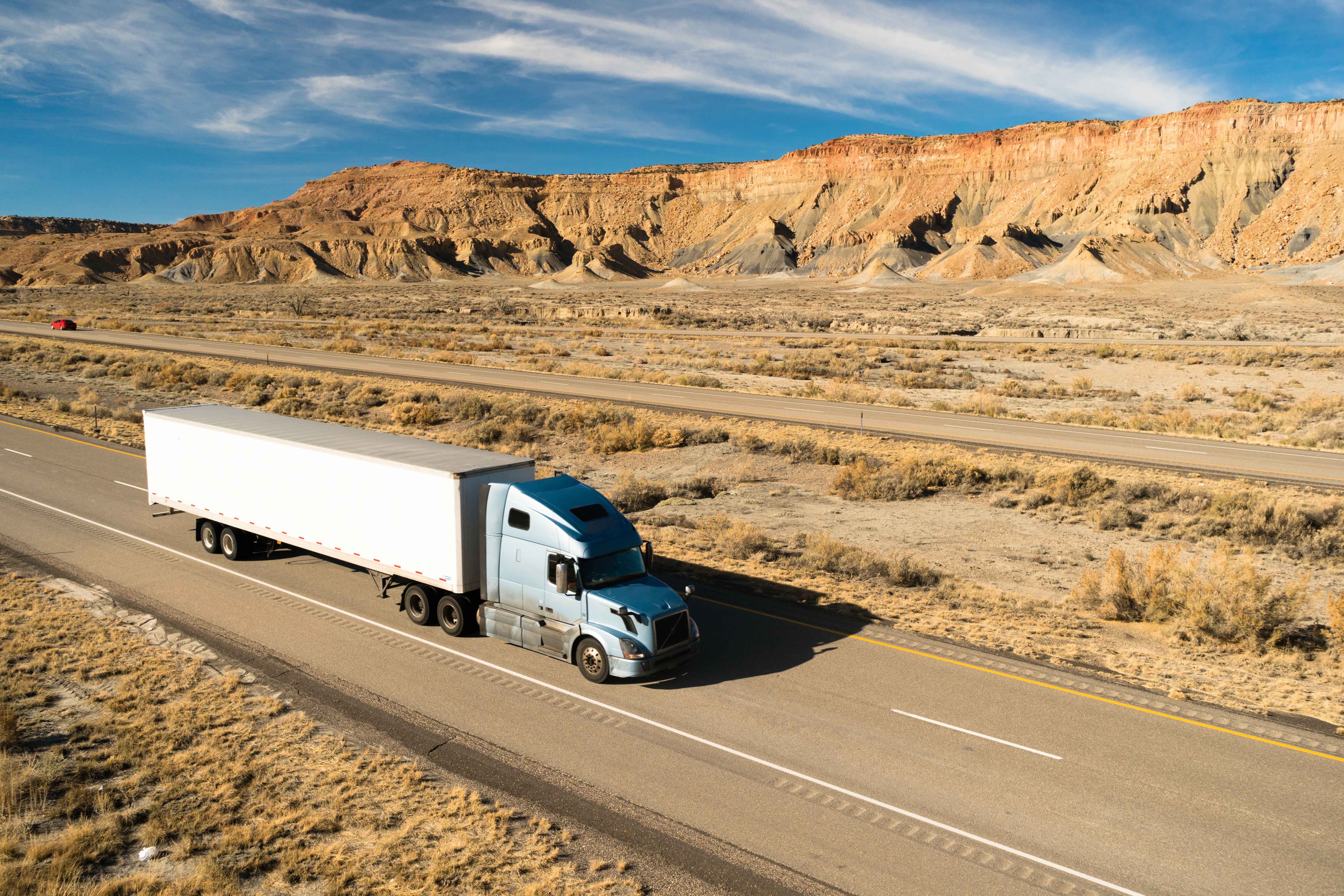
According to Freightwaves:
After the winter storm disruptions, freight tender volumes have stabilized and moved horizontally this week. The Outbound Tender Volume Index is up ~16% yoy when adjusting for the high level of rejected tenders. Yearly comps will soon become tougher given the 30% volume surge last March on the backs of consumer panic buying and hoarding of grocery and household staples.
We are entering the seasonal second-gear freight markets find toward the end of Q1. Not only does the warm weather bring about elevated consumer demand, but retailers have quarterly results to report, and lagging inventories are not applauded by Wall Street.
In this week’s special topic report, the Passport Research team covered asset operators with a piece titled “It’s good to be a trucker” and highlighted that carrier key performance indicators (KPIs) are at the healthiest levels in years. The team wrote, “There was some seasonal giveback in operating ratios but this is to be expected. The bull market for freight is alive and well; the question is how long it will last. At this point, our answer is longer than we previously thought.”
Over the past week, there were a swath of stock upgrades in the transportation sector from various sell-side shops. As I wrote last week, since the market was already so tight and imbalanced, any event that removed trucks from the roads would have an outsized and lasting impact. Retailers and their transportation partners are finally working through the winter storm-induced glut just as the spring season heats up. To add fuel, President Biden said this week the U.S. will have enough vaccinations for every American by the end of May. It will take several months past that date to dole out the inoculations, but consumer behavior will change.
In this week’s “COVID and the Consumer” report from Bank of America, the team highlighted airline and lodging spending by generation to show the oldest cohort (the most likely to receive vaccines thus far) has begun spending much more on flying, but minimally more on lodging. The team suggests the eldest generations are flying to visit family rather than vacation. But vaccines are beginning to hit the younger generations, who will be more likely to vacation and spend on services than their elders did upon vaccination.
The generational pent-up demand for services is the only headwind to freight volumes in the short to midterm. The industrial economy is recovering at a solid clip, the housing market is soaring and consumers continue to do their part, aided by the hopes of further stimulus. So although year-over-year comps will tighten over the next few weeks, there is no sign of slowing down soon.
On a positive note, eight of the 15 major freight markets that we monitor as a broad, representative benchmark were positive on a week-over-week basis. This ratio weakened modestly from the stronger levels it has become accustomed to in recent months as the freight market rallies. The markets with the largest gains this week in OTVI.USA were Laredo, Texas (12.07%), Memphis, Tennessee (5.37%), and Cleveland (5.08%). The markets with the largest declines this week in OTVI.USA were Chicago (-5.83%), Seattle (-4.66%) and Miami (-4.26%).
Tender rejections hover near peak
The Outbound Tender Reject Index also moved horizontally this week, stable at a very high level of 27.6%. OTRI has ranged up toward 30% four times over the past year, but never quite touched the handle. I believe we are near the natural ceiling for tender rejections, and this is evidenced by surging spot rates.
Capacity remains scarce across many regions of the country, especially the Midwest and upper Midwest. Carriers have realigned more capacity to West Coast markets as rejection rates have fallen considerably in California while tender volumes have risen. This week, Old Dominion Freight Lines announced it would be hiring 800 drivers to expand its operations. This isn’t the first such announcement and Old Dominion won’t be the last carrier to do so. The length of this bull market seems to be extending with every passing week. Equipment orders are at multi-decade highs, so it’s a matter of time before some capacity is added to the market. However, bottlenecks at driver training schools have not been relieved and the Drug and Alcohol Clearinghouse has removed tens of thousands of drivers, so seats are difficult to fill.
It is unlikely that there will be a material change to capacity through the middle of the year. We may see some downward pressure on tender rejections as routing guides are recalibrated and contract rates market toward spot, but capacity will remain difficult to source.
--
LFS keeps you updated with the latest news, if you need additional information about our freight shipping solutions, contact us or follow us on Linkedin.
For cargo insurance experts, please contact Skholl, our partner to avoid any freight damage.
--
By: LFS Marketing
March 16, 2021

According to Freightwaves:
Big changes planned for Texas border bridge
Speeding up commercial truck traffic will be a priority when the Pharr-Reynosa International Bridge’s largest expansion project in history is completed in 2023, said Luis Bazán, the bridge’s general director.
The expansion includes building a second international bridge in Pharr, Texas, along the U.S.-Mexico border to add cargo capacity and reduce wait times for commercial trucks.
“With the second span for the bridge, we’re adding another bridge, we’re adding four additional lanes,” Bazán told FreightWaves.
Bazán said the second span will give Pharr additional lanes to separate commercial trucks and cars, as well as dedicating specific lanes for empty trucks, full cargo trucks and certified cargo.
The bridge expansion also includes adding Free and Secure Trade (FAST) lanes from Mexico to the United States.
The 3.2 mile Pharr-Reynosa International Bridge currently has four lanes, handling commercial and passenger vehicles. The expanded bridge could accommodate another 800 trucks a day, according to Pharr officials.
The project received a boost Dec. 31 when former President Donald Trump issued a presidential permit authorizing the expansion.
The Pharr-Reynosa International Bridge was the second-busiest commercial truck crossing in Texas during 2020 and the third busiest on the Mexican border.
The busiest U.S.-Mexico border commercial land ports for trucks in 2020 were:
-Laredo, Texas, 2.3 million trucks in 2020.
-Otay Mesa, California, 927,714.
-Pharr, 665,435.
-Nogales, Arizona, 352,037.
-El Paso, Texas, 286,434.
The Outbound Tender Volume Index (OTVI), published by FreightWaves and available on the SONAR market dashboard, measures volume out of key freight markets.
As of Thursday, McAllen, Texas – which includes the Pharr-Reynosa market – had seen a 28% increase in outbound load volume year-over-year.
Outbound Tender Volumes in McAllen declined moderately from a week ago but climbed moderately year-over-year. SONAR: OTVI.MFE
For carriers, the Pharr international bridge is also notable for how much longer the average length of haul is from McAllen versus the rest of the country, 930 miles versus 630 miles. SONAR: OALOHA.MFE
The Pharr-Reynosa International Bridge, which connects Texas to the Mexican city of Reynosa, totaled $33 billion in trade for all of 2020.
“It was a record year for us in 2020, especially for produce,” Bazán said. “Even with the pandemic, throughout the summer months we were bringing in around 15,000 shipments per month, which is kind of unheard of for a summer period.”
The Pharr bridges’ top three imports for 2020 were TVs and computers at $2.31 billion; avocados, dates, figs and pineapples at $1.43 billion; and electrical boards, panels, switches at $993 million, according to data from the U.S. Census Bureau analyzed by World City.
The Pharr bridges’ top produce imports in 2020 included:
-Avocados, dates and pineapples, $1.4 billion.
-Strawberries, blueberries and raspberries, $955 million.
-Tomatoes, $593 million.
-Peppers, asparagus and squash, $428 million.
-Oranges and grapefruits, $355 million.
-Pickles and cucumbers, $84 million.
-Melons and papayas, $46 million.
Bazán said the next step is getting the environmental clearance needed to proceed with construction.
“Once we get the environmental clearance, then we get into the conceptual plans on both sides of the [U.S.-Mexico] border to finalize plans,” Bazán said. “It’s looking like we’re going to start construction within the first quarter of 2022. It’s a 14-month construction period to build the entire second span of the bridge.”
Bazán said connecting lanes on both sides of the border from the existing bridge to the new span will be built for emergency and contingency situations.
“We are looking at 2023 by the time we’re done building the new bridge. It’s a very aggressive timeline,” Bazán said. “The trucks keep coming, they never stop.”
Team Worldwide opens office in southern Arizona
Team Worldwide, a global third-party logistics provider company, recently opened a branch office in Nogales, Arizona.
The new location is the company’s fifth along the U.S.-Mexico border. It will serve Team Worldwide’s clients in Tucson, Arizona, focusing on integrating international business from Mexico as well as growing domestic business in the Tucson market.
Eleazar Romero will be the general manager of Team Worldwide’s Nogales office.
“The strength of our business model lies in our network of locally owned and operated branch offices. By adding Tucson to our network, we look forward to providing additional cross-vertical solutions to clients,” Randy Sinker, president of Team Worldwide, said in a statement.
Established in 1979, Team Worldwide is a freight forwarder and third-party logistics provider. The company operates more than 45 branches across the U.S. Team Worldwide is headquartered in Winnsboro, Texas.
Amazon to open fulfillment center in Texas Panhandle
Amazon Inc. (NASDAQ: AMZN) recently announced plans for a fulfillment center in Amarillo, Texas.
The fulfillment center is expected to create more than 500 full-time jobs in the 1 million-square-foot fulfillment center. Employees will work to pick, pack and ship bulky or larger-sized customer items such as furniture, outdoor equipment or rugs.
The facility is scheduled to open in early 2022. Since 2010, Amazon has invested $16.9 billion in Texas, creating more than 70,000 jobs, according to the company.
CG Railway launches bigger, faster vessels
CG Railway (CGR) announced the launch of the first of two new rail ferries that will transport railcars between Mobile, Alabama, and the Port of Coatzacoalcos in southern Mexico.
The two ferries will replace CGR’s two existing vessels, which have transported over 200,000 rail cars in more than 1,400 sailings between Mobile and Coatzacoalcos.
The 590-foot-long ferries are designed to carry 135 railcars each, up from 115 railcars on the existing ferries, with an expected top speed of 14 knots, up from 7 knots, according to a release.
Mobile-based CGR operates a Class 3 railroad and ferry service transporting approximately 10,000 annual carloads of diversified commodities across the Gulf of Mexico.
--
LFS keeps you updated with the latest news, if you need additional information about our freight shipping solutions, contact us or follow us on Linkedin.
For cargo insurance experts, please contact Skholl, our partner to avoid any freight damage.
--
By: LFS Marketing
March 16, 2021
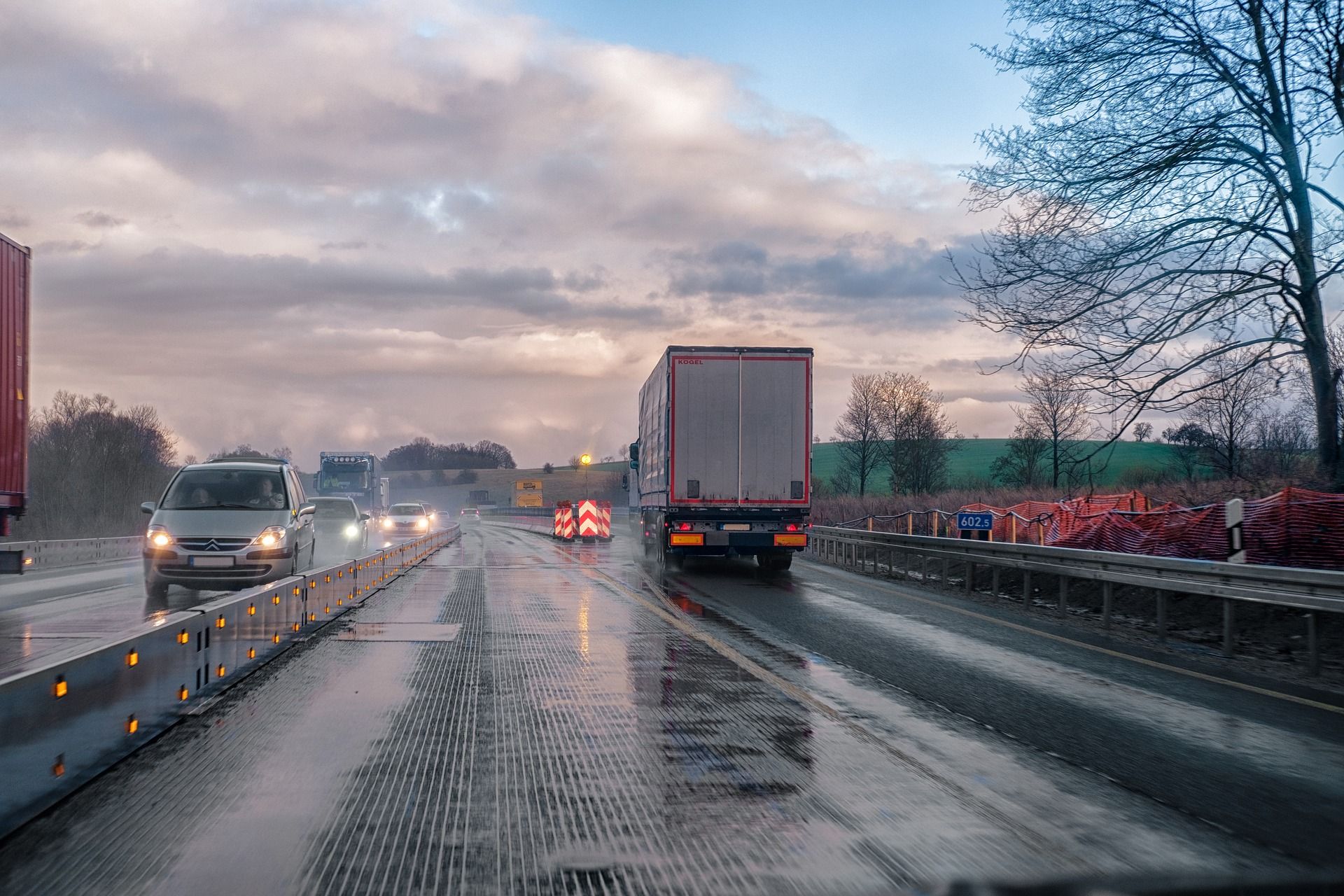
According to Freightwaves:
In true March fashion, severe thunderstorms are likely to break out across the South over the next few days. Truckers will run into delays from the Plains to the Carolinas.
A low-pressure cell and associated frontal systems will begin to crank up Tuesday across the central and southern Plains. Severe thunderstorms will be scattered from Austin and Dallas, Texas, to Oklahoma City and Tulsa, Oklahoma, as well as Wichita, Kansas. Main threats are large hail and damaging winds, especially later in the day and into the night.
The systems will then track into the mid-South and lower Mississippi Valley Tuesday night and Wednesday, gaining strength along the way. As a result, a significant severe weather outbreak is forecast across this region. Drivers should be prepared for all modes of severe weather — tornadoes (possibly strong in this case), large hail and wind gusts of 60-plus mph. Torrential rainfall could stop drivers in their tracks at times, leading to spots of flash flooding and road closures.
Not all areas within the potential impact zone will experience severe weather, but this zone represents the area with elevated risk.
These storms could cause localized disruptions to transportation and supply chains. Major cities within the zone include Memphis, Tennessee; Little Rock, Arkansas; Jackson, Mississippi; Birmingham, Montgomery and Mobile, Alabama; and New Orleans.
By Wednesday night and early Thursday, the risk for severe storms moves to Atlanta; Jacksonville and Tallahassee, Florida; Chattanooga and Knoxville, Tennessee; the Carolinas; and Virginia.
--
LFS keeps you updated with the latest news, if you need additional information about our freight shipping solutions, contact us or follow us on Linkedin.
For cargo insurance experts, please contact Skholl, our partner to avoid any freight damage.
--
By: LFS Marketing
March 16, 2021
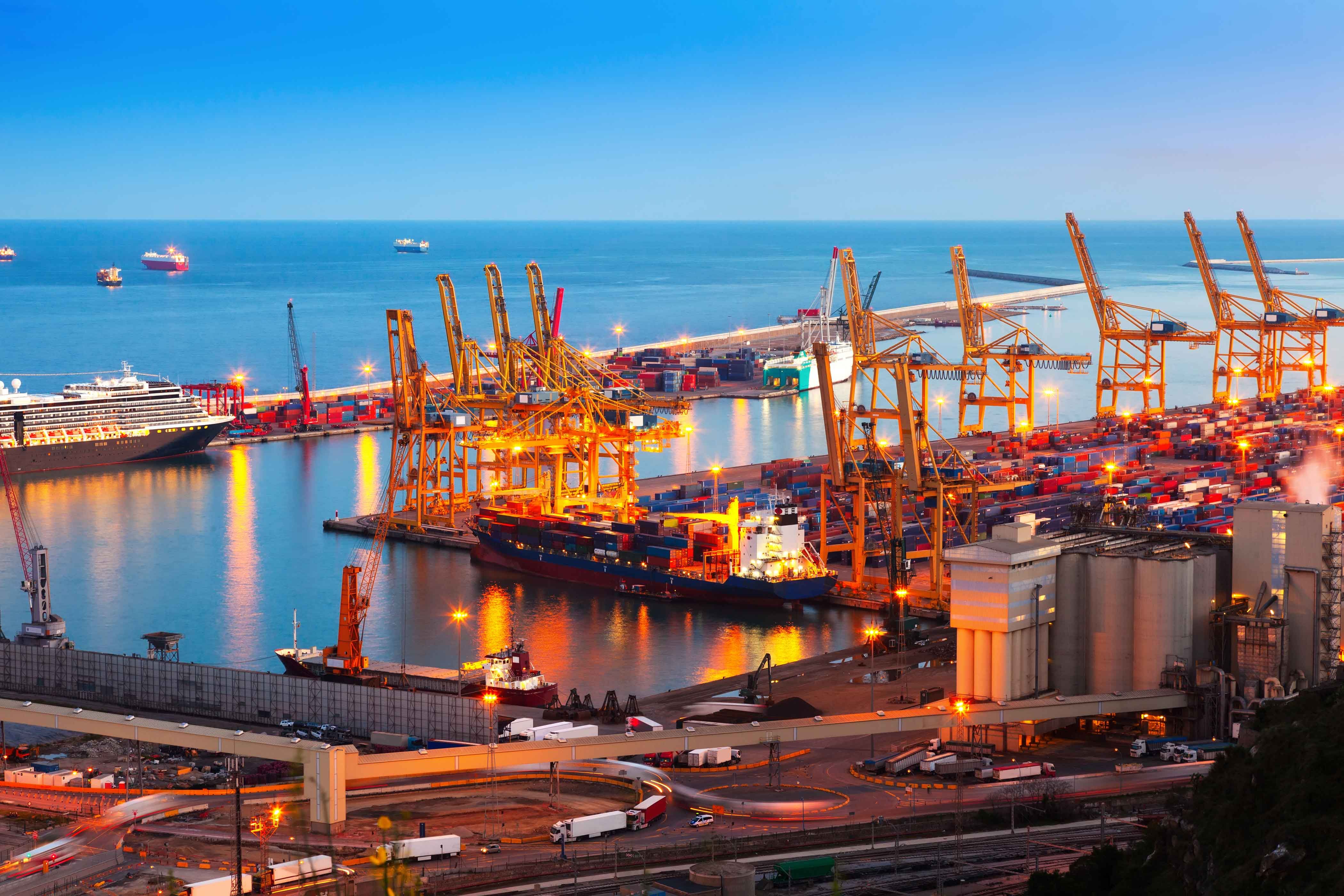
According to joc.com
As is by now familiar to all participants in the container shipping sector in North America, the current congestion issues are due to two core reasons: a larger-than-usual boom in demand, combined with the pandemic reducing efficiency at some ports. Neither of these are unlikely to abate soon.
The large boom in demand has now been sustained since summer 2020 and is fundamentally due to consumers not being able to spend as much money on services as usual, and they have therefore switched part of that consumption into goods.
To put some numbers to this, personal consumption expenditures in the US in January 2020 before the pandemic was $13.4 trillion. Hereof, $4.8 trillion was spent on goods. With the latest data, it can be seen that January 2021 saw personal consumption of goods increase to $5.3 trillion. This is a 10 percent growth — an additional $480 billion spent buying goods on top of the normal flow from before the pandemic. And this spending was added in the month of January alone.
But it also shows the extreme split in the current economy. All told, personal consumption spending dropped $250 billion in January compared with the same time last year as the spending on services declined in excess of $700 billion in the same time frame.
Are we on a path to normalization?
After an initial period of sharp economic decline in Q2 2020, we have now seen this extreme split where spending on goods is booming and spending on services is dropping sharply since June last year. It would then be reasonable to ask whether we might be seeing some degree of normalization — especially whether there are signs of the consumer boom slowing down.
The data for January 2021 suggest the opposite.
Spending on goods showed a higher growth rate in January than at any point in the boom in the second half of 2020. Durable goods purchases were up $313 billion year on year in January 2021, equal to a growth rate of 17 percent. During the boom in 2020, this growth rate peaked at 15 percent in October and slowly abated to 9 percent in December. Additionally, it is the highest year-on-year growth rate for durable goods since 1984.
From a container shipping perspective, it is especially noteworthy that furnishings and household equipment — which takes up a lot of space in containers — increased $67 billion, equal to a 16 percent growth rate. This was also far higher than the growth rates seen during the boom in the second half of 2020, and we have in essence not seen such a high growth rate since records began in 1959, although a small boom in 1973 came close.
Many categories of goods sold in January saw not only a strong increase, they showed a growth rate either matching or higher than at any month seen during the boom in 2020. The only major category of goods to see a material decline was, not surprisingly, sales of luggage.
But can this continue? As long as the consumers still cannot effectively choose to spend on services as they want to, this could potentially be sustained. Adding to this, we should keep in mind that the US government has just agreed to new stimulus legislation. The $500 billion growth in consumer spending in January is equal to some $1,500 per person in the US, only slightly higher than the checks a lot of US citizens will be receiving. Hence, those checks can have a material impact in prolonging the current boom, even though not all stimulus money will be spent on goods, nor will checks be granted to all.
Hence, the consumption pattern in January in the US does not point in the direction of normalization — quite the opposite in fact.
What is in store?
With consumption of goods increasing as we get into the third month of 2021, this points to additional pressure on the inbound supply chains. Inbound container volumes to the US, irrespective of origin, grew in excess of 20 percent in October and November, then went below 20 percent for December and January. With the increase in goods consumption, this might well trigger additional ramp-up in demand growth at a point in time where both vessel, equipment, port, and terminal capacity is scarce.
Or to put it in other words, there is presently no sign in the economy that the demand boom into the US will slow down in the short term. At the same time, there is no sign from the operational side of the container shipping industry that the bottleneck effects will be resolved in the short term. Shippers need to plan for the current challenges to be a normal state of affairs for a while longer.
--
LFS keeps you updated with the latest news, if you need additional information about our freight shipping solutions, contact us or follow us on Linkedin.
For cargo insurance experts, please contact Skholl, our partner to avoid any freight damage.
--
By: LFS Marketing
March 16, 2021

According to Freightwaves:
The intermodal contract saving indices (IMCSI) show the percent savings of shipping via intermodal versus dry van truckload contract rates. To ensure comparability across modes, the calculation only compares truckload and intermodal rates in identical origin-destination pairs. The IMCSI tickers are an aggregation of individual lanes.
On “This week in SONAR,” Craig Fuller, FreightWaves CEO, and Zach Strickland, FW Market Expert & Market Analyst discuss the release of Intermodal Savings Versus Truckload (IMCS) tickers, which shows the fluctuating difference in cost between shipping intermodal and dry van freight.
The SONAR chart above shows the initial and final reported savings values. The intermodal savings indices and their subsequent length of haul tickers are divided into initial and final values. The initial reports values after 14 days, while the final value is reported after 56 days.
These indices exclude very short length rail hauls (moves of less than 400 miles) because those would typically be sent by truckload. The rates are all-inclusive for a clear comparison since fuel is traditionally cheaper on the rail.
Initial versus Final report
The initial reading shows the quickest view of the information to make faster tactical decisions while sacrificing some of the completeness of the data—representing approximately 50% of the total reports.
The final reading gives the most complete view of the savings with a larger sample size (>70% of the total reports) to use for validation and historical reporting.
Length of haul variations
The intermodal contract savings indices are also offered in various lengths of haul in order to isolate the various differences between shorter and longer haul lanes at a more granular level. Price differences between longer mileage moves tend to be greater than shorter mileage moves with large differences between each mileage band. Greater variety affects pricing. At this time, these indices are only available at the national level.
The length of haul variations can be viewed within LIMCSIF.USA, MIMCSIF.USA and SIMCSIF.USA respectively.
For example, the graphic below further demonstrates the savings relationship at 56 days within the time of the movement down to 30.85% in long intermodal hauls of 1,200 or more miles.
These latest tickers again reflect FreightWaves’ commitment to provide the latest data insights in SONAR – across all logistics concerns relating to OTR transport and other modes of transportation.
--
LFS keeps you updated with the latest news, if you need additional information about our freight shipping solutions, contact us or follow us on Linkedin.
For cargo insurance experts, please contact Skholl, our partner to avoid any freight damage.
--
By: LFS Marketing
March 8, 2021
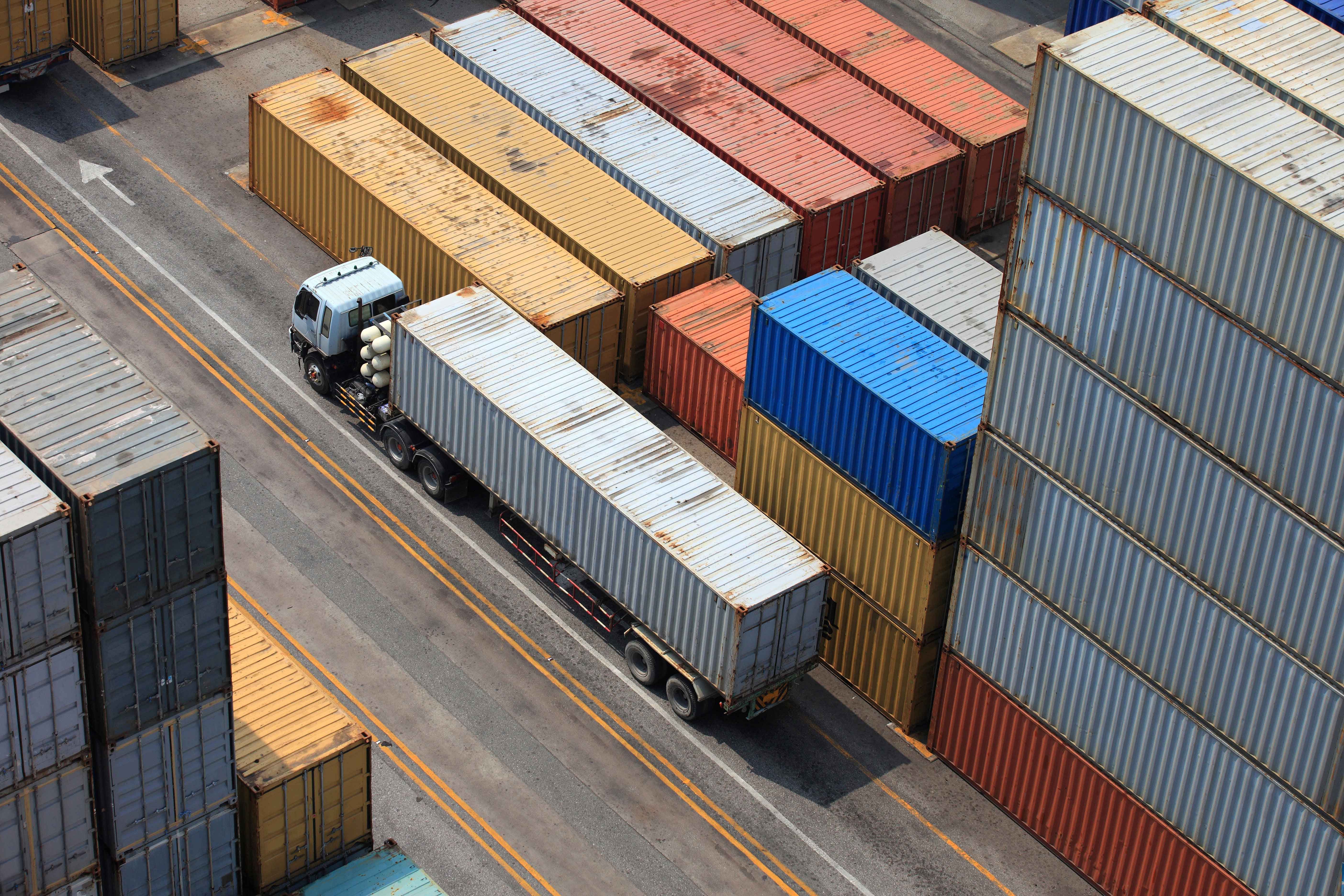
According to Transportation Topics:
Canada’s trade sector unexpectedly recorded its largest surplus in more than six years on across-the-board increases in exports.
The nation ran a surplus of C$1.4 billion ($1.1 billion) in January from a revised deficit of C$1.98 billion in December, Statistics Canada said March 5 in Ottawa. Economists were predicting a gap of C$1.4 billion. It marked the first time Canada has run a monthly trade surplus since May 2019, and represents the largest since 2014.
“The surprise trade surplus is a welcome development in what was expected to be a very challenging time for the economy,” Benjamin Reitzes, rates and macro strategist at the Bank of Montreal, said in a report to investors. “This is just another sign that the economy weathered the second wave impressively well.”
Exports rose 8.1% in January, versus a 0.9% increase in imports. Shipments of energy products were up 5.9% on rising oil prices. Non-energy exports increased 8.5%.
Canada’s trade deficit was running at historically elevated levels for much of last year, but the picture has changed sharply in recent months amid improving trade flows globally.
Merchandise trade with the U.S. was the big driver behind the gain in January. Shipments south of the border rose 11.3% to the highest value since September 2019. Aircraft and other transportation equipment rose 72.3% on the month. That was due to a Canadian airline retiring a large number of planes from its fleet and shipping them to the U.S., the agency said. Excluding that one-time gain, trade would be roughly balanced.
Monthly service exports were up 0.5% to $9.3 billion, versus a 2.7% increase in imports, Statistics Canada said.
--
LFS keeps you updated with the latest news, if you need additional information about our freight shipping solutions, contact us or follow us on Linkedin.
For cargo insurance experts, please contact Skholl, our partner to avoid any freight damage.
--
By: LFS Marketing
March 8, 2021

According to Transport topics:
COVID-19 has driven the need for contactless delivery methods, but a silver lining may be increased efficiency.
The Consumer Brands Association launched a task force early on in the pandemic to work with retailers, manufacturers and carriers to test and create contactless standards. It is now in the final stages of creating a report detailing standards for methods and procedures.
“The task forces put emphasis on documenting the underlying use cases, understanding current processes, talking about what the technology would enable going forward and then laying out the standards and publishing that,” Tom Madrecki, vice president of supply chain at the Consumer Brands Association, told Transport Topics. “This is where we think that contactless delivery is headed.”
Madrecki added there was a series of discovery and discussion calls among the companies that were involved. There also were a dozen pilot programs in which companies were testing methods.
“I think at the start of the pandemic, contactless pickup and delivery was really for the sake of social distancing and keeping drivers physically distant from warehouse employees, shipping clerks and guards,” Will Chu, co-founder of logistics software provider Vector, told TT. “There’s a lot of traffic, a lot of people moving in and out, and you think about distribution facilities and the number of people coming in, definitely hot spots for potential outbreaks.”
XPO Logistics enhanced its contactless delivery capability Aug. 5 with synchronized e-signature capture on hand-held devices. Ryder System Inc. has worked to implement contactless interaction with customers. Coyote Logistics has been assisting with the task force.
XPO ranks No. 3 on the Transport Topics Top 100 list of the largest for-hire carriers in North America and No. 1 on the TT Logistics 50. Ryder Supply Chain Solutions is No. 10 on the for-hire TT100.
“Contactless and electronic supply chains have been a growing necessity in the industry for many years, but the pandemic has accelerated the need to innovate and adapt quickly,” Nick Shroeger, chief network solutions officer at Coyote Logistics, told TT. “While many of the recent advancements in contactless technology have been rooted in creating safer operations and working conditions for members of the supply chain, there are additional benefits to these solutions.”
Shroeger added that benefits have included efficiency gains and cost savings tied to decreased dwell times, automatic paperwork and data storage, and delivery in full reconciliation. He believes these are reasons for recent advancements to stay long term.
“There’s a lot of success, not only around keeping workers safe, which is the original premise, of course, and trying to minimize interaction,” Madrecki said. “But there’s actually a lot of documented cases of enhanced efficiency when it comes to the speed that a driver can get in and get out.”
Chu noted by using technology to go to a paperless system, a lot of time is saved. It is eliminating lines to get into facilities and eliminating traveling from a staging area to check in with a clerk. The facilities also are getting more visibility into what is happening.
“We’ve been able to reduce dwell times from 30% to 50%,” Chu said. “We’re replacing a process that really involved a driver speaking to multiple people, getting in and out of their cab multiple times to get paperwork, to sign paperwork. They’re moving into a process where everything can be done from the comfort of their own cab, over a mobile app.”
Chu also believes that many of these contactless methods, because of the benefits, are here to stay.
“The conversation has shifted from safety and social distancing to efficiency and visibility,” Chu said. “That has been the larger driver of process and business process change. You’re moving from a system where it was just a physical piece of paper to now a digital system.”
Madrecki noted that to mitigate the pandemic’s effects companies were quick to adopt shorter-term fixes such as social distancing and having drivers signal to dockworkers through the cab instead of going up to someone.
But creating standards for a truly contactless system has involved such things as moving toward paperless technology.
“The open question is, how do you scale new technology,” Madrecki said. “How do you accelerate carrier adoption. How do you get the facilities on board. How do you ensure that if people have different technology solutions that they’re quickly adopting those and that they’re all sort of similar.”
--
LFS keeps you updated with the latest news, if you need additional information about our freight shipping solutions, contact us or follow us on Linkedin.
For cargo insurance experts, please contact Skholl, our partner to avoid any freight damage.
--
By: LFS Marketing
March 8, 2021
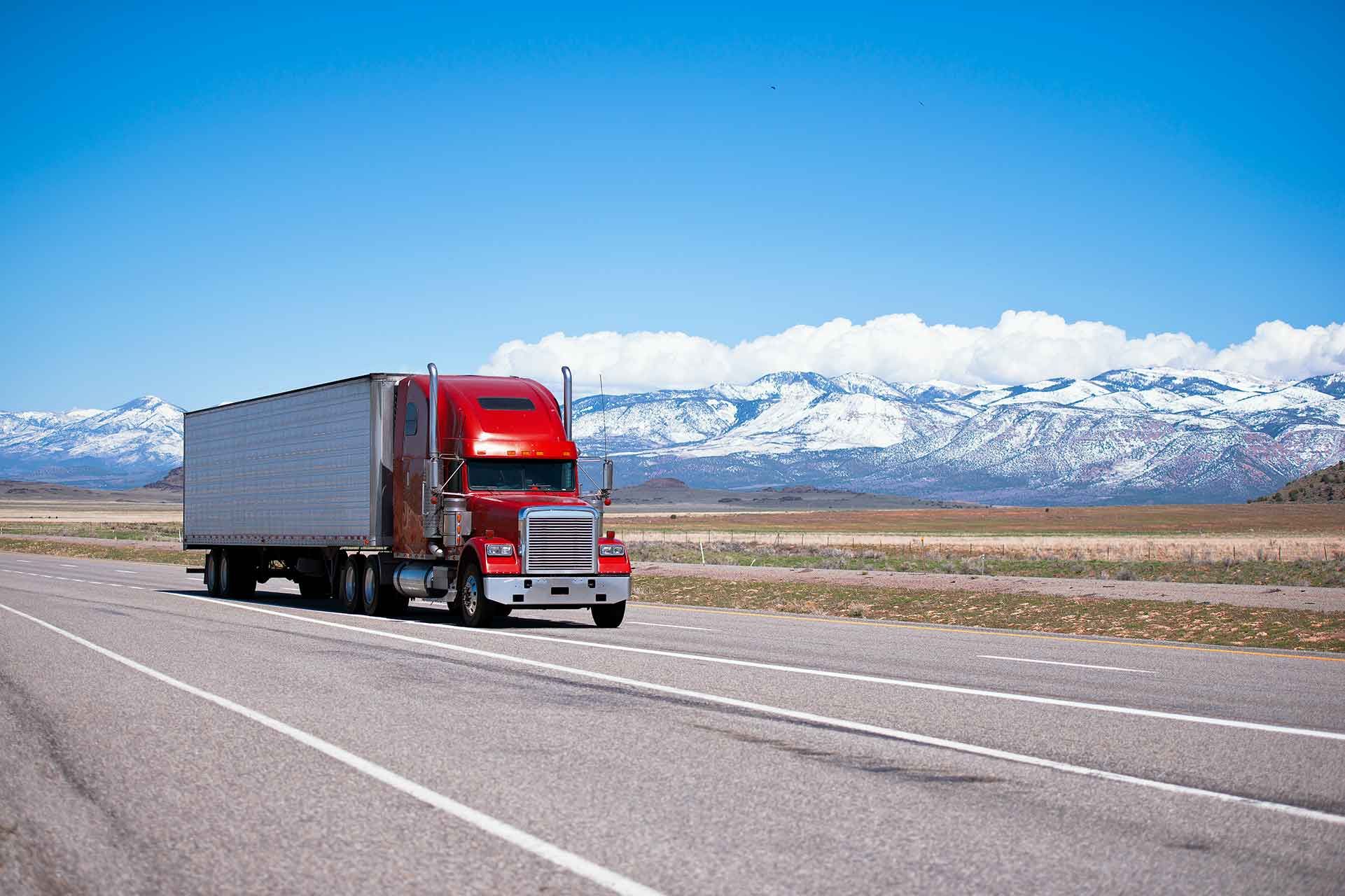
According to Freightwaves:
Legislation bailing out financially troubled multiemployer pension plans – including a plan covering thousands of employees and retirees from LTL carriers Yellow and ABF Freight – could be signed into law by President Joe Biden as early as this week.
The Butch Lewis Pension Plan Relief Act of 2021 was included in the $1.9 trillion COVID-19 rescue package that was approved on Saturday by the U.S. Senate along party lines, 50-49. The package is expected to be taken up by the U.S. House of Representatives on Tuesday for final approval before being sent to the White House for Biden’s signature.
Sources contacted by FreightWaves noted that the pension relief portion of the package made it through the Senate relatively unscathed, so it will likely remain intact when it reaches the White House.
“For more than two decades, Teamster members, retirees and officials have worked tirelessly to make sure the hard-earned retirements of its members are protected,” said Teamsters General President Jim Hoffa. “Now, as part of this bill, more than 50 Teamster pension plans – including its largest, the Central States Pension Fund [CSPF] – will be eligible for assistance at the outset of the bill’s enactment, with more of the union’s plans becoming eligible in 2022.”
Teamsters Vice President JohnMurphy, who has led the union’s battle to protect member and retiree pensions, called the Senate’s passage of the legislation “one giant step toward bringing this whole issue to conclusion that will lift such a terrible burden off the minds of thousands of retirees and active workers.
“It’s been a long fight, but Congress has done the right thing by the working people with the passage of this bill,” Murphy told FreightWaves.
The pension relief portion of the rescue package affects multiemployer pension funds covering 1.3 million plan participants. Roughly 360,000 of those participants are covered under CSPF, of which approximately 30,000 are current employees of LTL carriers ABF Freight [NASDAQ:ARCB] and Yellow Corp. [NASDAQ: YELL].
Under the legislation, the Pension Benefit Guaranty Corporation (PBGC), an independent federal agency that provides financial assistance to pension plans that become insolvent, would provide eligible multiemployer plans with grants that would not need to be repaid, rather than money from the existing multiemployer revolving fund. The money would be transferred from the Treasury’s general fund to a new fund within PBGC. It would then be disbursed to the pension plans.
During the first two years after the bill is enacted into law, the PBGC could give priority to plans that are expected to face insolvency within five years – which is the case with CSPF.
A recent analysis of the legislation conducted by the Congressional Budget Office (CBO) projects that grants would total $86 billion. Of that, $82 billion would be spent in 2022, $2 billion in 2023, and $0.6 billion in 2024. About 185 plans would receive grants, according to the budget office.
Labor made pension protection a major policy goal of the Democratic party “because of the disastrous effect the pandemic’s shutdown of the economy had on multiemployer pension plans,” Murphy said.
“Democrats realized something had to be done now,” he said. “Republicans have never been willing to address the multiemployer pension crisis as a serious issue. They’ve been an obstacle rather than a facilitator. So, the Democrats have fulfilled one of their many promises to American workers and retirees.”
--
LFS keeps you updated with the latest news, if you need additional information about our freight shipping solutions, contact us or follow us on Linkedin.
For cargo insurance experts, please contact Skholl, our partner to avoid any freight damage.
--
By: LFS Marketing
March 8, 2021
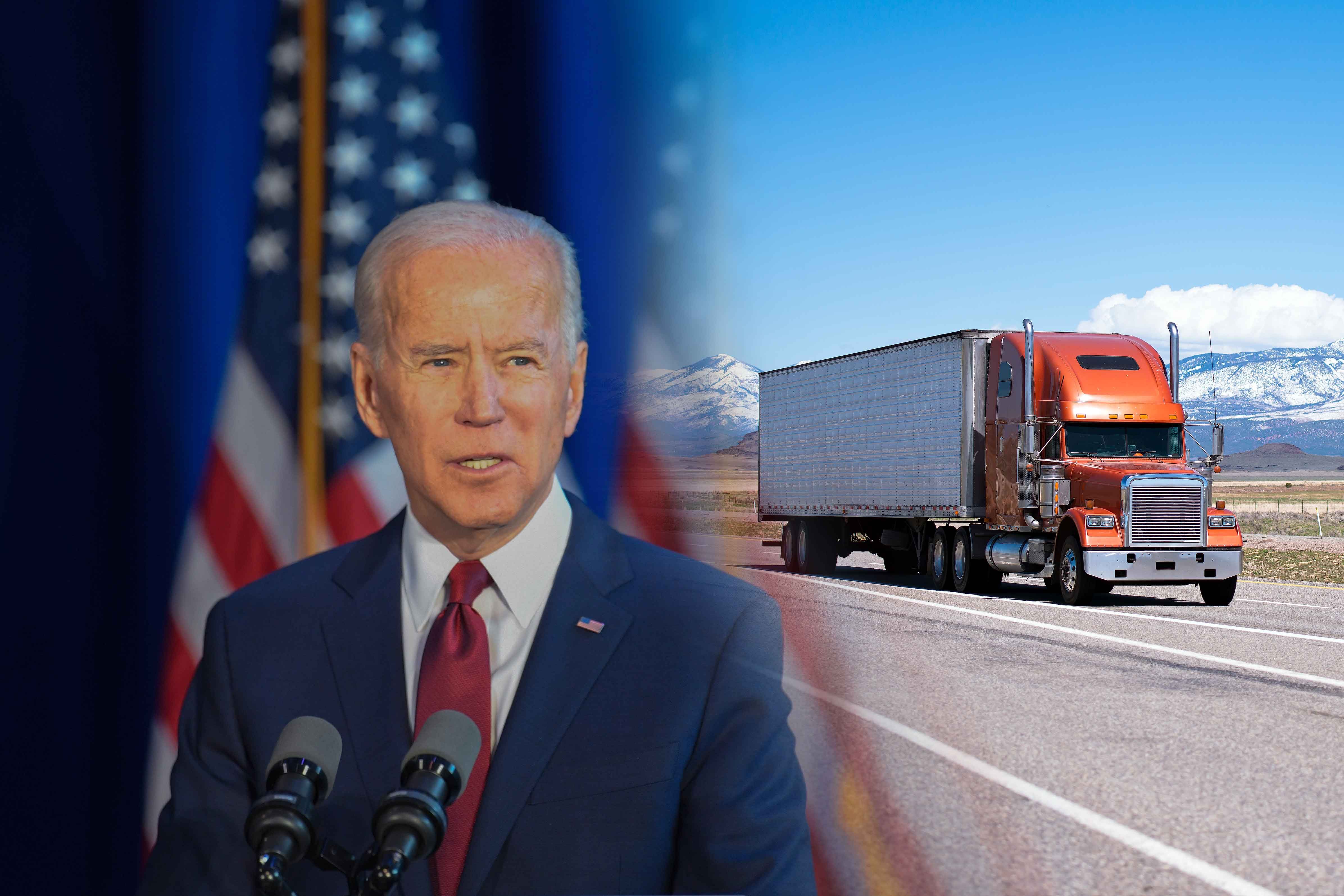
According to Freightwaves:
An executive order to be signed Wednesday by President Joe Biden includes a one-year review of transportation networks as well as a review of supply chains for four products considered critical in addressing national emergencies.
As FreightWaves reported earlier this month, Biden planned to use an executive order to make good on a campaign promise to review critical supply chains and reduce American dependence on imports for pandemic-related equipment and materials.
According to a fact sheet released Wednesday on the order, “Securing America’s Critical Supply Chains,” the administration is calling for a review of the “transportation industrial base and supply chains for agricultural commodities and food production.” Four other industrial-base sectors in the order include defense, public health and biological preparedness, information and communications technology (ICT), and energy.
The fact sheet notes that agencies and departments – which could include the U.S. Department of Transportation – will also be required to identify locations of key manufacturing and production assets and the role of transportation systems in supporting supply chains.
“While we cannot predict what crisis will hit us, we should have the capacity to respond quickly in the face of challenges,” the fact sheet states. “The United States must ensure that production shortages, trade disruptions, natural disasters and potential actions by foreign competitors and adversaries never leave the United States vulnerable again. Today’s action delivers on the president’s campaign commitment to direct his administration to comprehensively address supply chain risks.”
In addition to the one-year transportation-sector review, the order also directs a more immediate 100-day review across federal agencies to address supply chain vulnerabilities for four products:
-Active pharmaceutical ingredients (APIs). “APIs are the part of a pharmaceutical product that contains the active drug. In recent decades, more than 70% of API production facilitators supplying the U.S. have moved offshore. This work will complement the ongoing work to secure supply chains needed to combat the COVID-19 pandemic.”
-Critical minerals. “From rare earths [minerals] in our electric motors and generators to the carbon fiber used for airplanes – the United States needs to ensure we are not dependent upon foreign sources…in times of national emergency.”
-Semiconductors and advanced packaging. “The United States is the birthplace of this technology and has always been a leader in semiconductor development. However, over the years we have underinvested in production – hurting our innovative edge – while other countries have learned from our example and increased their investments in the industry.”
-Large capacity batteries, such as those used in electric vehicles. “While the U.S. is a net exporter of electric vehicles, we are not a leader in the supply chain associated with electric battery production. The U.S. could better leverage our sizable lithium reserves and manufacturing know-how to expand domestic battery production.”
--
LFS keeps you updated with the latest news, if you need additional information about our freight shipping solutions, contact us or follow us on Linkedin.
For cargo insurance experts, please contact Skholl, our partner to avoid any freight damage.
--
By: LFS Marketing
March 1, 2021

According to Freightwaves:
The story this week was the huge rebound in tender volumes against a very depressed weather-influenced comparison from a snowstorm blanketing most of the U.S. In Texas, winter blizzards rampaged last week, leaving millions without power and creating major disruptions to economic activity. The Outbound Tender Volume Index for the states of Texas and Oklahoma both sank roughly 25% last week as residents and businesses shuttered.
However, this week volumes have snapped back greatly to well above pre-storm levels. Both Texas and Oklahoma have seen outbound volumes surge 60% off the bottom, with Texas volumes ~20% above pre-blizzard levels and Oklahoma up ~30%.
On a smaller scale, the same volume movement has played out on a national level. OTVI.USA fell ~6% last week as snow and ice blasted all but six states, but volumes roared back more than 20%this week off the bottom. Some of this can be attributed to normal seasonality — freight volumes have risen in the last week of February/first week of March each of the past three years.
The storm may have frozen freight markets, but this was a fleeting event and appears to have caused no change to the underlying fundamentals. There is no obvious end for this freight bull market in sight. Consumers continue to spend heavily on goods, which drives freight and depletes already diminished inventories. Even if consumer spending diverged from its current upward trajectory (which most see as unlikely given the additional stimulus, accelerating vaccine rollout and strong consumer balance sheets), the heavy inventory restocking ahead might be sufficient to keep freight flowing at elevated levels.
In addition to consumer goods demand, the housing market is white hot and there’s a blooming recovery in the industrial economy underway. The housing market bears careful watching as interest rates are starting to aggressively move up in the U.S. All of these bullish variables, along with the extended pent-up demand of catching up from the winter storms, are converging just as the spring freight season kicks off.
On a positive note, all 15 major freight markets that we monitor as a broad, representative benchmark were positive on a week-over-week basis. This ratio strengthened dramatically back to the stronger levels it has become accustomed to in recent months as the freight market rallies. This was expected as markets recovered from a nationwide snowstorm. The markets with the largest gains this week in OTVI.USA were Memphis, Tennessee (70.66%), Dallas (66.71%) and Houston (64.90%).
Tender rejections hover near peak
A week after winter weather ravaged a majority of the country, networks are still under immense pressure as tender rejection rates are near all-time highs. The Outbound Tender Reject Index (OTRI), a measure of relative capacity, rose modestly by 33 basis points this week to 26.62%, just shy of the all-time high. The 33-bps rise in rejection rates came on the heels of the largest single-week jump in rejection rates last week since the initial surge at the onset of the COVID-19 pandemic in the United States at the end of March 2020.
Given the elevated rejection rates and tight capacity to begin the year, in what is traditionally seasonally the softest time for truckload freight, any catalyst to keep drivers off the road can be amplified. Over the past week, reefer rejections increased by 178 bps and currently sit at 47.3%, over 3,500 bps higher than year-ago levels. As the produce season is set to take off in the upcoming months, the pressure to secure reefer capacity that is already being felt could become more problematic as networks work to catch up.
The aggregate index has cooled off slightly and seems to be leveling out above 25%, indicating carriers are rejecting approximately one in four contracted tenders across the country. In the Midwest and Plains regions in particular, capacity is extremely difficult to source and rejection rates are above 40% in most markets. Routing guides in the hardest-hit regions like Texas have recovered slightly and rejections are trending down, but volumes currently are above pre-storm levels.
The storms last week and the resulting pent-up demand, together with a host of other bullish catalysts forthcoming, could lead to an extended environment of tight capacity and elevated rates and volumes.
--
LFS keeps you updated with the latest news, if you need additional information about our freight shipping solutions, contact us or follow us on Linkedin.
For cargo insurance experts, please contact Skholl, our partner to avoid any freight damage.
--
By: LFS Marketing
March 1, 2021

According to Freightwaves:
With no major winter storms in the forecast this week for the continental U.S., the focus remains on wet weather in the South.
Parts of the Tennessee and Ohio valleys were soaked with 3 to 5 inches of rainfall over the weekend. Some areas were also hit with damaging winds and large hail. The frontal system that triggered the stormy weather will stall along the Gulf Coast, keeping chances high for disruptive storms to develop in that region. A low-pressure cell will travel along the front, making the system more unstable, possibly producing rainfall totals exceeding 4 inches.
Truckers will hit periods of heavy rainfall Monday through Wednesday across the Deep South, from eastern Texas to Florida. It could be heavy enough to drastically reduce visibility at times, possibly flooding some roads and interstate ramps. Any flooding should be localized, affecting mainly low-lying areas and places with poor drainage systems. Areas in the target zone include Houston and Texarkana, Texas; New Orleans; most of Mississippi, Alabama and Georgia; as well as the Florida Panhandle
Some of the heaviest rain will occur underneath thunderstorms, but it’s unlikely that these storms will become severe as far as winds, hail or tornado potential.
Some areas that were drenched over the weekend could get wet again from Tuesday afternoon or evening into early Wednesday.
Other notable weather this week
Look for lake-effect snow showers Monday from upstate New York to northern New England. Also, wind gusts across the Northeast will reach 40 to 50 mph from late Monday afternoon into Tuesday. This includes the I-95 corridor, from Baltimore to Boston.
--
LFS keeps you updated with the latest news, if you need additional information about our freight shipping solutions, contact us or follow us on Linkedin.
For cargo insurance experts, please contact Skholl, our partner to avoid any freight damage.
--
By: LFS Marketing
March 1, 2021
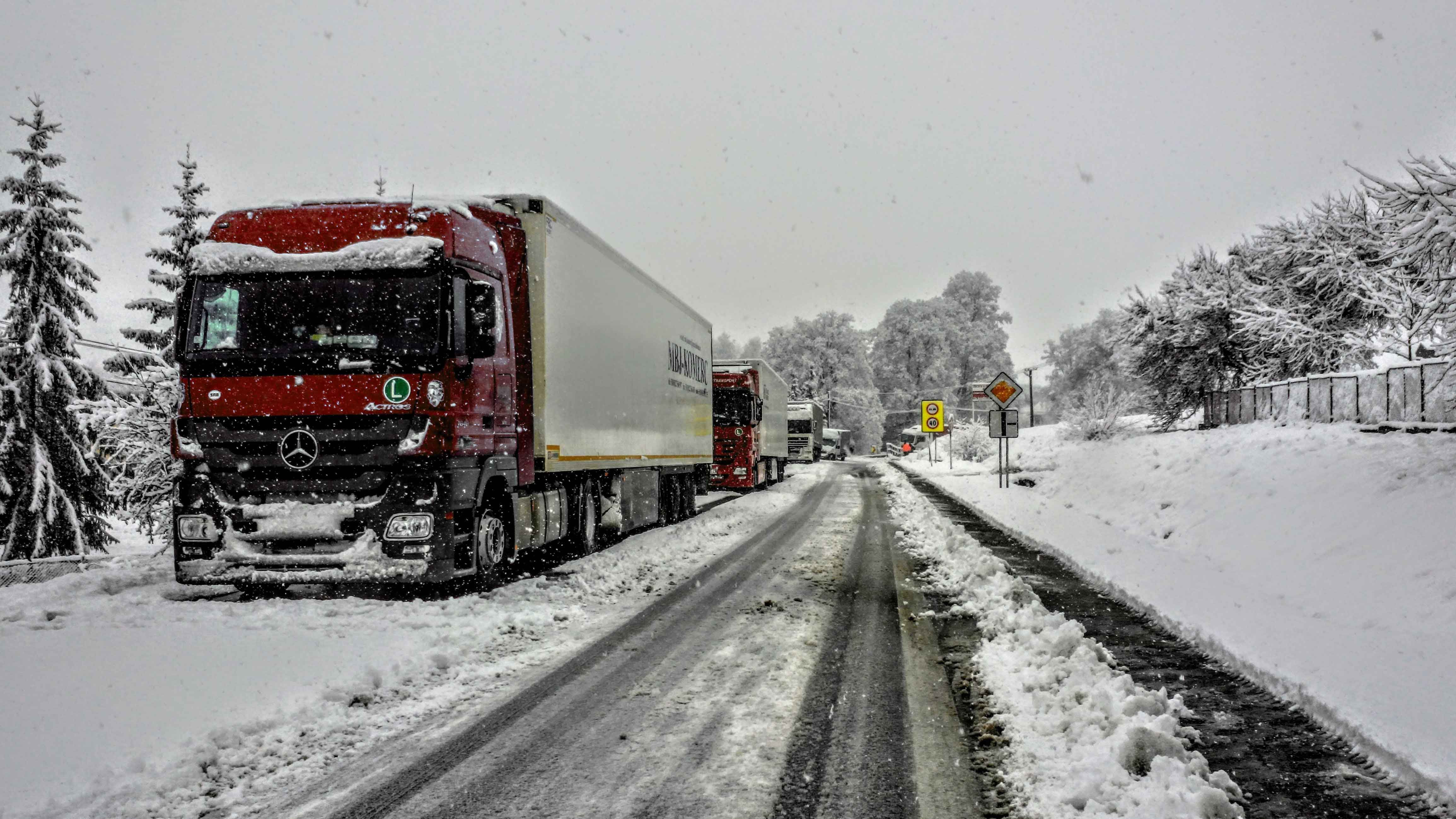
According to Freightwaves:
As Texas and other Southern states continue to thaw from last week’s major winter storms, backlogged freight should gradually find its way in and out of those areas.
Meanwhile, drivers will have to chain up as winter storms hit the Northeast and Northwest this week.
Northeast
Snowfall will spread across the Northeast Monday, including portions of the I-95 corridor. This won’t be a major storm, with large metropolitan areas like Philadelphia, New York City and Boston receiving only an inch or two. A mix of rain, snow and freezing rain will make roads, especially some bridges and overpasses, extra slick in Baltimore and Washington.
Most areas west of I-95 will see up to 5 or 6 inches of snowfall, with locally higher amounts downwind of lakes Erie and Ontario. This includes places mainly in western New York, impacting I-81 and I-90. Lake-effect snow showers will linger there on Tuesday and possibly Wednesday too.
Northwest
The Cascades and northern Rockies will get pounded by additional periods of heavy snowfall through Friday. Wednesday may be the only day this week with little to no snowfall.
Snowfall totals in the higher elevations could reach 36-plus inches, which isn’t debilitating. But drivers will have to slow down as they travel over mountain passes.
Winds will be strong enough to produce blowing snow and possible whiteout conditions Monday in western Montana. The National Weather Service has issued a blizzard warning for the northern Rocky Mountain Front, including the Logan Pass area. Winds there could gust as high as 75 mph.
Even in areas of Montana where snowfall doesn’t occur, winds will pose a high risk of rollovers. Gust will hit 60 to 80 mph across most of the state Monday.
Some lower elevations in the Cascades and northern Rockies may get drenched with up to 4 inches of rainfall. Mudslides and localized flooding could lead to roadblocks.
By: LFS Marketing
February 23, 2021

According to Freightwaves:
Borderlands is a weekly rundown of developments in the world of United States-Mexico cross-border trucking and trade. This week: Winter freeze devastates Texas produce industry; $100 million industrial park to be built near U.S.-Mexico border; USITC determines blueberry imports don’t harm U.S. growers; and CBP seizes marijuana worth $1.1 million.
Winter freeze could devastate Texas produce industry
The arctic blast that barreled through Texas last week dealt the Rio Grande Valley produce industry a blow, harming crops and potentially damaging future groves in the region.
The weather event was one of the worst the Rio Grande Valley has ever seen, said Tommy Wilkins, director of sales at Donna, Texas-based Grow Farms Texas.
“I have been in the business for 45 years and I do not recall this widespread cold and the temperature level they got down to, and for a significant amount of time it stayed down,” Wilkins told FreightWaves.
Grow Farms Texas is a grower, distributor and shipper of everything from bell peppers, eggplant and squash to red cabbage, sweet onions and avocados.
“This will be a major hit to growers across the board. It will be a couple of days before we see the total extent of damage,” Wilkins said.
The Rio Grande Valley is the epicenter of the Lone Star State’s produce industry. The area stretches across the southeastern tip of Texas along the U.S.-Mexico border. The region includes cities such as Donna, Edinburg, McAllen, Mission and Pharr.
More than 35 types of fruits and vegetables are grown in the Rio Grande Valley, including grapefruit, oranges, avocados, cabbage, aloe vera, onions, cotton, sugarcane and watermelons.
The produce industry in the valley includes cold storage warehouses, wholesalers, distributors, customs brokers and transportation companies.
The winter freeze will affect the entire industry, from growers to shippers to packing and transport drivers, said Dante Galeazzi, president of the Texas International Produce Association.
Along with the freezing temperatures, the Rio Grande Valley like most of Texas had to contend with blackouts that affected millions across the state.
“The loss of power has been a tremendous issue. It makes accessing product in the warehouses nearly impossible,” Galeazzi said. “Most forklifts are electric now, so without a way to charge that equipment there was no way to move pallets of product in warehouses without power.”
Galeazzi said power began returning to the valley around Wednesday for many businesses, and warehouses were coming back online.
“Unfortunately, we’re seeing there are no trucks to move product out of these warehouses. Equipment is being delayed throughout the state by snow, icy roads, sleet and freezing rain,” Galeazzi said. “Even if you could get a truck, how would they get out of the area with all the fuel shortages?”
FreightWaves’ Reefer Outbound Tender Reject Index for Texas (ROTRI.TX) shows reefer rejection rates rising from near 27% on Feb. 11 to almost 32% on Thursday. Reefer rejections for Houston (ROTRI.HOU) rose from 36% to 61% over the same period, while Dallas (ROTRI.DAL) reefer rejections hovered around 28% for most of the week.
The increase in reefer rejections in Houston and across most of Texas is an indication carriers have less availability, which is pushing rates back up.
“I heard [Thursday] morning that there was several hundred loads posted available, and something like five trucks available with transportation rates for spot market transactions several thousand dollars higher than the week prior in the same lanes,” Galeazzi said.
Wilkins said the freeze will force his company to change shipping strategies this season.
“We will not load the truckload volume like we would have for sure in previous years,” Wilkins said. “Citrus, onions, dry vegetables, watermelons, what an unfortunate blow to farmers who give it their all.”
April Flowers, director of marketing for Lone Star Citrus Growers (LSCG), said it is too soon to tell how much damage the freeze caused to their groves.
“It will take several weeks to get a clear picture of the extent of the damage, but we already had an early bloom on some trees that was lost in the freeze, so we’ll likely have a smaller crop next year — the jury is still out on that estimate,” Flowers said. “The next several weeks will provide a clearer picture as the trees defoliate and then have an opportunity to flush.”
LSCG is based in Mission, Texas. The company is a grower, packer, marketer, juicer and shipper of Texas red grapefruit and oranges.
Flowers said part of the company’s crop hadn’t been harvested when the freeze hit on Feb. 14.
“LSCG was fortunate in that we only had about 15% of our remaining crop still hanging on the trees,” Flowers said. “That fruit won’t make it to the fresh market, and it is now being harvested for juice. I have heard other grower estimates as high as 50-60% still on the tree.”
Bret Erickson, senior vice president of business affairs at J&D Produce, said their vegetable crop was severely damaged.
Edinburg, Texas-based J&D Produce is a grower and shipper of fresh greens, honey sweet onions and melons.
“We are still assessing all of our crops with the hope we may be able to salvage some of our items, but only time will tell,” Erickson said. “As far as onions, we are cautiously optimistic that we may have avoided a complete loss, but again, we still need more time.”
Erickson said although there is still a lot of uncertainty on what the final damage will be, “there is no question that this was a very damaging weather event for all vegetable and citrus producers in our region.”
$100M industrial park to be built near US-Mexico border
Construction recently began on a $100 million, 50-acre industrial park called the Landmark at Otay near the U.S.-Mexico border in Southern California.
The Landmark at Otay will be 845,830 square feet of Class-A development spread across four buildings ranging in size from 153,630 to 240,975 square feet.
The project aims to take advantage of the growing commercial traffic near the Otay Mesa port of entry, as well as infrastructure improvements near San Diego, according to Tom Simmons, vice president of Majestic Realty Co.
“Low vacancy rates and need for additional industrial inventory make this the ideal time to bring Landmark at Otay to market and open up opportunities for additional companies to expand — in this important geographic market,” Simmons said in a statement.
California-based Majestic Realty is developing the Landmark at Otay in a partnership with Sunroad Enterprises and Colliers International Group.
USITC determines blueberry imports don’t harm US growers
After a six-month investigation, the U.S. International Trade Commission ruled that imported blueberries “do not seriously injure” the domestic blueberry industry.
The 5-0 ruling by USITC commissioners ends an inquiry that could have resulted in recommendations of tariffs on imported fresh and chilled blueberries in order to protect U.S.-based growers.
Mexico is one of the leading suppliers of blueberries to the U.S., accounting for $219 million worth of imports in 2019, according to the U.S. Department of Agriculture. Peru was the top supplier of blueberries to the U.S. in 2019, accounting for $485 million.
The determination was hailed as a victory by the Fresh Produce Association of the Americas (FPAA), a Nogales, Arizona-based group representing produce importers.
“While FPAA is pleased with the determination, FPAA remains extremely concerned by the number of trade investigations opened recently by U.S. Trade Representative on imported produce, especially key commodities from Mexico, our No. 1 trade partner,” the group said in a statement.
CBP seizes marijuana worth $1.1M in Laredo
U.S. Customs and Border Protection (CBP) agents in Laredo, Texas, recently discovered 5,280 pounds of alleged marijuana in a tractor-trailer.
The seizure occurred Feb. 13 at the World Trade Bridge cargo facility. Officers found 336 packages of alleged marijuana in the trailer of a tractor hauling auto parts from Mexico. The narcotics have an estimated street value of $1.1 million.
The case was turned over to the Department of Homeland Security Investigations.
By: LFS Marketing
February 23, 2021

According to Freightwaves:
The severe winter storms that have devastated Texas and surrounding states have delayed the distribution of 6 million COVID-19 vaccine doses. But Dr. Anthony Fauci, director of the National Institute of Allergy and Infectious Diseases, said it’s only a “temporary setback” that will be fixed by the middle of this week.
“Obviously it is a setback because you’d like to see the steady flow of vaccines getting out there to get into people’s arms, but we can play pretty good catch-up,” Fauci said Sunday on NBC’s “Meet the Press.”
“The number was 6 million doses [that] got delayed. We’ve gotten 2 million out, and we project that by the middle of the week we will have caught up,” Fauci said.
Parts of Texas and other Southern states were slammed with multiple daily record snowfalls last week, ranging from 4 to nearly 12 inches in places like Dallas, Little Rock, Arkansas, and Memphis, Tennessee. Freezing rain formed thick ice, leading to widespread, prolonged road closures. Many cities had record low temperatures, some subzero, and subfreezing conditions lasted for several days. The region began thawing over the weekend.
The brutal weather left millions of people without power — about 4 million in Texas alone at one point last Tuesday. Even though power has been restored to most of Texas and other affected states, broken pipes mean many still lack clean water. President Joe Biden declared a major disaster in 77 counties across Texas, making them eligible for federal recovery funds, and some emergency management officials want to include the entire state in the disaster declaration.
The rough weather prompted what the Centers for Disease Control and Prevention called “widespread delays in COVID-19 vaccine shipments and deliveries.” Power failures also forced some health care officials to quickly administer vaccine doses before they spoiled.
More than 57 million doses of the vaccines have been administered — with 41 million first doses administered and 16 million people fully vaccinated with the two-dose regimen — according to an NBC News analysis.
Overall freight volumes, as well as vaccine shipments, should snap back this week. But it may take some time for carriers to work through the freight disrupted by the storms. According to FreightWaves market expert Seth Holm, this will keep upward pressure on tender rejection rates — the rate at which shipper requests for truckload capacity are rejected by carriers — as well as spot rates through the end of February and right into the beginning of the spring freight season.
As of Sunday, the average daily number of COVID-19 cases continued to plummet from a post-holiday peak. The U.S. has reported more than 100,000 new daily cases on only one of the last 14 days, a month after it regularly hit more than 200,000 new cases each day. Daily deaths are decreasing too, but at a slower rate, still regularly eclipsing 2,000.
By: LFS Marketing
February 23, 2021
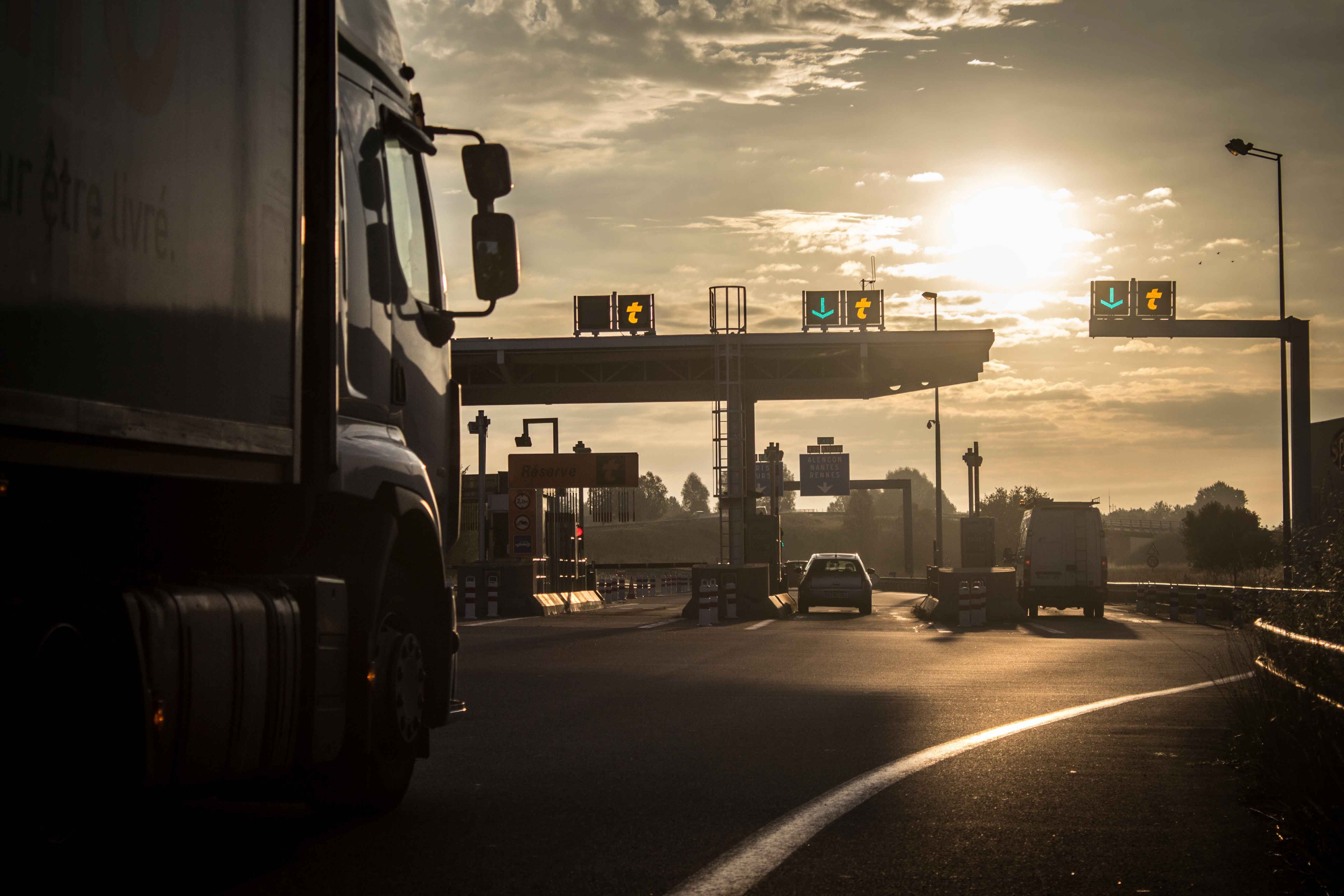
According to Freightwaves:
In 2020, Laredo, Texas, once again led the U.S. in exports, according to the latest Census Bureau data analyzed by WorldCity.
Port Laredo finished on top of the rankings for exports for the second straight year, totaling $80 billion in outbound shipments during 2020.
Laredo’s top 10 exports were motor vehicle parts ($8.9 billion), engines ($3.4 billion), gasoline ($3.1 billion), engine parts ($1.2 billion), plastics ($1.1 billion), cell phones ($1.1 billion), taps and valves for pipes ($1 billion), chemical reaction initiators ($978 million) and computer chips ($944 million).
Port Laredo accounted for 5.6% of all exports from the U.S. during 2020, followed by John F. Kennedy International Airport (5.5%), Port of Houston (5.2%), Detroit’s Ambassador Bridge (4.7%) and the Port of New Orleans (4.6%).
The port, operated by the city of Laredo, includes the World Trade Bridge, the Colombia Solidarity Bridge and Laredo International Airport.
Laredo also posted $126 billion in imports during 2020, led by vehicle parts ($15.7 billion), new cars ($11.1 billion), tractor trucks ($5.6 billion) and computers ($5.5 billion).
Port Laredo finished fourth overall during 2020 among the nation’s 450 international gateways for trade, behind the Port of Los Angeles, Chicago O’Hare International Airport and John F. Kennedy International Airport.
Mexico was Port Laredo’s top international trading partner during 2020, accounting for $201 billion in total trade.
China came in second, posting $1.2 billion in total trade with Port Laredo in 2020, followed by France ($540 million), Japan ($373 million), Nicaragua ($215 million), Malaysia ($210 million), Germany ($206 million) and Thailand ($205 million).
--
LFS keeps you updated with the latest news, if you need additional information about our freight shipping solutions, contact us or follow us on Linkedin.
For cargo insurance experts, please contact Skholl, our partner to avoid any freight damage.
--
By: LFS Marketing
February 16, 2021
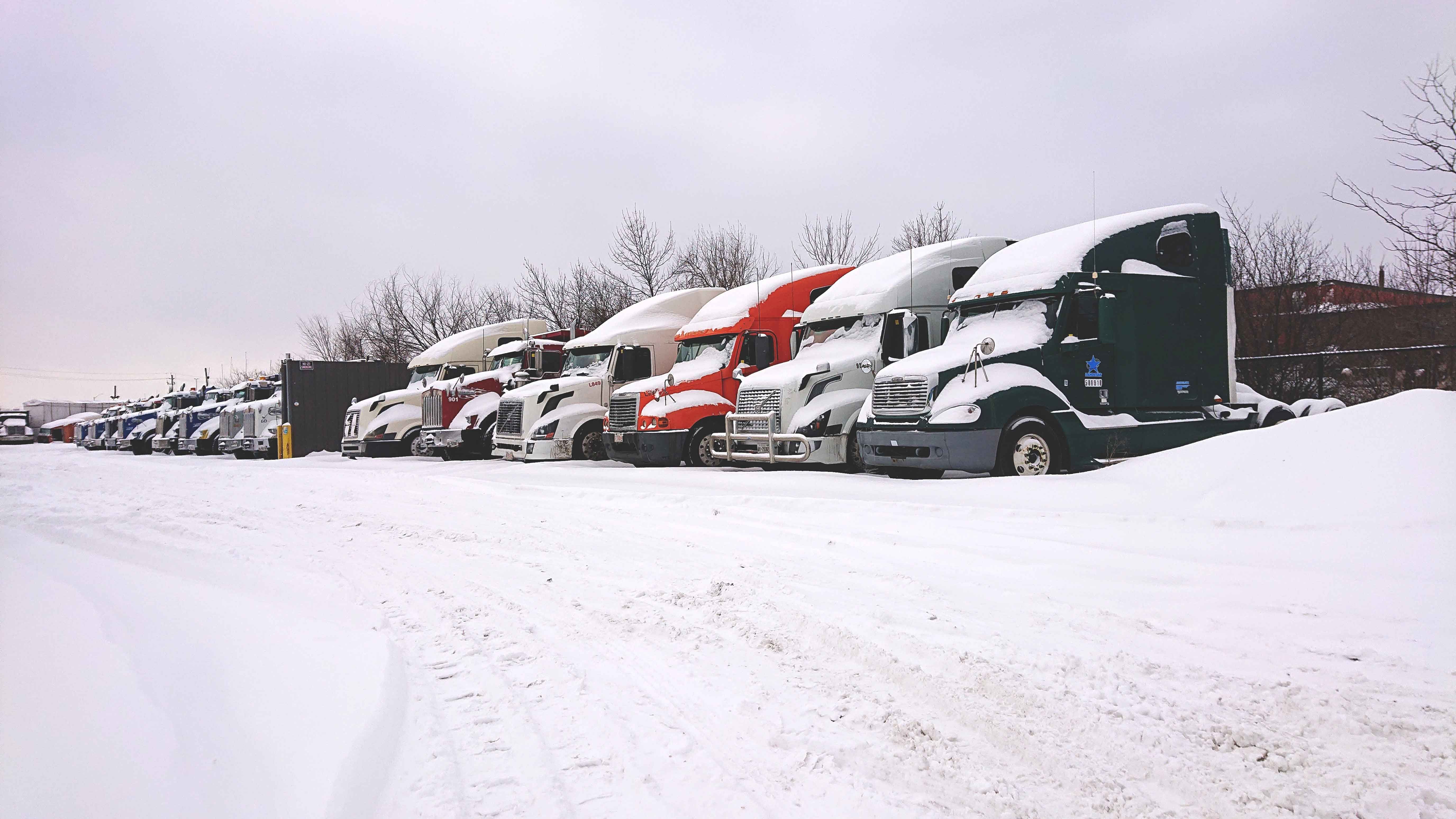
According to Freightwaves:
The historic winter that hit the South Sunday and Monday is gone. But several states remain bitterly cold and roads remain covered in ice and snow.
Besides road closures, several airports and intermodal terminals are closed. Meanwhile, millions of people have no electricity, and a follow-up storm is forecast to hit many of the same areas later Tuesday.
Rough roads
Portions of interstates, as well as U.S. and state highways, have been shut down. Truckers will hit delays from Texas and Oklahoma to the Ohio and Tennessee valleys, including places such as Dallas and Houston; Oklahoma City and Tulsa, Oklahoma; Little Rock, Arkansas; Jackson, Mississippi; Memphis and Nashville, Tennessee; Louisville, Kentucky; as well as Cincinnati and Columbus, Ohio.
Power problems
As of 11 a.m. ET Tuesday, about 4.4 million customers in Texas had no electricity, mostly in Houston, and many for 24 hours or more. Another several hundred thousand customers had no electricity across the remainder of the South.
Airports
The Houston Hobby (ICAO code: HOU) and George Bush Intercontinental (ICAO code: IAH) airports remain closed until 4 p.m. CT Tuesday, according to the Federal Aviation Administration. The Abilene Regional Airport (ICAO: ABI) in Texas, which closed late Monday afternoon, is scheduled to reopen at 10 a.m. CT Tuesday, and the Baton Rouge Metropolitan Airport (ICAO: BTR) in Louisiana remains closed until 12 p.m. CT Tuesday. The Jackson International Airport (ICAO: JAN) in Mississippi is slated to reopen at 11 p.m. CT Tuesday, and the Abraham Lincoln Capital Airport (ICAO: SPI) in Springfield, Illinois, is closed until 9 a.m. CT Wednesday.
Ground delays continue at Dallas-Fort Worth International Airport (ICAO code: DFW).
Rails
Union Pacific Railroad (NYSE: UNP) updated a customer alert Monday evening, saying it would close most of its intermodal terminals Tuesday morning.
“We anticipate the closures to last approximately 72 hours,” Union Pacific said.
CSX Transportation (NYSE: CSX) also told its customers to expect delays.
Forecast
Another winter storm coming from the Rockies is likely to produce some heavy snowfall, as well as more freezing rain and icy conditions, for many of the same areas hit by the last storm. This storm will begin later Tuesday in the southern Plains, ending late Thursday in the Tennessee and Ohio valleys. This comes after many cities have been hit by daily record snowfalls and record low temperatures. Travel will remain treacherous on the roads, rails and runways.
--
LFS keeps you updated with the latest news, if you need additional information about our freight shipping solutions, contact us or follow us on Linkedin.
For cargo insurance experts, please contact Skholl, our partner to avoid any freight damage.
--
By: LFS Marketing
February 16, 2021
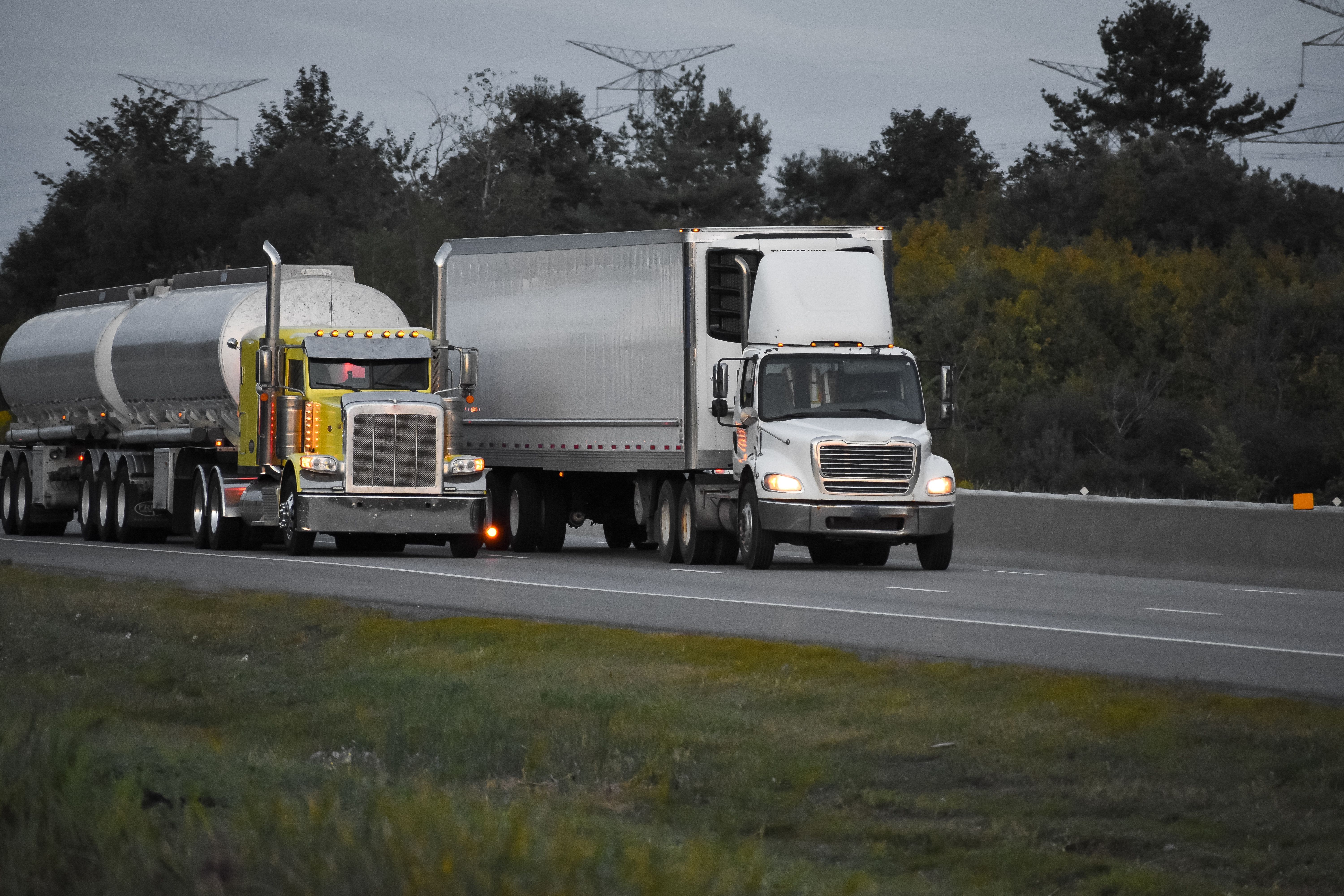
According to Freightwaves:
President Joe Biden is preparing to make good on a campaign promise to review critical supply chains and reduce American dependence on imports for pandemic-related equipment and materials.
In July 2020, while he was officially still the Democratic Party’s presumptive presidential nominee, Biden laid out a plan to help the U.S. prevent shortages of critical products needed in times of crisis. The plan was in response to what he and others saw as failed efforts of the Trump administration during the COVID-19 pandemic.
If elected, “Biden will launch a [100-day] review of U.S. supply chain vulnerabilities and implement a national strategy to close them,” the plan stated. “He will sign a comprehensive executive order … directing relevant agencies to identify the specific critical products where the U.S. faces national security supply chain vulnerabilities and to address these weaknesses immediately.”
That executive order is expected to be released “in the coming weeks,” according to reports citing unnamed administration sources. Relevant agencies named in a draft of the order include the White House National Security Council and the departments of Justice, Homeland Security and Commerce, Reuters reported.
Biden signed a related executive order in January aimed at strengthening COVID-19 supply chains. It directs federal agencies to fill supply chain shortfalls that include shortages of needle syringes available to administer the vaccine. It was one of a flurry of presidential actions issued by Biden the day after he was sworn in as president.
Last year’s supply chain review strategy asserted that the current pandemic exposed how the U.S. was vulnerable to global disruptions. “As president, Joe Biden will put Americans to work rebuilding domestic manufacturing of critical products to ensure that the U.S. and our allies have the capacity and resilience to make what we need for our national security, rather than be dependent on countries like China,” it stated.
The plan also stated that while medical supplies and equipment are the most pressing and urgent needs, “U.S. supply chain risks are not limited to these items. The U.S. needs to close supply chain vulnerabilities across a range of critical products on which the U.S. is dangerously dependent on foreign suppliers. America needs a stronger, more resilient domestic supply chain in a number of areas, including energy and grid resilience technologies, semiconductors, key electronics and related technologies, telecommunications infrastructure and key raw materials.”
The plan stated that President Biden will:
--
LFS keeps you updated with the latest news, if you need additional information about our freight shipping solutions, contact us or follow us on Linkedin.
For cargo insurance experts, please contact Skholl, our partner to avoid any freight damage.
--
By: Freightwaves
February 9, 2021

According to Freightwaves:
In the months leading up to Super Bowl LV, demand for avocados was stronger than ever, said Aaron Acosta, corporate relationship manager at Stonehill Produce in Pharr, Texas.
Currently, Mexico is the only country in the market shipping avocados, as Peru, Chile and California have finished their seasons.
“We’re probably looking at about an 8% increase from last year. In overall volume it’s like we didn’t miss a beat, even with the coronavirus,” Acosta told FreightWaves. “We definitely have the support of retailers who usually set aside promotions for the Super Bowl, which is helping us move some incredible volume this year.”
Stonehill Produce imports Hass avocados from the state of Michoacán in central Mexico, where more than 80% of Mexico’s avocados originate.
Last year, Mexico exported 74,000 tons of avocados prior to the Super Bowl, according to the Mexican Avocado Producers and Packers (APEAM).
This year, around 1,360 weekly avocado shipments have been made during the weeks before the game, equivalent to a truck leaving Michoacán every seven minutes for the U.S., according to APEAM.
“Although 2020 represented a year of challenges for all economic sectors worldwide, Mexican avocado exports maintained a good growth rate, increasing by 12% during the second half of 2020, compared to 2019, when 551,226 tons of avocados were shipped,” APEAM said in a statement.
After the avocados are picked and packaged in Michoacán, they are brought over through the Mexican border to the U.S., usually either through the ports of entry in Laredo or Pharr, Texas.
There was a run-up in outbound tender rejections in the Laredo (OTRI.LRD) and the McAllen and Pharr markets as the Super Bowl approached.
--
LFS keeps you updated with the latest news, if you need additional information about our freight shipping solutions, contact us or follow us on Linkedin.
For cargo insurance experts, please contact Skholl, our partner to avoid any freight damage.
--
By: LFS Marketing
February 9, 2021

According to Freightwaves:
A prolonged outbreak of arctic cold will soon spread across more than a dozen states. Truckers may have issues with fuel gelling and brakes cracking from the Plains to parts of the Northeast.
A strong arctic air mass plunged into the north-central U.S. and Midwest regions over the weekend and will linger virtually all of this week. The impact zone stretches from Montana and eastern Wyoming to the Dakotas, Great Lakes and Central Plains.
Extreme cold (some possibly near record levels), strong winds and snowfall in the favored lake-effect snow areas of the Great Lakes could impact supply chains and business operations for an extended period of time. The most intense lake-effect snowfall will hit western Michigan, the Upper Peninsula of Michigan, northern Ohio and western New York.
In addition, numerous light to moderate snow systems will move across portions of the central Plains and Midwest during the upcoming week. The snow in these areas will add to the transportation issues in the frigid conditions.
This area typically gets cold in the middle of winter, but this air mass is much colder than normal for early February. Late-night lows will drop below zero across several states this week, possibly as cold as the 20s and 30s below zero from eastern Montana to North Dakota and northern Minnesota.
Temperatures will remain below zero day and night in these locations, while wind chills will be a brutal 30 to 50 below zero. Because flatbed drivers have to spend a lot of time outside their trucks, it will be crucial for them to dress in layers, covering as much skin as possible. In these kinds of temperatures and wind chills, it takes 10 minutes or less for frostbite to set in. Wind chills as low as 25 below zero will hit as far south as Nebraska.
Everyone involved in freight and supply chains should expect disruptions to transportation networks — road, rail and air. Issues ranging from vehicle performance (trucks, cars and locomotives) to rail issues (frozen switches) are likely. Business operations could be impacted since workers may not be able to travel due to the dangerous conditions. Livestock will also be at risk.
This deep freeze will continue to impact truckers in major metropolitan areas such as Chicago; Detroit; Cleveland; Milwaukee; Minneapolis; Kansas City, Missouri; Indianapolis; and Columbus, Ohio. Smaller cities include Great Falls and Billings, Montana; Pierre, South Dakota; Fargo, North Dakota; Des Moines, Iowa; Omaha, Nebraska; Erie, Pennsylvania; and Buffalo, New York. Highs in many of these spots will only reach the single digits and teens all week.
--
LFS keeps you updated with the latest news, if you need additional information about our freight shipping solutions, contact us or follow us on Linkedin.
For cargo insurance experts, please contact Skholl, our partner to avoid any freight damage.
--
By: LFS Marketing
February 9, 2021

According to Freightwaves:
The Outbound Tender Volume Index (OTVI) rose 2.7% this week to 14,051. It makes sense to adjust for the level of rejected tenders accounted for in OTVI to get a clearer look at year-over-year (y/y) comparisons. On a rejection-adjusted basis, volumes are up 21% y/y, a slight deceleration from last week’s 23% growth rate.
The West Coast port markets that drove much of the freight volumes in the back half of 2020 heated up again this week. Los Angeles and Ontario, California, are two of the largest markets in the country and each saw volumes rise more than 7.5% over the past week. The rapid transition to e-commerce and stimulus-driven consumer demand has kept the Port of LA/Long Beach complex running at full capacity for months now. The same goes for Georgia Ports. Georgia Ports Authority (GPA) Executive Director Griff Lynch hasn’t seen a lull nor does he expect to. Shippers have front-run Lunar New Year, but sailings are not being canceled in normal fashion.
Port markets on both coasts saw volumes pick up significantly this week. Savannah, Georgia, Elizabeth, New Jersey, and the West Coast ports all picked up (and New Orleans, too).
The most recent Bank of America credit card spending data included positive and interesting data on stimulus recipients’ marginal propensity to consume (MPC). The MPC is an economic concept that captures the amount of spending that comes from a source of income — in this case, stimulus checks. What the researchers found was the MPC of the second round of stimulus was much higher than the first — meaning recipients are spending the second round at a faster rate than the first in April. Even then, only 15% of stimulus received so far has been spent, still leaving open the possibility of pent-up demand in coming weeks.
This is great news for freight volumes. While the vaccine rollout has picked up speed and America vaccinated 1.6 million people in a single day this week, the vast majority of the population remains unvaccinated and still unable to enjoy a normal range of activities (including spending on services). With services still unavailable, it is safe to say the bulk of the stimulus is being spent on both durable and nondurable goods, further fueling the freight markets.
Last week, industrial production data for December was released and surprised to the upside. With consumers continuing to spend (up 5.2% y/y this week), a nascent industrial recovery, a red-hot housing market and retailers with weeks (and possibly months) of inventory replenishment ahead, the near-term future for freight demand appears solid.
On a positive note, nine of the 15 major freight markets that we monitor as a broad, representative benchmark were positive on a week-over-week basis. This ratio strengthened back to the stronger levels it has become accustomed to in recent months as the freight market rallies. The markets with the largest gains this week in OTVI.USA were Newark, New Jersey, (15.45%), Memphis, Tennessee (10.32%), and Savannah (8.45%). The markets with the largest drops this week in OTVI.USA were Fresno, California (-12.38%), Houston (-4.35%) and Chicago (-3.13%)
Tender rejections slipping but still elevated
The Outbound Tender Reject Index (OTRI) has seemingly found a floor, moving less than 2 percentage points over the past three weeks. OTRI descended from the all-time high on Christmas Day near 28% to 21.52% currently, and the rate of decline has decelerated meaningfully over the past two weeks.
The decline was not due to an influx of capacity rushing in, nor a steep decline in demand. Instead, it may have been a matter of price. The falling rejection rates have likely been driven by improving routing guides with new, much higher contract prices. We may see further declines in OTRI over the coming weeks due to this factor, but if demand remains high (which we believe is more than likely), OTRI will remain high relative to historical averages until bottlenecks at driver training schools can be resolved.
The freight market is still incredibly tight, and capacity is not easy to source versus historical standards. The tight market is being rewarded with higher contract rates, which may continue to put downward pressure on both tender rejections and spot rates in the coming weeks.
This doesn’t mean we should expect tender rejection rates to fall back near historical averages. Freight volumes remain up over 20% y/y and have not shown any signs of slowing anytime soon. The off-the-charts, record new equipment orders will surely impact capacity at some point. However, it will likely take several months for this equipment to be delivered, and even then, if the bottlenecks at driver training schools are not resolved, the impact could be muted.
--
LFS keeps you updated with the latest news, if you need additional information about our freight shipping solutions, contact us or follow us on Linkedin.
For cargo insurance experts, please contact Skholl, our partner to avoid any freight damage.
--
By: LFS Marketing
February 2, 2021

According to Freightwaves:
Freight forwarders, cargo security companies, truck drivers and warehouse operators are also covered by a new face mask mandate on commercial travel when they are on airport or seaport property, according to agencies implementing the rule.
The Transportation Security Administration on Monday issued a security directive to airport operators saying it will enforce the weekend order from the Centers for Disease Control and Prevention that persons entering or on a transportation hub wear a mask. President Joe Biden instructed agencies to require mask wearing for domestic and international travel to reduce the spread of the coronavirus, but the rules also apply to airports, seaports and border crossings.
Solo truck drivers operating over-the-road are exempt from the CDC mask requirement.
Operators of transportation hubs are required to ensure that people entering or on their premises wear a mask. Those who fail to comply may be removed and denied reentry, the TSA directive said.
Individuals who refuse to wear a mask may be subject to federal penalties.
The document tells airports to ask individuals to put a mask on and escort them from the property if they refuse.
The Airforwarders Association on Sunday advised members to expect more workplace regulations related to the COVID-19 outbreak from the Occupational Safety and Health Administration in response to the president’s Jan. 21 executive order on protecting worker health and safety.
--
LFS keeps you updated with the latest news, if you need additional information about our freight shipping solutions, contact us or follow us on Linkedin.
For cargo insurance experts, please contact Skholl, our partner to avoid any freight damage.
--
By: LFS Marketing
February 2, 2021
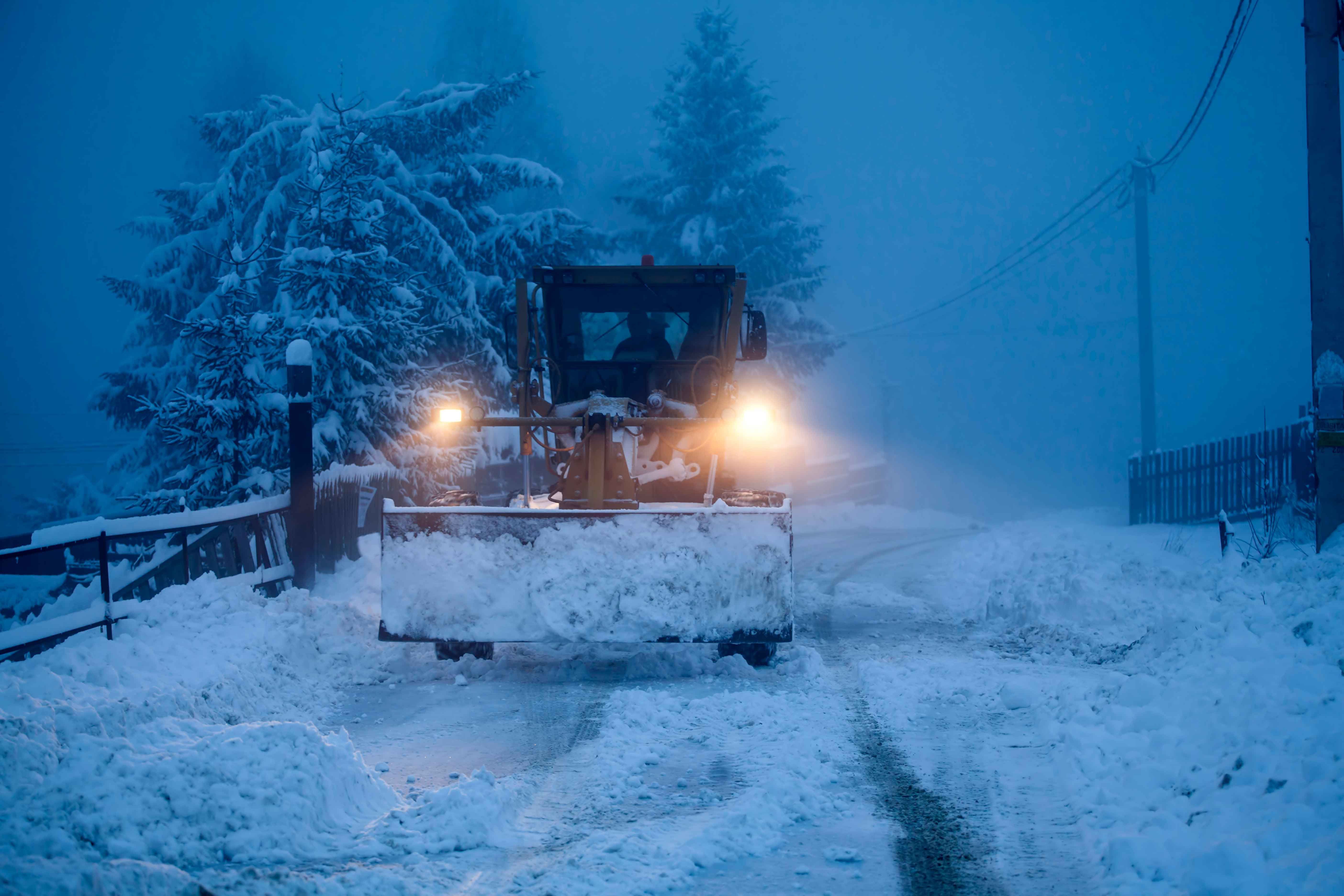
According to Freightwaves:
A strong nor’easter — the strongest of the season so far for many cities — has been dumping heavy snowfall in the Northeast. The storm began Sunday and has become more intense Monday, with snowfall rates of up to 2 inches per hour.
Gov. Andrew Cuomo declared a state of emergency late Monday morning for New York City and nine other counties throughout the Hudson Valley and Long Island. The counties included in the emergency declaration are Sullivan, Ulster, Dutchess, Orange, Putnam, Rockland, Westchester, Nassau and Suffolk.
The governor also issued an advisory for travelers and commuters. Above-ground subway service, as well as service on portions of the Long Island Railroad and Metro-North, may be significantly delayed or stopped this afternoon. Additionally, a number of major roads, including the Long Island Expressway and Interstate 84, could face travel bans if snowfall rates reach the forecast 2-3 inches per hour. New Yorkers are being urged to avoid all unnecessary travel.
“This storm is no joke and the main concern right now is that the expected snowfall rate of 2 [to 3] inches per hour this afternoon creates an extremely dangerous situation on our roadways,” Cuomo said. “When snow is falling that quickly, it makes it very difficult for plows to keep up with it. I want New Yorkers to hear me loud and clear: Stay home and off the roads and if you must travel, get where you’re going before noon, and expect to remain home for some time. We’ve been through this before and we will get through it again.”
This is a slow-moving storm which may not exit New York state and northern New England until Wednesday. By the time it’s all said and done, parts of the New York City metropolitan area could see snowfall totals of 12 to 20 inches. The same goes for other places from the mid-Atlantic to New England, including cities along the Interstate 95 corridor such as Baltimore, Philadelphia, Boston and Washington, D.C. Wind gusts across the region will range from 40 to 60 mph. Blowing snow will create whiteout conditions, and coastal flooding is possible.
As of 3 p.m. ET Monday, the New York State Department of Transportation has banned tandem and empty trailers from the following highways:
--
LFS keeps you updated with the latest news, if you need additional information about our freight shipping solutions, contact us or follow us on Linkedin.
For cargo insurance experts, please contact Skholl, our partner to avoid any freight damage.
--
By: LFS Marketing
February 2, 2021

According to TTnews:
U.S. consumer sentiment cooled more than forecast in January, adding to signs consumers may be growing less optimistic as vaccinations roll out amid soaring new infections.
The University of Michigan’s preliminary sentiment index fell to 79.2 from 80.7 last month, data released Jan. 15 showed. The figure fell below the forecast in Bloomberg’s survey of economists that had called for a slight pullback to 79.5.
The gauge of current conditions fell 2.3 points to 87.7, while a measure of expectations dropped 0.8 point to 73.8, according to the survey conducted Jan. 2-13.
The slightly more downbeat sentiment reading signals that consumers may be starting the year with less faith in the economic recovery as soaring virus cases lead to new restrictions just as inoculations become more available. Nearly 1 million Americans filed for unemployment benefits last week after the biggest jump in claims since March, a report showed Jan. 14.
The report also showed inflation expectations picking up. Consumers expect a year-ahead inflation rate of 3%, the highest since August, up from 2.5% readings both last month and a year earlier. The five-year estimate rose to 2.7% from 2.5%.
A separate report earlier Jan. 15 showed that retail sales decreased 0.7% in December from the prior month, the latest indication that the new year may face a shaky start. Meanwhile, more support may be on the way: President-elect Joe Biden said Jan. 14 he will ask Congress for $1.9 trillion to fund immediate relief for the economy.
--
LFS keeps you updated with the latest news, if you need additional information about our freight shipping solutions, contact us or follow us on Linkedin.
For cargo insurance experts, please contact Skholl, our partner to avoid any freight damage.
By: LFS Marketing
January 19, 2021
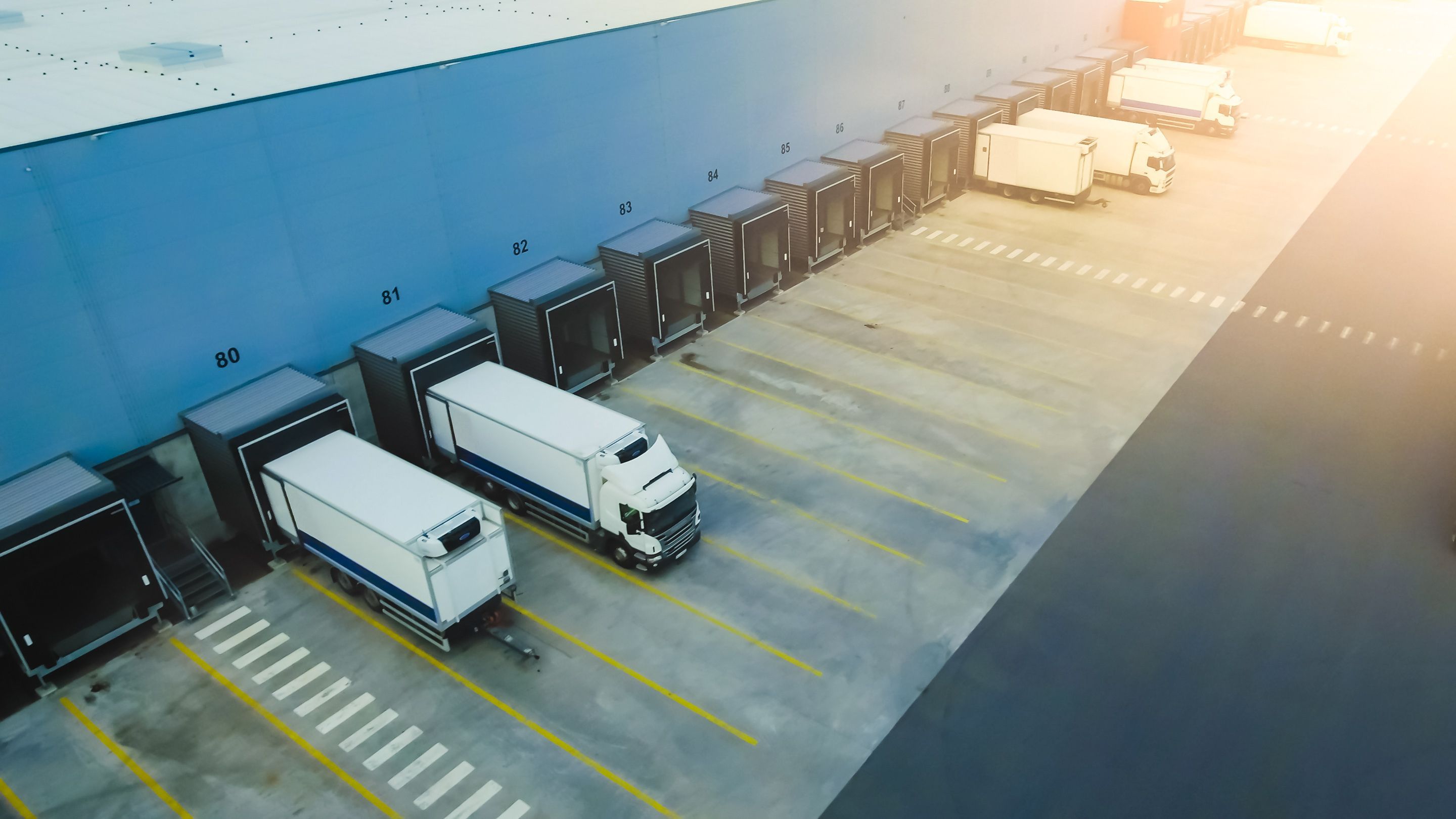
According to Freightwaves:
Borderlands is a weekly rundown of developments in the world of United States-Mexico cross-border trucking and trade. This week: Laredo gets its third cold storage inspection facility; a Texas trucking company is acquired by Phoenix Logistics; SE-Freight gets 30 Kenworth trucks; and Revere Plastics acquires a Mexican factory.
Laredo gets third cold storage inspection facility
Officials in Laredo, Texas, are planning to build a third temperature-controlled federal import inspection facility to accommodate cross-border produce from Mexico.
The 22,000-square-foot, 18-bay facility will be located near the Colombia Solidarity International Bridge, 20 miles north of Laredo. The project is part of a public-private partnership with Laredo-based Garros Services.
Under the partnership, Garros Services will build the $10 million facility on property it owns near the bridge, according to the Laredo Morning Times. No timetable for construction has been announced.
“The $10 million building will be substantially larger than the two current inspection installations,” said Teclo Garcia, the economic development director for the city of Laredo.
Garros Services currently operates Laredo’s cold storage inspection facilities at the World Trade Bridge and the Colombia Solidarity Bridge.
Garros Services is a business owned by Eduardo Garza, the founder of Uni-Trade, a customs broker and logistics firm with offices in both Laredo and Nuevo Laredo, Mexico.
Garza recently has discussed adding a free-trade zone on the Mexican side of the World Trade and Colombia Solidarity bridges along the Texas-Mexico border.
Port Laredo imported about $3.7 billion in produce from Mexico through the first 10 months of 2020, according to WorldCity. Avocados led the way, with almost $900 million in imports, followed by berries at $765 million and tomatoes at $558 million.
In December, Livonia, Michigan-based Mastronardi Produce opened a 185,000-square-foot logistics facility near its current distribution center in Laredo near the World Trade Bridge.
Leamington, Canada-based Nature Fresh Farms also opened in December a 61,000-square-foot distribution center in Laredo aimed at being a major hub for its fresh produce imports from Mexico.
Texas trucking company acquired by Phoenix Logistics
Longview, Texas-based Sam Dunn Express (SDX), a nine-truck carrier, was recently acquired by Phoenix Logistics, an affiliate of Milwaukee-based Phoenix Investors.
Along with the acquisition of SDX, Phoenix Logistics also acquired Sam Dunn Enterprises Inc., a warehousing, logistics, distribution and fulfillment firm in Longview. SDX and Sam Dunn Enterprises will become part of Phoenix National Transportation, a newly formed regional trucking business.
“Phoenix National Transportation is an exciting new venture for the Phoenix companies; its addition is the next step in providing even more comprehensive services for our valued clients and partners,” said David M. Marks, president and CEO of Phoenix Investors.
Phoenix National Transportation will provide over-the-road transportation services in northeast Texas and nearby states, catering to the food, beverage and alcohol industries. Sam Dunn’s facilities in Longview will be absorbed by Phoenix Logistics and become its 10th location.
SE-Freight de México takes delivery of 30 Kenworth trucks
SE-Freight de México recently acquired 30 Kenworth T680 trucks equipped with 52-inch mid-roof sleepers and Cummins X15 Euro V engines.
SE-Freight de México was founded in 2008 in San Luis Potosí, Mexico. The company offers cross-border transport, distribution and storage services with locations in San Luis Potosí and Nuevo Laredo, Mexico, as well as Laredo, Texas, and Canada, according to its website.
The Kenworth trucks were manufactured at the Kenworth Mexicana factory in Mexicali, Mexico.
Revere Plastics Systems acquires Mexican factory
Revere Plastics Systems recently acquired Alliance-McAlpin NY and its Mexican factory in Ramos Arizpe, Mexico.
The acquisition, which closed Dec. 30, establishes Revere’s first manufacturing facility in Mexico, according to a release. Ramos Arizpe is located 178 miles south of Laredo.
“This acquisition gives Revere an important foothold in the vibrant manufacturing region of northeastern Mexico,” Revere CEO Glen Fish said in a statement.
The factory in Ramos Arizpe employs 180 people and operates in a 53,000-square-foot facility. Revere’s customers include automotive companies, HVAC, appliances, recreational products, metering devices and business office machines.
Revere Plastics Systems is headquartered in Novi, Michigan. The company employs about 1,000 people and operates eight manufacturing facilities in the U.S., Canada and Mexico.
--
LFS keeps you updated with the latest news, if you need additional information about our freight shipping solutions, contact us or follow us on Linkedin.
For cargo insurance experts, please contact Skholl, our partner to avoid any freight damage.
--
By: LFS Marketing
January 19, 2021
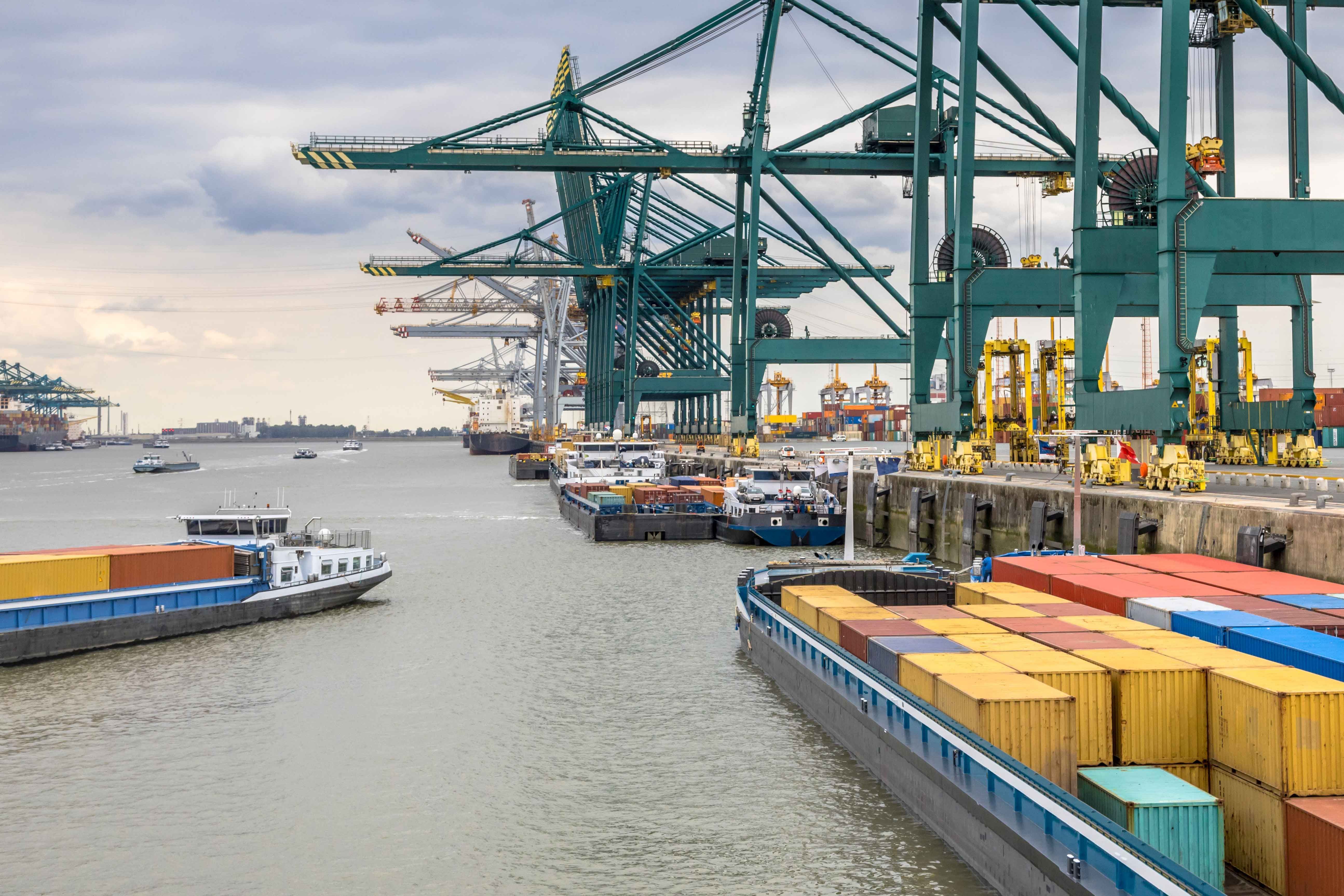
According to Freightwaves:
The Port of Long Beach’s busiest year ever is in the books, with more than 8.1 million container units moved in 2020.
Two other records were achieved: December, with 815,885 twenty-foot equivalent units (TEUs) moved, was the busiest month ever and Q4 was the busiest quarter in the port’s 110-year history with 2,406,010 TEUs handled.
The port said that despite “economic uncertainty due to the COVID-19 pandemic and the ongoing trade war with China,” it handled a total of 8,113,315 TEUs in 2020, 6.3% more than in 2019 and beating the record-setting 2018 by 22,292 TEUs.
Imports increased 6.6% year-over-year to 3,998,340 TEUs, while exports were up only 0.2% to 1,475,888 TEUs. The biggest jump came with the number of containers unloaded and then sent back empty to Asia — a 9.9% year-over-year increase to 2,639,088 TEUs. In other words, the Port of Long Beach moved over 1.16 million more empty containers than loaded exports in 2020.
Port of Long Beach Executive Director Mario Cordero issued a statement Friday in which he thanked the “frontline workers on the docks who kept cargo moving during this unprecedented moment in history, ensuring the safe, secure and timely delivery of vital medical equipmwent and consumer goods. We have all endured incredible hardships with COVID-19, but I am looking forward to 2021 as a time of economic recovery and a renewed focus on our industry partners, infrastructure projects and community stakeholders.”
A huge influx of imports in the fall pushed the port to its record-setting 8.1 million TEUs. The spread of the coronavirus made for a miserable spring, with the Port of Long Beach’s volumes down 17.3% year-over-year in April.
After the first six months of 2020, volume was down 6.9% year-over-year. The ports of Long Beach and Los Angeles had a combined 104 canceled sailings in the first half of the year, a huge spike from the 41 blanked calls during the same period in 2019.
“It was a different story for the second half of 2020, when preliminary estimates show that the port had 104 unscheduled container ship calls that made up for voyages canceled earlier in the year, more than quadrupling the unscheduled sailings reported during the same period in 2019,” the port said.
The 815,855 TEUs moved in December was a 22.6% hike from the same month in 2019. The total topped the record set in just October by 9,282 TEUs. In December alone, empties jumped 26.3% year-over-year to 263,852 TEUs.
The port processed 2,406,010 TEUs between Oct. 1 and Dec. 31, a 23% increase from the fourth quarter of 2019. That beat the record-setting third quarter by 131,740 TEUs.
2020 also made for the Port of Long Beach’s best November on record. The 783,523 TEUs moved was a 30.6% jump from November 2019. Again, the number of empties handled stuck out. The number of empty containers shipped back to Asia for refilling in November leapt to 283,563 TEUs, a 55% year-over-year increase.
Cargo activity did not drop off with the end of the calendar year. West Coast ports remain unusually busy in January. As of midday Wednesday, 32 container ships were at anchor in San Pedro Bay waiting to berth either at the Port of Long Beach or LA.
--
LFS keeps you updated with the latest news, if you need additional information about our freight shipping solutions, contact us or follow us on Linkedin.
For cargo insurance experts, please contact Skholl, our partner to avoid any freight damage.
--
By: LFS Marketing
January 19, 2021

According to Freightwaves:
Truckers will hit heavy snowfall and periods of whiteout conditions Monday and Tuesday in the Rockies of southern Colorado and northern New Mexico, impacting freight flows on Interstate 25 and U.S. Highway 550 (the Million Dollar Highway). Snowfall will also spread into southeastern Utah and northeastern Arizona. Some areas could see up to 12 inches of accumulation.
Dry but dangerously windy conditions will make it risky for drivers to deadhead or carry light loads through the Sacramento Valley and the Sierra Nevada. Watch out on I-80 and U.S. 395. Gusts in the highest elevations along the Sierra crest could reach 100-plus mph.
More details available in the attached video:
https://www.freightwaves.com/news/treacherous-weather-out-west-this-week
--
LFS keeps you updated with the latest news, if you need additional information about our freight shipping solutions, contact us or follow us on Linkedin.
For cargo insurance experts, please contact Skholl, our partner to avoid any freight damage.
--
By: LFS Marketing
January 19, 2021
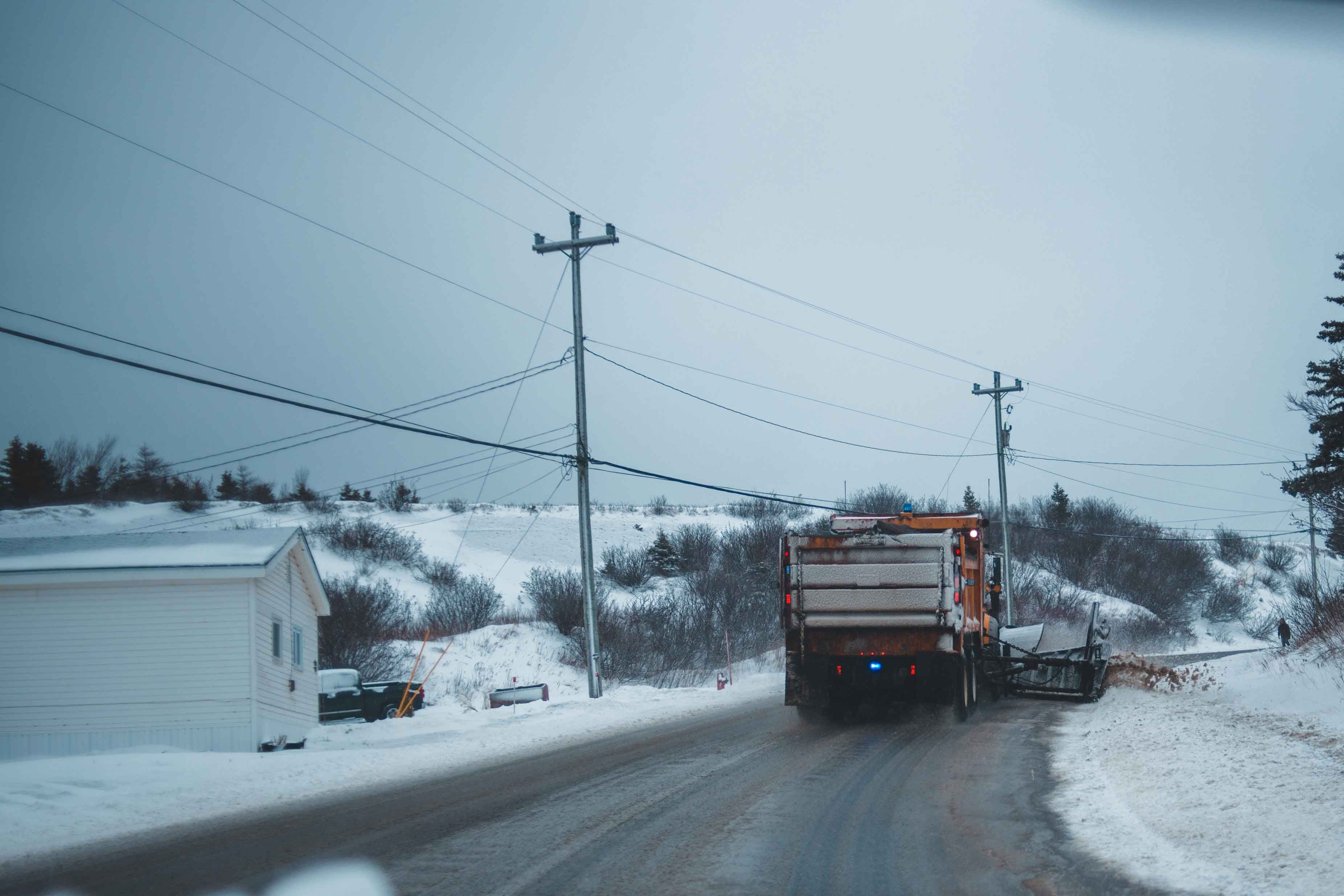
According to Freightwaves:
After periods of heavy snowfall in the Northwest over the past week to 10 days, another series of storms will slam the region this week. Truckers should be ready to chain up and expect possible roadblocks.
Most of the snow will fall from Monday afternoon through Tuesday afternoon in the Cascades and northern Rockies. The National Weather Service (NWS) has issued various winter weather alerts for parts of northern Washington state, where 12 to 24 inches of snowfall could pile up in the high elevations. Some lower elevations may see 5 to 10 inches.
Snowfall rates could reach 1 to 2 inches per hour, leading to reduced visibility at times. Trouble spots include, but are not limited to, Sherman, Loup Loup, Stevens (U.S. Highway 2) and Snoqualmie passes (Interstate 90).
Snowfall may also disrupt drivers Tuesday from eastern Oregon to western Idaho, including portions of I-84 and U.S. Highway 95.
Meanwhile, heavy rainfall Monday through Wednesday could flood areas in western portions of Washington, Oregon and far northern California. This includes I-5 and U.S. Highway 101.
Look for rainfall totals of 4 to 8 inches in the mountains and high terrain areas, with 1 to 3 inches in the valleys and lowlands. The NWS has issued a flood watch for these areas, including Seattle and Portland.
Other disruptive weather
Snow or a snow-rain mix will continue across parts of the South through Monday morning, fading during the afternoon. This storm dumped snowfall in Texas over the weekend, with a daily record 4.4 inches in Waco. The storm is now impacting the Tennessee and lower Mississippi valleys. Delays are likely on I-20 and I-55 from Shreveport, Louisiana, to Jackson, Mississippi, and northwestern Alabama.
High winds Tuesday through Thursday will increase the risk of rollovers across most of Montana, from the Rocky Mountain front eastward. Gusts could reach 50 to 80 mph in places like Cut Bank, Helena, Great Falls, Billings, Glasgow, Miles City, Glendive and Livingston.
--
LFS keeps you updated with the latest news, if you need additional information about our freight shipping solutions, contact us!
Follow us on Linkedin
For cargo insurance experts, please contact Skholl, our partner to avoid any freight damage.
--
By: LFS Marketing
January 12, 2021
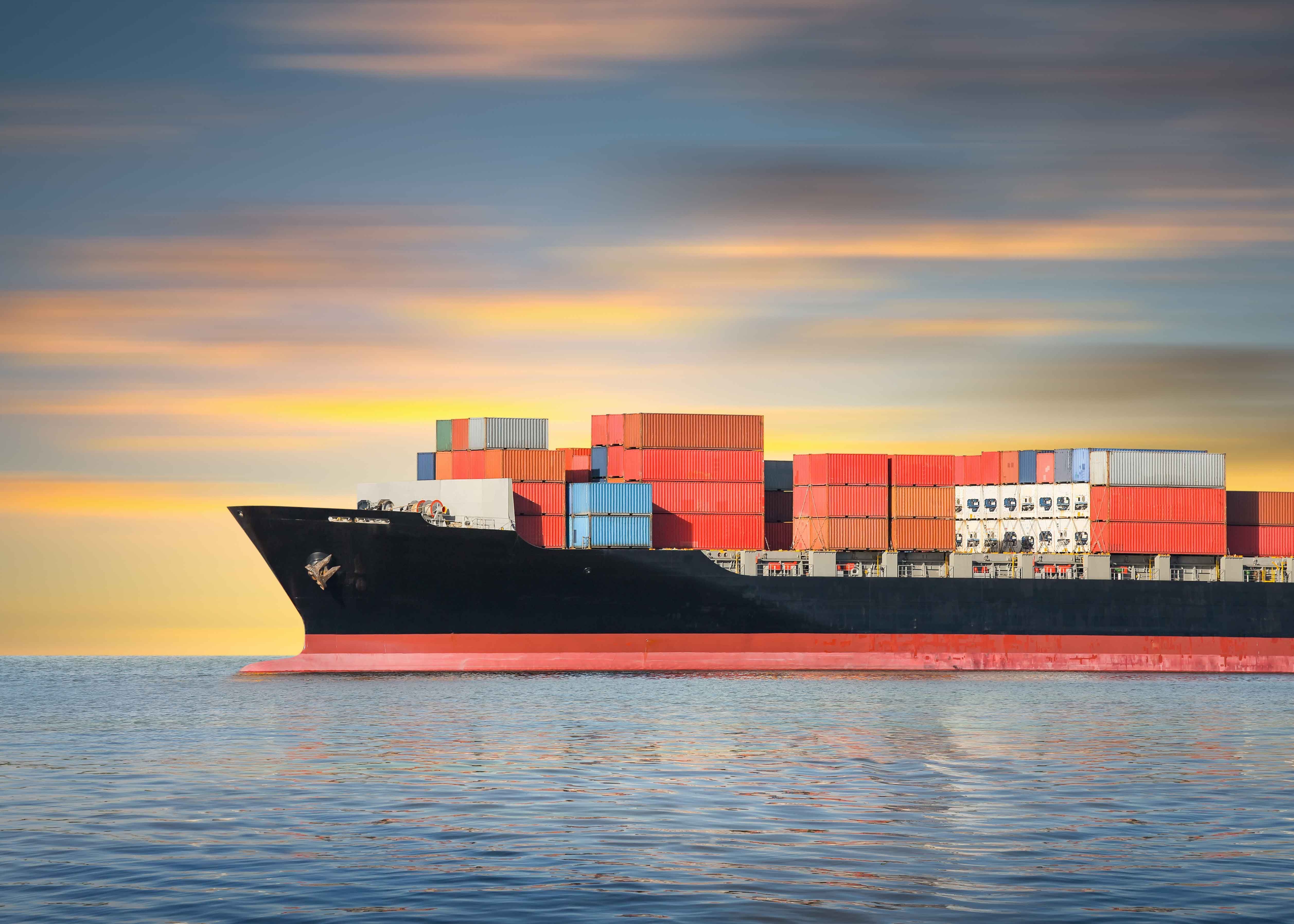
According to Transport Topics:
A.P. Moller-Maersk A/S, the world’s largest container carrier, is working at full capacity and can’t yet see a peak in freight rates that have already been propelled to record highs by pandemic consumer spending.
“All the ships that can sail are out at sea and all the containers that can hold cargo are in use,” Vincent Clerc, the head of the ocean transport division at Copenhagen-based Maersk, said in a briefing Jan. 6.
While rates probably will peak at some point during the first half of the year, Maersk only has about four to six weeks of visibility, Clerc said. “It hinges on when the economies reopen and when consumer patterns return to their previous state.”
Maersk and other container lines are enjoying a surge in freight rates sparked by a combination of low vessel capacity and a sharp increase in demand for goods amid lockdowns. At the same time, a shortage of containers and congestion at some ports have underpinned the prices that carriers can charge for moving cargo.
“We don’t know yet if the third lockdown wave will extend the peak because people stay at home and shop more on Amazon and Zalando or if it will shorten it because the economy will be hurt,” Clerc said.
Spot rates for transporting 40-foot containers soared 50% on average in 2020, or 30% more than the eight-year average, according to World Container Index data and Bloomberg Intelligence. Last year may go down as one of the best for the container line industry and freight rates could remain at high levels through the first quarter of 2021, according to Lee Klaskow, a senior analyst at BI.
Clerc said Maersk is unlikely to cancel more than just “very few” sailings next month during the Chinese New Year, a two-week period where shipments out of Asia normally slump.
Maersk is moving “huge volumes” of consumer electronics, furniture, home improvement equipment and “basically everything related to people’s homes,” Clerc said.
“We hadn’t foreseen just how COVID would be able to change consumer patterns,” he said, adding that acceleration in demand has been the fastest in at least 10 years. “People use a much, much higher portion of their wages on goods.”
The Maersk Group ranks No. 4 on the Transport Topics Top 50 list of the largest global freight carriers.
--
LFS keeps you updated with the latest news, if you need additional information about our freight shipping solutions, contact us!
Follow us on Linkedin
For cargo insurance experts, please contact Skholl, our partner to avoid any freight damage.
--
By: LFS Marketing
January 12, 2021
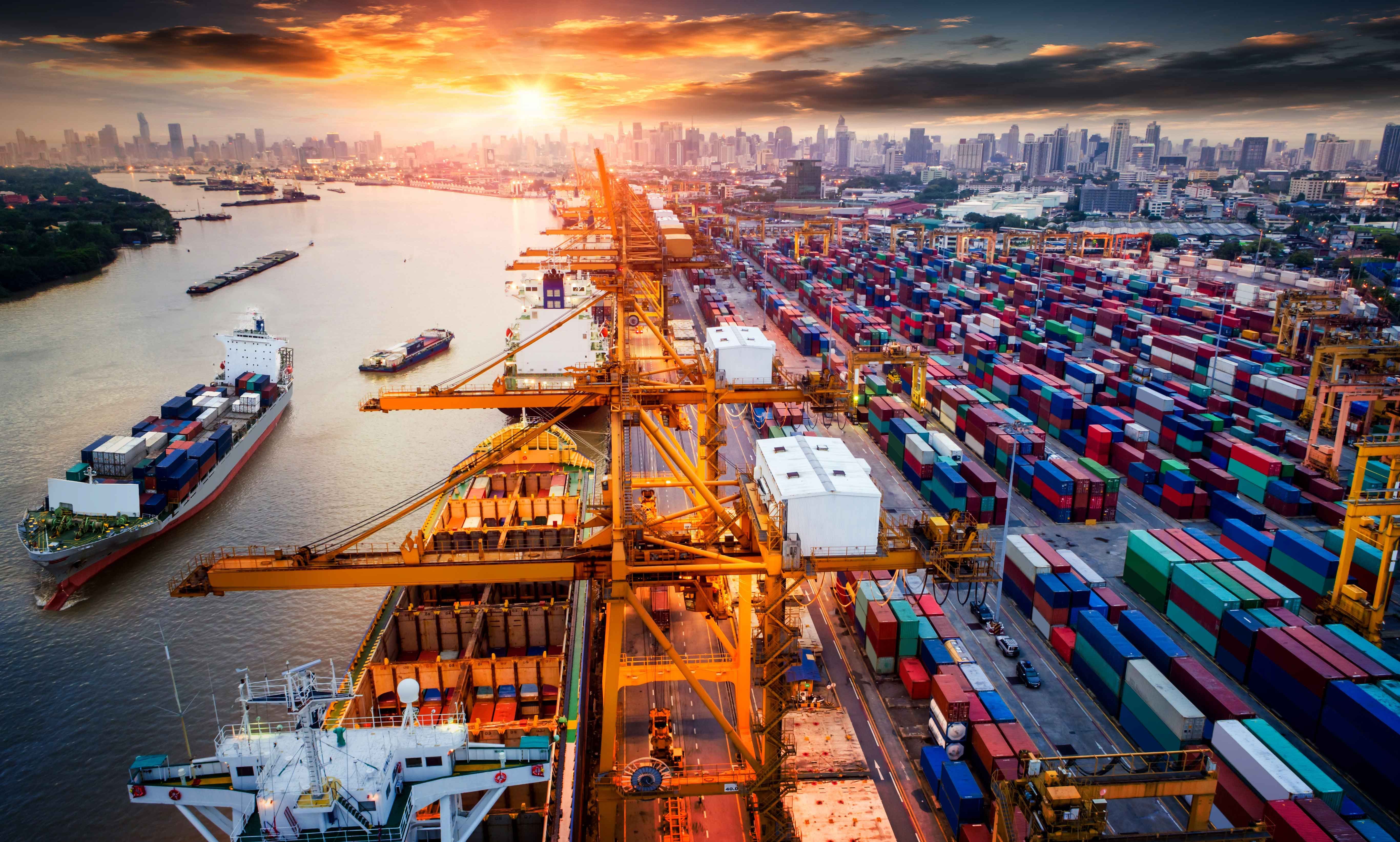
According to Transport Topics:
The Federal Highway Administration recently awarded $49.6 million to support projects that incorporate transportation-related technologies, including an effort to develop autonomous truck accommodations at the Port of Virginia.
FHWA announced the grant awards Dec. 31. The funding was awarded through the Advanced Transportation and Congestion Management Technologies Deployment program, which funds the early deployments of technologies that are meant to improve transportation systems.
The Virginia Port Authority’s grant, which totals $2.1 million, will assist in efforts to make the terminal “autonomous truck ready,” according to FHWA’s announcement. Specifically, the goal is to develop a proof of concept using an autonomous truck to access the terminals and deliver and receive containers.
Located in the Hampton Roads area, the Port of Virginia generates major traffic. Its leading exports include mineral fuels, wood, plastics and iron.
“The extensive technology already integrated into our terminals uniquely qualifies Virginia to take a leadership role that will shape the vision of how marine terminals will handle the exchange of containers between semi-automated terminal equipment and intelligent over-the-road vehicles,” port Executive Director John Reinhart said. “This industry is evolving, and our goal is to be at the forefront of change and innovation to help us deliver efficiency, customer service and sustainability.”
RELATED: See the list of projects
The funding for the Virginia Port Authority represents one of 10 grants announced Dec. 31. The funds distributed through this round of grants support projects that use intelligent transportation systems technology to improve mobility and support vehicle connectivity.
RELATED: West and East Coast Ports Report Strong November Volume
“This $49.6 million in grant funding will support innovative solutions to improve connectivity and help prepare America’s transportation systems for the future,” Transportation Secretary Elaine Chao said.
Some $9.29 million was awarded to the San Diego Association of Governments. Antoinette Meier, director of mobility and innovation at SANDAG, said the project will involve deploying intelligent transportation solutions such as smart intersections, on-demand ride-share services, connected vehicle technologies and improved traveler information resources at border crossing points. Meier indicated the border area suffers from “crippling congestion,” costing the U.S. and Mexican economies billions of dollars annually.
In addition to ports of entry, the project’s scope will include Chula Vista, National City, downtown San Diego and the corridors and transit services that link the border to these communities. The project represents a partnership between SANDAG, the California Department of Transportation, the cities of San Diego and Chula Vista, transit and port representatives, and private sector partners.
“We selected these areas because they are popular destinations for people and goods that are traveling from the border region,” Meier told Transport Topics. “This allows us to address the complete trip, creating that seamless travel experience from end to end.”
The largest individual grant, for $9.95 million, was awarded to the University of Michigan to develop a network of smart intersections in Ann Arbor. The project will rely on connected and automated vehicle technology that allows vehicles and infrastructure to interact.
The Advanced Transportation and Congestion Management Technologies Deployment program was created under the Fixing America’s Surface Transportation, or FAST, Act of 2015. The projects supported by the program are meant to improve travel for commuters, reduce congestion and serve as national models for other states and metropolitan areas.
For this round of funding, FHWA evaluated 46 applications requesting about $205 million.
“The program selections this year look to the future to help ensure that our nation’s highway network is able to accommodate the many advanced technologies on the horizon,” Federal Highway Administrator Nicole Nason said.
State departments of transportation, local government groups, transit agencies and metropolitan planning organizations are eligible to apply for funds. Since its inception, the program has supplied $256 million to more than 45 projects.
--
LFS keeps you updated with the latest news, if you need additional information about our freight shipping solutions, contact us!
Follow us on Linkedin
For cargo insurance experts, please contact Skholl, our partner to avoid any freight damage.
--
By: LFS Marketing
January 12, 2021

According to Transport Topics:
A trade war with China and the disruptive effects of the COVID-19 pandemic have U.S. companies starting to question a decades-old strategy of shifting manufacturing operations to low-cost labor markets in China and other Asian nations.
Some are starting to invest in expanding or building new factories in the U.S. and its nearby trade partners, Mexico and Canada. Such moves are known as reshoring — for the U.S. — and nearshoring in Mexico and Canada. If the trend accelerates, it would create a domestic manufacturing boom and alter trucking routes, shifting some import-centric traffic from Southern California’s massive port complex to manufacturing hubs across the U.S., according to analysts.
A June survey by Thomas, a New York-based industrial sourcing platform, found that 69% of businesses said they are “likely” to “extremely likely” to reshore operations to bolster their supply chains — up from 54% in a previous survey in February, just before the pandemic took hold.
“The pandemic and trade disputes have together spurred U.S. sellers of manufactured goods to look at and act on reshoring and nearshoring and multishoring because the most prevalent model of single-sourcing from China was severely challenged,” Michael Zimmerman, lead partner for analytics at Kearney, an international consulting firm, told Transport Topics.
But the changes won’t be universal.
“Some industries or capabilities may be gone for good or may only come back partially because foreign sources have too much of a comparative advantage, but others are now seen in a better light for more localized sourcing,” Zimmerman said.
The expectation is that more companies will follow the example of Schneider Electric. The Boston-based company said in November that it will spend $40 million investing in automation and what it calls “smart manufacturing” tools at plants in Iowa, Kentucky, Nebraska and Texas to “safeguard” its supply chain. It will add 130 jobs in 2021.
“We now have the technology and resources available to expand and efficiently produce more locally,” said Annette Clayton, CEO of Schneider Electric North America. “By modernizing and localizing our operations, we can better serve our customers and minimize the risk of interruption when we face the challenges of global economic changes.”
Schneider’s investment represents a trend seen among clients of C.H. Robinson Worldwide, the Eden Prairie, Minn.-based freight broker and logistics provider.
C.H. Robinson has found that most companies moving operations to North America or expanding manufacturing in the region already have a presence here.
“As you would expect, transitioning entire projects, production lines or volume increases is a much smoother and quicker process if you already have ongoing production,” Carlos Tamayo Barron, managing director of global forwarding for C.H. Robinson, told Transport Topics. “However, there are still several players who have looked into reshoring or nearshoring even if they don’t currently have a presence in North America.”
C.H. Robinson ranks No. 7 on the Transport Topics Top 50 list of the largest logistics companies in North America.
Other logistics providers and motor carriers also are watching the trend, looking for business opportunities.
“We’re in early conversations with our customers and expect the trend to re-evaluate sourcing options will continue in the current environment,” said Ashfaque Chowdhury, president of supply chain for the Americas and Asia Pacific at XPO Logistics.
XPO ranks No. 1 on the TT Top 50 logistics list and No. 3 on the Transport Topics Top 100 list of the largest for-hire carriers.
“This is an opportunity for us both in our North American and European contract logistics business,” he said.
Relocating manufacturing in North America is likely to alter trucking lanes in the U.S. and increase freight demand, said Satish Jindel, founder of SJ Consulting Group.
One of the first signs of meaningful reshoring would be a change in container volumes at Southern California’s port complex, where there is a significant trade imbalance. The Port of Long Beach, for example, accepted about three times the number of loaded containers that it exported in 2020. That gap would narrow if increased manufacturing in the U.S., Mexico and Canada trade zone replaces imports.
Reshoring also would increase the number of freight moves within the U.S., Jindel said.
“You will have trucks moving raw material to the manufacturing plants, and partly finished goods moving from one factory to another for assembly,” he said. “Motor carriers have to be prepared to add extra capacity as they start to see changes in shipment volumes and characteristics.”
Freight lanes would decline in length as materials and goods moving back and forth travel 200 to 800 miles rather than long routes east from Southern California, Jindel said.
Although the pandemic and trade war may serve as catalysts, structural shifts in labor and other costs associated with Chinese trade will encourage U.S. manufacturing growth, said Scott Davis, CEO of Melius Research, a New York equity research and consulting firm.
The gap in manufacturing labor rates between China and the U.S. has narrowed as wages in the Asian export hub have risen and factory pay has declined in the U.S., Davis said.
If a U.S. company can make a product with half the workforce of a Chinese company, a business case develops for domestic manufacturing, he said. Factory automation is strengthening that case.
“But wage rates tell just a part of the story. You have to include shipping costs for exports, tariffs and time delays for transport,” Davis said.
And there are other factors. Shorter supply chains are better able to meet consumer expectations of fast and one-day deliveries. Quality control is better in the U.S., so companies experience fewer warranty claims and expenses. When a product is made closer to its end market, it also mitigates the environmental impact, an increasing consumer concern.
“The more the things are shipped, the bigger the carbon footprint,” Davis said.
All told, “you might not get 400 jobs back at a factory, but if you get 100 or 200, that’s still good,” he said.
But some analysts are skeptical that the U.S. is about to see a significant manufacturing rebound.
“Manufacturing microwave ovens isn’t coming back to the U.S. We are not good at doing low-margin commodities,” said Willy Shih, a Harvard professor and manufacturing expert.
Shih pointed to record volume in the transpacific shipping lanes, much of it fueling the e-commerce boom that has accompanied the COVID-19 pandemic.
November container volume at the Port of Long Beach hit a record 783,523 20-foot equivalent units of container cargo, a 30.6% increase over the same period a year earlier. The adjacent Port of Los Angeles posted the busiest month in its 114-year history in October, according to DAT Freight and Analytics.
“We have built so much infrastructure around these trade lanes to make them efficient,” Shih said.
Although both the U.S.-China trade war and the pandemic could be seen as so-called “black swan” events that would launch reshoring and nearshoring booms, similar disruptions such as the 2008 financial crisis, the 2011 tsunami in Japan and massive floods in Thailand that same year didn’t bolster U.S. manufacturing, Shih noted.
Davis, however, believes reshoring and nearshoring moves will now catch hold.
“None of this is going to happen overnight,” he said. “The companies that I work with tell me it will take 10 years to get to where they want to be — building duplicative supply chains so that they can put less stuff on boats.”
--
LFS keeps you updated with the latest news, if you need additional information about our freight shipping solutions, contact us!
Follow us on Linkedin
For cargo insurance experts, please contact Skholl, our partner to avoid any freight damage.
--
By: LFS Marketing
January 12, 2021
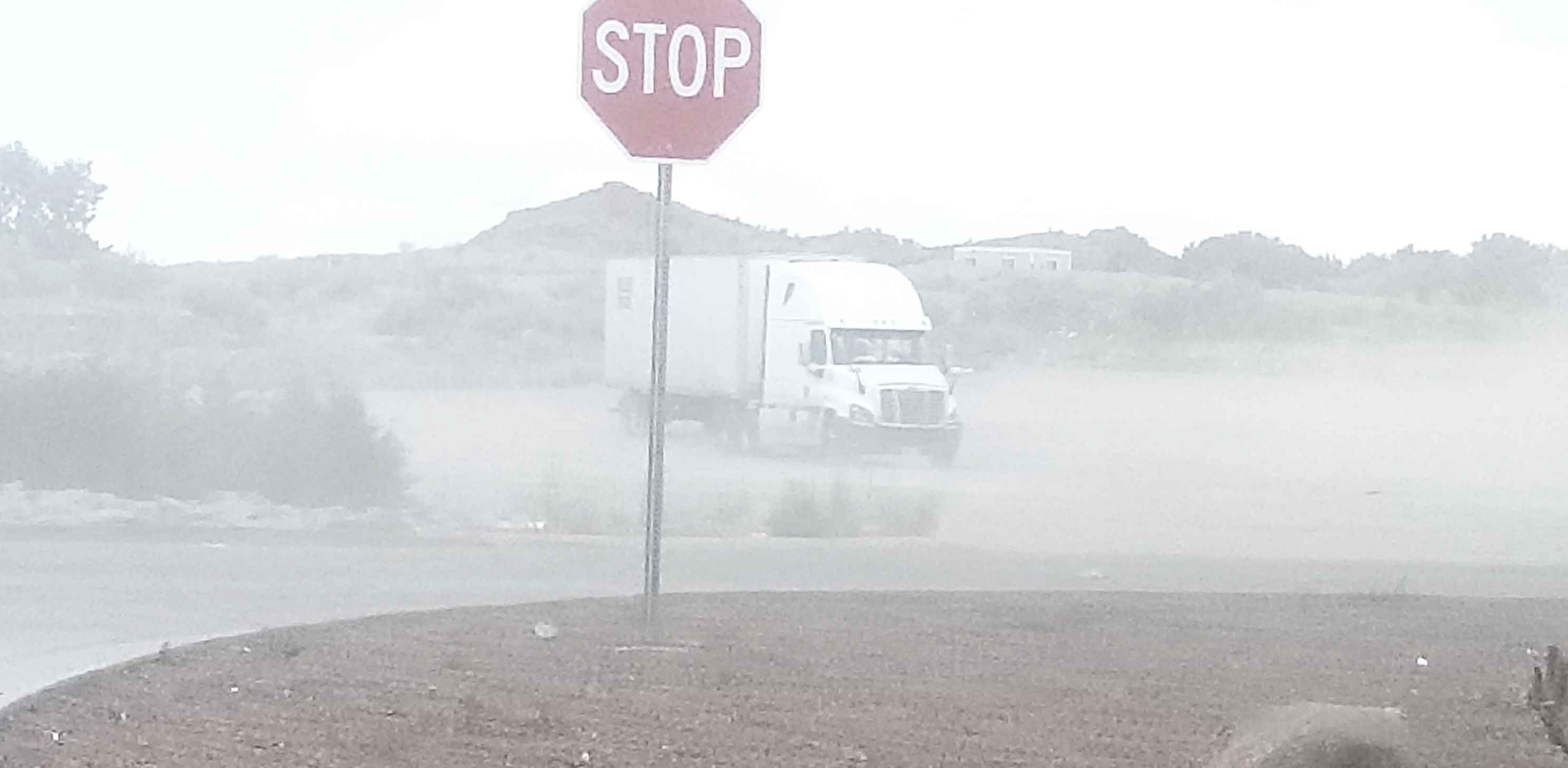
According to Freightwaves:
The parade of snowstorms that began in the Northwest several days ago marches on. Truckers will have to chain up heading through high elevations of the Cascades, Sierra Nevada and northern Rockies this week as periods of heavy snowfall and gusty winds continue.
Look for moderate to locally major disruptions in supply chains, freight flows and business operations as three strong cold fronts slam the region. Delays in surface and air transportation are likely.
Included in the potential impact zone are portions of I-80, I-84 and I-90 in Washington, Oregon, California, Idaho and Montana. Trouble spots include but are not limited to Snoqualmie, Lookout, Stevens, Donner, Carson and McKenzie passes.
According to the National Weather Service, some places received more than 24 inches of snowfall over the weekend. Some areas could see 12 to 24 inches of new snowfall Monday through Tuesday, followed by at least another 12 inches by the end of the week. Heavy accumulations will also hit portions of southern Alberta and British Columbia, Canada. Occasional wind gusts of 40-plus mph will produce blowing snow and whiteout conditions in some spots.
Meanwhile, in the lower elevations and valleys, rain may be heavy at times. Localized flooding will be possible from Vancouver, Canada, to Seattle and Portland, Oregon.
As of Monday morning, it looks as if the rest of the country will be spared from major snowstorms this week. Forecast updates will be posted on the FreightWaves website and social accounts.
--
LFS keeps you updated with the latest news, if you need additional information about our freight shipping solutions, contact us!
Follow us on Linkedin
For cargo insurance experts, please contact Skholl, our partner to avoid any freight damage.
--
By: LFS Marketing
January 5, 2021
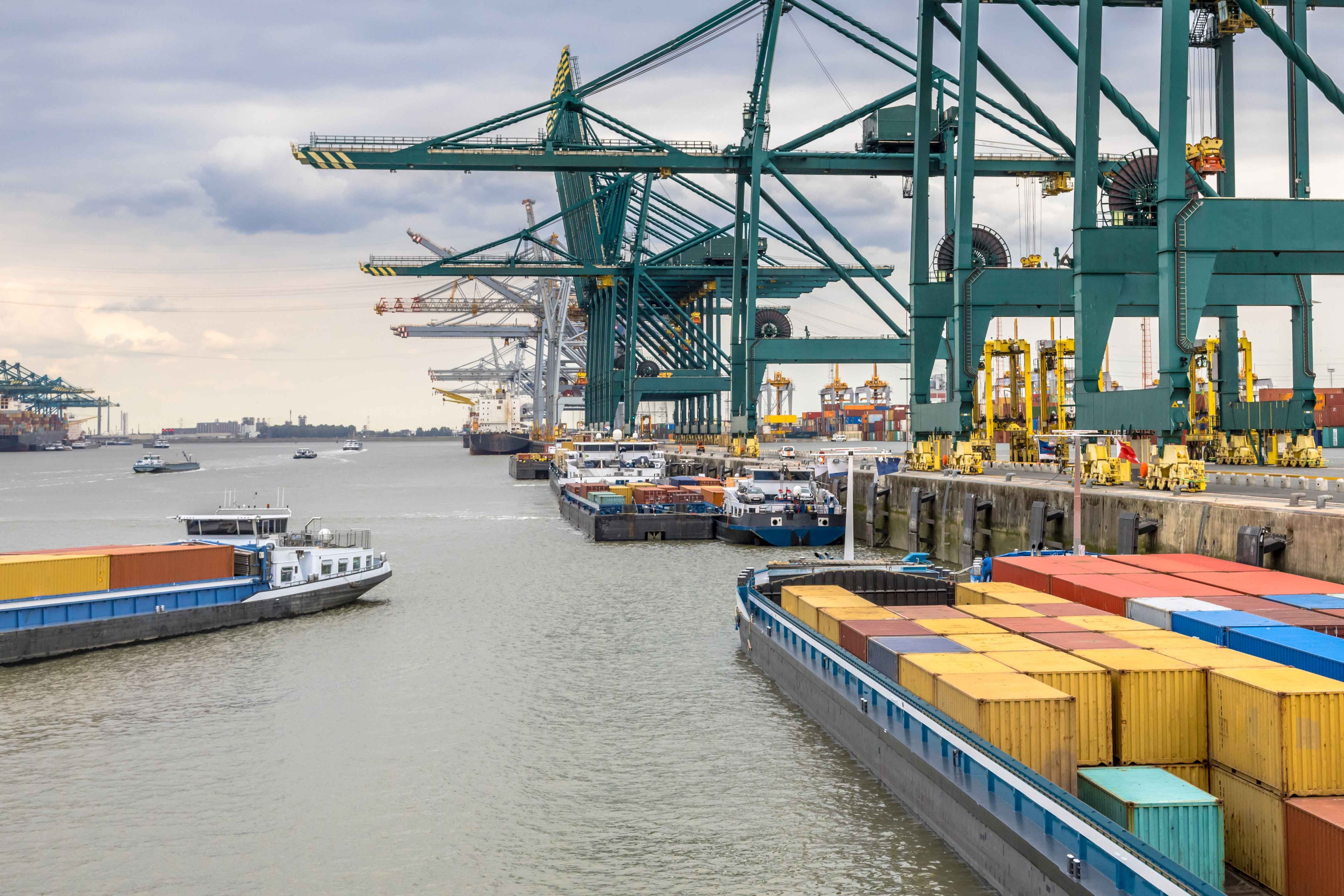
According to Freightwaves:
Three giant cranes valued at $30 million arrived at the Port of Oakland in California on Wednesday.
These are the tallest cranes ever at the Port of Oakland and rank among the tallest in the United States. Stevedoring Services of America ordered the cranes from Shanghai-based ZPMC for its Oakland International Container Terminal.
“These cranes will keep the Port of Oakland competitive so that we can continue to attract the largest vessels calling North America,” Executive Director Danny Wan said in a statement. “Ultimately, bigger cranes at our waterfront translate into maritime and related jobs for the region.”
According to SSA, the cranes will have a lift height of 174 feet above the dock and will be able to reach 225 feet across a ship’s deck. When the crane booms are in a raised position, they will “soar more than 400 feet above the wharf,” the statement said.
The new cranes will replace three older ones at the Port of Oakland.
Port of Long Beach
The Port of Long Beach’s community grants program, a more than $46 million initiative addressing pollution connected to the movement of goods, has received awards from the U.S. Environmental Protection Agency and Los Angeles County.
Both honors — the EPA Clean Air Excellence Award in the Gregg Cooke Visionary Award category and the LA County Green Leadership Award — recognize innovation in improving sustainability and air quality.
“When we created the community grants program, we wanted to demonstrate our commitment to helping those who are the most vulnerable to pollution,” said Long Beach Harbor Commission President Frank Colonna. “It’s great to receive this recognition because it means those efforts are helping people in meaningful ways.”
The community grants program is designed to help those most affected by port operations: children, pregnant women, the elderly, the chronically ill and individuals with respiratory and/or cardiopulmonary disorders and illnesses. Grants fund community-based projects capable of directly reducing air and water pollution, traffic, and noise, according to the port.
Combined with a previous mitigation grants program started in 2009, the Port of Long Beach has set aside more than $65 million, making it what officials called the largest voluntary port mitigation initiative in the country. To date, $27.5 million has been distributed, the port said.
Port of Los Angeles
Cruise ships — all without passengers — are expected in and around the Port of Los Angeles in the coming weeks.
“The visits for fuel, supplies and services are part of the cruise lines’ operations to reestablish the ships in U.S. waters as a prerequisite to meet federal regulations in order to resume cruising in the future,” a statement from the port said.
Cruise operations have been suspended since March because of the coronavirus pandemic, and no date has been set for U.S. passenger sailings to resume. The port said the Centers for Disease Control and Prevention recently issued a Framework for Conditional Sailing Order that outlines a phased resumption of cruise ship operations.
The Port of LA expects more than two dozen cruise ship calls through early February from Princess Cruises, Holland America and Norwegian Cruise Line.
The port had 93 cruise cancellations in 2020. Each time a cruise ship calls LA, it contributes about $1 million to local businesses and the economy, the port said. “Losing these cruise ships amounts to losing nearly $100 million in economic activity on the LA waterfront.”
--
LFS keeps you updated with the latest news, if you need additional information about our freight shipping solutions, contact us!
Follow us on Linkedin
For cargo insurance experts, please contact Skholl, our partner to avoid any freight damage.
--
By: LFS Marketing
January 5, 2021

According to Freightwaves:
Long-awaited regulations released Monday by the Federal Aviation Administration represent a big step toward wide-scale commercial use of drones in the U.S., including for package and cargo delivery, and full integration into the national airspace.
The rules require unmanned aircraft systems (UAS) to broadcast identification or location information and allow operators of small drones to fly over people and vehicles, and at night under certain conditions. The next major step toward integration is developing rules for beyond-visual-line-of-sight operations, which currently require a waiver.
Remote ID is the equivalent of a digital license plate for drones. It includes the drone’s serial number or a unique flight ID number; the latitude, longitude and altitude of the unmanned aircraft and the control station; emergency status; and a time reference.
The ability to monitor drones is aimed at public safety because it gives law enforcement, national security and public safety officials a way to find out if they are being flown in an unsafe manner or over sensitive infrastructure such as airports and military installations. Airspace awareness reduces the risk of drone interference with other aircraft and people and property on the ground.
Automated vehicle experts and policy-makers have warned that developers will take production overseas if U.S. regulations for commercialization don’t keep up with technology advancements, a development that would deprive the U.S. from reaping huge economic benefits as a leader in a rapidly growing market.
Drones represent the fastest growing segment of transportation, with more than 1.7 million drone registrations and 203,000 FAA-certified remote pilots, according to the agency.
Amazon (NASDQ: AMZN) earlier this year obtained a license to carry packages beyond visual line of sight of the operator as Prime Air develops an autonomous drone delivery service. Alphabet subsidiary Wing and UPS have already received FAA licenses and have pilot programs underway. While Wing delivers packages for FedEx (NYSE: FDX) and Walgreens (NASDQ: WBA), UPS (NYSE: UPS) is delivering prescription medicines for CVS in North Carolina. Walmart (NYSE: WMT) partnered with drone operator Flytrex for home delivery of certain items from stores in North Carolina , as well as DroneUp for delivery of COVID-19 tests in three cities. The programs use drones that can carry loads weighing 5 pounds or less.
On Wednesday, Class I railroad BNSF Railway petitioned the FAA for a waiver to remotely operate up to five unmanned aircraft over long distances for rail inspection and patrolling its private property.
Drone developers and operators welcomed the new FAA regulations.
“The rules released today are critical steps towards future UAS rulemakings to enable more complex operations, including beyond visual line of sight for drone delivery, public safety operations and infrastructure inspection. Remote ID is also instrumental to the development of a UAS traffic management system that works alongside the existing air traffic control system for manned aircraft,” the Association for Unmanned Vehicle Systems International said in a statement.
The new regulations provide more flexibility to operate certain small unmanned aircraft, weighing less than 55 pounds, without obtaining a waiver to fly over people or at night. Drones operating at night must be equipped with anti-collision lights that can be seen for three miles.
The Remote Identification rule eliminates requirements that drones be connected to the internet to transmit location data. Instead, drones will be required to directly broadcast identification and location information with radio frequency technology such as Wi-Fi or Bluetooth. Drones can also be outfitted with a separate broadcast module.
The final rule differs from the draft proposal in requiring drone operators to have their remote pilot certificates with them and ready to be displayed if contacted by authorities.
Both rules will go into effect 60 days after publication in the Federal Register, which is expected in early January. Drone manufacturers will have 18 months to begin producing drones with Remote ID, with operators having an additional year to start using drones with tracking systems.
--
LFS keeps you updated with the latest news, if you need additional information about our freight shipping solutions, contact us!
Follow us on Linkedin
For cargo insurance experts, please contact Skholl, our partner to avoid any freight damage.
--
By: LFS Marketing
January 5, 2021

According to TTnews:
During this unprecedented year, the nation turned its focus to those on the front lines of the fight, including medical personnel, first responders, grocery store workers and truck drivers. The contributions of truck drivers in particular — especially their role in delivering essential supplies to hospitals, supermarkets and elsewhere — gained praise. In communities nationwide, residents posted signs thanking drivers who kept the economy moving amid the stark financial downturn.
In April, President Donald Trump recognized commercial drivers during a ceremony at the White House. “American truckers are the foot soldiers who are really carrying us to victory,” Trump said. “They’ve done an incredible job.”
Joining him were the Secretary of Transportation, Elaine Chao, and the president of American Trucking Associations, Chris Spear.
“We obviously have an industry filled with some of the hardest-working, patriotic people in the U.S.,” Spear told Transport Topics after the ceremony. “Those drivers are moms, dads. They’re husbands, wives. They’re involved in their communities. They’re very charitable. They are the essence of the American spirit and to see it recognized like this in a time of crisis — I have to say — I think that is really an extraordinarily important thing for the leader of our country to do.”
At the centers of government, legislators and regulators worked to assist the nation’s response to the pandemic. They advanced emergency aid measures and passed regulatory relief to assist the freight industry’s ability to respond.
In Congress, policymakers approved multibillion dollar packages before agreeing to a colossal multitrillion dollar aid measure. This $2 trillion legislation advanced in the spring and contained more than $30 billion in transportation relief. That included $25 billion for passenger airlines and $4 billion for cargo airlines.
Despite the congressional response, representatives from the transportation modes urged Congress for emergency aid. Transit operators, Amtrak, state highway agencies and port officials continued to request billions of dollars for relief programs.
More recently, ATA called on congressional leaders to safeguard motor carriers against increased liability risk tied to the virus. As Congress negotiated a new round of aid in December, ATA’s Spear said: “The trucking industry is proud to play an outsized role in COVID-19 response and recovery efforts, and we ask that you consider the essential nature of the trucking industry as you consider the inclusion of reasonable liability protections in any future legislation.”
One lawmaker who has been an ally for trucking is returning to Congress after the fall elections. Maine Republican Sen. Susan Collins, an incumbent transportation funding leader, earned a fifth term to Capitol Hill after a tough challenge.
In the House of Representatives, Republicans gained seats but Democrats retained leadership, thus ensuring a return of chairmanships for transportation panels. Control of the Senate is linked to the outcome of two Georgia Senate runoffs in January. A win of at least one of the Georgia Senate seats would give Republicans the majority.
On the presidential stage, President-elect Joe Biden’s “Build Back Better” infrastructure proposal brings with it the promise of improving access to commercial corridors. While that was a goal shared by President Donald Trump, Biden arrives at a time when negotiations between the congressional and executive branches over infrastructure funding policy, combined with the on-again, off-again reauthorization efforts of the country’s highway law, have dragged on. Both points anchored national transportation interest, with nearly the complete transportation community urging policymakers to facilitate greater investments across mobility grids. Negotiations are expected to carry over into 2021.
During the year, regulators issued a host of waivers, exemptions and declarations aimed at facilitating the work of truckers.
Regulatory certainty on updated hours-of-service regulations did arrive, however, when in May Transportation Secretary Elaine Chao and former Federal Motor Carrier Safety Administration acting administrator Jim Mullen announced the long-awaited final rule on a slate of proposed changes that granted more flexibility to truck drivers. Many in trucking praised the four revisions that were approved, which included measures associated with the 30-minute rest break and sleeper berth time. Several safety advocates objected to the rule, however, and have pursued legal action.
The final rule arrived after more than a year of agency deliberations, which were made following consideration of thousands of public comments. The new rule is based on a proposed rulemaking announced in August 2019.
“That’s pretty fast for government rulemaking standards,” Dan Horvath, ATA’s vice president of safety policy, told TT. “It didn’t stall. It wasn’t put on a desk somewhere and sat and wait. To see that emerge in the middle of a pandemic speaks a lot to the effort to get that done.”
In August, FMCSA announced that Mullen would be leaving his post after less than one year. Wiley Deck, then a senior policy adviser within DOT’s Office of the Secretary, assumed the role of FMCSA’s deputy administrator. In September, automated technology developer TuSimple announced Mullen had taken a position as its chief legal and risk officer.
During the year, the FMCSA’s crash preventability program was amended to permit crashes where drivers were not at fault to be omitted from their safety profile. The agency also began a military pilot program for younger drivers, and launched its long-awaited Drug and Alcohol Clearinghouse database. The system logged more than 46,000 drug violations in the first year of operation.
Agency officials also announced plans to conduct a Large Truck Crash Causal Factors Study, the first update in 17 years. Additionally, a long-awaited proposed hair drug testing rule was announced by the Department of Health and Human Services.
In addition, as FMCSA’s Compliance, Safety, Accountability program turned 10 years old, a study of a potential new rating program, known as the Item Response Theory, was still underway — despite promises by FMCSA to make a decision on whether to incorporate the very complex system that could be used to rate motor carrier safety.
At the state level, many transportation-related concerns stemmed from consequences of COVID-19. While truckers’ steady consumption of diesel fuel helped stabilize revenue for state departments of transportation, across the states fuel tax revenue dropped sharply. As states instituted stay-at-home orders in hopes of diminishing the impact of the pandemic, a sharp drop in traffic from commuters and vacationers cratered revenue. Maine and New Jersey have passed legislation to boost transportation revenue, but the financial outlook across the board looks bleak. The American Association of State Highway and Transportation Officials estimates a loss of $16 billion for state departments of transportation in fiscal 2020.
On the West Coast, the California Air Resources Board approved a rule that will require manufacturers, beginning in 2024, to sell a certain percentage of electric heavy trucks, and it gave the go-ahead to drastically reducing oxides of nitrogen emissions in the state. Also, California’s Assembly Bill 5, which threatens the use of independent contractors by motor carriers, was set to go into effect at the beginning of the year but is hung up in the 9th U.S. Circuit Court of Appeals in connection with a challenge to the law by the California Trucking Association.
A federal appellate court in 2020 overturned the diesel fuel fraud convictions of former Pilot Flying J President Mark Hazelwood and two ex-Pilot sales executives on the grounds that a lower federal court permitted use of evidence that should not have been admitted. Also, last year, the U.S. Securities and Exchange Commission’s yearslong civil court fight with Daniel Ustian ended with the former Navistar International CEO agreeing to a $500,000 civil penalty and a permanent ban from serving as an officer or director of a public company.
Among broad industry challenges, a report showed that the parking shortage for truckers remains a serious problem and insurance rates for motor carriers continued to increase.
The rising tide of jury awards against truckers drew ATA’s attention, and attempts to mitigate these “nuclear verdicts” got underway in several state legislatures, including victories in Louisiana, Missouri and Iowa. In a related development, in New Orleans by year’s end 33 individuals had been indicted in a scheme to stage more than 100 accidents with trucks, intending to fraudulently seek damages in the courts for accidents in which truckers were not at fault.
--
LFS keeps you updated with the latest news, if you need additional information about our freight shipping solutions, contact us!
Follow us on Linkedin
For cargo insurance experts, please contact Skholl, our partner to avoid any freight damage.
--
By: LFS Marketing
December 28, 2020

According to Trains news:
Intermodal traffic will grow in 2021 but carload traffic will continue to struggle to recover from the pandemic in the new year, according to a freight forecasting firm’s outlook.
Todd Tranausky, vice president of rail and intermodal at FTR Transportation Intelligence, projects that intermodal volume will grow by 5.4% next year. The growth will come from consumer demand and the need to replenish retail inventories, which remain at unusually low levels.
During the pandemic, people who remain employed have shifted their spending from services — such as restaurants, movies, and travel — to purchasing goods. That’s a positive for freight markets, and should translate into strong intermodal volumes at least through Chinese lunar new year in February, Tranausky said on an FTR webcast Thursday.
Normally there would be a lull in intermodal traffic after the fall peak. “We haven’t seen any indication of that at all,” Tranausky says.
Domestic containers should be the fastest-growing intermodal segment, Tranausky says, projecting a 6.2% increase in domestic box volume next year.
Trailer volume is expected to hold steady next year, thanks to the rise of e-commerce and related parcel shipments. Trailer volume has been declining for years, but has revived amid the e-commerce boom, tight capacity in the trucking industry, and a shortage of truck drivers.
International intermodal volume should rise 5.4% next year as retailers continue to restock inventories, Tranausky says.
An economic wildcard, however, is the pandemic and distribution of COVID-19 vaccines. If the pandemic wanes in the second half of 2021, it could mean a shift of consumer spending back toward services. And that, the FTR analysts say, would be negative for consumer-related freight markets such as intermodal.
Intermodal is on a pace to finish 2020 with volumes down 2.5%, which Tranausky says is not bad considering the unprecedented impact of the pandemic during the widespread lockdowns in the spring.
Carload traffic, however, is “on a different wavelength,” Tranausky says. Carload freight is generally tied to industrial production, which was struggling before COVID-19 and has yet to bounce back to pre-pandemic levels.
“It’s just muddled along and muddled through,” Tranausky says.
FTR expects economically sensitive carload traffic — defined as everything that’s not coal, agriculture, or tied to crude oil — to be flat overall in 2021. “Right now the outlook is not particularly robust,” Tranausky says.
Volumes should continue to recover in the first quarter. Second quarter year-over-year numbers will show huge growth due to being compared to the pandemic-related traffic trough of 2020.
How carload fares in the second half of 2021 may hinge on how the pandemic and consumer spending unfold, as well as whether there’s a federal stimulus and what shape it takes, Tranausky says.
--
LFS keeps you updated with the latest news, if you need additional information about our freight shipping solutions, contact us!
Follow us on Linkedin
For cargo insurance experts, please contact Skholl, our partner to avoid any freight damage.
--
By: LFS Marketing
December 28, 2020
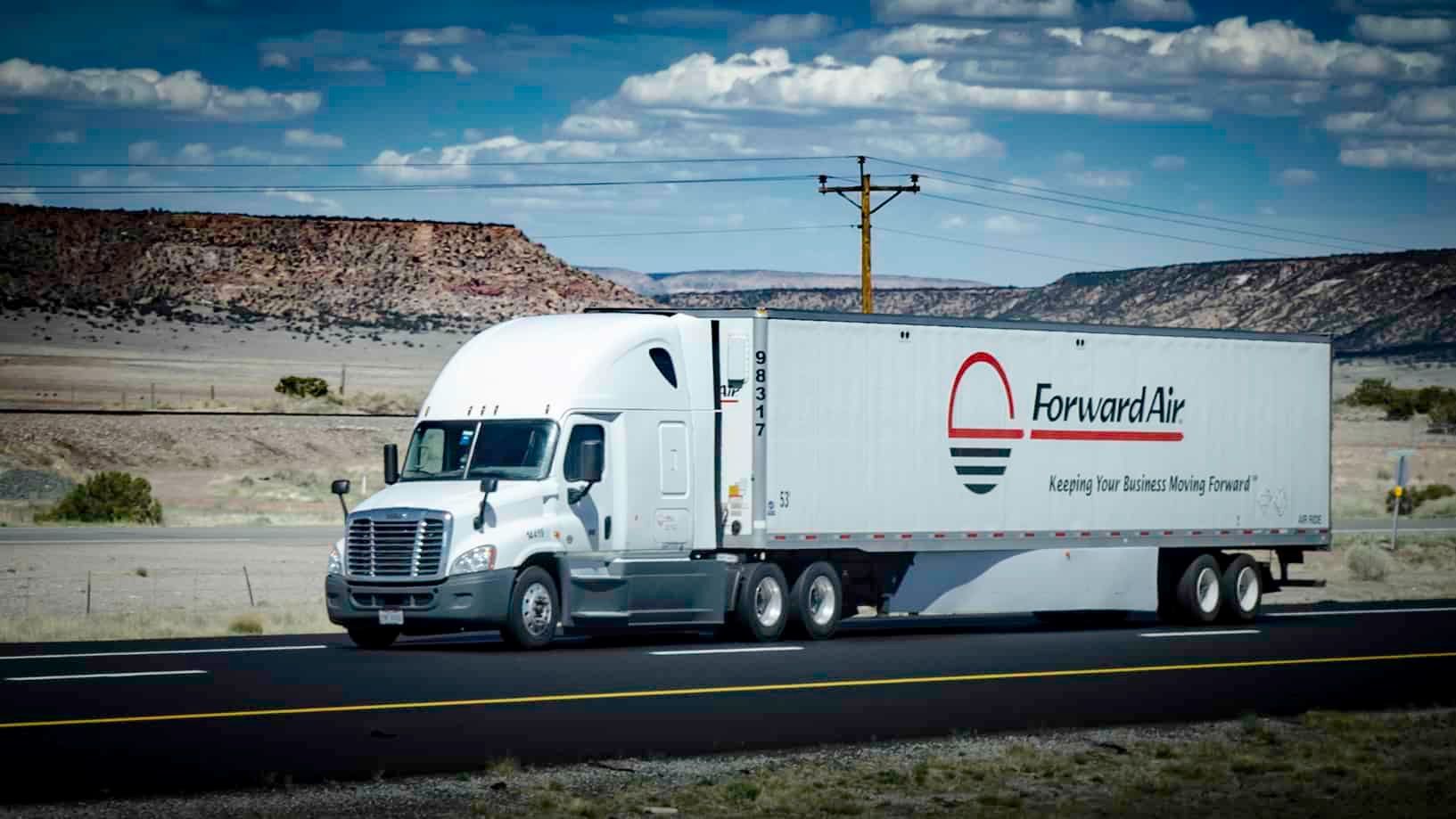
According to Freightwaves:
An updated statement from Forward Air about the collapse of its technology systems adds three key words that all but confirm the company is a victim of a cyberattack.
The statement, released by the ground and air carrier company Friday, said it had “notified law enforcement” about the “security incident.” A statement released Wednesday did not mention law enforcement. The rest of the statement released Friday was otherwise identical to the statement from earlier in the week.
The apparent cyberattack on Forward Air has been so extensive that its website is down. A Forward Air customer told FreightWaves that his customer service representative that Forward Air employees were told to shut down their computers to help slow the attack.
While Forward Air has not used terms like “ransomware” or “cyberattack” in its statements, outside experts on those issues said the Forward Air incident had all the hallmarks of such an occurrence. David Jarmon, a vice president at cybersecurity firm Gray Analytics and former Department of Defense official, told FreightWaves this week that based on the small amount of information Forward Air had released, it was likely that it was “targeted in a cyberattack, likely involving malware infecting its systems, which brings ransomware into consideration.”
The shutdown of much of Forward Air’s operations has had no discernible effect on the company’s stock price. Shares in Forward Air were up four consecutive days this past week, with a Friday gain of 0.86% to $78.20. That’s only 75 cents less than the company’s 52-week high.
Beyond the reference to law enforcement, the Forward Air statement repeated several key points: It “detected” the incident on Tuesday; third-party experts were brought in; and the technology team at Forward Air is “working diligently to restore the affected systems and services and bring them back online as soon as possible.”
--
LFS keeps you updated with the latest news, if you need additional information about our freight shipping solutions, contact us!
Follow us on Linkedin
For cargo insurance experts, please contact Skholl, our partner to avoid any freight damage.
--
By: LFS Marketing
December 21, 2020
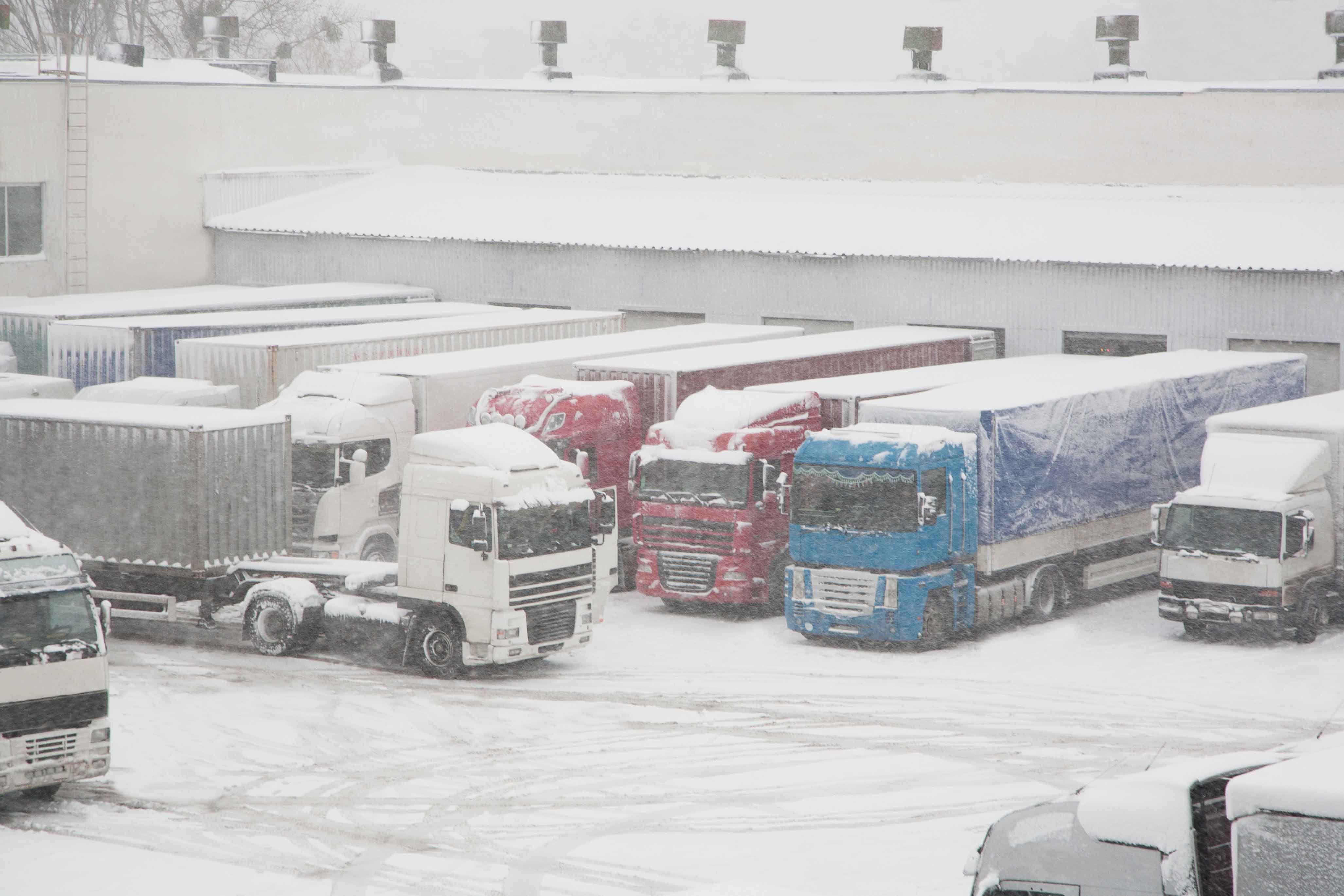
According to Freightwaves:
Snowy weather will hit places virtually coast to coast Christmas week. The good news — drivers should be able to handle most of it. As of Monday morning, nothing indicates that these storms will have major impacts on supply chains.
Northwest
Periods of heavy snowfall and gusty winds will continue to hit the Cascades and northern Rockies Monday and Tuesday, then again by Christmas Day or Saturday. This will impact travel on Interstate 90 over Lookout and Snoqualmie passes, as well as Stevens Pass on U.S. Highway 2. Blowing snow will lead to reduced visibility and possible whiteout conditions at times. Some snowfall could reach the Colorado Rockies midweek.
Great Lakes-Northeast
A band of snowfall will move from the Great Lakes to the Northeast and southern Appalachians Monday night and Tuesday. Some areas could see freezing rain or sleet. This system will fade Tuesday afternoon or evening, with minimal effects along the Interstate 95 corridor.
A second storm will produce snowfall and gusty winds across the Great Lakes Wednesday into Christmas Eve, with snow possibly lingering Christmas Day. Parts of the interior Northeast could also see a white Christmas, with potentially heavy lake effect snow from northwestern Pennsylvania to upstate New York.
Other notable weather this week
Winds will be howling across a large portion of Washington state Monday and Tuesday, as well as south-central Oregon and northern Idaho. Gusts in these areas will reach 45 to 60 mph at times.
The risk of rollovers will also be high in southeastern Wyoming, where gusts could hit 60 to 70 mph Monday, affecting drivers on Interstates 25 and 80.
--
LFS keeps you updated with the latest news, if you need additional information about our freight shipping solutions, contact us!
Follow us on Linkedin
For cargo insurance experts, please contact Skholl, our partner to avoid any freight damage.
--
By: LFS Marketing
December 21, 2020

According to Freightwaves:
The Federal Motor Carrier Safety Administration (FMCSA) is expanding its emergency hours-of-service (HOS) waiver to include carriers transporting COVID-19 vaccines.
In a notice issued late Tuesday, the FMCSA also announced it is modifying the most recent extension of the HOS waiver — which had been scheduled to expire on Dec. 31 — to expire instead on Feb. 28, 2021, unless the COVID-19 national emergency is revoked sooner.
“This expansion and extension of the modified Emergency Declaration addresses national emergency conditions that create a need for immediate transportation of essential supplies, and provides necessary relief from the [regulations] for motor carriers and drivers,” today’s notice states.
The exemption continues to cover parts 390 to 399 of the federal motor carrier regulations for the 50 states and District of Columbia which, in addition to HOS, include inspection and maintenance of commercial vehicles, employee safety, and parking rules. Details can be viewed here.
The current exemption provides regulatory relief limited to the transportation of:
As with all previous HOS waivers in response to the pandemic, direct assistance does not include routine commercial deliveries, including mixed loads “with a nominal quantity of qualifying emergency relief added to obtain the benefits of this emergency declaration,” FMCSA stated.
--
LFS keeps you updated with the latest news, if you need additional information about our freight shipping solutions, contact us!
Follow us on Linkedin
For cargo insurance experts, please contact Skholl, our partner to avoid any freight damage.
--
By: LFS Marketing
December 15, 2020

According to Freightwaves:
Mock shipments of COVID-19 vaccine to test the federal government’s transportation and logistics planning have experienced spotty on-time performance, Pennsylvania Secretary of Health Rachael Levine warned a Senate subcommittee Wednesday.
Operation Warp Speed, a multiagency task force coordinating the national distribution to states, has already begun pre-positioning stockpiles of the first batch of vaccines made by Pfizer (NYSE: PFE) and German partner BioNTech and is expected to begin last-mile deliveries to designated administration sites within hours of the drug’s approval for emergency use. A Food and Drug Administration committee of independent experts is meeting Thursday to review the safety and efficacy of the Pfizer vaccine, which has shown 95% positive results in recent trials, with the agency likely to approve its recommendation within days.
Levine, who is also president of the Association of State and Territorial Health Officials, testified that during practice runs there frequently was a two-day lag between arrival of the vaccine and related supplies such as syringes, alcohol swabs and protective gear.
“In approximately a quarter of states, at least one significant issue arose during the mock shipment that requires attention prior to shipping the actual vaccine,” she said in prepared remarks to the Senate Commerce Subcommittee on Transportation and Safety. “Vaccine that arrives without the ancillary supplies required to administer it will delay the vaccination of key prioritized populations.”
OWS is procuring the ancillary supplies that McKesson Corp., the government’s central logistics coordinator, will assemble into kits to be paired with vaccine supplies at destination.
U.S. officials say they plan to deliver 40 million doses of the Pfizer vaccine and one from Moderna, which is up for FDA review next week, by the end of the year. The government prepurchased 100 million doses from each company, enough to immunize 50 million people because both products require two doses spread over three or four weeks.
States and other vaccine jurisdictions have the final say on where they want vaccines to be shipped. OWS, led by the departments of Defense and Health and Human Services, and Pfizer have been conducting dress rehearsals for delivering and dispensing vaccines to iron out any kinks, but Levine said they have had “varying levels of success.”
During a briefing Wednesday, Army Gen. Gus Perna, Operation Warp Speed’s chief operations officer, said daily briefings among governors, health officials and industry partners are identifying remaining issues that need to be resolved.
“We’re solving problems ahead of execution,” he said. “Does this mean perfection? No. What is important is the open communication and collaboration.
“I feel confident that we’ve done detailed planning. We’ve worked through rehearsals. We have checked the ‘what if?’ box and we continue to learn every day in preparation for eventual distribution.”
Executives at FedEx Express (NYSE: FDX) and UPS (NYSE: UPS), the primary express transportation providers for Pfizer and McKesson, said their companies are ready for the challenge after years of experience supporting pharmaceutical companies and extensive investments in cold-chain systems. Pfizer is managing its own vaccine distribution in coordination with OWS.
Last week, Perna and Moncef Slaoui, chief scientific adviser to OWS, visited one of UPS’s health care facilities in Louisville, Kentucky, to review supply lane plans, handling of ultra-low-temperature shipments and how UPS will manage its dry ice replenishment program.
“I believe they left feeling confident in our degree of readiness,” UPS Healthcare President Wes Wheeler said.
Drugmakers have been customers of FedEx and UPS for a long time, so vaccine distribution isn’t new territory, said Richard Smith, FedEx Express’ president of the Americas region, during an OWS summit at the White House on Tuesday.
“We know them well, we know their business well, we work well together. And we plan for these things every year. We jump into action and use our networks in times of disaster relief and deliver for good . . . into effected communities when that happens. So we’re well-versed in planning for this,” he said. “So we’ve spent a lot of time on that. I think a lot of the onus on protecting the vaccine is on the packaging side.”
UPS Healthcare is providing logistics support for eight of the 10 leading vaccines currently in clinical trials.
Both companies have mapped out tens of thousands of lanes across the country and globally to make sure they have the necessary capacity.
The vaccine rollout comes when parcel companies are trying to manage explosive growth in package volumes as people who are sheltering at home because of the pandemic spend their money shopping online. UPS on Monday delivered 34 million packages. But Wheeler said UPS’s transportation network is making the vaccine a priority, with capacity reserved in its air network, package hubs and ground terminals.
Pfizer/BioNTech’s vaccine, which relies on a new messenger RNA technology, must be stored at minus 70 degrees Celsius/94 Fahrenheit to maintain stability. Supply chains are set up to handle medicines and perishable foods at frozen, refrigerated and ambient temperatures, but Pfizer’s extreme temperature requirements complicate transportation and storage.
Pennsylvania intends to direct the Pfizer vaccine to large health systems that have ultra-cold storage capacity and the ability to vaccinate many adults in a short period of time before the drug spoils, Levine said. The state intends to use the Moderna product, which is kept at minus 20 degrees C, in more rural areas where health care providers lack the same cold-storage infrastructure and have smaller numbers of staff and patients to vaccinate at once.
Pfizer’s vaccine ships in quantities of 975 doses and can’t be broken down into smaller allotments. The company developed its own thermal shipping box to store dry ice and keep the vials deep frozen during transit.
FedEx, UPS cold chains
FedEx and UPS were busy this year building out pharmaceutical distribution infrastructure.
UPS recently invested in equipment to manufacture its own dry ice for refreshing containers moving through its main package hub in Louisville and to replenish dosing sites where needed. The facility can produce about 28,000 pounds of dry ice per day and UPS “will ship a box with 40 pounds of dry ice to all Pfizer dosing locations a day after the vaccine arrives,” Wheeler said.
UPS is also nearly finished installing extra-large coolers and freezers in the same facility for future storage of anticipated vaccines, has invested in a cryogenic freezer for subarctic storage and offers a program to supply portable mini-freezers from Stirling Ultracold for local administration sites where dry ice may not be available.
The Atlanta-based parcel delivery and logistics giant also opened new pharmaceutical-handling facilities in central and eastern Europe and the United Kingdom.
FedEx has more than 90 cold chain facilities around the world, anchored by its Cold Chain Center in Memphis, Tennessee, with more than 20,000 square feet of temperature-controlled storage. The integrated logistics company is expanding its network of ultra-low temperature freezers, Smith testified.
Sophisticated sensors and tracking technology enable UPS and FedEx to intervene and intercept any shipment if the temperature deviates from its acceptable range, the executives said.
UPS has a new command center for real-time shipment monitoring and also designed software that can detect network disruptions before they occur and recommend countermeasures in real time, Wheeler added.
Levine urged Congress to provide more funding to help states with vaccination, saying the $340 million allocated for states, territories and big cities to date is inadequate for the most complex immunization campaign in history. The Association of State and Territorial Health Officials is asking for $8.4 billion in emergency supplemental funding to help pay for infrastructure, cold chain management, personnel, public education and other needs.
--
LFS keeps you updated with the latest news, if you need additional information about our freight shipping solutions, contact us!
Follow us on Linkedin
For cargo insurance experts, please contact Skholl, our partner to avoid any freight damage.
--
By: LFS Marketing
December 15, 2020

According to Freightwaves:
The pandemic is leaving its mark on the real Christmas tree market with an apparent uptick in sales, a compressed selling season and direct-to-consumer deliveries that are replacing some retail or Christmas tree lot purchases.
Shipping costs also are on the rise, as freight capacity remains tight and rates soar.
Nationwide, Christmas tree sales were projected at around 18 million to 20 million this year, but the numbers are now expected to clock in closer to 22 million, according to McKenzie Cook, owner of McKenzie Farms in Oregon and Happy Holiday Christmas Trees in North Carolina.
Oregon and North Carolina are the top Christmas tree-producing states in the country.
The Pacific Northwest as a whole was forecast to sell around 4.5 million trees, but Cook now expects a seasonal tally of 5.5 million.
“It’s been a very good year,” he summarized. But the extra volume, he said, is offset by the higher costs. “Expenses are up, labor is in short supply, truckers are in short supply.
“Everything is running 10% more than last year.”
That sentiment is echoed by Carl Johnson, president of Pac West Transport, a Portland, Oregon-based brokerage that specializes in perishables including seasonal offerings like Christmas trees.
So far this season, Pac West has moved 60 to 80 Christmas tree loads to retailers in states such as Texas and California, with an average of 700 trees in a truck, Johnson told FreightWaves.
That’s about the same number as last year, he observed, adding that he will be curious to see sales figures at the end of the month, to confirm tree purchases are indeed up compared to 2019.
What distinguishes the 2020 season are prices, with drivers hauling trees to California charging an average of $200 more per load, he said. The Texas premium this year is $500.
Because of COVID retailers have to jump through more hoops, he added. “I have Christmas tree shippers that used to ice their trucks on site. Now they have us stop along I-5 south in a couple of different locations just because of the closeness of the employees, the manpower required to do that safely.”
Home delivery
It wouldn’t be a COVID Christmas without home delivery of Christmas trees.
In 2020, Walmart (NYSE: WMT) will not only deliver a real Noble Fir to your door but will also help you hang up your outdoor lights.
Amazon (AMZN) is in its second year of Christmas tree delivery, according to Doug Hundley, a spokesperson for the National Christmas Tree Association, a trade group representing Christmas tree farms.
Walmart and Amazon did not respond to FreightWaves’ requests for comment.
Both retail giants are following in the footsteps of smaller businesses.
The Christmas Tree Stand, a small retailer in Philadelphia, has been delivering Christmas trees directly to homes for around four years, said co-owner Katie Kempf.
But it’s definitely “increased a lot” as consumers seek out contactless delivery, Kempf noted. Sales overall are up 50% compared to last year, she added.
Khaled Naim, CEO and co-founder of Onfleet, a company that provides retailers with last-mile delivery technology, said numerous Christmas tree delivery services are using the company’s platform this year — and that they’ve been ramping up since before Thanksgiving.
“Since people are staying put,” Naim speculated in an email to FreightWaves, “perhaps they’ve decided to go all out with a real tree this year but, as with everything else this year, would prefer to get it delivered.”
As Naim suggested, another feature of the COVID Christmas is that people are not only buying more real trees, they bought them earlier in the season, before Thanksgiving.
As a result, the selling season, rather than running through December, is going to end early, said Cook, who typically moves 1,200 Christmas tree loads in a 30-day period.
“Most people will be sold out next week,” he said.
Real vs. artificial
Increased sales are a boon to real Christmas tree sellers, who face competition from the artificial Christmas tree industry.
Evergreen sales have remained stable over the past 40 years, according to Hundley, despite an exponential increase in the U.S. population during that period.
The disconnect is due in part to the fact that artificial tree sales are expanding rapidly. “It’s not biting into our market, but it’s certainly increased,” he said. “We wish we had more [market share], but we have a nice balance.”
The trend toward tree delivery certainly helps.
“People can have real trees, right on their doorstep,” Hundley said.
--
LFS keeps you updated with the latest news, if you need additional information about our freight shipping solutions, contact us!
Follow us on Linkedin
For cargo insurance experts, please contact Skholl, our partner to avoid any freight damage.
--
By: LFS Marketing
December 7, 2020

According to Freightwaves:
Borderlands is a weekly rundown of developments in the world of United States-Mexico cross-border trucking and trade. This week: Officials want to create a new free-trade zone along the Texas-Mexico border; DFW Airport invests in a data-sharing platform; Mexico sees a record trade surplus in October; and Mexican officials announce 29 new infrastructure projects at $11.5 billion.
Official wants new free-trade zone along US-Mexico border
A Mexican official recently pitched the idea of creating a new free-trade zone on the Mexican side of the World Trade and Colombia Solidarity bridges along the Texas-Mexico border.
Eduardo Garza Robles, president of the Border Trade Alliance in Mexico, said the zone would promote even more foreign trade and investments to the area.
“This would allow for greater efficiency and logistical competitiveness in the zone since it would have two entry and two exit points across these international bridges, in addition to allowing for the development of very productive commercial activities,” Garza Robles said in news outlet El Manana.
A free-trade zone is the international version of the United States’ foreign-trade zone program. Free-trade and foreign-trade zones were created for the purpose of expediting and encouraging foreign commerce.
The zones are duty-free areas created where goods can be rapidly shipped, repackaged, relabeled, or manufactured further and re-exported without customs authorities stepping in.
Garza Robles’ proposal is to create a 13-square-mile free-trade zone that would span the Mexican side of the World Trade and Colombia-Solidarity bridges on the Texas-Mexico border. The bridges connect the cities of Nuevo Laredo, Mexico, to Laredo, Texas.
Both sides of the border already have numerous customs brokers, logistics warehouses and trucking companies, Garza Robles said.
Garza Robles is also CEO of Uni-Trade Group, a customs broker and logistics firm with offices in both Laredo and Nuevo Laredo.
“I think it would be a very strong economic trigger for this region that includes Laredo, Nuevo Laredo and Colombia, Mexico, and the area of Anahuac, Mexico, especially now that there are differences with China,” Garza Robles said.
Officials in Laredo said they have not been in contact with Garza Robles regarding the new free-trade zone. Laredo already has Foreign-Trade Zone (FTZ) No. 94, which was established in 1983.
FTZ No. 94 includes the Laredo International Airport complex, the Texas Mexican Railway Industrial Park, the Killam Tract, the International Commerce Center, La Barranca Ranch, Unitec Industrial Center and the Embarcadero Business Park.
Elsy Borgstedte, assistant director of the Laredo International Airport, said 39 companies currently operate in FTZ No. 94, with another in the pipeline.
The largest commodity flowing through Laredo is automotive goods. Others are textiles, leather footwear, electrical machinery and equipment, beverage and food products and plastic rubber products, Borgstedte told FreightWaves.
“The value of exported goods through FTZ 94 in 2019 was $588.6 million,” Borgstedte said.
Before the COVID-19 pandemic started last March, Borgstedte said they were getting contacted “two to three times a week requesting information to become an FTZ operator.”
“During COVID-19, it has reduced to one to three times a month,” Borgstedte said. “Some FTZ operators are reducing the FTZ-activated square footage.”
DFW Airport invests in air cargo data-sharing platform
Dallas-Fort Worth International Airport (DFW) recently introduced a cloud-based data-sharing platform from Nallian for cargo customers. It is aimed at creating “seamless transactions across the supply chain,” said John Ackerman, executive vice president of global strategy and development at DFW Airport.
“This new platform makes processing cargo through DFW more efficient by providing accurate and timely information to our cargo community,” Ackerman said in a release.

Dallas Fort Worth International Airport has started using Nallian’s cloud based data sharing platform for cargo customers. (Photo: Nallian)
Nallian’s cloud-based technology will reduce the amount of time and paperwork required for cargo shipments coming through DFW, said Nallian CEO Jean Verheyen.
“A dedicated slot booking application allows truckers and freight forwarders to request and reserve dock door slot times, eliminating wait times while reducing roadway congestion and harmful emissions,” Verheyen said.
Belgium-based Nallian is a cloud-based chain community that allows companies to collaborate across international supply chains.
Future enhancements to Nallian’s service at DFW will include real-time pharmaceutical tracking and monitoring capabilities, allowing for multinational collaboration among global cargo hubs, Verheyen said.
Mexico sees record trade surplus in October
Mexico registered a record trade surplus of $6.2 billion in October, thanks to a rebound in exports mainly to the United States, according to Mexico’s National Institute of Statistics and Geography (INEGI).
Exports in October totaled $42 billion, a year-on-year increase of 3%. Imports into Mexico declined 14% to $35.7 billion compared to the same period in 2019, according to INEGI.
“Exports of manufactured products in October 2020 reached $38.3 billion, which represented an increase of 3.5% at the annual rate,” the INEGI report said.
In the first 10 months of 2020, the trade balance presented a surplus of $25 billion, with the U.S. receiving 82% of Mexico’s total non-oil exports.
Mexico announces 29 new infrastructure projects at $11.5B
Mexico recently announced another round of 29 private and public infrastructure projects worth about $11.5 billion which are expected to break ground by the end of 2021.
The majority of the plans are for highways as well as energy and water projects. The announcement is similar to a roughly $14 billion package of 39 building works announced in October.
The projects are intended to help kickstart Mexico’s recovery from the coronavirus pandemic, as well as fill long-standing gaps in transportation and energy infrastructure, according to Mexican President Andrés Manuel López Obrador.
The largest single project announced is a $2.35 billion liquified natural gas terminal to be built in the Mexican state of Baja California by IENOVA, a subsidiary of the U.S. company Sempra Energy.
--
LFS keeps you updated with the latest news, if you need additional information about our freight shipping solutions, contact us!
Follow us on Linkedin
For cargo insurance experts, please contact Skholl, our partner to avoid any freight damage.
--
By: LFS Marketing
December 7, 2020
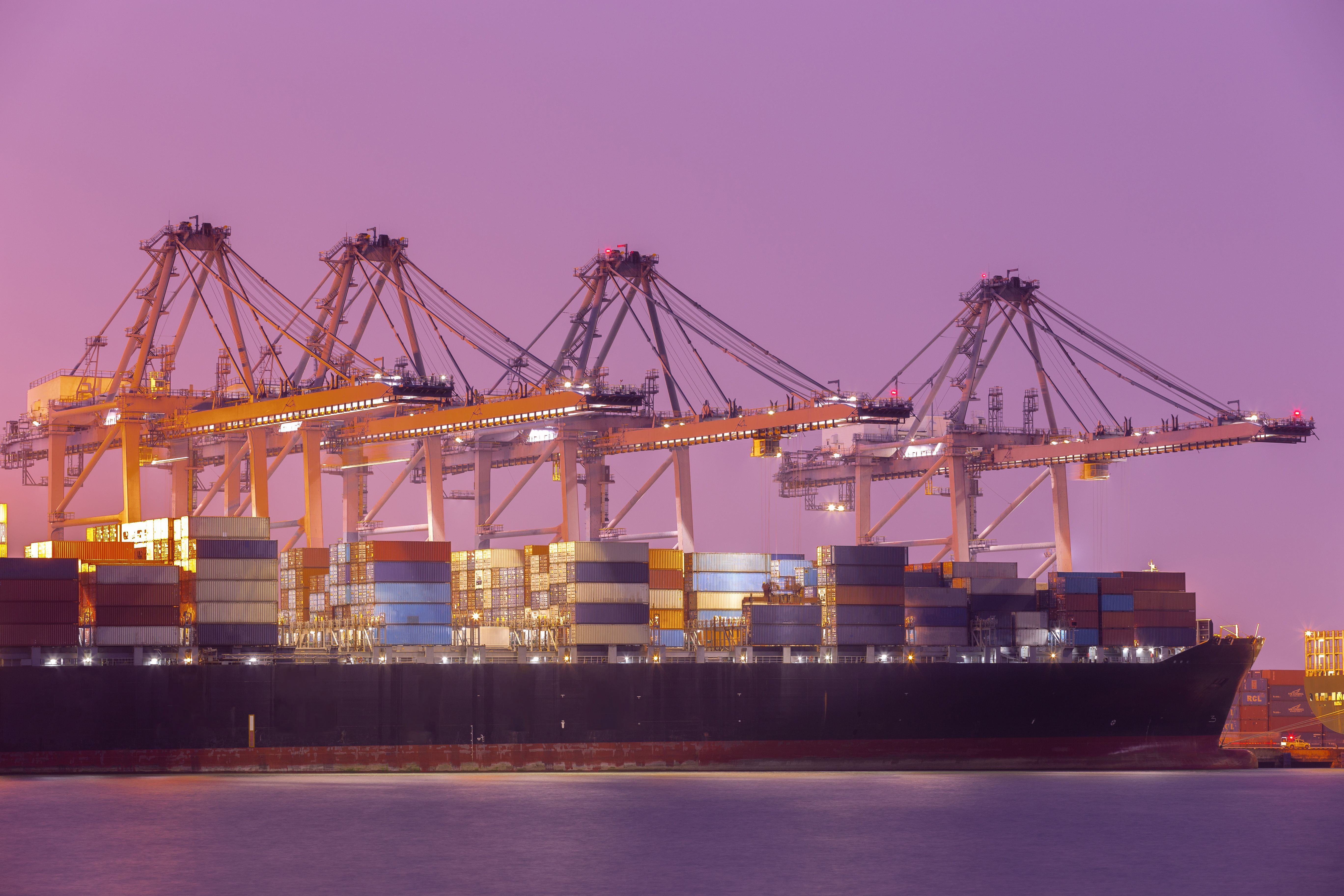
According to Freightwaves:
The Federal Maritime Commission (FMC) is reacting to the growing chorus of complaints and protests about operations at the ports of Long Beach, Los Angeles and New York/New Jersey by launching an expansion of an existing fact-finding mission.
The FMC on Thursday approved a supplement order that allows an expansion of an earlier order from the spring, International Ocean Transportation Supply Chain Engagement. The order specifically allows FMC Commissioner Rebecca Dye to investigate ocean carriers that are operating in alliances.
The announcement by the FMC comes a few days after a coalition led by the Harbor Trucking Association (HTA), the trade group representing the drayage industry in Southern California, called on the FMC to investigate the Long Beach and LA ports, with particular emphasis put on alliances.
The alliances allow two or more ocean carriers to get together and share some operations, but HTA is criticizing them for aggravating an imbalance between locations for container pickups and dropoffs. That cuts down on the number of dual transactions, in which a dropoff and pickup are done at the same location and at the same time. In turn, that creates delays that, when fueled by record import volumes, can result in big demurrage and detention charges against the drayage companies.
“The expanded commission investigation will seek to determine if the policies and practices of those shipping companies related to detention and demurrage, container return and container availability for U.S. export cargoes violate 46 U.S.C. 41102(c),” the FMC said in a statement.
That law, among other sections, includes a clause entitled “Practices in Handling Property.” It says that various players in the port supply chain, like a common carrier, must “establish, observe and enforce just and reasonable regulations” in handling property, such as containers.
Demurrage and detention charges have soared at the Southern California ports, in part because containers can’t always be returned when the drayage company wants them to and appointments have been difficult to get. In the press conference earlier this week, HTA CEO Weston LaBar referred to the problem as being similar to renting a car, having it scheduled for return on a Monday and then being told by the rental car agency that the driver couldn’t return it until Wednesday. Not only that, they’d get charged for it as well during that time.
The surge in imports into the port has also caused a squeeze on chassis supplies.
“The time has come to resolve the most serious impediments to port performance,” Dye said in a prepared statement. “The potentially unreasonable practices of carriers and marine terminals regarding container return, export containers and demurrage and detention charges in the ports of Los Angeles, Long Beach and New York/New Jersey present a serious risk to the ability of the United States to handle trade growth.”
Although Dye’s statement did not refer to the Interpretive Rule, that regulation passed earlier this year does deal with questions on how to regulate detention and demurrage in connection with the steady flow of containers in and out of ports.
The HTA, which has been pushing the issue across its coalition, said it “applauds” the FMC decision. And it took aim at the shipping companies, specifically calling out “foreign-owned” firms.
“The carriers have no one to blame but themselves,” LaBar said, speaking for the HTA. “This has been a hot issue of debate for six years, and following a four-year investigation, the FMC issued their Interpretive Rule outlining what they believe are reasonable business practices. The ocean carriers decided to do nothing. In fact, they raised the detention fees on American truckers. This is only the beginning. It’s time to fix this broken system.”
FMC Commissioner Dan Maffei released a statement that said he “strongly” supports the expanded fact-finding effort.
“There are reports that some carriers are threatening high charges for failure to return empty containers on time, even in cases where congestion has made it difficult or impossible to do so,” he said in the statement. “I fear there are too many in the industry who may be ignoring the principles set out in the Interpretive Rule when it comes to levying detention and demurrage charges.”
The HTA, along with the California Trucking Association, had earlier put out a sort of “call to action,” raising the issue of high demurrage/detention fees, the lack of dual transactions and calling on the shipping community to do something about it. Maersk is the only company to have publicly stepped forward in response to that. During the press conference earlier this week, LaBar said no other companies had done so privately.
The port of LA’s executive director Gene Seroka earlier this week discussed steps his agency was taking to improve “fluidity.”
While the earlier requests by HTA and its coalition partners focused on the Southern California ports, Dye’s order on an expanded fact-finding effort brings in the Port of New York and New Jersey.
“The commission now has a clear and compelling responsibility to investigate the practices and regulations that are having an unprecedented negative impact on congestion and amplifying bottlenecks at these ports and other points in the nation’s supply chain,” the FMC said in the formal supplemental order it published. “This is a serious risk to the growth of the U.S. economy, job growth and to our nation’s competitive position in the world.”
While Maffei did issue a statement of support, he suggested that more steps might be necessary. It may be, he said, that what comes out of the fact-finding mission isn’t enough.
He mentions the issue with dual transactions and “increasing reports that the delays and congestion problems are being exacerbated by carrier demands that a container, once emptied, be returned to a different location from that where it was obtained.” Maffei said it was “imperative” the commission look into that issue.
Maffei also said the commission needs to look at reports of a tight supply of containers to export chemical and agricultural products. “We have a responsibility to ensure that carriers do not limit the containers for U.S. exports in a way that is inconsistent with the Shipping Act and other U.S. laws,” he said in his statement.
--
LFS keeps you updated with the latest news, if you need additional information about our freight shipping solutions, contact us!
Follow us on Linkedin
For cargo insurance experts, please contact Skholl, our partner to avoid any freight damage.
--
By: LFS Marketing
December 1, 2020

According to TTNEWS:
Truck drivers and other workers in critical and essential jobs could be among the earliest people to receive COVID-19 vaccinations as several major pharmaceutical companies begin working with major transportation firms to deliver the vaccines.
Distribution, dubbed Operation Warp Speed, could start as early as mid-December, according to a committee within the Atlanta-based Centers for Disease Control and Prevention. As many as 40 million doses could be delivered by the end of the year.
On Nov. 25, the Advisory Committee on Immunization Practices said once the Food and Drug Administration approves a vaccine or multiple vaccines, the committee will decide whether to recommend it and, if so, who should receive it.
The committee is considering four groups, based on supply:
In March, the Department of Homeland Security and the Cyber and Infrastructure Security Agency proclaimed that truck drivers were considered critical infrastructure workers.
“Employees supporting or enabling transportation functions, including truck drivers, bus drivers, dispatchers, maintenance and repair technicians, warehouse workers, truck stop and rest area workers, and workers that maintain and inspect infrastructure (including those that require cross-jurisdiction travel),” the declaration said.
Also deemed essential were “employees of firms providing services that enable logistics operations, including cooling, storing, packaging and distributing products for wholesale or retail sale or use.”
University of Minnesota-Morris economist and professor Stephen Burks is a trucking industry expert and a former driver. He also is a recent COVID-19 survivor, having spent much of November ill with a high fever and congested lungs. His wife also was sick, but with much milder symptoms, and she recovered faster.
Burks told Transport Topics truck drivers need to be high on the list of people receiving the vaccine early.
“Medical personnel taking care of COVID patients would be the first in line, and that would make perfectly good sense,” he said. “And there are essential workers, such as truck drivers and grocery store workers who have to be interacting with people to make the basics of the economy go on, even when we have a lockdown. Truck drivers count in this group of essential workers.”
Biotech firm Moderna on Nov. 30 applied to the FDA for an emergency use authorization. Pharmaceutical company Pfizer filed its application with the agency Nov. 20.
The trucking freight and logistics industry will play a critical role in distribution, and other modes of transportation will be involved as well.
Fort Worth, Texas-based American Airlines announced Nov. 25 it recently had moved a trial of a major pharmaceutical company’s thermal packaging from Miami to South America in anticipation of flying the vaccines.
On a LinkedIn post, CEO Doug Parker pointed out, “More than half of the world’s air cargo flies in the bellies of commercial airliners. The vaccine cannot be distributed as quickly as possible without the combined capacity of cargo and commercial carriers.”
Several major transportation providers, including UPS Inc., FedEx Corp. and DHL, have told TT they are deep into their distribution plan. All of the logistics companies that will move the vaccine are building new cold storage facilities around the county to have enough capacity.
Of the vaccines showing the most promise, experts say Pfizer’s may be the most difficult to transport because of the ultracold temperatures required for the vaccine to be effective: near minus 94 degrees Fahrenheit, or 20 degrees colder than winter at the South Pole. It also has a shorter shelf life than Moderna’s vaccine.
For Moderna, its vaccine must be shipped at comparatively less frigid minus 4 degrees Fahrenheit but can be kept in a standard refrigerator for up to 30 days. Pfizer’s may only remain effective in a freezer for five days.
Burks is cautiously optimistic the logistics and trucking industry’s planning and preparation will carry the day.
“I am expecting some glitches, but I would expect overall, it will mostly work,” he said. “It’s going to be tricky, especially for the Pfizer vaccine. The problem is to get through the next six months or eight months. After that, we’ll be in a world that will be relatively plentiful with vaccines. We’ve got to get through the summer. Will we substantially get the job done? I am hopeful.”
--
LFS keeps you updated with the latest news, if you need additional information about our freight shipping solutions, contact us!
Follow us on Linkedin
For cargo insurance experts, please contact Skholl, our partner to avoid any freight damage.
--
By: LFS Marketing
December 1, 2020

TORONTO, Ont. – Being unable to reposition empty trailers on the other side of the border is a long-running frustration carriers and other supply chain participants would like to see resolved under a new U.S. presidential administration.
“The issue of the empty trailer seems so simple and really needs to be addressed,” said Stephen Laskowski, head of the Ontario Trucking Association and Canadian Trucking Alliance. He was speaking at a virtual Truckload Carriers Association (TCA) Bridging Border Barriers event. “You have the supply chains on both sides of the border in support of it, and it’s good for the environment.”
But industry associations have spent 10 years lobbying to allow greater flexibility on the movement of empty trailers without success.
Mark Seymour, CEO of Kriska Transportation Group, said the current rules are costly for carriers and drivers, who must live unload rather than dropping a loaded trailer and grabbing an empty to be loaded elsewhere for the return trip.
“Drivers are spending more time bumping docks and waiting to get unloaded,” Seymour said. “It negatively affects utilization and it translates to drivers wanting and deserving more pay because they are spending more time to do the same amount of work. It’s more efficient for us and the customers to give us the flexibility to drop a trailer, grab an empty and go load it somewhere else.”
He said some drivers have even been turned away at the border when they said they are going to drop a loaded trailer, with Customs assuming they would then be violating cabotage rules by picking up an empty.
John Lyboldt, TCA president, said the industry can expect changes under President-Elect Joe Biden’s administration.
“I think you’re going to see some additional trade cooperation,” he said. “I think there are opportunities for us to make some gains in regards to this issue.”
Trucking-related issues that are likely to be revisited by Biden include infrastructure, the classification of independent contractors, labor union relations, tax reform, tort reform and tolling by states.
The Canada-U.S.-Mexico Agreement (CUSMA), which replaced NAFTA, has done little so far to bolster cross-border trade, but still holds promise.
“Anyone who thinks that because of this agreement trade is going to skyrocket overnight will be disappointed,” Lyboldt said, noting the pandemic may have stalled progress on things like reducing red tape, improving productivity and digitizing paperwork.
Laskowski said he’d like to see Customs agencies on both sides of the border invest more heavily into their hardware and software systems, to prevent blockages such as one that recently occurred causing hours-long delays.
“The border, on both sides, was basically down for a couple days as we had to deal with systems issues,” he said. “Those systems need investments, just like roads and bridges.”
Lyboldt agreed, noting that on a recent visit to the southern border town of Laredo, Texas, Customs agents said their biggest challenge is access to sufficient broadband.
As for CUSMA, Laskowski said it’s a complicated deal and lawyers and politicians on both sides of the border are still in the process of interpreting all its implications.
At the border, Seymour also expressed concerns about what appears to be an increase in driver harassment by Customs. One Kriska driver faced questions on why he had been in the U.S. for so long, even when he explained he’d completed his reset there.
“We all complain insurance is very expensive but I’ve come to realize why it’s become as expensive as it is, and frankly I support the direction it’s going.”Mark Seymour, CEO, Kriska
“It’s silly,” he said. “It’s harassing, nobody likes it and it’s not going to serve any of us very well.”
He wondered if an increase in trucker scrutiny was because the border is less busy with a lack of passenger car traffic.
But when it comes to skyrocketing insurance costs, one of the most pressing issues facing many fleets, Seymour was less sympathetic.
“Insurance has become very expensive and it’s a function of many contributing factors,” he said. “One of my beliefs is, it was too cheap for too long and a lot of people got in the market on the supply side, lost boatloads of money, and quickly pulled out. So now the market is very small, not that many [insurers] want to play in it, so they’re being very fiscally responsible.”
Kriska is in a captive, giving Seymour the opportunity to see first-hand how expensive claims have become.
“I have the privilege of seeing what it really looks like when they pull the covers back,” he said. “We all complain insurance is very expensive but I’ve come to realize why it’s become as expensive as it is, and frankly I support the direction it’s going.”
The costs of accidents, capital costs of equipment, the cost to repair the equipment, and environmental cleanups have all gone up in price, not to mention nuclear verdicts. Seymour said captives are a good way to protect against some of those challenges, as long as you align with the right partners who share a commitment to investing in safety and reducing claims.
“But there’s still the underbelly of our industry that continues to find wormholes to cheat, lie and steal,” he said, naming exploiting Facility Association insurance as one example, and plating vehicles in other provinces as another.
When it comes to reducing claims in the first place, Seymour said slowing down is one way to achieve it. Kriska governs its trucks at 100 km/h.
“We are looking at, how do we reduce the frequency and severity [of crashes],” he said. Other initiatives taken by the fleet include installation of forward-facing cameras (a requirement for all members of the insurance captive it is in), and spec’ing collision mitigation systems.
“Complaining about the cost of insurance is going to do nothing unless you’re doing something about it that will help your case,” Seymour added.
--
LFS keeps you updated with the latest news, if you need additional information about our freight shipping solutions, contact us!
Follow us on Linkedin
For cargo insurance experts, please contact Skholl, our partner to avoid any freight damage.
--
By: LFS Marketing
November 23, 2020
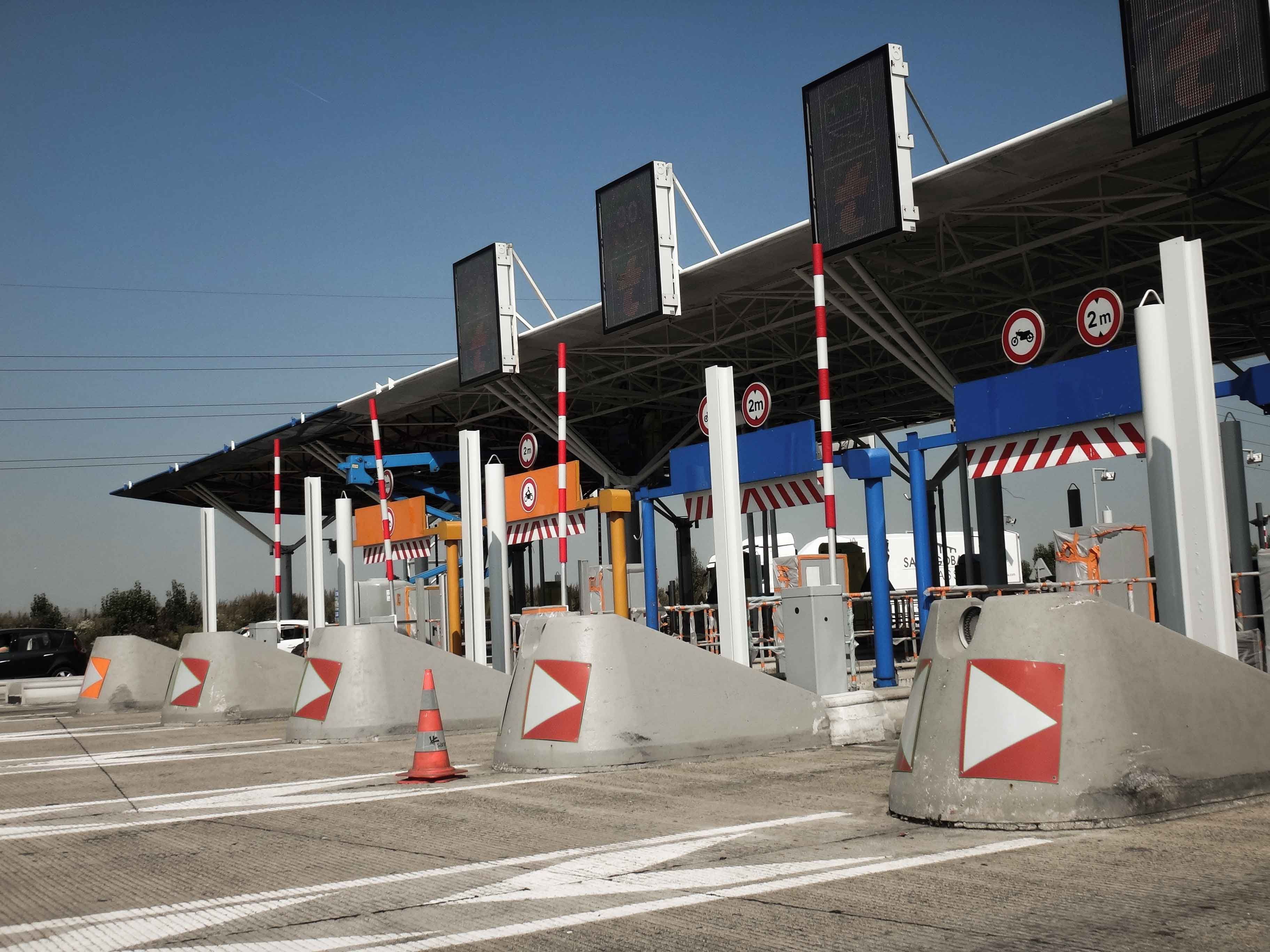
According to Freightwaves:
The U.S. land borders with Mexico and Canada will remain closed for nonessential travel until at least Dec. 21, after the three countries agreed to extend the restrictions as COVID-19 surges.
Officials announced the border closure extension on Thursday. Trucks will continue to move freely across the borders, as the movement of essential goods remains exempt from the restrictions.
The borders have been closed for nonessential travel since March to curb the spread of COVID-19.
The extension was largely expected as cases of COVID-19 continue to grow in the U.S., Canada and Mexico. However, promising results from trials of two COVID-19 vaccine candidates have raised hopes that the restrictions could be lifted in 2021.
The restrictions haven’t directly affected cross-border freight volumes, which have recovered from their pandemic lows.
--
LFS keeps you updated with the latest news, if you need additional information about our freight shipping solutions, contact us!
Follow us on Linkedin
For cargo insurance experts, please contact Skholl, our partner to avoid any freight damage.
--
By: LFS Marketing
November 23, 2020

According to Freightwaves:
The city of San Angelo, Texas, recently approved a $600,000 deal with South Plains Lamesa Railroad (SPLRR) to create a multi-commodity railroad transloading facility between central Texas and Mexico.
SPLRR will purchase a 180-acre tract from San Angelo and invest about $1 million to develop the new rail port. San Angelo is located in west central Texas, about 200 miles from San Antonio and 390 miles from the Mexican border.
San Angelo “could become a new major distribution center of products coming out of Mexico, and that also gives us an opportunity to send products to Mexico as well,” Guy Andrews, director of the San Angelo Development Corp., said to the San Angelo Standard-Times.
The new facility will be called the San Angelo Rail Port.
SPLRR, based in Slaton, Texas, operates more than 23 miles of track in the area. The company also operates a rail port facility in Pueblo, Colorado, with 28 miles of track.
SPLRR’s rail port in San Angelo will connect to the Texas Pacifico Transportation (TXPF) branch of the South Orient Rail Line, a 385-mile rail line owned by the state of Texas and operated by TXPF. The line extends from the San Angelo area all the way to the U.S.-Mexico border in Presidio, Texas.
TXPF is a Class 3 railroad operating company based in San Angelo that is part of Grupo México.
Officials at TXPF said the San Angelo rail port will help boost freight movements through West Texas and also tie into the eventual reopening of the Presidio-Ojinaga International Rail Bridge.
In 2019, the Texas Department of Transportation approved a 10-year, $59.7 million plan to rehabilitate hundreds of miles of the South Orient Railroad line, including reconstructing the Presidio-Ojinaga International Rail Bridge on the Mexican border. A fire destroyed the previous bridge in 2009.
The bridge is about 95% complete and could be operational by the second quarter of 2021, said Stan Meador, a TXPF spokesman.
“This bridge project has been in the works for years. Now that it is getting close, more and more shippers are showing interest,” Meador told FreightWaves.
Meador said the type of cross-border commodities initially anticipated for the bridge include energy products, such as petroleum-based products coming out of the Permian Basin and going into Mexico, as well as agriculture commodities.
“Long term, any kind of commodity that you see crossing the border could be something we’re looking at, things like intermodal automotive,” Meador said.
--
LFS keeps you updated with the latest news, if you need additional information about our freight shipping solutions, contact us!
Follow us on Linkedin
For cargo insurance experts, please contact Skholl, our partner to avoid any freight damage.
--
By: LFS Marketing
November 23, 2020
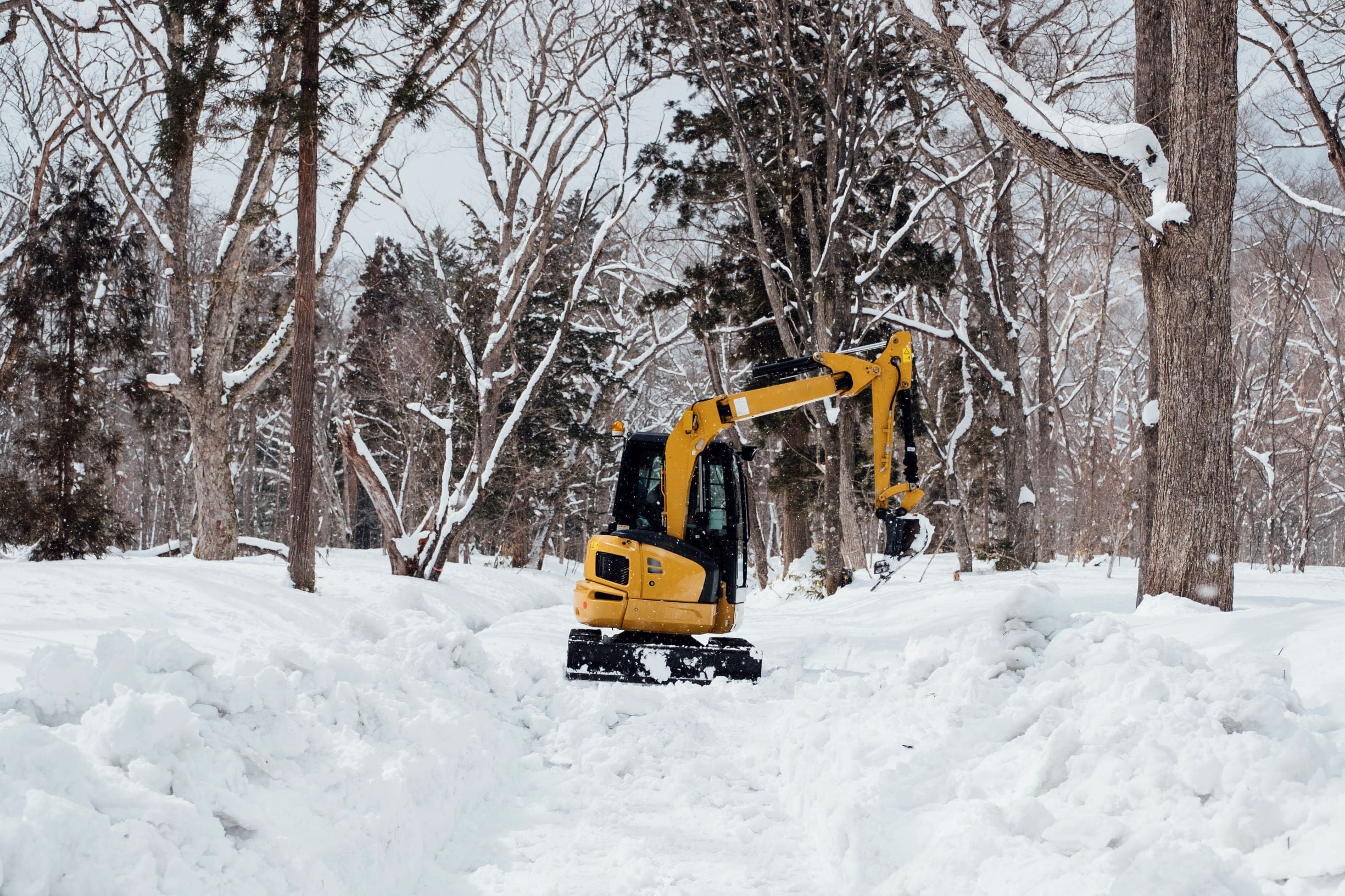
"Truckers who can’t avoid will have to chain up as heavy snowfall develops. High winds will increase the travel risk.
A storm system is approaching the Mountain West the next few days, producing light snow and freezing rain in high elevations Monday. The storm will spread south Tuesday from the Cascades and northern Rockies into the Sierra Nevada. As of Monday morning, the National Weather Service (NWS) has various winter storm alerts posted only for the Sierra Nevada, where the worst weather may occur.
Snow levels there will start out around 6,000 to 7,000 feet, then lower slightly Wednesday. Through Wednesday afternoon, 12 to 24 inches of snowfall could pile up along the crest of the northern Sierra Nevada and over the higher elevations of the southern Cascade Range.
In addition to the heavy snowfall, strong gusty winds from the southwest will lead to blowing snow and occasional whiteout conditions. Significant disruptions to travel and freight movement are likely across the northern Sierra highway passes late Tuesday into Wednesday.
The highest volume market in the path of this snowstorm is Stockton, California. Indicated on the FreightWaves SONAR map of the Outbound Tender Volume Index (OTVI), it appears in blue. This indicates a high level of outbound loads being offered by shippers to carriers.
Out of 135 freight markets, Stockton ranks 15th regarding OTVI. So a lot of truckers may be heading there to pick up loads. However, the storm will delay drivers arriving Monday if they can’t leave before the storm intensifies by nighttime. Otherwise, they may have to wait at least a couple of days for the storm to fade." Freightwaves.
--
LFS keeps you updated with the latest news, if you need additional information about our freight shipping solutions, contact us!
Follow us on Linkedin
For cargo insurance experts, please contact Skholl, our partner to avoid any freight damage.
--
By: LFS Marketing
November 17, 2020

According to Freightwaves; Pfizer largest - ever vaccine distribution for Covid 19 will de managed on its own and they will ship COVID medicine directly from U.S. manufacturing facilities and warehouses to end users with the help of trusted transportation providers. Direct shipping enables Pfizer to have greater control and real-time insights into the status of the frozen vials.
The U.S. government has contracted with the New York-based pharmaceutical company to deliver 100 million initial doses once its vaccine is approved, with an option for an additional 500 million doses. Pfizer’s product must be maintained at minus 75 degrees Celsius (-109.3 degrees Fahrenheit) to maintain its effectiveness. Officials this week said they expect to provide safety data from final-stage clinical trials to the Food and Drug Administration by the third week of November and then apply for an emergency use authorization if everything checks out.
Uncertainty about the cold-chain capabilities of transportation providers and vaccine administration facilities led the drugmaker to co-create a special thermal cooler with real-time GPS and thermal monitoring that can keep its vaccine in a deep freeze for 10 days if left unopened. The shipping container, about the size of a small suitcase, uses dry ice to maintain recommended storage conditions. Once opened, vials can be stored at normal refrigerated temperatures for five days. Replenishing dry ice can extend the storage time after opening to 15 days.
Alcorn said Pfizer also developed a control tower that will get real-time alerts if the temperature deviates from the required range or a shipment doesn’t reach its destination within a prescribed time frame.
Control towers are centralized hubs with logistics specialists that capture data from all stages of the supply chain to improve processes and manage events.
Data loggers have provided GPS information for pharmaceutical shipments for several years, but Alcorn said having location data integrated with temperature readings from a refrigerated container is new for the industry.
LFS keeps you updated with the latest news, if you need additional information about our freight shipping solutions, contact us!
Follow us on Linkedin
By: LFS Marketing
November 16, 2020
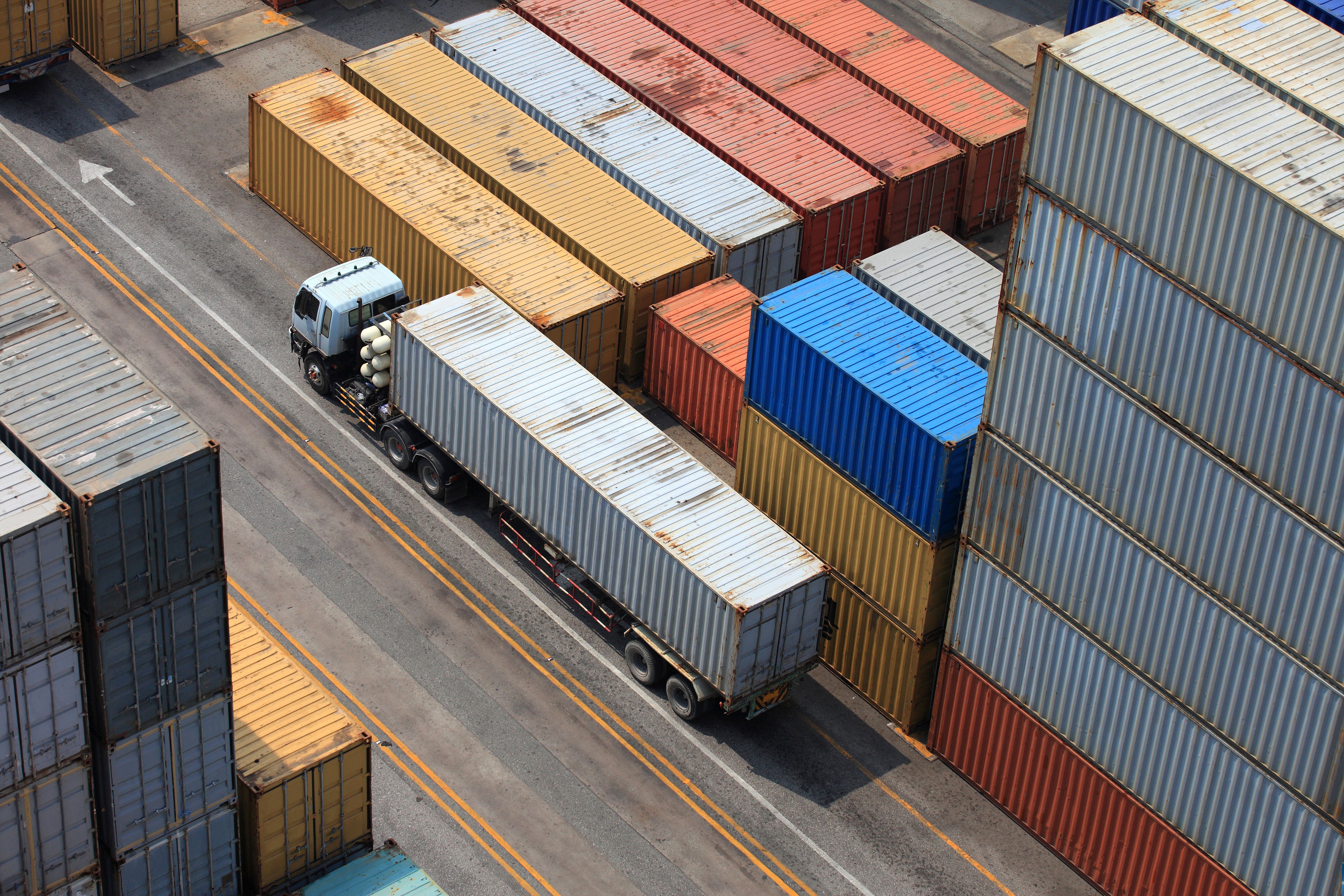
The humble shipping container has a new status in the COVID-19 pandemic: hot commodity.
Shortages of the ribbed steel boxes that have plied the global economy for a half-century are plaguing transpacific routes in particular. The dearth is boosting the purchase price of new containers and lease rates by 50%, snarling port traffic, adding surcharges and slowing deliveries heading into the holidays.
A surge in Chinese exports and robust consumer demand in the U.S. help explain the tightness, and major shipping liners such as Hapag-Lloyd AG are scrambling to reposition their bigger 40-foot-long containers from less busy parts of the world. Nico Hecker, Hapag-Lloyd’s director of global container logistics, dubbed it a “black swan” moment.
The current scarcity means importers are facing longer waits for their goods and might pay extra fees to secure the transport equipment. The impact can ripple beyond the flow of goods between the world’s largest economies.
“The more profitable the China-U.S. lane becomes, the more incentivized carriers are to divert containers from other lanes, increasing the prices on shipping in secondary markets,” said Eytan Buchman, chief marketing officer at Hong Kong-based Freightos, an online shipping marketplace. “Historically, this has been a driver of higher intra-Asia rates, with spare containers located in Asia diverted to the transpacific route.” The estimates show that container shortage may remain through at least Chinese New Year, in mid-February.
LFS keeps you updated with the latest news, if you need additional information about our freight shipping solutions, contact us! Follow us on Linkedin
For cargo insurance experts, please contact Skholl, our partner to avoid any freight damage.
By: LFS Marketing
November 13, 2020

"Pandemic pushes U.S. online sales to predicted 2030 level. Online sales from late November to Christmas are expected to generate more than 20% greater outbound volume in the region, with the U.S. alone exporting about 30% more parcels.
The U.S. Department of Commerce reported that second-quarter domestic e-commerce sales grew by almost a third from the previous quarter and 44.5% from the same period a year ago.
eMarketer forecasts U.S. e-commerce sales will jump 36% to $190.5 billion during the holiday season, while brick-and-mortar retail will decline 4.7% to $823 billion. The research firm estimates Cyber Monday sales will increase 38% to $12.9 billion. It expects e-tail to represent 18.8% of total retail sales, up from 15.9% in 2017.
Prior to the pandemic, analysts projected holiday e-commerce sales to increase 13% to $155.5 billion, roughly on par with the compound annual growth of the past three holiday seasons. In a recent report, Berkeley Research Group said it believes digital sales could go even higher, to $200 billion.
The flood of new orders, especially early in the coronavirus crisis when so many stores were closed, impacted express carriers’ delivery times, leading them to eliminate on-time guarantees, implement package surcharges and throttle volume available to some retailers.
The current gap between demand and supply is about 2.6 million packages a day, for a seven-day week, which will rise to 7.2 million during the upcoming peak season, according to data from Pittsburgh-based ShipMatrix." Freightwaves
LFS keeps you updated with the last news, if you need additional information about our freight shipping solutions, contact us! Follow us on Linkedin
For cargo insurance experts, please contact Skholl, our partner to avoid any freight damage.
By: LFS Marketing
November 11, 2020

“Tropical Storm Eta is a large storm, with tropical winds extending 300 miles away from the center, moving slowly to the southwest. The storm is forecast to pick up steam and become a hurricane by today before turning northward in a few days. Eta could then make landfall again later in the week near Cedar Key, Florida. Most coastal areas of the Florida Peninsula are under a tropical storm warning from the National Hurricane Center (NHC).
Currently, there is a flash flooding in the streets of the Miami metropolitan area being an issue for drivers. Roadblocks are possible, leading to delays in surface transportation. River flooding could impact roads in other parts of southern Florida. Carriers start to worry about the safety of their employees and announce limited transportation services.
Delays in containerized cargo are likely too. Ship-to-shore operations and vessel movement remain suspended at the Florida ports of Key West, Miami, Tampa, St. Petersburg, Manatee and Fort Myers, according to the Coast Guard.” Freightwaves.
LFS Keeps you updated with the last news. Follow us on Linkedin. For cargo insurance experts, please contact Skholl, our partner to avoid any freight damage. If you need additional information about our freight shipping solutions, contact us!
By: LFS Marketing
November 10, 2020
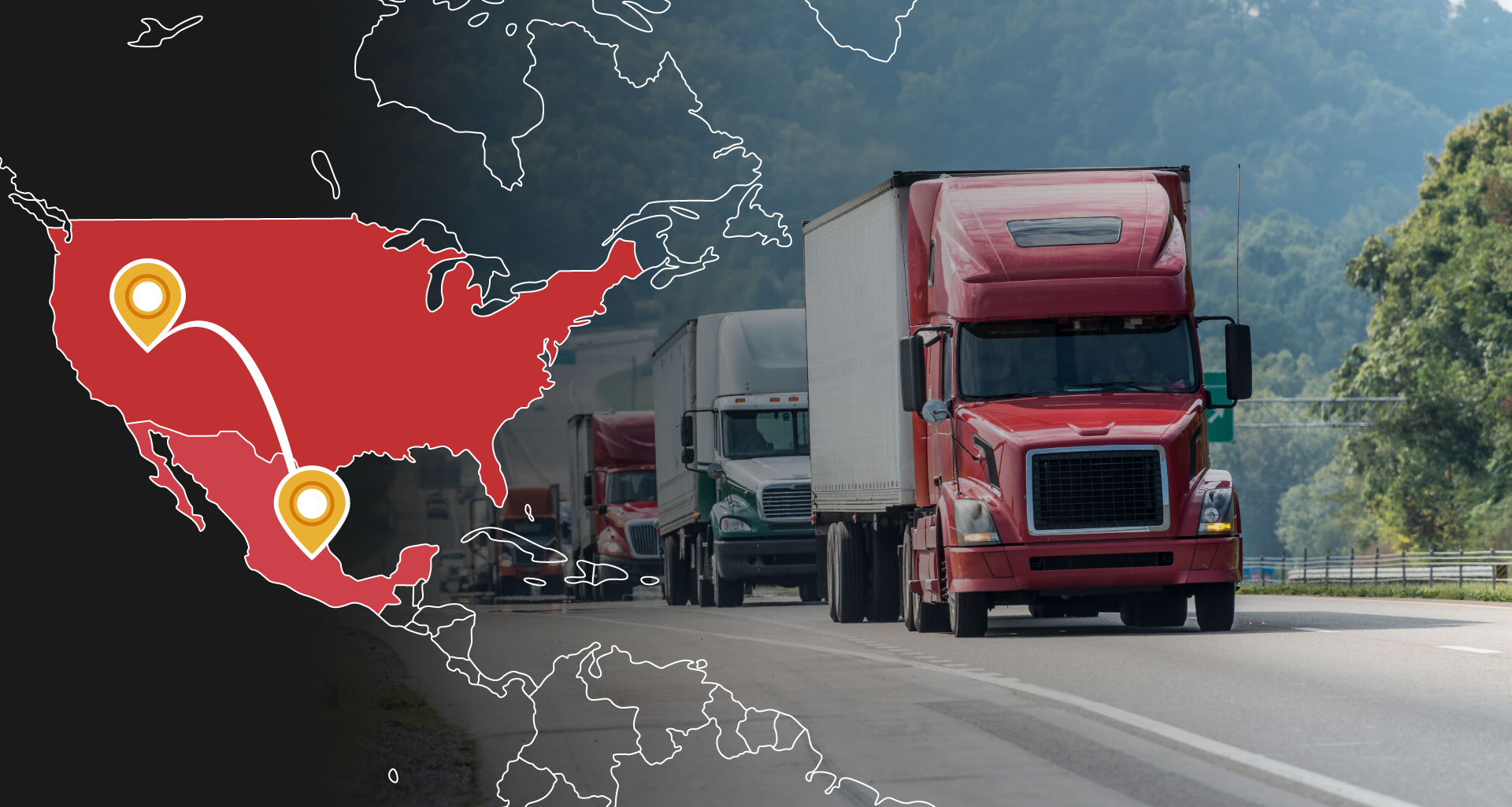
According to Freightwaves, "Freight deliveries from Mexico to the United States are soaring as the transportation industry enters the peak holiday season.
With stronger freight demand and higher trucking rates already affecting volumes along the U.S.-Mexico border, logistics professionals expect capacity to be tight the rest of the year and perhaps the early part of next year.
Heading into peak holiday season, 2020 volumes and tender rejections in Laredo, Texas, the busiest inland port along the U.S.-Mexico border, are already well above levels recorded at this time in 2018 and 2019. Consumer packaged goods, apparel, automotive has all been up.
The imbalance of northbound freight out of Mexico compared to southbound freight is one of the largest contributors to the current lack of capacity at the border. It’s caused the price of getting products shipped out of Mexico to rise significantly.
The challenge of imports from the U.S. into Mexico really taper off. What’s happened is you have shippers in Mexico who would, under normal conditions, be buying products that come from the U.S,” Henry said. “In some cases, shippers stopped purchasing that product.
Recent data shows that Mexico’s economy grew 12% in the third quarter, making up for some of the contraction in the previous three months at the height of the coronavirus lockdown. The exchange rate has obviously really deeply affected the imports from the U.S. into Mexico. That has really caused a lot of disruption in the cross-border Mexico market." Freightwaves.
LFS Keeps you updated with the last news. Follow us on Linkedin. For cargo insurance experts, please contact Skholl, our partner to avoid any freight damage. If you need additional information about our freight shipping solutions, contact us!
By: LFS Marketing
November 11, 2020
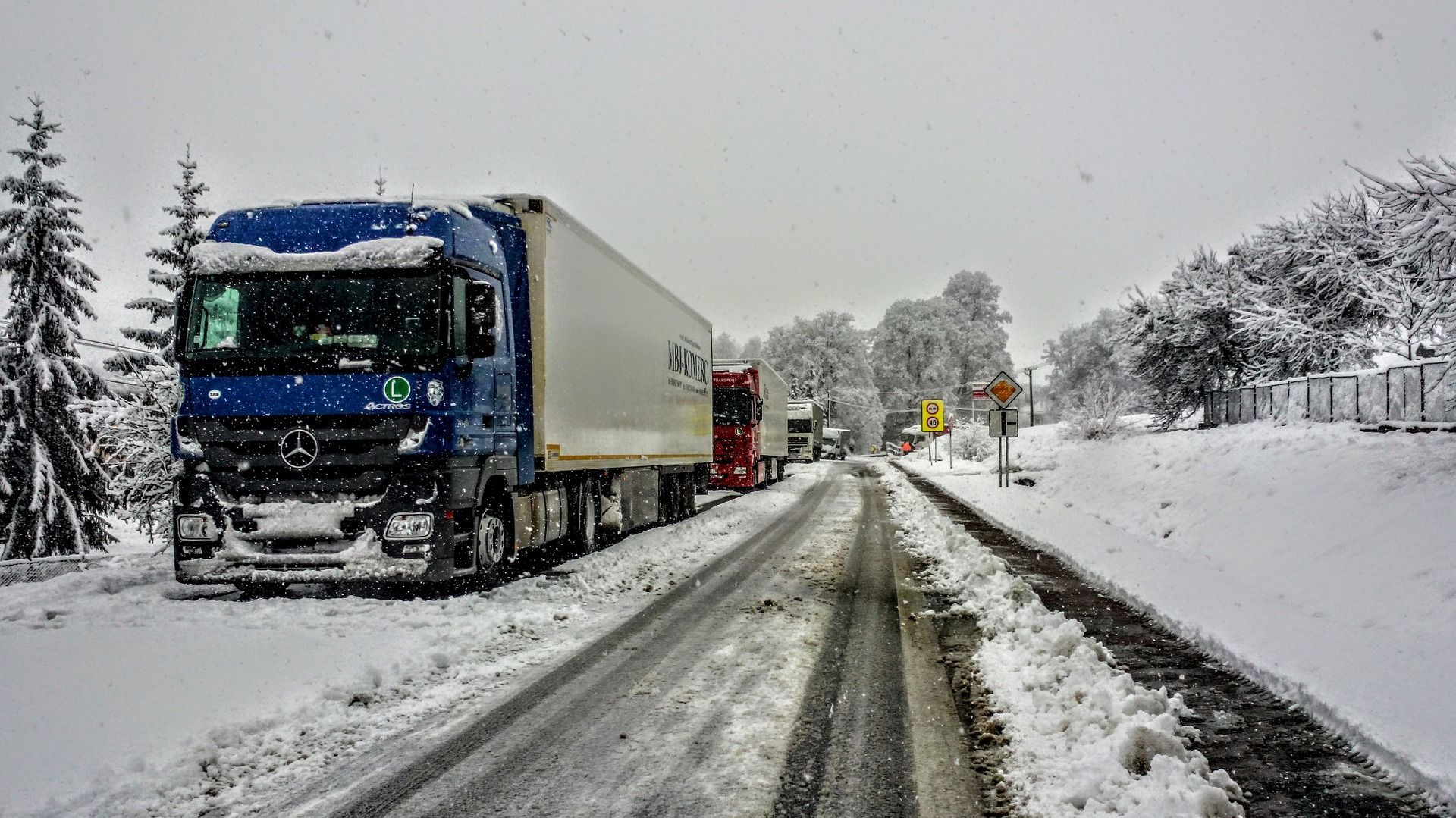
According to Freightwaves, drivers are facing wintry start to week in Northeast.
The National Weather Service (NWS) has issued a lake effect snow warning in places such as Oswego, Watertown and Lowville, New York, and other areas on the Tug Hill Plateau will likely see another 7 to 12 inches. This could impact travel on Interstate 81, where blowing snow will reduce visibility at times..
Areas a little farther inland, like Big Moose, Eagle Bay, McKeever, Old Forge, Atwell, Nobleboro, Northwood, Long Lake, Sabattis, Hoffmeister, Boonville and Wells, New York could see an additional 5 to 10 inches of snowfall.
Cold, northwesterly winds on the backside of a low-pressure system are flowing over the relatively warmer waters of Lake Ontario and the St. Lawrence River.
These are freight markets that have experienced increases in outbound volumes over the past week. So many drivers could be heading into these high winds areas to pick up loads.
LFS Keeps you updated. If you need information about our freight shipping solutions, contact us!
For cargo insurance experts, contact Skholl, our partner to aboid any freight damage.
Follow us on Linkedin
By: LFS Marketing
November 3, 2020
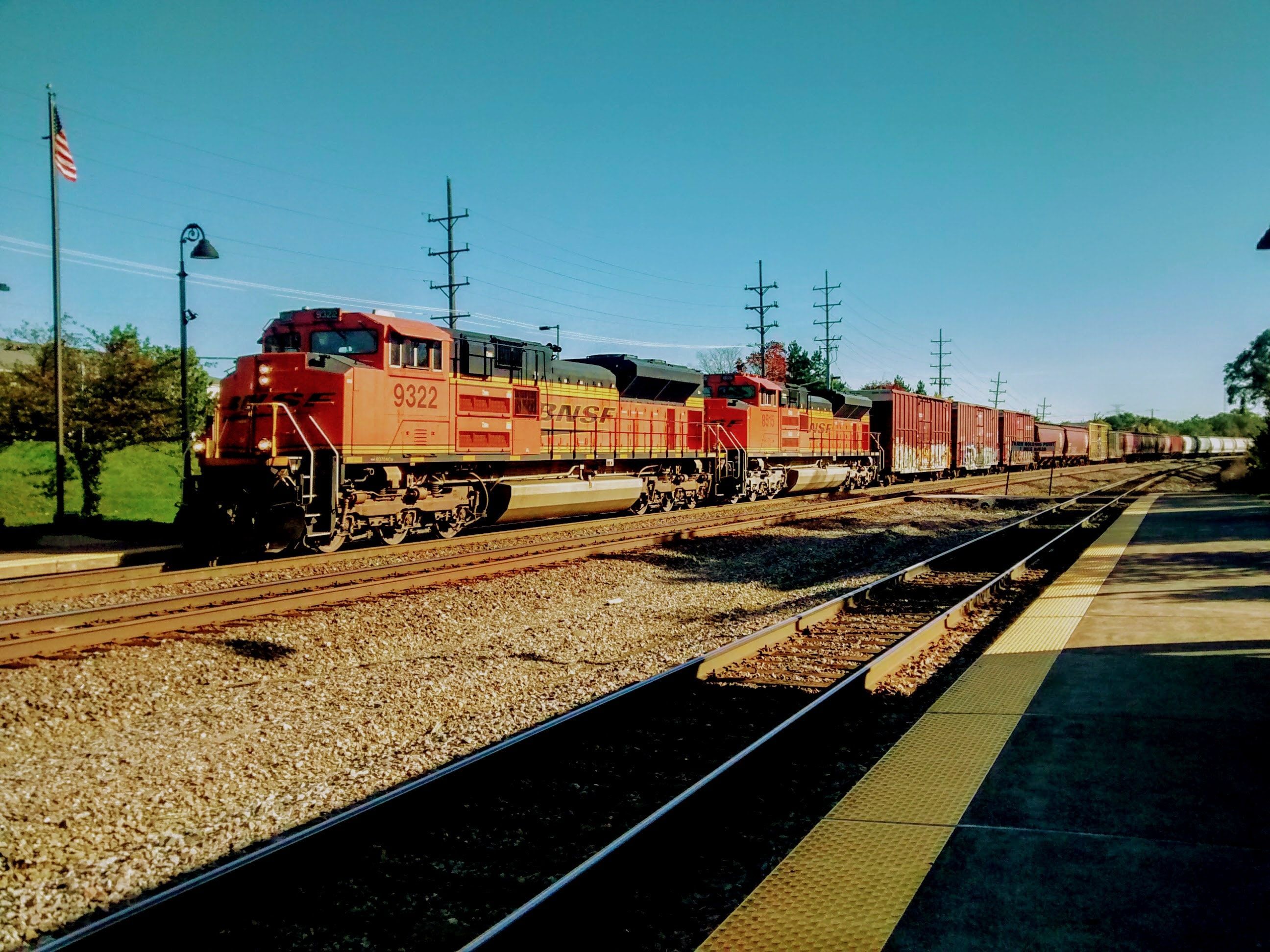
According to freightwaves, U.S. rail volumes on a weekly basis rose nearly 2% amid a 9% increase in intermodal traffic.
U.S. rail traffic was 522,653 carloads and intermodal units for the week ending Oct. 24, which is 1.9% higher than the same period in 2019, according to the Association of American Railroads (AAR).
Of that, intermodal traffic rose 9.4% to 295,110 containers and trailers, while carloads were 6.5% lower compared with year-ago levels, at 227,543 carloads.
On a year-to-date basis, U.S. rail volumes were 20.16 million carloads and intermodal units, which is 9.6% lower than the same period in 2019.
Although U.S. carloads are still down year-over-year, the difference between the two years is narrowing.
Indeed, some commodities, such as grain, chemicals and motor vehicles and parts, are helping to offset declines for energy-related commodities such as coal and petroleum.
Macroeconomic factors, such as consumer confidence, can influence rail volumes.
LFS offers you intermodal solutions to ease your freight shipping proccesses. Contact us and get more information.
Follow us on Linkedin
By: LFS Marketing
November 3, 2020
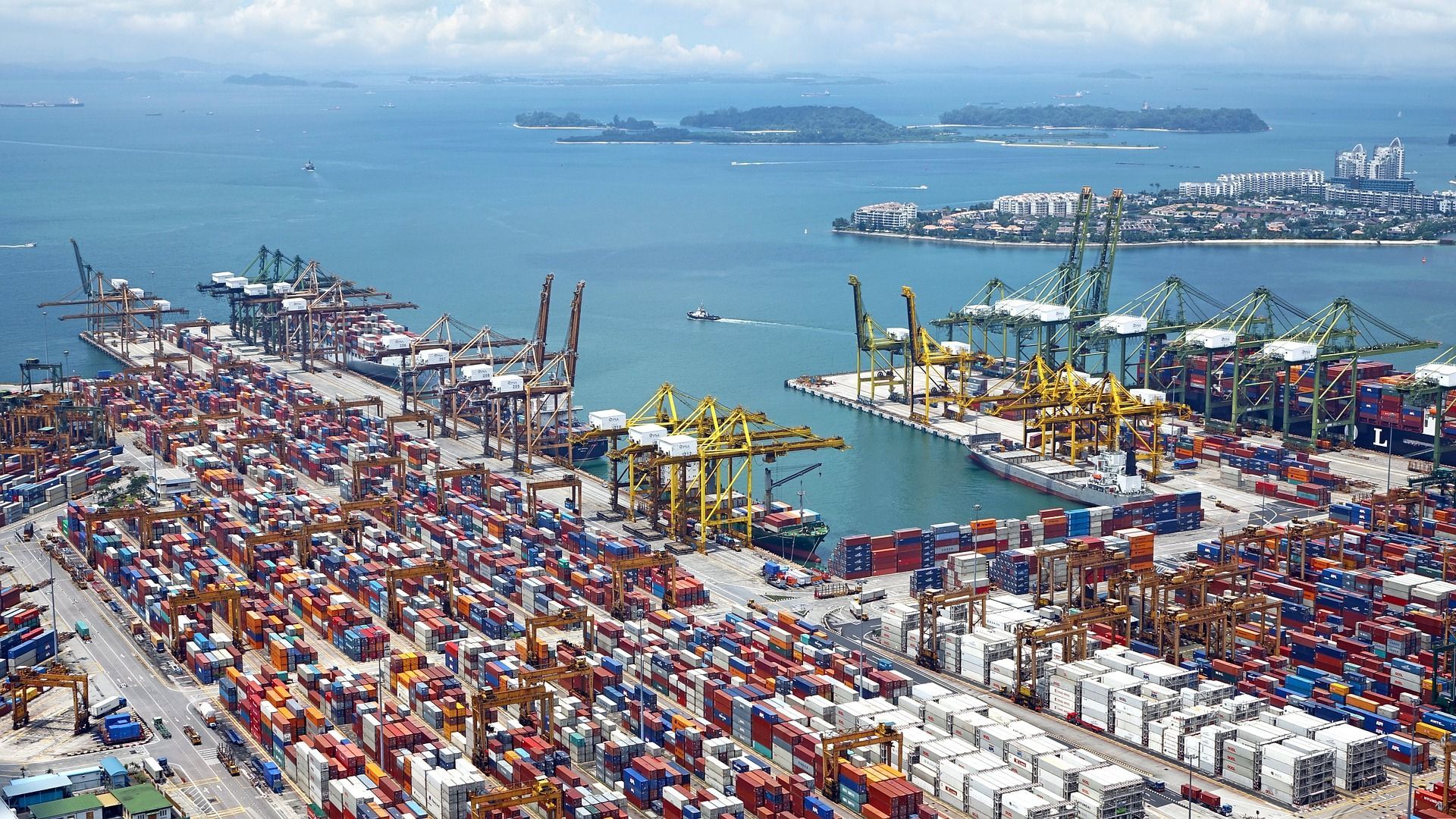
According to The Loadstar, retailers are concerned about delays to their holiday merchandise, as robust import volumes are straining the US west coast gateways.
In particular, they claim, the port complex of Los Angeles and Long Beach is already struggling with lengthening transit times.
According to the Port Tracker report, published monthly by the National Retail Federation (NRF) and Hackett Associates, US container ports handled 2.1m teu of imports in August, up 9.7% month on month, and 8% year on year, to reach the highest monthly level on record.
The brunt of this wave of imports has hit the LA/LB complex, and increased further last month as Los Angeles recorded its strongest September tally in its history, its teu count up 13.3% from a year earlier.
And whereas it handled 627,000 teu on average every month in the first half of the year, this jumped to 900,000 teu in the third quarter.
At Long Beach, the container count was up 12.5% year on year in September.
Up the coast, the port of Oakland reported a 10.6% surge in imported containers on September 2019, to 93,916 teu, which smashed the port’s previous monthly record of 84,901 teu, attributed to retailers stocking up for the holiday season.
“We continue to see the replenishment of warehouse and distribution centre inventories, along with retailers prepping for year-end holidays,” said Gene Seroka, executive director at the port of Los Angeles.
September US retail sales were up 1.9% on August and 5.4% year on year, led by non-store retail (largely e-commerce), which was 23.8% higher than a year earlier.
The surge in e-commerce has been widely identified as the reason for the disproportionately strong surge of cargo flows through the west coast ports, as transit times from Asia to the US interior are faster than routings via the Atlantic or Gulf ports. And faced with soaring airfreight rates, many e-commerce shippers have embraced expedited ocean services to Los Angeles and Long Beach.
And, burned by stock-outs in the spring, retailers have been building up inventory, lest they face a repeat of that experience and lose business to competitors.
NRF VP for supply chain and customs policy Jonathan Gold said in Port Tracker: “Retailers are making sure their shelves and warehouses are well stocked for the holidays. They are stocking up earlier than usual because they know many consumers will be shopping early this year to avoid crowds and shipping delays.”
But Port Tracker predicts a slowdown to 1.86m teu in October, down 1.1% year on year, and foresees further decline in momentum for November (down 5.1% year on year to 1.61m teu) and December (down 11.2% to 1.53m teu). This would add up to 20.5m teu this year, 4.9% lower than in 2019.
However, other predictions are more bullish beyond October.
“The NRF is predicting October volumes to be only 1% behind last year. And though they expect a drop-off starting in November – possibly impacted by the delay of additional government stimulus – there are other indications that restocking and pre-ordering of spring shipments ahead of Chinese New Year in February could keep volumes elevated into next year,” said Eytan Buchman, chief marketing officer at Freightos.
CRM service provider Salesforce predicts a massive surge in online shopping during the holiday season, with 30% growth globally and 34% in the US. The ensuing volume of shipments will likely exceed available capacity by 5% and lead to delays of up to 700m packages, it warned.
Some carriers have indicated that they anticipate strong volumes through the remainder of this year. Despite the reinstatement of blanked sailings and the deployment of additional loaders, cargo terminals at Asian transshipment hubs have continued to see high roll-over rates (in excess of 30% in Singapore, Ningbo and Pusan), which are expected to continue well into the fourth quarter. This also suggests continuing heavy volumes and congestion at the US west coast ports.
Los Angeles and Long Beach have struggled with congestion since June, owing to elevated volumes, labour shortages and reduced work teams at the terminals and distribution centres, and chassis shortages. According to the Pacific Merchant Shipping Association, container dwell time in Southern California in August was 3.25 days, up from 2.8 days in July, with 10% of the containers stuck at terminals for five days or longer.
The congestion spread to the rail carriers serving the ports. Their struggles with elevated volumes have led to rate hikes and surcharges. Union Pacific raised spot rates and/or surcharges three times within a month.
The pain for importers appears to be far from over.
In LFS, we offer you freight shipping solutions in Mexico, Canada and the U.S. Contact us to ease your processes and help you to import or export your loads.
By: LFS Marketing
October 27, 2020

According to Bloomberg Tax, replacing NAFTA with USMCA meant modifications to the existing rules of origin that will determine if a product qualifies for duty-free treatment. For many importers the transition caused concern about whether they would lose duty-saving benefits. Importers quickly began looking at their existing top imports by value to understand if they will qualify. However, as supply chains are shifting faster than ever, validating potential new opportunities to apply FTAs is as critical as determining whether existing product claims can continue.
This is particularly true for industries where USMCA simplified or expanded the opportunities for duty-free treatment, such as computer and electronic product manufacturing, which ranks as the seventh largest U.S. manufacturing industry, according to the publication U.S.-Mexico-Canada Trade Agreement: Likely Impact on the U.S. Economy and on Specific Industry Sectors. Electronics is a highly integrated industry with Mexico as a major manufacturing hub for these products. In fact, Mexico is one of the global leaders in production of flat-screen televisions and computers, most of which are exported to the U.S. By recognizing the deep integration of these supply chains, USMCA negotiators generally eased the qualification by reducing regional value content (RVC) requirements, converting tariff shift requirements, and making tariff shift rules easier to meet.
Another challenge is USMCA’s mid-year implementation. This timing means that importers must assess how this will impact their current sourcing plans. Doing so requires developing a USMCA plan with clear goals, then assessing each project, and its components, in light of those goals. Not doing so increases the potential of proceeding with projects that may no longer be beneficial or could leave money on the table. While USMCA allows preferential duty treatment to be applied retroactively, it does not allow importers to reclaim the merchandise processing fee for post-entry claims. While on a per-entry basis the maximum payment is only $528, over time managing USMCA claims proactively at the time of entry can result in substantial savings. While this may be a legislative oversight that will be addressed in the future, developing a plan to analyze USMCA’s entire potential impact on your company and then prioritizing next steps can result in a more complete duty-savings picture.
Understanding USMCA’s New Requirements
With only a short time to assess the new requirements, trade professionals across industries are, in some cases, struggling to understand and apply USMCA’s rules in a real-world context. One of these challenges is adjusting to the removal of the NAFTA preference override. Unlike NAFTA, a qualifying USMCA import may potentially have a country-of-origin marking that may not be U.S., Mexico, or Canada. Imported goods under NAFTA had to both (1) qualify under the NAFTA rules of origin, and (2) meet the NAFTA marking rules to be considered as originating in a NAFTA country. Where the marking rules were more stringent than the rules of origin, importers could claim the “NAFTA preference override” to allow a NAFTA country-of-origin marking. However, the USMCA’s Implementing Instructions stipulate that under the USMCA, an import does not need to be marked as originating in Canada or Mexico to receive preferential treatment. While this change brings USMCA in line with modern FTAs, it can be confusing and a new process should be implemented to manage the requirements.
The USMCA rules to qualify vehicles and parts have been revised and broken out into a number of different categories. A new requirement requires certain vehicle assemblers to collect labor wage information from suppliers which has raised questions. For examples, certain workers are included in this formula while others are not. While “high-wage transportation or related costs for shipping”—including “drivers and loaders performing the transportation, logistics, or material handling of a part or component”—can be included in meeting labor requirements (according to the Federal Register Notice from the Department of Labor titled High-Wage Components of the Labor Value Content Requirements Under the United States-Mexico-Canada Agreement Implementation Act), importers are finding that in practice it is not clear cut.
Understanding the new rules and implementing new procedures can result in real-time product slowdowns that impact bottom lines. Working through these challenges requires time—which may be in short-supply in many trade groups.
In LFS, we offer you freight shipping solutions in Mexico, Canada and the U.S. Contact us to ease your processes and help you to import or export your loads.
By: LFS Marketing
October 27, 2020
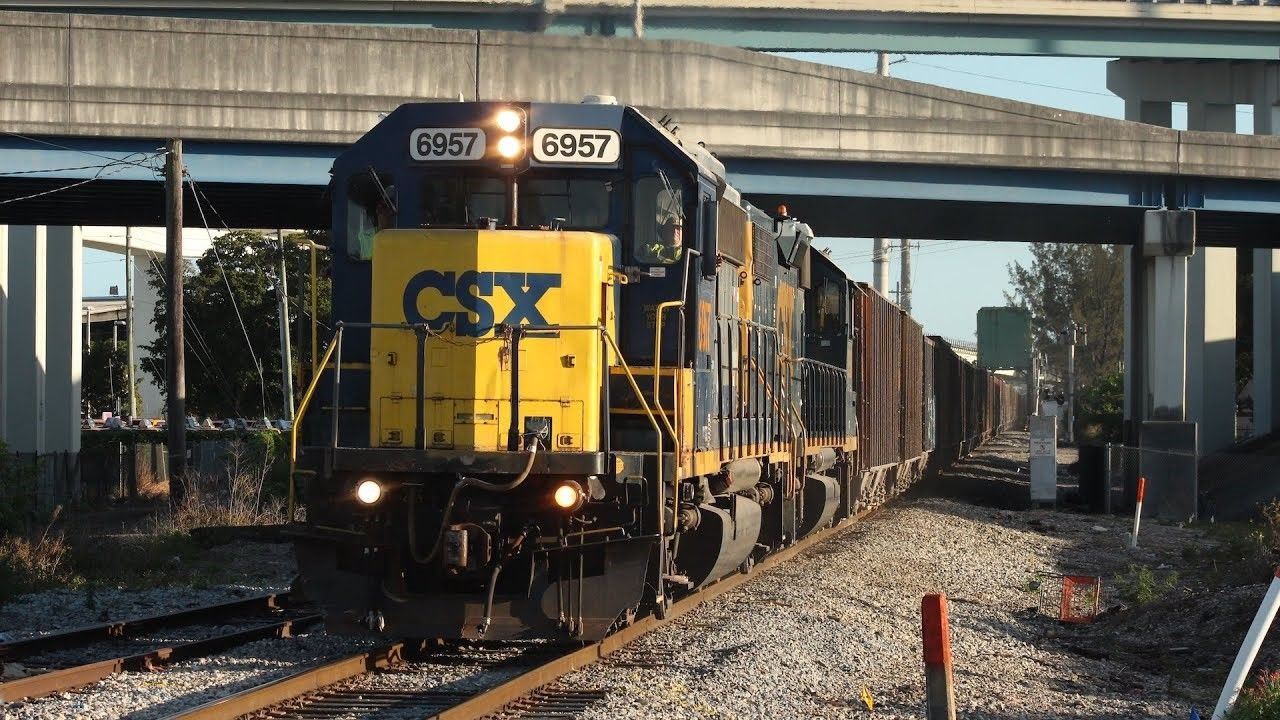
U.S. rail volumes has increased closed to 2% as intermodal traffic pushed volumes higher. The U.S. railroads originated 520,452 carloads and intermodal units for the second week of October, according to the Association of American Railroads. Of that, intermodal traffic rose by 8.4% to 289,488 intermodal containers and trailers.
Some commodities have already posted year-over-year gains. Grain volumes, is one of them, presenting 12% of overall weekly traffic, rose 31% to 27,434 carloads. This increased analyzed from a Year-to-date U.S. volumes are 10% lower than the same period in 2019.
The port of NY/NJ also set a record for intermodal rail volume in August. “At almost 65,000 lifts, the portwide intermodal ExpressRail system handled 7.8% more volume than August 2019, with overall rail volume up 1.4% year-to-date through August 2020,” the port said.
“Port partners are taking proactive steps to add more resources and service hours to support this untraditional peak cargo volume season,” it said. “Daily communications with the port authority, freight railroads and marine terminal operators are ongoing to manage the strong cargo volumes and remain fluid at both the terminal gates and throughout the ExpressRail system. Actions already taken include increased weekend hours and the allocation of more labor to the ExpressRail terminals.”
The port said that it is “committed to working with Class I rail partners, Norfolk Southern and CSX, as well as local operator Conrail to manage the substantial intermodal volumes. Several system-enhancing investments have been identified and are underway.
“This assertive approach will ensure that off-port support infrastructure is scaled to accommodate anticipated cargo growth. For example, the Waverly Loop project is an off-site improvement that will enhance staging capacity and overall network fluidity. This Conrail project, which is estimated for completion in late 2021, will provide an additional 12,000 feet of rail staging capacity,” the port said.
LFS offers you intermodal solutions to ease your freight shipping proccesses. Contact us and get more information.
By: LFS Marketing
October 19, 2020
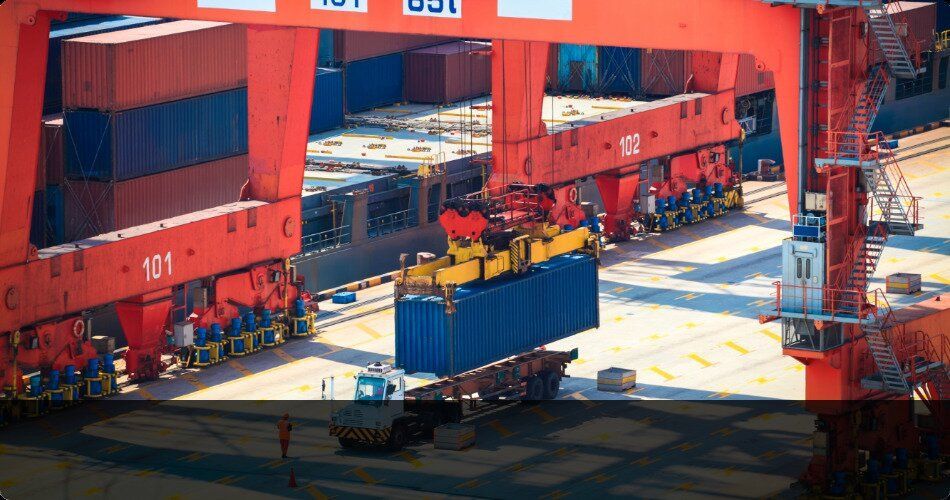
Thanks to the call of the largest container ship: CMA CGM Brazil with a capacity of 15,072 and twenty-foot equivalent units (TEUs), the port of NY/NJ achieved a monthly container record in August. The movements were in total 688,365 TEUs, a 1.3% year-over-year increase. Year-to-date volume through Aug. 31 totaled 4,661,453 TEUs.
According to freightwaves, “the August performance came on the heels of what the Port Authority of New York and New Jersey called the single worst quarter on record. Between March, when the full force of the COVID-19 pandemic hit the New York area, and the end of June, the port authority’s revenue miss totaled $800 million — about $200 million per month below budget.
The Port of New York and New Jersey expects container volumes that have rebounded sharply from the height of the coronavirus pandemic to remain strong through the rest of the calendar year.
In August, imports increased 7.1% year-over-year and totaled 368,868 TEUs. Still, imports were down 4.7% year-over-year through the end of August, from 2,536,072 TEUs in 2019 to 2,416,690 TEUs through the first eight months of this year. Currently, the port welcomes the influx of containers and said in an announcement that maintaining cargo supply chain fluidity remains a primary objective.
“Port partners are taking proactive steps to add more resources and service hours to support this untraditional peak cargo volume season,” it said. “Daily communications with the port authority, freight railroads and marine terminal operators are ongoing to manage the strong cargo volumes and remain fluid at both the terminal gates and throughout the ExpressRail system. Actions already taken include increased weekend hours and the allocation of more labor to the ExpressRail terminals.”
LFS offers you great capacity in port NY/NJ, contact us and discover our solutions.
By: LFS Marketing
October 20, 2020

Did you know that Texas, is the State with the highest revenue generated with in freight shipping industry. According to the FHWF, Federal Highway Administration, Texas moves close to 1´359 USD bn along the current year, 2020 and the main industries requesting freight shipping solutions are: Oils & Gas, Mineral & Ores and Chemicals.
In most of the cases, like Texas, most of the shipments are local, which means lanes Texas – Texas, shipping the majority of the products between the same State. However, Texas has 5 main trading partners which are: Louisiana, Oklahoma, California, Illinois and Ohio, creating strategic lanes that represent opportunities for Project cargo, FTL and drayage considering the needs of the main industries in Texas.
If you are looking for a strategic partner in the US, contact us! LFS offers you multiple freight shipping solutions, providing you efficiency, traceability and connectivity while you delight your customers.
By: LFS Marketing
October 6, 2020

Currently, there is a Tropical Storm Delta in the south of Jamaica which is gathering strength as it moves toward the Cayman Islands. This tropical storm could intensify into a Category 1 hurricane while clipping western Cuba and becoming stronger to hit the Gulf of Mexico later in this week. This could be the 10th storm to hit the U.S. when it makes landfall between Louisiana and Florida by Friday.
Its winds could reach 105 mph as it crosses the Gulf, making it a Category 2 storm on the five-step Saffir-Simpson scale, the U.S. National Hurricane Center said Oct. 5. Delta’s intensity will depend on how much wind shear it has to fight off. Right now, wind shear looks to be fairly weak, making intensification likely.
Carriers and shippers should prepare for possible shut downs of roads and ports. On its current path, the storm will likely cause oil and natural gas production offshore of Louisiana to shut down, and it poses a threat to onshore refineries and shipping, said Jim Rouiller, lead meteorologist with the Energy Weather Group. Output from the Gulf has been disrupted several times this year from tropical storms and hurricanes moving through the region.
By: LFS Marketing
October 6, 2020
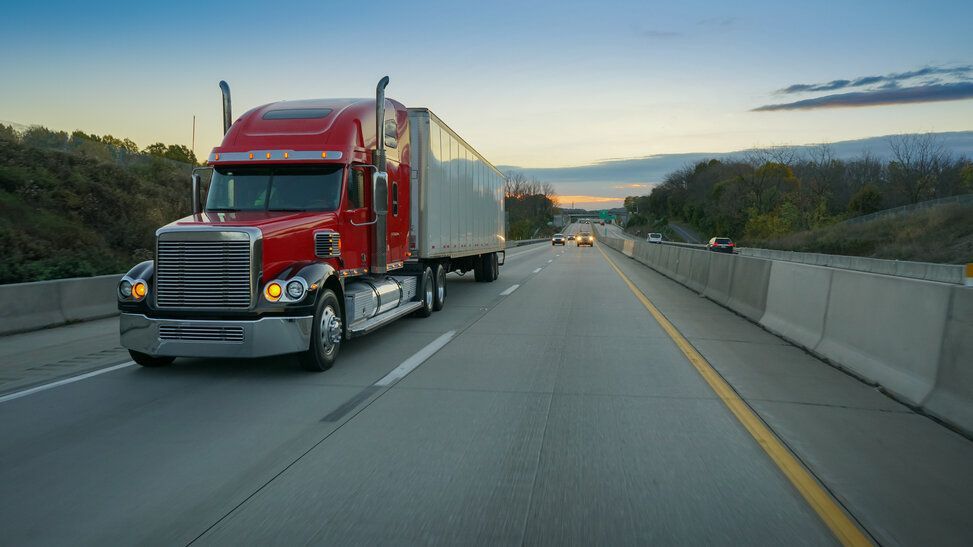
According Trucknews TORONTO, Ont. — Volumes on Loadlink’s Canadian spot market rose 2% in August, the third consecutive monthly rise, according to Loadlink Technologies.
Year-over-year, August load postings were also up 2% from August 2019, the loadboard operator said late Thursday.
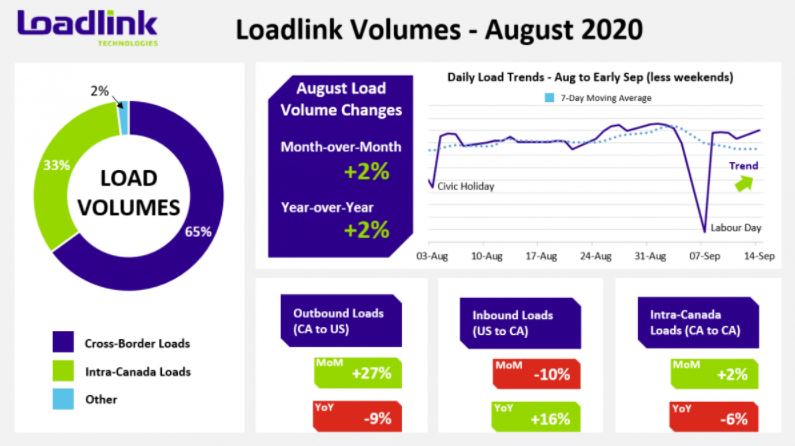
It said August’s positive performance fell in line with expectation.
“For the first time, two consecutive months saw positive year-over-year comparisons since June and July of 2018 when load volumes reached record highs,” the company said.
It said early August volumes fell slightly following a strong week to end July.
“Volumes held steady until the last week of the month when average daily postings surged entering September and reached a peak level not seen since March – right before the coronavirus pandemic impacted Canada.”
Overall outbound cross-border load postings on Loadlink’s spot market saw a gain of 27% against a 12% decline in truck postings compared to July.
“This increase in load postings was the main contributing factor to the overall monthly improvement from July.”
Inbound loads from the U.S. fell 10% compared to July 2020, it said.
Year-over-year, inbound load volumes were down 7%. Ontario, Quebec and Atlantic Canada also saw declines in loads as they fell 11%, 14% and 8% respectively. Western Canada fared the best as inbound load volumes only declined 1%.
Domestic activity on Loadlink’s spot market was up just 2% month-over-month, but increased 15% compared to August 2019.
Ontario and Quebec lanes were the standout performers when it came to lanes that saw the largest percentage increase in load volumes, the company said.
“Quebec outbound held the top three spots in this regard as the New Jersey, North Carolina and Florida inbound lanes all saw 88% average increases in loads from Quebec.”
Ontario outbound occupied the next two positions as the Florida and Virginia inbound markets saw 85% and 82% increases respectively, the company said.
By: LFS Marketing
September 29, 2020
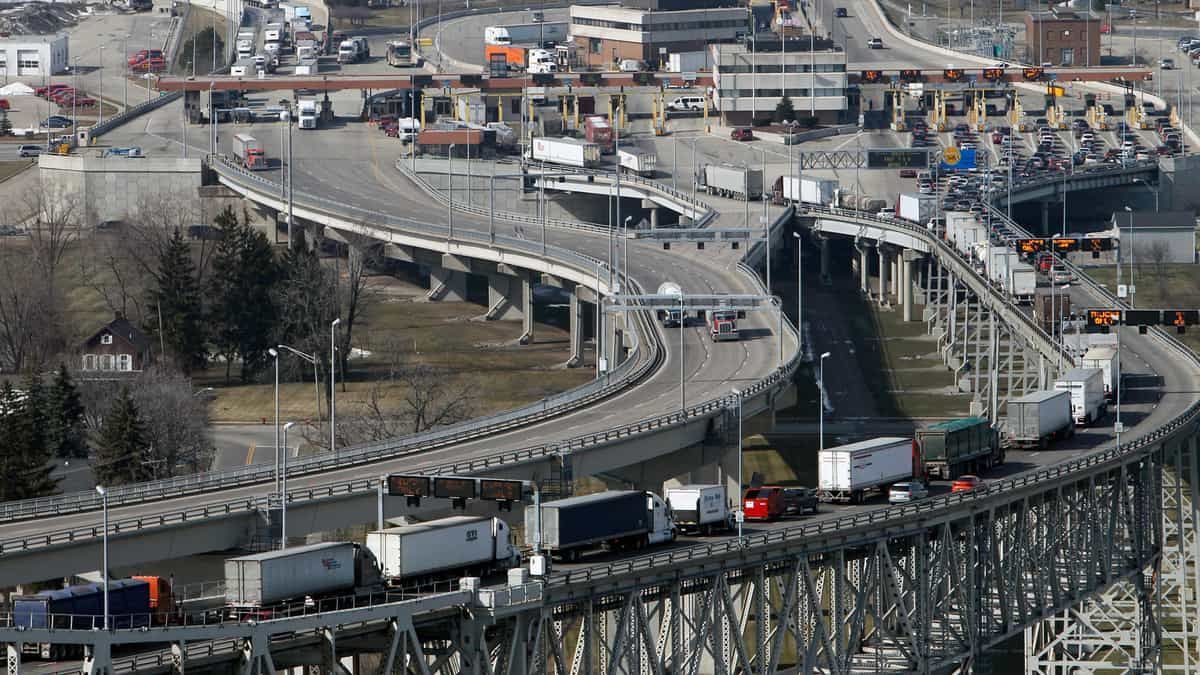
Given the proximity of the United States to Mexico and Canada, these two countries represent an important export value to the US. According to the Census Bureau data, the first semester of 2020 Canada represented 16% of the total US export value. They were followed closely by Mexico with 15%. Next was China with 7%.
This trading activity between countries is analyzed per industry to have clarity on the product´s demand. Three industries represent 43% of the US export value: chemicals, computer & electronics, and transportation equipment. This is directly related to the demand from Canada & Mexico. In the case of Canada, the products highly requested are transportation equipment and chemicals. On the other hand, Mexico is mainly computer & electronic products and transportation equipment.
Given this context, shipping needs often require an expert in logistics. At LFS, you can find several solutions like FTL & LTL, drayage, and intermodal. We are a one-stop-shop! Let us help ease the process of getting your freight across borders.
By: LFS Marketing
September 28, 2020
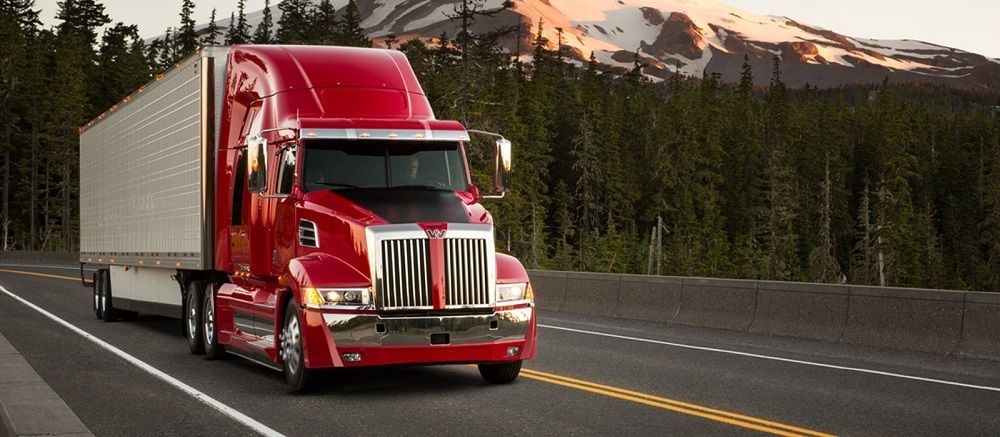
In 2020, Florida was forecasted to move 252.52 million dollars of intra-Florida freight according to the FHWF (Federal Highway Administration). These lanes are mainly consumed by a few specific industries. In Florida, Oil & Gas is number 1 shipper. The forecasted revenue accumulated by Oil & Gas in shipping costs on intra-Florida lanes is 50.5 million dollars per year. However, this is just 20% of the total revenue made off of local FL shipping lanes. There are other industries, like Chemicals which represent 12.55%, this is followed by Food and Kindred Products with 10.12%.
To gain a better understanding of the shipping patterns between states, Florida's main partners are Georgia, Texas & North Carolina. However, these states generate a lower total revenue shipping across state lines vs. intra-Florida shipping.
LFS offers you great availability in our multiple freight shipping solutions: LTL, Partial, TL, Drayage and Intermodal. If you are looking for a strategic partner in the US, contact us! LFS provides you efficiency, traceability, and connectivity while you delight your customers.
By: LFS Marketing
September 21, 2020
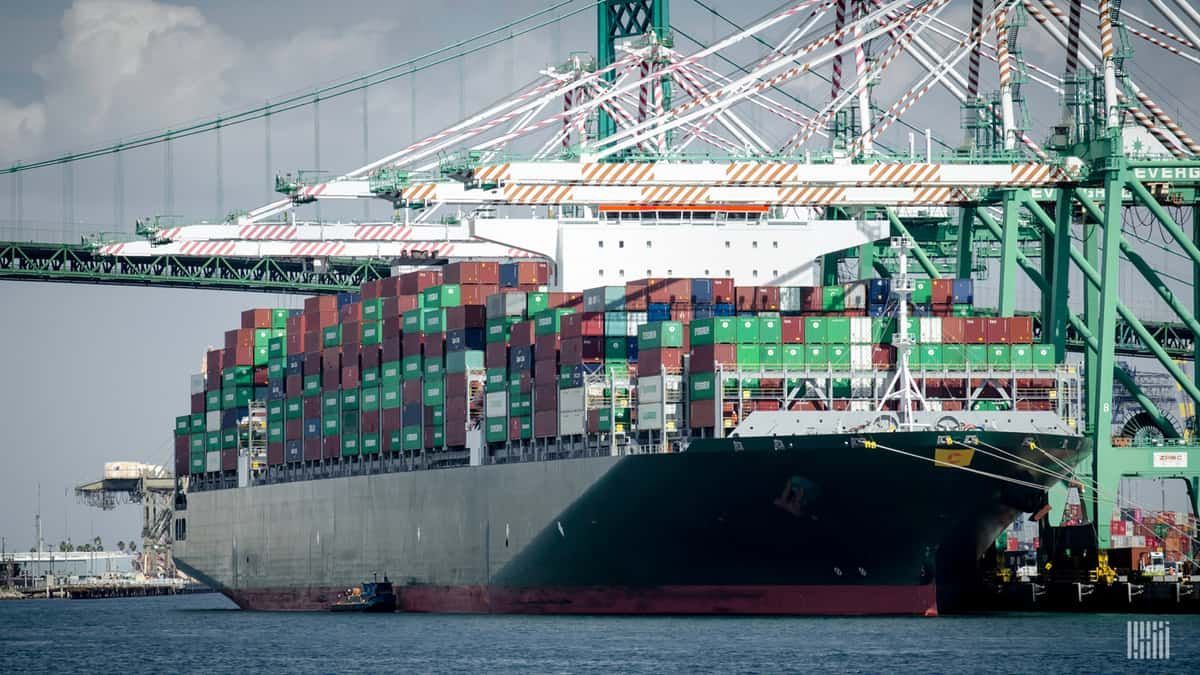
According to freight waves, Just how high can Asia-U.S. West Coast spot rates go? They blew past $3,000 per forty-foot equivalent unit (FEU) in early August and have been climbing ever since. They’ve just topped $3,700. Can they reach $4,000?
No one predicted that the container industry would be doing this well, this quickly.
“We’ve been scratching our heads a lot, trying to figure out why ocean freight prices have climbed so high,” commented Eytan Buchman, chief marketing officer of Freightos, on Wednesday.
The bullish view is that import demand will continue to surprise to the upside. Ocean rates evidence a U.S. economic rebound. COVID erased demand for some products and services, but increased demand for other products. Storefront sales won’t recover, but e-commerce sales will offset storefront losses. Government support will counter shutdown fallout.
The bearish view is that the economic-fallout shoe has yet to drop. Demand for ocean container transport is being temporarily juiced by the tail end of waning government support, a switch to higher inventory levels — for both defensive and e-commerce reasons — and by bookings brought forward ahead of Chinese Golden Week (Oct. 1-7).
Another dip ahead?
Panjiva, a unit of S&P Global Market Intelligence, reported Wednesday that U.S. seaborne box imports hit an all-time monthly high in August.
The total came in at 2.71 million twenty-foot equivalent units (TEUs), up 5.9% year-on-year driven by a 14.3% surge from China.
“I find it difficult to see this situation as a permanent stable reversal given the underlying economic issues from the pandemic,” opined Lars Jensen, CEO of SeaIntelligence Consulting. He foresees “another dip for container-shipping volumes” before “getting back on a more permanent upturn.”
According to Buchman, “Demand for ocean freight out of China is still outpacing supply [although] some of the current demand can be attributed to pre-loading ahead of the [Golden Week] break.
“The surge in volumes is leading to equipment shortages in Asia.” he continued. “Some shippers are paying premiums on top of spiking rates to guarantee containers and space. The imbalance is also putting pressure on overwhelmed U.S. ports and importers to process and return empty containers quickly.”
FreightWaves Maritime Expert Henry Byers believes volumes have peaked. “From here, volume will remain on a relatively stable decline through the end of year,” he predicted.
Asia-US rates still soaring
The Shanghai Containerized Freight Index (SCFI) put Asia-West Coast spot rates at $3,758 per FEU for the week ending last Friday. The SCFI estimate for Asia-East Coast spot rate was $4,538 per FEU.
The Freightos Baltic Daily Index shows the same trend but slightly lower numbers. It has Asia-West Coast rates (SONAR: FBXD.CNAW) at $3,727 per FEU as of Tuesday and Asia-East Coast rates (SONAR: FBXD.CNAE) at $4,491 per FEU.
Trans-Pacific earnings ‘remarkable’
According to Alphaliner, “The recent surge in spot rates from Shanghai to California … has made this route the most lucrative for carriers for exports out of China.”
Alphaliner combined the SCFI numbers with a distance calculator to determine earnings per nautical mile for each route out of China. Shanghai-California came in at 65 cents per nautical mile, Shanghai-New York 43 cents and Shanghai-Antwerp just 20 cents.
“The fact that earnings per nautical mile are more than three times as high on the Asia-USWC [U.S. West Coast] route [versus Asia-North Europe] is remarkable, as carriers need less resources on a shorter trade,” said Alphaliner.
“A typical Far East-North Europe service requires … 12 ships, whereas six ships are sufficient for a Trans-Pacific Southwest [U.S.] loop,” it noted, attributing the rate disparity to “very strong cargo demand on the trans-Pacific.”
Inactive fleet down, charter rates rebound
When coronavirus pummeled import demand in the second quarter, carriers reduced sailings. Carriers idled ships and let charters expire. They booked new charters at much lower rates. Now, carriers are scrambling to lease in as much as tonnage as they can — and they’re paying up for it.
The inactive fleet peaked at over 12% of the total fleet in late May. According to Alpahliner, it was down to just 3.4% as of Aug. 31.
Simultaneously, “the charter market continues its rapid recovery, with charter rates in many cases back to or higher than their pre-COVID-19 level,” said Alphaliner.
Ships carrying 7,500-11,000 TEUs “remain sold out.” The 5,500-7,499 TEU segment “is now sold out” after a recent fixture. Meanwhile, rates for the 4,000-5,299 TEU segment “have gone into overdrive,” said Alphaliner.
This should be welcome news for U.S.-listed container-ship leasing companies such as Costamare (NYSE: CMRE), Global Ship Lease (NYSE: GSL) and Danaos Corp. (NYSE: DAC), although their shares have yet to bounce.
By: LFS Marketing
September 21, 2020
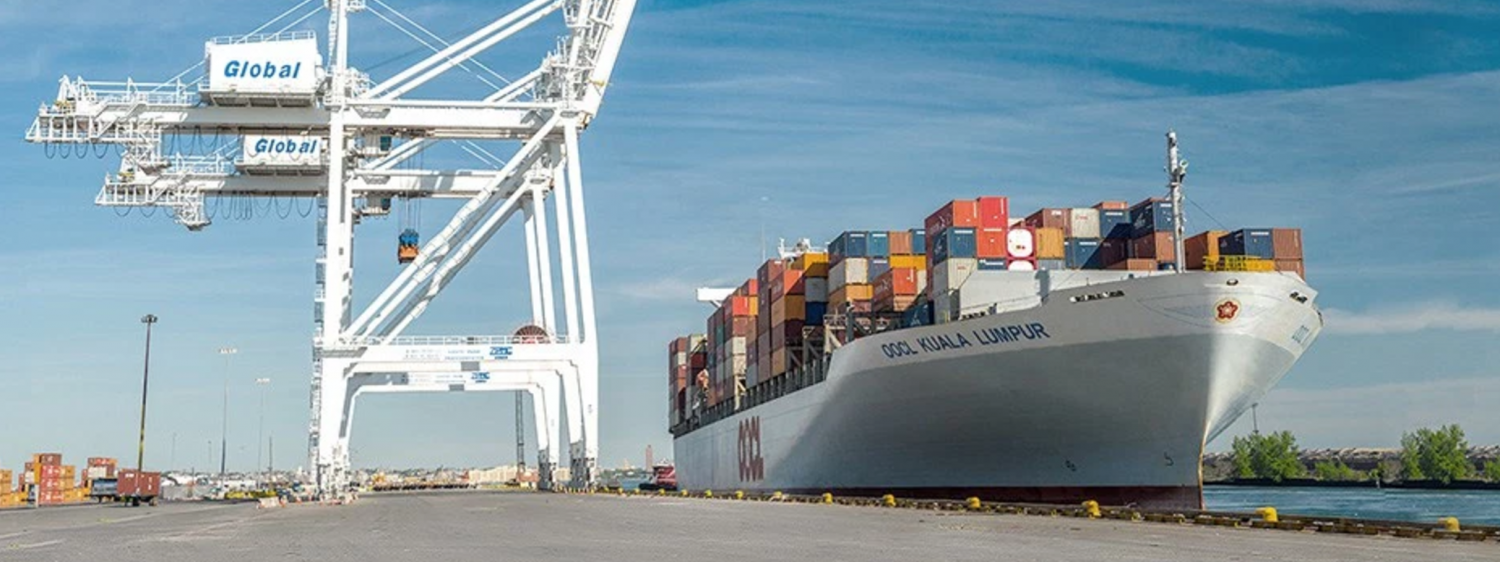
According to the FreightWaves Ocean TEU Volume Index, bookings of U.S. imports from China are up 89% year-over-year (y/y) through next week, which is a good indication that freight volumes will continue to flow through the rest of September.
FreightWaves’ Greg Miller reported ocean shipping rates broke records, with 40-foot container rates eclipsing $3,700 in the spot market from China to the U.S. West Coast last week.
During the early days of the coronavirus pandemic, many ocean shipping companies reduced their capacity. Trans-Pacific carriers are now returning their services to full strength and increasing rates in response to new shipper demand. This trend bodes well for domestic freight carriers.
With the U.S. industrial sector slowly reemerging from the pandemic, the domestic freight market has been driven by a strong flow of imports from Asia over the past few months.
China remains the nation’s largest maritime import market by a wide margin, although there was a slight reversal in this activity during 2019 due to trade tensions between the two countries.
Most containerized freight coming from northern Asia still enters the U.S. through the southern California ports of Los Angeles and Long Beach, maintaining their status as the largest port complex in the country.
With Los Angeles remaining the largest recipient of trans-Pacific cargoes, southern California has become one of the tightest truck markets in the country.
All-in dry-van spot rates in the highly liquid Los Angeles-to-Dallas lane have climbed steadily from $1.12/mile in April to $3.04/mile by the first week of September, according to Truckstop.com. FreightWaves Outbound Tender Rejection Index (OTRI) showed an increase from 1.2% to 27% over the same period.
Other parts of the country are also experiencing tightening truck capacity. Spot rates from another benchmark lane, Chicago-to-Atlanta, have jumped from $2.14/mile to $2.93/mile over the past month, with tender rejection rates for Chicago climbing from 13.6% to 20% during the same period.
Unlike 2019, where many imports entered the country and sat in warehouses, this freight is moving throughout the U.S. as demand for certain products has jumped due to consumer lifestyle changes.
Electronic and household goods continue to experience double-digit growth as Americans spend more time at home due to COVID-19. Athleisure has replaced business casual on the apparel front. These pandemic-induced consumer trends will continue to shake up U.S. importer inventories in the months ahead.
The bookings illustrated in the Ocean TEU Volume Index are orders that have expected departure dates over the next seven days. For shipments to the U.S. West Coast there will be a two- to three-week transit time before it hits the ports. This means that freight will not be on a truck until late September earliest. The index has shown consistent year-over-year growth during the past few weeks, meaning that the flow of freight will not stop from the international side.
Special Note: The Ocean TEU Volume Index is an app inside of SONAR that users must request. A newer version expanding the detail of this app is set to be released at the upcoming Global Tech Trade Conference hosted by FreightWaves next week. Register here.
By: LFS Marketing
September 21, 2020
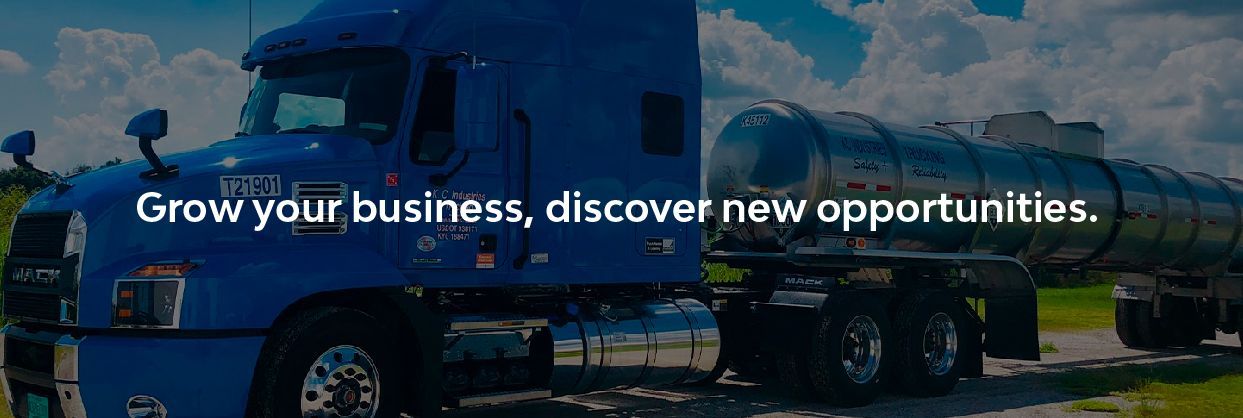
According to the FHWF, Federal Highway Administration, four industries in the US were forecasted with the highest value of commodity Trucking movements among regions this year. These are: Chemicals, Mineral & Ore, Oil & Gas and Food & Kindred. This represents 4.14 million dollars in freight shipping revenue during 2020. Chemicals are leading the list with 1.118 million dollars, followed closely by the others.
Considering the origin of these shipping industries, Texas and California are the states with highest level of freight movement. Illinois and Pennsylvania as well present a considerable amount of movement, but are not as significant as Texas and California.
At LFS we offer you great availability in every solution: TL, FCL, Project cargo and Intermodal to move your business forward. Contact us to get efficiency, traceability and connectivity to help you delight your customers.According to the FHWF, Federal Highway Administration, four industries in the US were forecasted with the highest value of commodity Trucking movements among regions this year. These are: Chemicals, Mineral & Ore, Oil & Gas and Food & Kindred. This represents 4.14 million dollars in freight shipping revenue during 2020. Chemicals are leading the list with 1.118 million dollars, followed closely by the others.
Considering the origin of these shipping industries, Texas and California are the states with highest level of freight movement. Illinois and Pennsylvania as well present a considerable amount of movement, but are not as significant as Texas and California.
At LFS we offer you great availability in every solution: TL, FCL, Project cargo and Intermodal to move your business forward. Contact us to get efficiency, traceability and connectivity to help you delight your customers.
By: LFS Marketing
September 14, 2020

CELEBRATING AMERICA'S TRUCK DRIVERS
Overview
Nearly every aspect of daily life is made possible because a truck driver delivered the goods and resources people need.
National Truck Driver Appreciation Week is an important time for America to pay respect and thank all the professional truck drivers for their hard work and commitment in undertaking one of our economy's most demanding and important jobs. These 3.5 million professional men and women not only deliver our goods safely, securely, and on time, they also keep our highways safe.
This year's National Truck Driver Appreciation Week is September 13-19, 2020, and takes on a special significance considering the crucial role truck drivers have played during the COVID-19 pandemic.
Americans in all fifty states have taken extraordinary steps to show their appreciation for the important work that professional truck drivers have done as we navigate our way through the coronavirus pandemic. From children passing out lunches, to "I Heart Truck" signs across America's highways, the public has taken notice of the essential role truck drivers play in their lives. President Trump and Secretary of Transportation, Elaine Chao said, "Thank God for truckers."
This week is a way to show appreciation to the 3.5 million professional men and women who not only deliver our goods safely, securely, and on time, but also keep our highways safe.
Next year, NTDAW will be held from September 12-18, 2021.
By: LFS Marketing
September 14, 2020
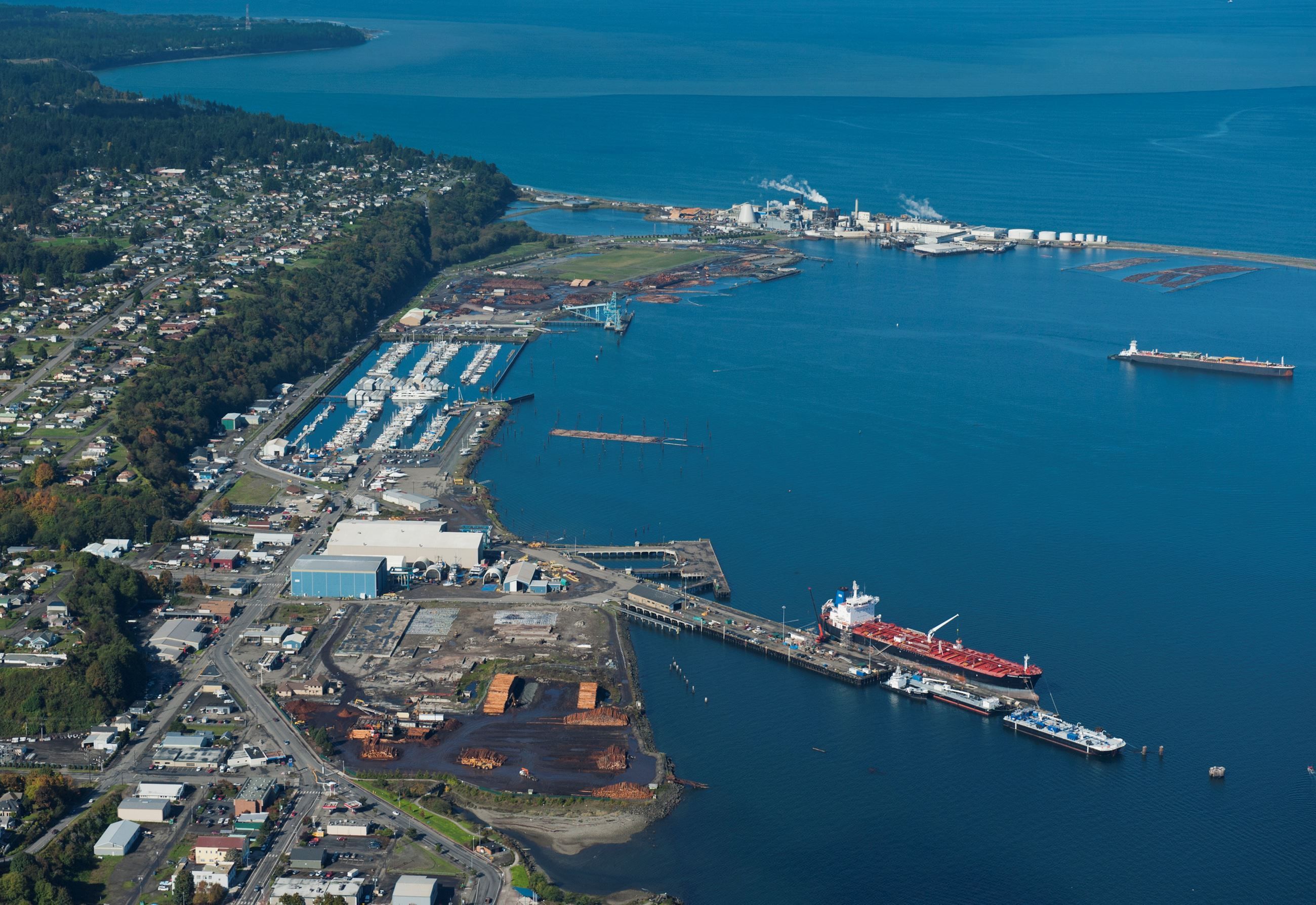
The Port of Los Angeles announced it is sharing Wabtec’s Port Optimizer data so all supply chain stakeholders can better plan for incoming cargo. Railroads, chassis providers, truckers, warehouse operators and others in the supply chain will have a three-week look at cargo coming into Los Angeles.
Powered by the Port Optimizer, the dashboard shows how many shipments will be arriving at the Port of LA over the next three weeks. The data is broken down by container type and includes details on the mode of transportation, whether rail or truck, that will be used once the cargo arrives in LA.
See this video https://www.youtube.com/watch?v=YFJDu86SjN4#action=share
“This planning tool will help make our partners more nimble and efficient, especially during volume surges like we are currently experiencing. This is the forward visibility our stakeholders have requested and we are proud to deliver it.” said Port of LA Executive Director Gene Seroka.
LFS is already using this valuable information to plan and
offer you better cargo.
By: LFS Marketing
September 14, 2020

Grow your business, discover new opportunities.
Discover the top 5 Export value destination while choosing in US, Texas as the origin of your export.
Did you know that the state of Texas generates the highest export value within US. According to the Census Bureau Data, Texas represents the 20% of the total exports value with 136.96 billion dollars. This data is the analysis of the first semester of 2020 which shows the market behavior during the pandemic. The main exports destinations from Texas are Mexico, followed by Canada, China, South Korea and Japan. Thus, Mexico represents 31% of the total exports value, with 41.4 billion dollars, considered as the main destination.
Additionally, it is important to consider the main industries in Texas: Oil & Gas, Computer & Electronic Products, chemicals and Petroleum & Coal. All of them presents specific needs that are opportunities for freight shipping solutions, like: project cargo, TL and drayage services.
If you are looking for a strategic partner in the US, Mexico and Canada, contact us! LFS offers you multiple freight shipping solutions, providing you efficiency, traceability and connectivity while you delight your customers.
By: LFS Marketing
September 4, 2020
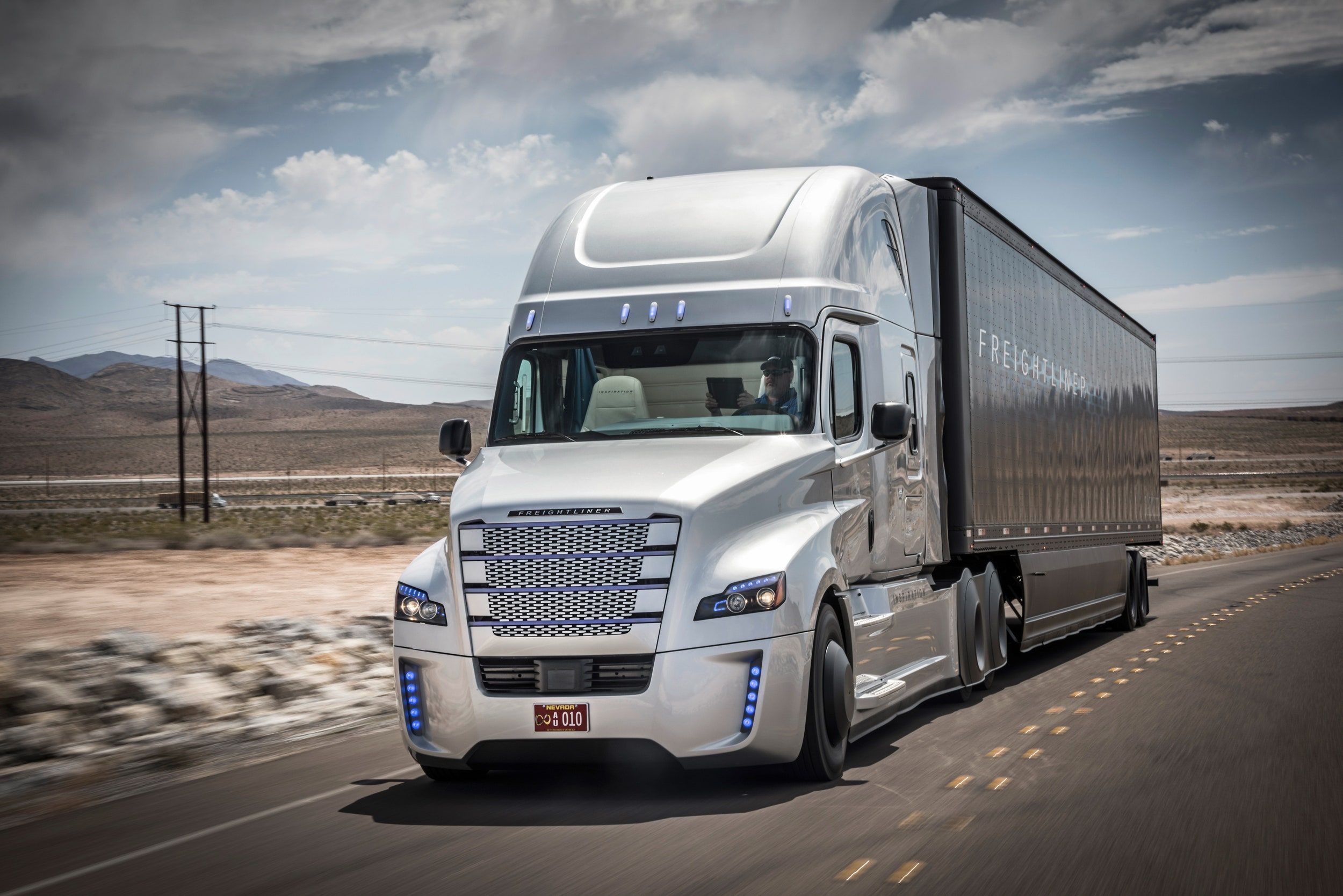
According to TTNEWS, Advanced Clean Transportation on Aug. 18 kicked off a four-month series to discuss environmental sustainability in trucking and the challenges those efforts still face.
“Whether we’re going to end up with fuel cells or whether we’re going to end with hybrid technology or pure battery electric vehicles, we’re investing in companies and technology that can be supported within that,” said Ryan Laskey, senior vice president of the commercial vehicle group at Dana Inc. “We definitely have to have a balance, and we work to do that.”
Laskey added that the market is not going to transition overnight. Companies are going to have to show the technologies have value and are reliable, which involves having industry partners that companies can trust to stick with them through the years, he said.
Added Kary Schaefer, general manager of marketing and strategy at Daimler Trucks North America: “Economic sustainability and environmental sustainability really need to go hand in hand. Many companies, the most successful companies, have demanded that on an ongoing basis.”
Schaefer said it’s an ongoing challenge to balance traditional products with investments in new technologies. She also said the industry has already seen improvements such as reductions of greenhouse gases.
As with most industries, the coronavirus pandemic quickly became an unexpected hurdle for trucking, including fleets working to become more sustainable. They had to focus on employee safety and a rapidly changing market.
“We were really focused on keeping our dealers and customers running while supporting our drivers, who were essential to delivering freight during this time. I would say we doubled down on our commitment and investments in product development and sustainable technologies,” Schaefer said.
Daimler finished delivering a round of electric trucks to customers right before the coronavirus pandemic hit.
The panel also discussed how infrastructure challenges make the transition to electric alternatives harder because carriers that go electric need charging stations.
Craig Harper, chief operations officer at J.B. Hunt, recalled the infrastructure was slow to adapt when natural gas was on the rise.
“We learned through that. We got to have a better infrastructure setup,” Harper said. “It’s very expensive. So we have to rely on incentives early on to get our feet wet and prove out the technology. Now don’t get me wrong, we can’t make a long-term business plan based off incentives. Incentives will help us get a jump-start, but then we have to see that it is a viable piece of equipment in the long run.”
J.B. Hunt announced that it completed its first delivery using the Freightliner eCascadia on Aug. 11. Daimler produces the completely electric Class 8 vehicle. It’s expected to have a driving range of up to 250 miles on a full charge.
J.B. Hunt ranks No. 4 on the Transport Topics Top 100 list of the largest for-hire carriers in North America and No. 4 on the Transport Topics Top 50 list of the largest logistics companies.
More details on TTNEWS. Follow us on LFS Linkedin to be updated.
By: LFS Marketing
August 24, 2020

ccording to TTNEWS, Nearly $80 million was awarded to educational entities and state agencies for commercial motor vehicle safety efforts, the Federal Motor Carrier Safety Administration announced recently.
Specifically, $45 million in grants would be dedicated for state-level programs meant to enhance highway safety and advance technological capabilities across agencies.
Additionally, $32.7 million in commercial driver license program implementation grants would be dedicated for state agencies. And $2 million in commercial motor vehicle operator safety training grants would be dedicated for 20 educational institutions around the country to train veterans for careers in commercial bus and truck operations. The institutions include community colleges in Iowa, Pennsylvania and Virginia.
More details on TTNEWS. Follow us on LFS Linkedin to be updated.
By: LFS Marketing
August 24, 2020
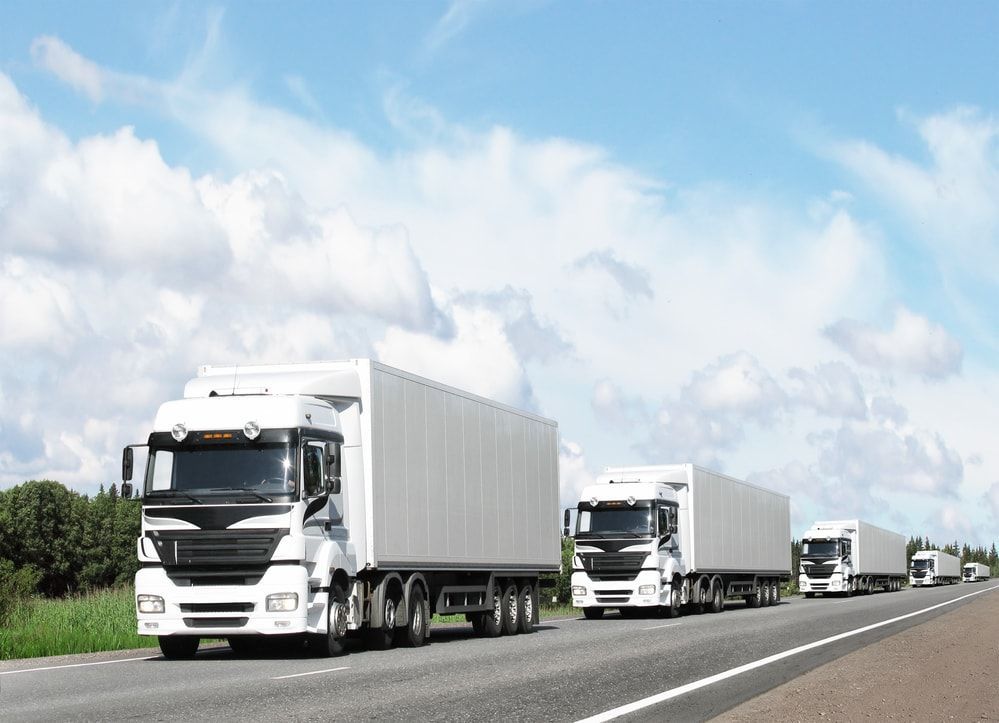
According to Freightwaves, Several retail giants reported quarterly results this week that were favorably impacted by their status as “essential” providers during the pandemic. The fiscal second-quarter financial reports displayed favorable trends for the trucking industry – sales up and inventories down.
The run on home goods, food and consumables as stay-at-home lifestyles have taken hold amid COVID-19 was evident in financial results for Target (NYSE: TGT) and Walmart (NYSE: WMT). U.S. comparable sales climbed 24% year-over-year at Target and 9% at Walmart with e-commerce growth of 195% and 97%, respectively. Target’s consolidated revenue came in 14% higher than analysts predicted.
Target’s management team said that sales in August continue to see strength, up in the low double-digit percentage range year-over-year. The tone on future sales at Walmart was more subdued as the company’s July comp was up only a little more than 4% and management indicated demand is beginning to normalize.
Both retailers said they were seeing a “slow start” to the back-to-school shopping season as many regions have opted for virtual learning and there is still uncertainty if school districts that chose to reopen will remain open.
Home improvement heavyweights The Home Depot (NYSE: HD) and Lowe’s (NYSE: LOW) saw comparable sales surge during the quarter, up 25% and 35% year-over-year, respectively, with e-commerce activity growing in excess of 100% at both companies. Revenue at The Home Depot was 10% better than forecast and Lowe’s revenue came in 13% higher than consensus.
The Home Depot’s management team said sales have continued at the same clip through the first two weeks of August but they weren’t ready to “extrapolate” those trends to the back half of the year. The Home Depot’s quarter benefited from hotter weather compared to last year, driving an increase in the sale of air conditioners and fans. The company had fewer special events and sales, and increased commodity prices, namely lumber, also pushed revenue higher.
Lowe’s reported sales momentum has continued into August, noting strong demand for home improvement items like paint and lumber. All 15 of its U.S. regions recorded sales growth in excess of 30%. The company expects sales to moderate somewhat in the back half of the year but indicated favorable year-over-year comparisons.
Most major retailers include orders fulfilled in store, curbside or shipped from the business to consumer as part of e-commerce transactions if ordered online. Target reported 90% of its sales during the quarter were still fulfilled with the help of a store, with in-store pickup increasing more than 60%. The Home Depot said more than 60% of its customers opted for in-store pickup during the period.
Inventories moved lower for most of these essential businesses as sales spiked and restocking accelerated in lockstep with increases in positive COVID tests in some regions. Walmart and The Home Depot saw the largest supply squeeze, with inventories down in the 7% range from the beginning of February, the start of the retail fiscal year. Walmart reported a 10% decline in U.S. inventories on a comparable store basis.
Increased sales and lower inventories bode well for trucking companies with exposure to general merchandise and home improvement retailers, which are struggling to keep up with demand. Many of the nation’s largest carriers move freight for these companies.
Census Bureau data shows retailers’ inventory-to-sales ratio (seasonally adjusted) declined to 1.23x in June, from 1.35x in May and 1.68x in April, when COVID-related lockdowns brought portions of the retail economy to a halt. The June reading provided a new low in the lagging data set.
While all of these retailers beat revenue forecasts by $3 billion to $4 billion during the second quarter, each acknowledged the impact stimulus payments had on the period to some degree, with some noting future performance will be contingent on a new stimulus deal.
More details on Freightwaves.
--
LFS keeps you updated with the latest news, if you need additional information about our freight shipping solutions, contact us!
Follow us on Linkedin
For cargo insurance experts, please contact Skholl, our partner to avoid any freight damage.
--
By: LFS Marketing
August 24, 2020

According to Trucknews, Ninety-eight per cent of fleets that have made an investment in sustainable transportation are planning to continue or increase their investments in green technologies, according to the first State of Sustainable Fleets report.
The report was authored by Gladstein, Neandross and Associates (GNA) and sponsored by Daimler Trucks North America (DTNA), Shell Oil Company, Penske Transportation Solutions and Exelon Corp. Findings were released Aug. 11 during a webinar with some 1,100 registrants. The State of Sustainable Fleets report covered nine vehicle types, ranging from diesel to hydrogen fuel cell.
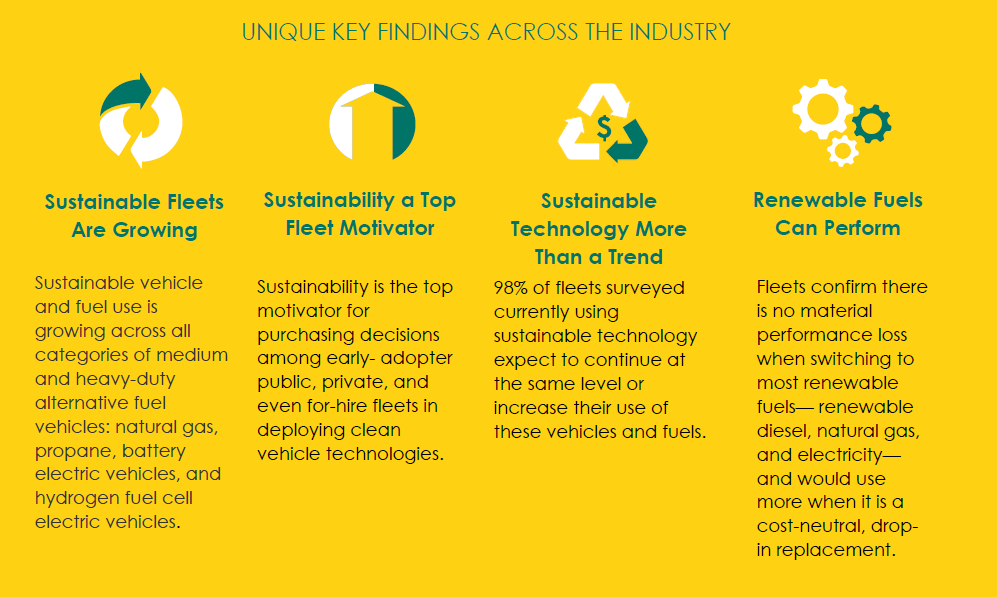
More details on Trucknews.
--
LFS keeps you updated with the latest news, if you need additional information about our freight shipping solutions, contact us!
Follow us on Linkedin
For cargo insurance experts, please contact Skholl, our partner to avoid any freight damage.
--
By: LFS Marketing
August 18, 2020
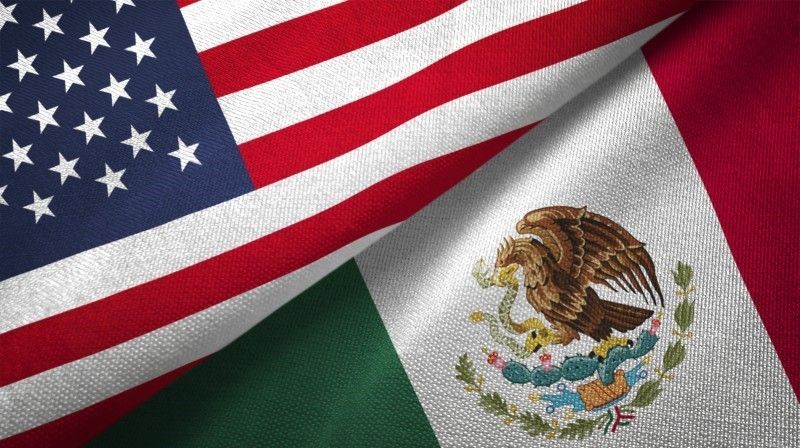
According to Freightwaves, Most ports across Texas saw steep declines in imports from Mexico and other countries as the coronavirus continues to impact international trade.
Trade at the Port of El Paso plunged 49%, from $39 billion to $20 billion through the first six months of 2020 when compared to the same period in 2019, according to WorldCity analysis of U.S. Census Bureau data.
Port Laredo’s trade fell 23% to $90 billion through the first six months of the year, while trade at the Port of Houston fell 20% to $64 billion.
Port Laredo ranked fourth for total trade among the nation’s roughly 450 airports, seaports and border crossings, according to WorldCity. The Port of Los Angeles ranked first.
The Port of Houston ranked sixth overall, and is the third-ranked seaport. The Port of El Paso is the 25th-ranked port.
Teclo Garcia, Laredo’s economic development director, said the drop in freight was caused by the closure of Mexico’s automotive production industry due to the pandemic.
“Despite the cataclysmic drop in cross-border freight, Port Laredo still ranks fourth nationally in overall trade the first six months of 2020,” Garcia said on LinkedIn.
The Mexican government suspended business, including all automotive factories, across the country March 30 to slow the spread of the coronavirus. Most auto factories restarted in June.
“The biggest impact to Port Laredo’s trade volume was auto content’s fall, both ways, for some $14 billion less as the U.S. and Mexico lines halted due to the pandemic,” Garcia said. “Auto content and new vehicle trade were each down about 40%.”
Mexico’s trade with the U.S. fell 21% through the first half of the year, but still ranked second in total trade value through June at $243 billion.
The imbalance of north- and southbound freight out of Mexico continues to tighten truck capacity along the U.S.-Mexico border. Laredo’s dry van rejection tender rate was more than 35% on Monday.
Other Texas ports of entry reporting trade declines the first half of the year were:
-Port of Port Arthur, 52%, down $5.12 billion.
-Port of Beaumont, 42%, $6.32 billion.
-Port of Eagle Pass, 21%, $11.8 billion.
-Dallas-Fort Worth International Airport, 18%, $23.69 billion.
-Pharr-Reynosa International Bridge, 15%, $15.48 billion.
-Brownsville International Bridge, 15%, $8.19 billion.
Across Texas, the import of computers, cell phones, medical equipment, steel wires and tubing, gasoline and other fuels, as well as oil, posted large declines for the first six months of the year.
The only Texas gateway to report an increase was the Port of Corpus Christi, going from $13.15 billion to $17.83 billion, a 36% gain. Exports accounted for almost $16 billion in trade at the port through the first half of the year, including gains in oil, liquefied natural gas and grain sorghum.
More details on Freightwaves. Follow us on LFS Linkedin to be updated.
Click for more FreightWaves articles by Noi Mahoney.
By: LFS Marketing
August 18, 2020
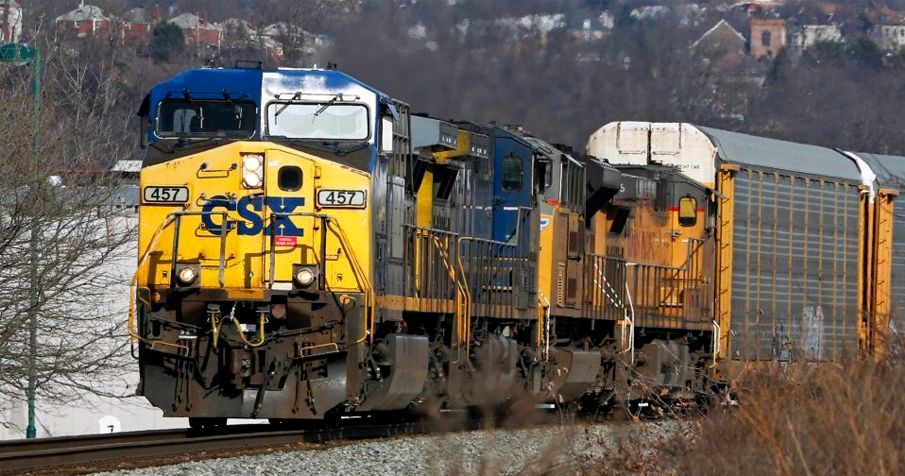
According to Freightwaves, The U.S. operations of the Class I railroads are closer to reaching full compliance with the federal mandate to implement positive train control (PTC) by the end of December, according to data from the Federal Railroad Administration (FRA).
FRA’s data tracks how far along freight and passenger railroads are with implementing PTC, a safety technology aimed at reducing accidents because the technologies enable parties to see where trains are located on a network in relation to each other.
The data shows that Class I railroads are in 100% compliance in the following areas as of the end of June 30:
-Locomotives fully equipped and operable with PTC.
-Track segments operable with PTC.
-Training completed.
Percentage of route miles governed by PTC that are in operation or are in revenue service demonstration, an advanced testing stage that is among the last steps to completing the installation and implementation of PTC.
There are two areas in which the Class I railroads have yet to be fully compliant. One is PTC system certification, which was at 86% at the end of the second quarter. This figure is flat with the first quarter, and it represents the percentage of host railroads that have received certification based on the approval of a PTC safety plan.
The other area is interoperability. The interoperability rate of the Class I railroads in the second quarter was 79%, compared with 58.7% at the end of the first quarter.
Interoperability occurs when the controlling locomotives and/or cab cars of any host railroad and tenant railroad operating on the same PTC-equipped main line are able to communicate with and respond to the PTC system, even when trains are moving over property boundaries. The final step is interoperability with other trains, which is viewed as the last piece in fulfilling the statutory mandate.
More details on Freightwaves. Follow us on LFS Linkedin to be updated.
Click here for more FreightWaves articles by Joanna Marsh.
By: LFS Marketing
August 18, 2020

According to Freightwaves, "The battle for Asian containerized exports rages on between West and East Coast ports. The East had been steadily gaining ground, but COVID-19 is changing the balance in favor of the West, at least in the short term."
More details on Freightwaves. Follow us on LFS Linkedin to be updated.
By: LFS Marketing
August 10, 2020
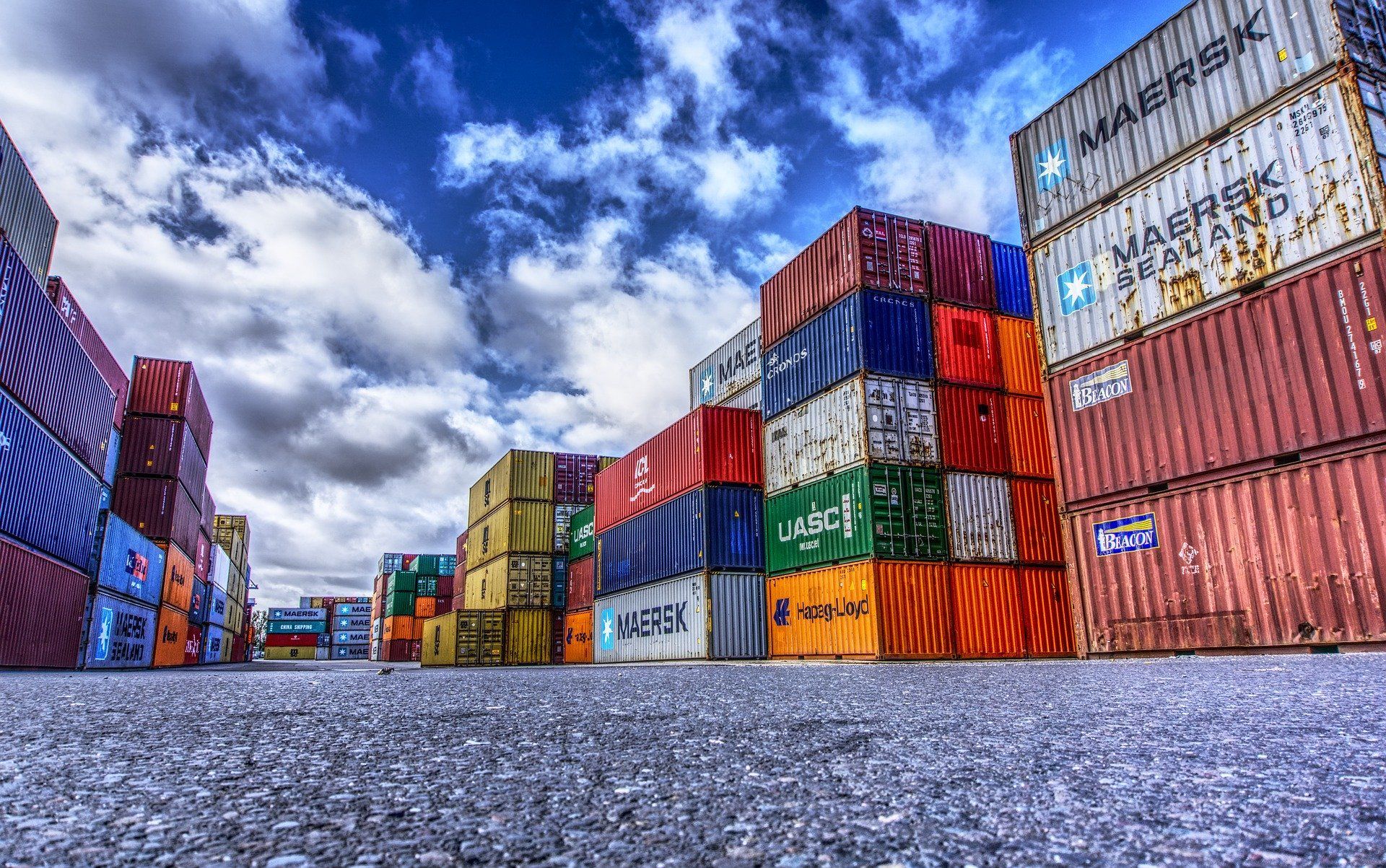
It is a fact that "the nation’s East Coast ports continued to be battered by lower imports from overseas in June, just as their West Coast counterparts have been because of the COVID-19 pandemic.
According to Transport Topics, the Port Authority of New York and New Jersey, which operates the nation’s busiest facility on the East Coast, told Transport Topics on Aug. 8 it had a 16.3% year-over-year drop when it processed 511,306 industry-standard 20-foot-equivalent containers during that month. In June 2019, the facility moved 611,027 TEUs.
In addition to its port facilities, the Port Authority operates six airports in the New York/New Jersey area, the PATH rapid transit system, and numerous tunnels, bridges and rail yards. The Port Authority does not receive direct government aid but relies on fees it charges its business partners to cover its operating budget.
However, it is seeking $3 billion in federal assistance as it anticipates ongoing damage.
“Due to the global pandemic, Port Authority revenues were down nearly $800 million just through June of this year — an unprecedented number for this agency,” Chairman Kevin O’Toole said. “This region has been hard hit by the pandemic, and the Port Authority was not immune. Without federal assistance, the Port Authority and the region will be forced to feel the weight of this loss for years to come.”
New York/New Jersey officials recently announced they have cut $200 million in spending and continue to assess other reductions"
Keep reading on Transport Topics. Follow us on LFS Linkedin to keep you updated
By: LFS Marketing
August 5, 2020
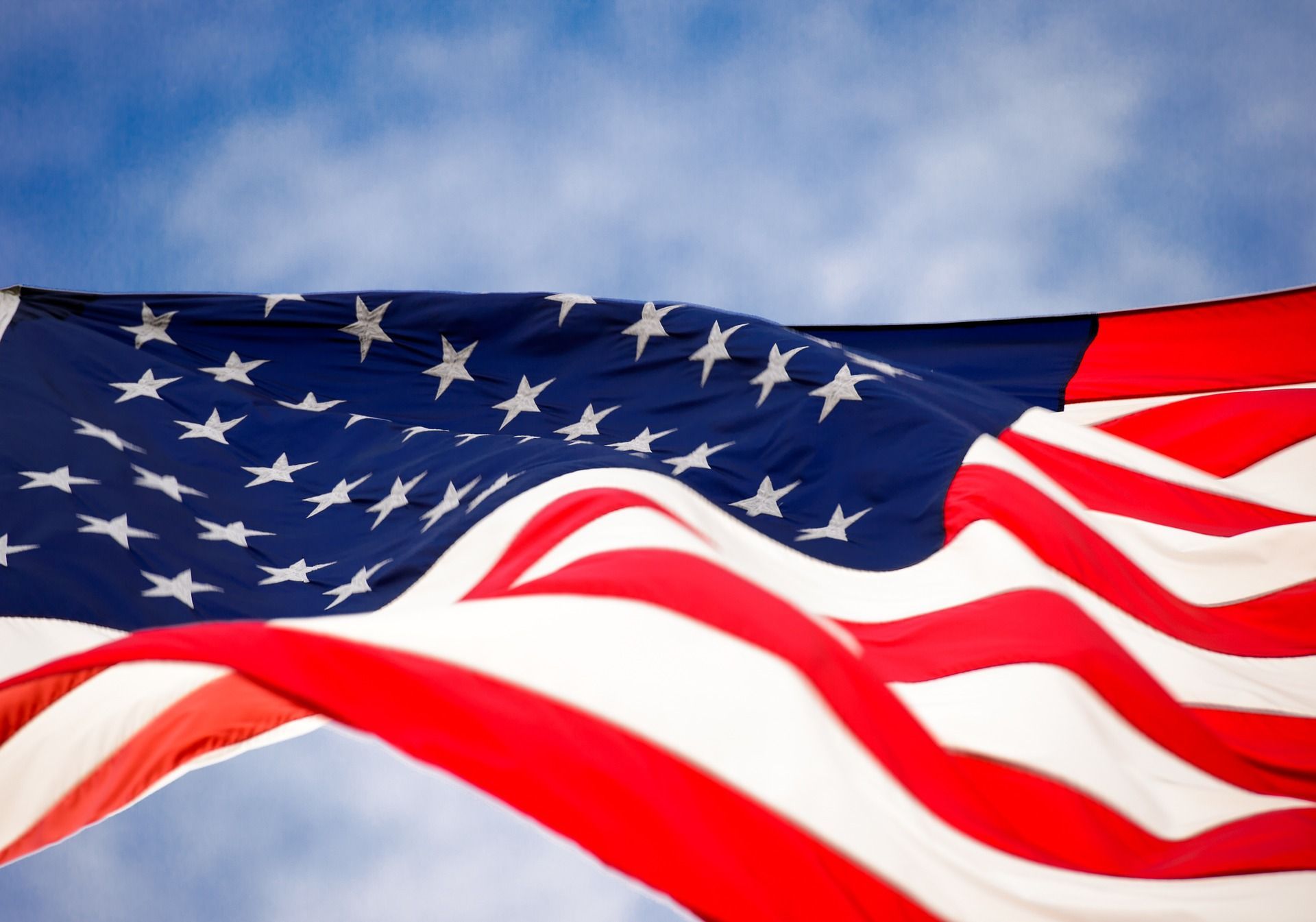
U.S. regulators congratulate truckers for its efforts during Covid-19, as it was mentioned by Trucknews:
"Federal Highway Administration administrator Nicole Nason and National Highway Traffic Safety Administration acting administrator James Owens are applauding the trucking industry for its work during Covid-19.
“The American trucking industry is carrying more goods on U.S. roads now than ever before,” said Nason, as the pair appeared during the Federal Motor Carrier Safety Administration’s 2020 Trucking Safety Summit.
According to Nason, the FHWA will continue to support projects that expand truck parking availability “as the economy improves.” It is currently encouraging states to implement automated permitting systems for the issuance of “emergency permits to help expedite oversized or overweight vehicles needed in emergencies.”
“We are doing everything we can to help you,” added Nason, highlighting how the FHWA also encouraged states to keep rest areas open and make it possible for states to allow commercial food trucks to operate in interstate rest areas, which will remain in effect for the duration of the national emergency declaration."
Keep reading in Trucknews.Dont forget to follow us on LFS Linkedin
By: LFS Marketing
August 6, 2020

As it was already analysed by Freightwaves "The latest rail carload data is showing that the industrial side of the economy, which is the backbone for a large amount of freight movement in the U.S., has finally started to recover after hovering on the floor for over three months. Increasing carload volumes for raw materials like chemicals and motor vehicles are good leading indicators of future truckload volumes. This could mean an incredibly strong late third and fourth quarter for transportation providers but much tighter capacity for shippers.
Rail
carloads typically transport the building materials for mass-produced goods.
The finished products are usually transported on trucks and rail containers. It
is important to note that carloads are not intermodal containers or boxes that
typically transport finished goods. Carloads are generally filled with bulk
non-palletized items, loosely loaded in either a liquid tank or open top hopper
or gondola for ease of loading and unloading at production facilities.
Chemicals
shipped on the rails are processed into anything from household cleaners to
petroleum-based plastics. Total carload volumes are a barometer of the
industrial sector of the economy, which is connected to energy and production.
Total carload volumes include chemicals and motor vehicle parts as shown in the
chart above, but it also includes items like coal, grains and petroleum
products.
Rail
carload volumes were trending lower prior to the COVID-19 outbreak, showing
negative year-over-year weekly comps through most of 2019. While the year-over-year
numbers are still dismal at -22%, they are improving over the -30% that was the
bottom in May and showing a strong upward trajectory after the Fourth of July,
increasing almost 6.5% last week.
While
there is still a long way to go to call it a recovery, this is a very positive
sign of other surface transportation. So far the freight market has been
thriving on supply chain dislocation and unexpected shifts in consumption
without any help from the industrial sector. If the industrial economy continues
to improve, this could lead to another surge of freight moving on top of an
already strong amount moving across the country.
Capacity
has tightened to levels not seen since 2018 as the national Outbound Tender
Reject Index (OTRI) topped 17% this week, having measured over 15% for the
entire month of July. The highest value of 2019 was 14.25% on Christmas. It
only exceeded 10% for the two weeks surrounding Christmas." Freightwaves
LFS keep you updated, dont miss any relevant information
By: LFS Marketing
August 3, 2020

As you may heard, there is a hurricane Isaias taking place during the last days. According to Freightwaves "the Tropical Storm Isaias is churning off the Florida coast this morning and may strengthen to a hurricane again before it makes landfall tonight.
Yesterday,
staff at the Ports of Wilmington and Morehead City, North Carolina began preparing for
the storm’s impacts. The U.S. Coast Guard (USCG) had issued a condition
X-RAY for both ports, meaning all
oceangoing commercial vessels and barges greater than 500 gross tons should
make plans for departing the ports. Vessels desiring to remain in port were
required to submit a mooring plan to the captains of the port (COTP) for
approval.
At 8
p.m. EDT yesterday the USCG tightened restrictions for Wilmington, issuing a
condition YANKEE because they expect tropical storm force winds to arrive
within 24 hours. Under port condition YANKEE, the affected port(s) are closed
to inbound vessel traffic greater than 500 gross tons. All vessels greater than
500 gross tons without permission to remain in port should have departed or
should be prepared to depart prior to the setting of Port Condition Zulu.
Zulu
is set approximately 12 hours in advance of anticipated gale-force winds, which
would close the port and all port operations would be suspended.
Yesterday
evening, the USCG also set port condition YANKEE for the ports of Savannah,
Georgia and Charleston, South Carolina. In these cases, all vessels greater
than 300 gross tons must depart the port unless the COTP has approved a request
to remain in port. Terminals and facilities were required to cease all cargo
operations and secure handling of equipment within 12 hours of the
announcement. Bulk liquid terminals must ensure all transfer hoses and loading
arms are drained, flanged and secured.
Also,
vessels desiring to remain in port must immediately contact the COTP to receive
permission and are required to submit a safe mooring plan in writing. Vessels
bound for Savannah and Brunswick ports unable to depart 24 hours prior to
threatening winds making landfall are advised to seek an alternate destination.
As of
8 a.m. EDT today, Isaias was centered about 115 miles south-southeast of
Jacksonville, Florida. Maximum sustained winds around the eyewall were measured
by Hurricane Hunters to
be 70 mph, and tropical storm force winds extended up to 125 miles from the eye
of the storm. This puts portions of the northeastern Florida and southern
Georgia coasts within range of these winds.
The
warm Atlantic waters may propel Isaias back to hurricane strength prior to
landfall tonight. That landfall will likely be near Myrtle Beach, South
Carolina. Then, Isaias will move through eastern North Carolina and the
Delmarva Peninsula Tuesday, followed by New England Tuesday night and
Wednesday" FreightWaves
At LFS, we select the main news to keep you updated! Follow
us in Linkedin
By: LFS Marketing
August 3, 2020

When rethinking logistics strategies, the primary questions are: "How can this benefit my business? What is the value proposition?"
The benefits of intermodal shipping include:
Let us help you, contact us and get a freight quote in matter of seconds. Keep updated while following us on Linkedin.
By: LFS Marketing
July 31, 2020
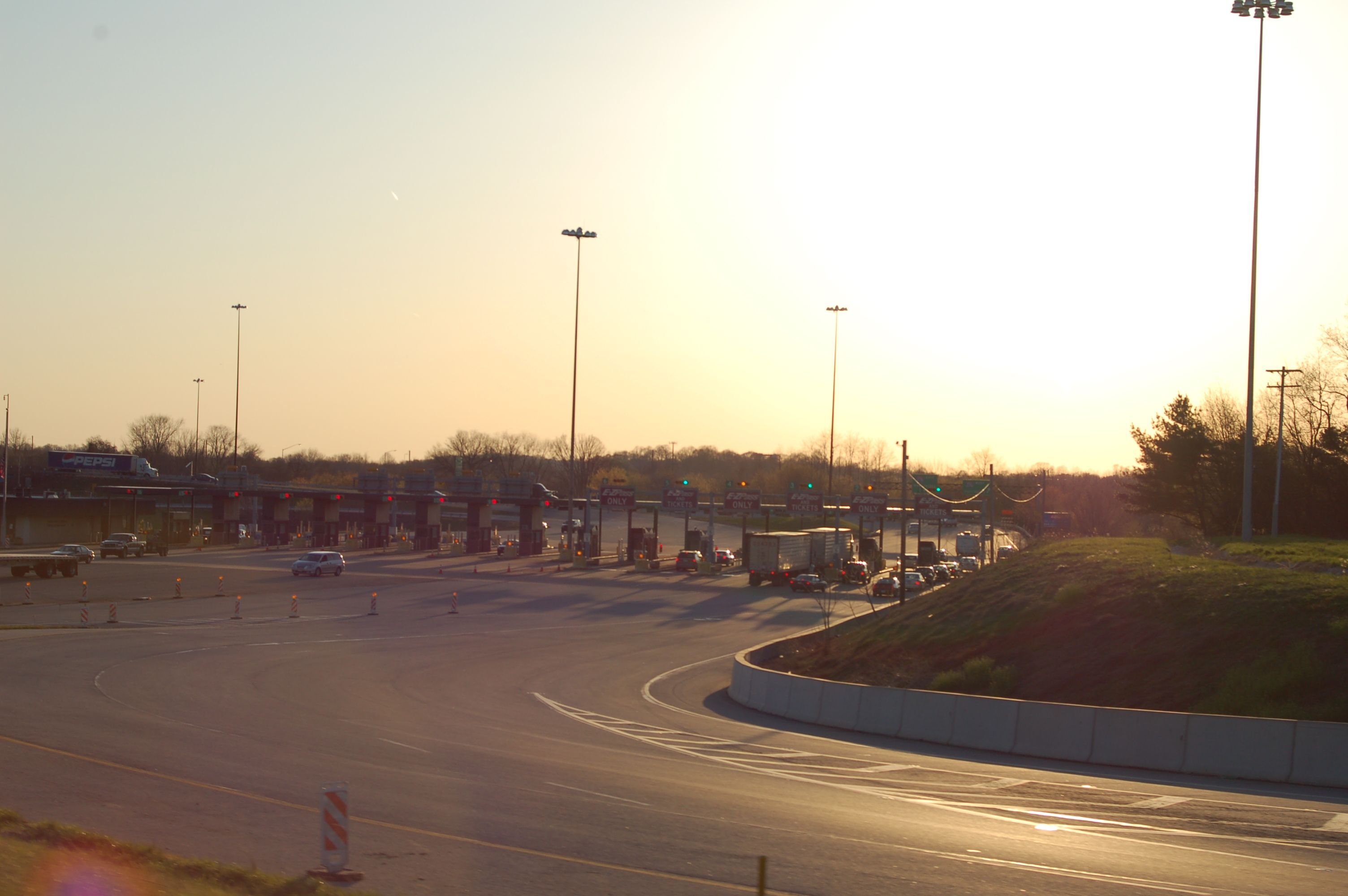
We are strong believers that you deserve to know your options in order to make well-informed decisions regarding the type of service you should choose.
That’s why we’d like to share with you a few details for you to keep in mind when it comes to LTL Services:
Standard:
LTL standard services provide an estimated transit time, which means that the delivery date suggested by the carrier is not guaranteed. In case there’s any delay, discounts are not applicable.
Guaranteed:
Guaranteed Standard service offers the same transit time as the standard service, however, it guarantees the delivery date right after shipment has been picked up. It’s important to keep in mind that pickups are never guaranteed, not even for guaranteed services.
Expedited:
Expedited delivery services refer to LTL shipments that typically move on a dedicated service directly from Point A to Point B. Using a dedicated truck means that your shipment not only will move in shorter transit times but also, you will benefit from customized handling (reduced handling caused by fewer stops).
Get a freight quote and follow us on Linkedin.
By: LFS Marketing
July 31, 2020

This is a common question and we’re here to help.
Sometimes you might need to ship your freight but you're not sure which way to go, because you don't have enough freight to fill a whole truck, but at the same time your freight could result very expensive to ship through LTL. That's when partial shipping comes in:
If your load is either +6 pallets, 10,000 lbs, or both, you should consider partial Truckload shipping. These are some of the benefits of this mode of transport:
Remember that you can quote partial shipments through our system.
Our TMS combines LTL and FTL capacity, allowing you to get the most competitive and reliable market rates, whether it is LTL, Full Truckload or a Partial Truckload opportunity.
Get a freight quote and follow us on Linkedin.
By: LFS Marketing
July 31, 2020
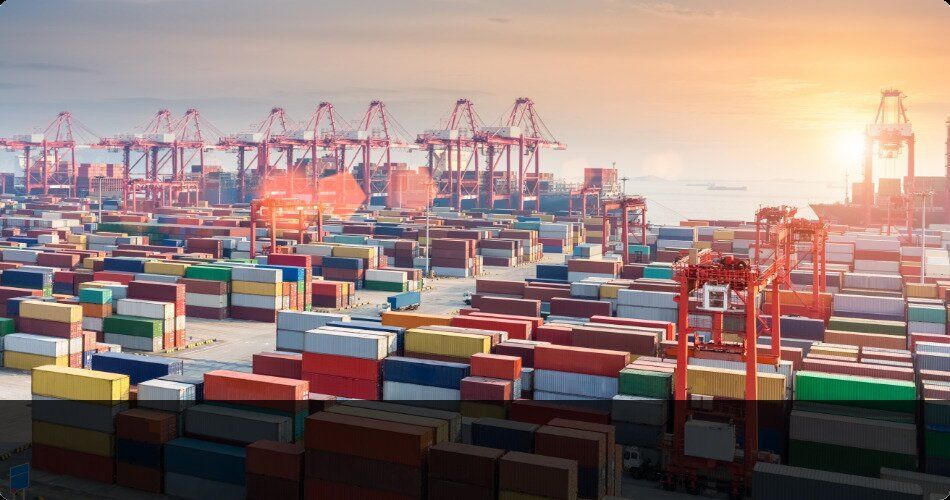
Drayage availability is one of our LFS pillars, even though, the industry news reports some limitations due to the pandemic.
Currently "Savannah volume down just 1% and total tonnage a record." according to Freightwaves.
A small dip can be a big win during a pandemic, when global supply chain disruptions have taken huge bites out of volumes at U.S. ports.
So the Georgia Ports Authority (GPA) announcement Monday that fiscal-year volume at the Port of Savannah was down by less than 1% compared to the previous year wasn’t bad news.
The Port of Savannah handled 4.44 million twenty-foot equivalent units (TEUs) in fiscal year 2020, which ended June 30.
And the GPA found good news where it could. It said that despite coronavirus-caused supply chain disruptions, total tons crossing all its docks reached a record 37.77 million, up 0.6% or 223,000 tons compared to fiscal year 2019. Container tons grew 2% or 56,440 tons to hit another record with 33.5 million tons.
“Cargo volume reductions related to COVID-19 were offset by the strength of our export markets and record volumes earlier in the year,” GPA Executive Director Griff Lynch said.
Lynch said that even during challenging times, port activity coupled with ongoing expansion projects such as the harbor deepening and Mason Mega Rail have quickened the pace of commercial infrastructure investment.
The GPA operates the deepwater ports of Savannah and Brunswick as well as inland terminals in Chatsworth, Bainbridge and Columbus, Georgia.
Lynch cited a recent report from Colliers International that 5 million square feet of industrial space is under construction in the Savannah market. Savannah also is home to 74.4 million square feet of warehouse and manufacturing space.
Lynch said in April that the coronavirus pandemic was wreaking havoc on global supply chains — and taking chunks out of volumes at U.S. ports.
“The longer this goes, the longer it’s going to take to get the ship righted,” Lynch said then. “At minimum, you’re talking about three-quarters of a year before we start seeing some positive numbers again.”
GPA Board Chairman Will McKnight said Monday the Port of Savannah’s expanding footprint sets it apart.
--
LFS keeps you updated with the latest news, if you need additional information about our freight shipping solutions, contact us!
Follow us on Linkedin
For cargo insurance experts, please contact Skholl, our partner to avoid any freight damage.
--
By: LFS Marketing
July 31, 2020

In today’s transportation market, capacity is a sensitive and key concept since volumes keep growing and capacity is becoming increasingly tight.
This means that carriers have more choices on who they want to work with, that’s why today we want to share with you a list of tips to cultivate positive relationships with carriers that help both parties strive in the current market conditions:
At LFS we’re committed to providing you insightful data to help you better predict and prepare for periods of tight capacity and price volatility.
For more insights and industry trends, head over to our LinkedIn Page. Follow us and let us help you better forecast and plan accordingly to ensure satisfactory load acceptance and service levels.
--
LFS keeps you updated with the latest news, if you need additional information about our freight shipping solutions, contact us!
Follow us on Linkedin
For cargo insurance experts, please contact Skholl, our partner to avoid any freight damage.
--
By: LFS Marketing
July 31, 2020